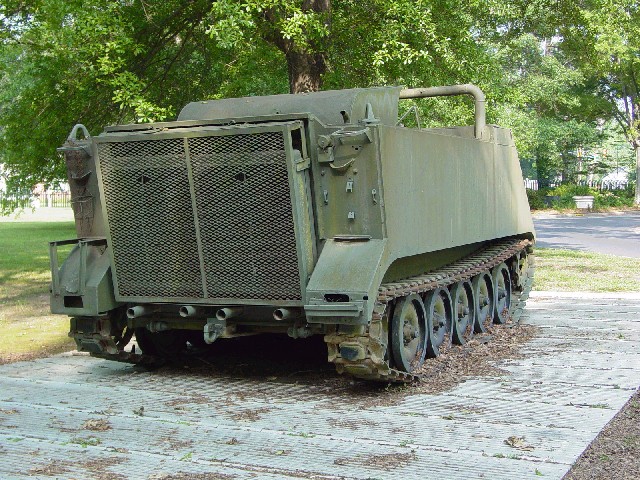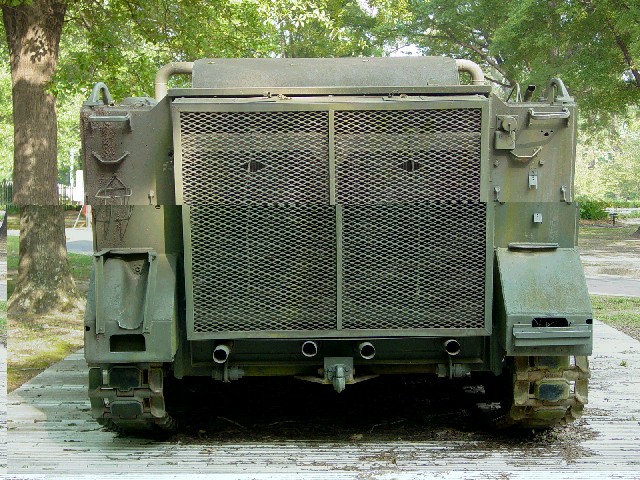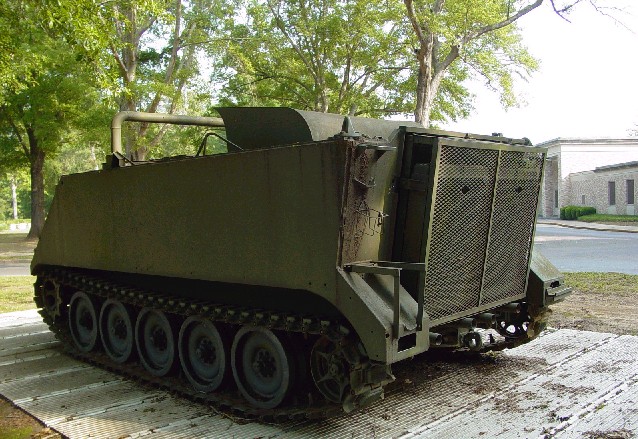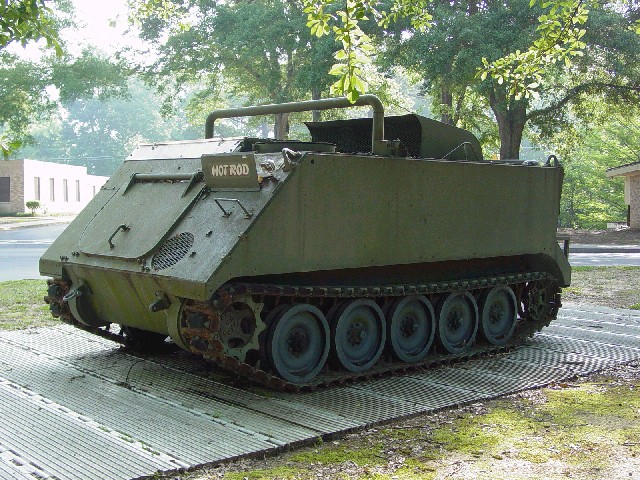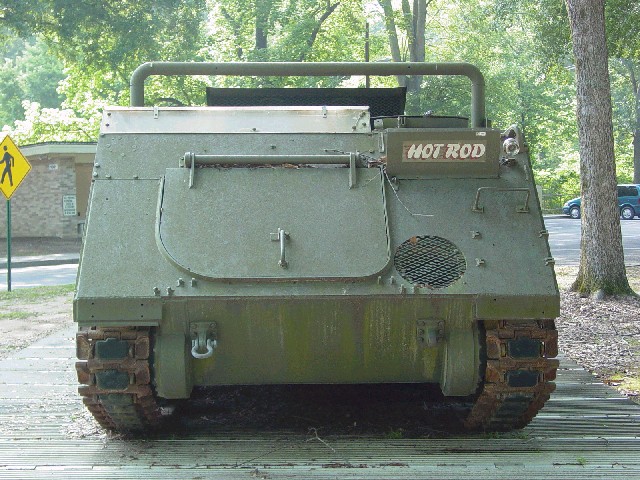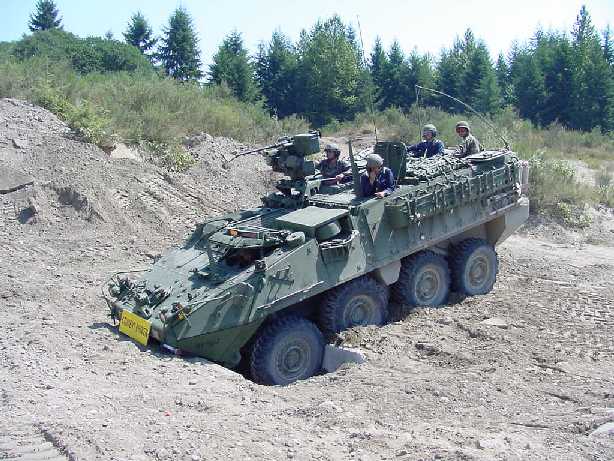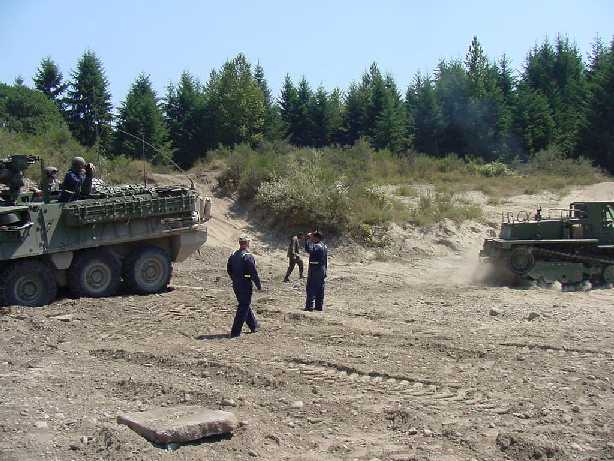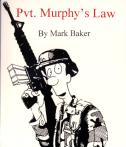Strykerrrr: failed cash cow that even constant Army lies cannot hide: deathtrap vehicle fittingly named after the HOSPITAL BED Soldiers are destined to visit...
...only yes-man sycophants would fail to do a simple internet search before naming an Army vehicle AFTER A HOSPITAL BED! All because they want to give the "boss" what he wants even if its stupid so they can get promoted...some "loyalty", huh?
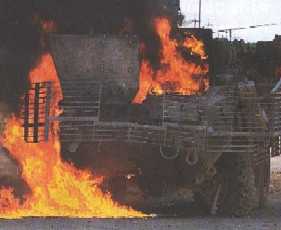
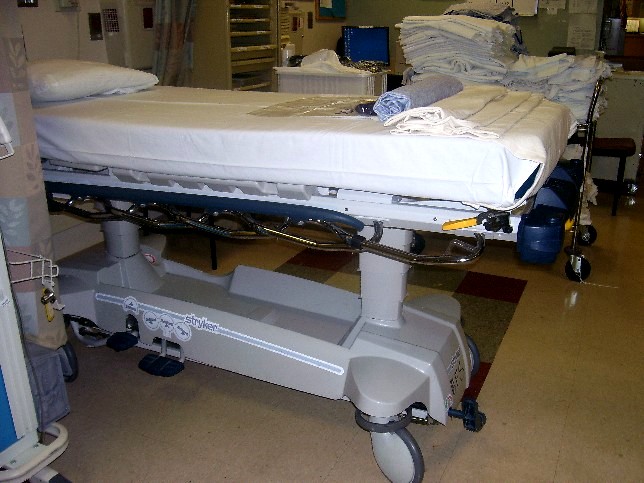
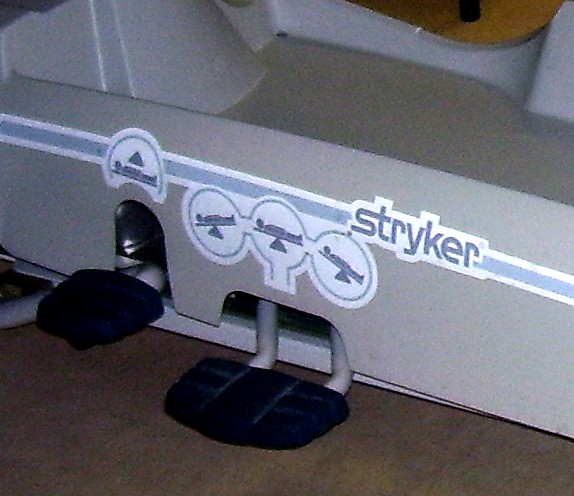
...no one checks with REALITY first--but goes along with whatever the "boss" says be it a vehicle or its name....
"Mr. Stryker" Senator Ted Stevens R-Alaska Indicted for CORRUPTION
www.cbsnews.com/stories/2008/07/29/politics/main4303372.shtml

(CBS/AP) Sen. Ted Stevens, the longest-serving Republican senator and a figure in Alaska politics since before statehood, was indicted Tuesday on seven counts of failing to disclose thousands of dollars in services he received from a company that helped renovate his home.Stevens, the first sitting U.S. senator to face federal indictment since 1993, has been dogged by a federal investigation into his home renovation project and whether he pushed for fishing legislation that also benefited his son, an Alaska lobbyist.
The investigation has upended Alaska state politics and cast scrutiny on Stevens - who is running for re-election this year - and on his congressional colleague, Rep. Don Young of Alaska, who is also under investigation.
CBS News reports all seven false statement counts relate to the statements he made on financial disclosure forms from 1999 to the 2006 form. The indictment says Stevens "knowingly and intentionally sought to conceal and cover up his receipt of things of value by filing Financial Disclosure Forms that contained false statements and omissions."
--------------------------------------------------------------------------------
Indictment Of Sen. Ted Stevens
--------------------------------------------------------------------------------
From May 1999 to August 2007, prosecutors said, the 84-year-old senator concealed "his continuing receipt of hundreds of thousands of dollars worth of things of value from a private corporation."
The indictment unsealed Tuesday says the items included: home improvements to his vacation home in Alaska, including a new first floor, garage, wraparound deck, plumbing, electrical wiring; as well as a Viking gas grill, furniture and tools. He also was accused of failing to report swapping an old Ford for a new Land Rover to be driven by one of his children.
Prosecutors said Stevens received more than $250,000 in gifts and services from VECO Corp., a powerful oil services contractor, and its executives.
The former CEO of VECO, Bill Allen, cooperated in the case against Stevens.
Stevens has been the subject of a wide-ranging investigation -- and with this announcement -- Stevens becomes the highest level politician charged in the department's crackdown on alleged corruption, CBS News reports.
Prosecutors said Stevens "took multiple steps to continue" receiving things from oil services company VECO Corp., and its founder, Bill Allen. At the time, the indictment says, Allen and other VECO employees were soliciting Stevens for "multiple official actions .... knowing that Stevens could and did use his official position and his office on behalf of VECO during that same time period."
VECO's requests included funding and other aid for the oil services company's projects and partnerships in Pakistan and Russia. It also included federal grants from several agencies - as well as help in building a national gas pipeline in Alaska's North Slope Region, according to the indictment filed in U.S. District Court in Washington.
Justice Department said Stevens will not be arrested and will be allowed to turn himself in.
"Once again and for what seems like the hundredth time it's not necessarily the crime it's the cover-up. The indictment apparently alleges that Stevens made false statements to federal investigators, the same sorts of charges that brought down people like Martha Stewart and Lewis Scooter Libby," CBS News legal analyst Andrew Cohen said.
"As a purely legal matter, Stevens may continue to serve in the Senate even while he defends himself against the charges," Cohen adds. "But these types of false statement trials take up an extraordinary amount of time and energy, not to mention money, and it's hard to see how he play both roles, Senator and Defendant, successfully."
However, under Senate rules, Tuesday's indictment will require Stevens to give up his post as senior Republican on the Appropriations Committee.
Stevens responded to the charges in a statement released Tuesday afternoon.
"I have proudly served this nation and Alaska for over 50 years," he said. "My public service, began when I served in World War II. It saddens me to learn that these charges have been brought against me. I have never knowingly submitted a false disclosure form required by law as a U.S. Senator. In accordance with Senate Republican Conference rules, I have temporarily relinquished by vice chairmanship and ranking positions until I am absolved of these charges. The impact of these charges on my family disturbs me greatly. I am innocent of these charges and I intend to prove that."
(CBS/AP) Stevens for years wielded power from his position as chairman of the Appropriations Committee from 1997 to 2005, except for 18 months when Democrats controlled the Senate. His longevity also means that if Republicans took over the Senate, he would be president pro tempore, a mostly symbolic title but one that would make him third in line for the presidency after the vice president and speaker of the House.
On Capitol Hill, Sen. John Warner, R-Va., called Stevens a hero, adding, however, he didn't know any details about the indictment. "All of us have time that we have to deal with that are tough," Warner said. "I wish him the best."
"I've known Ted Stevens for 28 years and have always known him to be impeccably honest,' said Sen. Arlen Specter, R-Pa., another longtime colleague.
Democratic leader Harry Reid of Nevada said, "I have served with Sen. Stevens my entire congressional career. It's a sad day for him, us, but you know I believe in the American system of justice and he's presumed innocent."
Young, who is under scrutiny for his fundraising practices involving VECO, said Tuesday, "I hope people will not rush to judgment and will let the judicial process work. The process is based on being innocent until proven guilty."
He called Stevens "one of the most effective and honest legislators I have ever worked with."
On the political front, it's one more piece of very bad news for the Republican Party said CBS News.com senior political editor Vaughn Ververs. "This indictment stems from a long-running scandal that has really eroded the Republican brand in a state that has been a lock for them for decades at the federal level," Ververs said. "Stevens was already considered a vulnerable incumbent facing re-election this November by most political analysts and this won't help improve those chances. Combine the scandal with Barack Obama's interest in putting the state in play and Alaska could find itself a real battleground this fall."
Stevens has coasted to re-election six times in Alaska, but was in what was viewed as the toughest race of his career this year against Anchorage Mayor Mark Begicha.
A moderate Republican, Stevens has served almost 40 years in the Senate, where he unabashedly steered money to toward his remote and sparsely populated home state. He often drew criticism, however, for going around the traditional appropriations process to fund his pet projects.
The Justice Department has closely followed that money, looking for where it intersects with the senator's son, Ben.
A lobbyist and former state senator, Ben Stevens was paid as a consultant for many in the fishing industry who benefited from legislation his father drafted. When Ted Stevens created a $30 million marketing fund for Alaska seafood, Ben Stevens helped decide which companies got the money. Some were his clients.
Ben Stevens also had financial ties to a company that stood to make millions off a piece of federal legislation his father wrote. But he repeatedly has said he never lobbied his father and both men have dismissed such criticism for years.
In other cases involving indictments of senators:
On April 2, 1993, Republican Sen. David Durenburger of Minnesota was indicted by a federal grand jury in Washington on charges of conspiring to file fraudulent claims for Senate reimbursement of $3,825 in lodging expenses during 1987 and 1988. The indictment was later dismissed. After new charges were filed, Durenberger pleaded guilty to misdemeanor charges of converting public funds to his personal use. He was sentenced to one year of probation and a $1,000 fine.
Republican Sen. Kay Bailey Hutchison of Texas was indicted by a state grand jury on Sept. 27, 1993, in Austin, Texas. She was charged with official misconduct and tampering with evidence to impede an investigation. On Feb. 11, 1994, a judge ordered her acquittal after the district attorney refused to present his case.
They need to look into his dealings with corrupt defense junk maker, GDLS!
West Point U.S. Army Officers Condemn the Stryker Truck Road-Bound Infantry Victim Mentality
Back-up copy of the report in case corrupt Stryker trucktards try to have it removed:
www.combatreform.org/westpointM113GAVINversusstryker.pdf
The REAL Stryker --- Chapter 1: Mobility
SHOCKING NEWS!
U.S. ARMY RESTRICTS STRYKER TRUCKS TO UNDER 35 MPH! THEIR WHEELS ARE WALLING OFF!
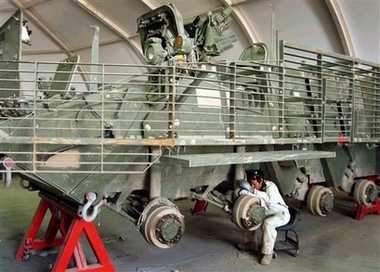
www.youtube.com/watch?v=9EzRzTj3kWc
OFFICIAL U.S. ARMY SAFETY BULLETIN
From: Safety of Use, Mailbox II TACOMSent: Thursday, June 22, 2006 3:31 PM
To: xxxxxxxxx
Subject: TACOM SOUM 06-024, STRYKER, (NEW,NEW,NEW)
The following message has been released to the field.
UNCLASSIFIED// DTG: 2006/06/22 19:04:29Z
Subject: Operational Safety Of Use Message (SOUM), TACOM Control No. SOUM 06-024,Stryker Family M1126 Infantry Carrier Vehicle, NSN 2320- 01-481-8575, LIN J22626, EIC AFF; M1127 Reconnaissance Vehicle, NSN 2320-01-481-8572, LIN R62673, EIC AFG; M1129 Mortar Carrier A (Mounted), NSN 2320-01-481-8578, LIN M53369, EIC AFF; XM1129E1 Mortar Carrier B (Dismounted), NSN 2320-01-505-0871, LIN M53369, EIC AF2; M1130 Commanders Vehicle, NSN 2320-01-481-8573, LIN C41314, EIC AFK; M1131 Fire Support Vehicle, NSN 2320-01-481-8574, LIN F86821, EIC AFL; M1132 Engineer Squad Vehicle, NSN 2320-01-481-8570, LIN J97621, EIC AFM; M1133 Medical Evacuation Vehicle NSN 2320-01-481-8580, LIN M30567, EIC AFN, and M1134 Anti-Tank Guided Missile NSN 2320-01-481-8576, LIN A83852, EIC AFP, Vehicle Density, 1,400.
D XXXXXXXXXXXXXXXXXXXXXXXXXXXXXXXXXXXXXXXXXXXXXXXXXXXX
D A X "WARNING" X A N X DEATH OR SERIOUS INJURY TO SOLDIERS, OR DAMAGE X N G X TO ARMY EQUIPMENT WILL OCCUR IF THE INSTRUCTIONS X G E X IN THIS MESSAGE ARE NOT FOLLOWED.
X E R XXXXXXXXXXXXXXXXXXXXXXXXXXXXXXXXXXXXXXXXXXXXXXXXXXXX R
1. Distribution:
A. This is an "Operational" Safety Of Use Message. This message is only applicable to the Stryker vehicles. MACOM Commanders will retransmit this message to all subordinate Commands/Activities within 24 hours of receipt of this message and acknowledge receipt of this message within five working days to: CDRTACOM, Warren MI, AMSTA-LC- LPIM, DSN 786-6096, Commercial (586) 574-6096 or DDN address: Safetyofuse@Tacom.Army.Mil.
B. The Stryker Brigade Commanders must also track and provide a report to PMO SBCT stating compliance of this message for all subordinate Commands/Activities no later than 30 days after receipt of message. POC for this report in PMO-SBCT Logistics is Tony McCown COMM 586-532-6704, mccowna@tacom.army.mil.
2. Problem:
A. Stryker hub/spindle assembly failures have occurred during testing and in the field. The hub/spindle assembly, Left Rear, 10651072-011PEG, Left Steered, 10657317-011, Right Rear, 10651073- 011PEG, and Right Steered, 10657316-011 can shear off causing the wheel assembly to roll away from the vehicle during severe driving operations. Eight separations occurred on the Stryker variants in test, along with a reported nine separations from vehicles in AOR. Magnetic particle inspection of wheel assemblies being returned from AOR, indicate spindle cracks.
B. Expected results if failure occurs. The worst credible mishap associated with the failure of the hub/spindle assembly is a wheel separation from the vehicle. Spindle failure can result in serious injury or death if the failed wheel assembly were to collide with dismounted personnel or passing vehicles.
3. User Actions:
For CONUS and OCONUS (World wide) Operations:
NOTE: Deployed units are exempt from restrictions listed in Paragraphs 3.A and 3.B of this message. However, deployed units must comply with the directions given in Paragraphs 3.C and 3.D of this message.
A. Restrict the weight of the vehicles with mileage over 5,000 miles on the shared roads to a maximum weight of 41,000 pounds as identified by the manufacturer as the design weight of the vehicle.
B. Restrict speed of vehicles with mileage over 5,000 miles to 35 miles per hour on roads that are shared with public traffic and considered highly congested.
C. Assure units continue to perform PMCS inspection of wheel hubs as stated in the Stryker Operator TMs for oil leaks on vehicles and wheel assemblies. Applicable TMs for Stryker variants are: TM 9-2320- 311-10-1, TM 9-2320-311-10-2, TM 9-2320-311-10-3, TM 9-2320-311-10-4, TM 9-2320-311-10-5, TM 9-2320-311-10-6, TM 9-2320-311-10-7, TM 9-2320- 311-10-8, TM 9-2320-311-10-9, TM 9-2320-311-10-12.
D. Perform diagnostic testing of all eight wheels during semi- annual services by units' Field Service Representatives (FSRs). PMO- SBCT has developed a diagnostic tool which was released May 2006. The new diagnostic procedure will be included in the Interactive Electronic Technical Manuals (IETM). This will lift all speed and weight restrictions.
E. Unit Commanders, contact your local TACOM Logistics Assistance Representative (LAR) or your State Surface Maintenance Manager upon receipt of this message for assistance. For assistance in locating your TACOM LAR, see paragraph 6D.
4. TACOM/PM actions: PM SBCT has completed validation of new spindle diagnostic procedures and design for rear wheel assemblies, for front wheel assemblies, target date: October 2006. PM SBCT will follow up with an addendum if necessary.
5. Supply Status: There are no supply concerns/requirements.
6. POCs:
A. System Engineer, DOROTHY FOLEY, email: foleyd@tacom.army.mil., DSN 786-2071, COMM (586) 753-2071.
B. Chief Engineer, GARY SCHULTZ, email:schultzg@tacom.army.mil., DSN 786-2109, COMM (586) 753-2109.
C. Acting Chief Logistics, JEFF MAGNER, email:magnerj@tacom.army.mil., DSN 786-2055, COMM (586) 753-2055.
D. To find your TACOM Logistics Assistance Representative (LAR), you must be a registered user in the Army Electronic Product Support (AEPS) database. If you are a registered user, click on this link:
https://aeps2.ria.army.mil/Services/Lars/Tacom/larmap/LARlocate/larmap.c fm Then select the appropriate region; i.e. CONUS, Europe, Far East, and SWA. Select the location nearest you and click on a name. This will give you a LAR's name, DSN and commercial phone number, email address, and photo. If you are not a registered user, request access at the public page:
https://aeps.ria.army.mil/aepspublic.cfm click on "Access Request Form" and follow the instructions for obtaining an AEPS userid. If you don't have access to AEPS, you can also obtain this information by contacting the TACOM Senior Command Representative (SCR) for your area. CONUS-East Region includes all Active Duty, National Guard and Reserve Units in Wisconsin, Illinois, Michigan, Indiana, Ohio, Kentucky, Tennessee, Mississippi, Alabama, Georgia, Florida, South Carolina, North Carolina, Virginia, West Virginia, Maryland, Delaware, Pennsylvania, New Jersey, Connecticut, Rhode Island, Massachusetts, New York, New Hampshire, Vermont, Maine and FORSCOM. CONUS-East SCR can be reached at DSN 236-6921, Commercial 910-396-6921. CONUS-West Region includes all Active Duty, National Guard and Reserve Units in North Dakota, South Dakota, Minnesota, Nebraska, Iowa, Missouri, Kansas, Oklahoma, Arkansas, Louisiana, Texas, Colorado, New Mexico, Nevada, California (south of San Francisco), Arizona, Utah, Montana, and Wyoming. CONUS-West SCR can be reached at DSN 737-0263, Commercial 254-287-0263. Pacific Region includes all Active Duty, National Guard and Reserve Units in Washington, Oregon, Idaho, Alaska, Hawaii, California (north of San Francisco) and Guam, Pacific SCR can be reached at DSN 357-2991, Commercial 253-967-2991. Europe Region includes all Active Duty, National Guard and Reserve Units in Great Britain, Germany, Belgium, Luxemburg, Italy, Bosnia, Kosovo, and Macedonia. Europe SCR can be reached at DSN 314-375-3461, Commercial 01149 621-487-3461, in Germany, 0621-487-3461. Far East Region includes all Active Duty, National Guard and Reserve Units in Korea, Okinawa, Kwajalein, and Japan. Far East SCR can be reached at DSN 315-721-7101, commercial 011-82-2-2270-7101. UNCLASSIFIED//
Classification: UNCLASSIFIED Caveats: NONE
62, ehh 35 MPH Stryker Truck Stuck-in-the-mud at 0 MPH
www.youtube.com/watch?v=Fn6cyaOBmUg
The REAL Stryker --- Chapter 2: Protection
www.youtube.com/watch?v=_R-jUZmZQm8
BREAKING NEWS! EXCLUSIVE!
OFFICIAL U.S. ARMY DOCUMENT: Army General Officers don't need any stinkin' analysis!
EXCERPT from Chapter 5 "Army Force Development", page 39: this captures how the Army generates "requirements":
"The new joint and Army concept development processes have changed to become top-down driven."

Basically, you will see an opportunity for a general officer to insert his vision (a "good idea") and how the rest of the Army is then obligated to make it happen...reality and facts be damned...
"How the Army Runs" an "untitled paper" from TRADOC circa 2005 (see above) institutionalizes no analysis programs, shows a preference for top-down general officer (GO) wish lists without factual examination; the process should not allow one individual to decide issues based on their prejudices on things like derogatory labeling like "cold war" or the urge to make some radical change to make a name for himself when what we already have might be best ie; M113 Gavin light tracks; Planet Earth and the laws of physics don't care about how many times the earth has revolved around the sun something has existed, this is something stupid avant garde' humans do that has no bearing at all on what a thing is capable of doing.
GOs should focus on the concepts required and let the true facts drive what specific equipment is used (Stryker trucks cause we want to be seen in wheels), otherwise he states his equipment demand sans analysis and those underneath scramble to give him what he wants by dishonestly cherry picking some minor silver lining while ignoring the cloud of failings, distorting data or outright lying.
www.sandersresearch.com/index.php?option=com_content&task=view&id=1302&Itemid=97
Army Deploys (Stryker) Unready Brigade
The U.S. Army's "Stryker" brigade from Fort Lewis deployed to Iraq in early May. It had target strength of 4000 men, but 700 stayed behind for various legal and medical reasons. An Army officer admitted this was a very high figure, which indicates that hundreds of Soldiers sought reasons to miss the 15-month deployment. The officer mentioned that such problems have become common in other deploying units.[2]
Within two months of arrival, the unit suffered 17 killed and 170 wounded, which included 30 so disfigured that they were sent home. At this rate of attrition, during the remaining 13 months, the 3300 Soldiers that deployed with this brigade can expect another 110 killed and 1105 wounded, to include 195 so badly injured they will be discharged. After this brigade returns to Fort Lewis, surviving Soldiers can expect to return to Iraq within a year since President Bush has indicated that pacifying Iraq may take 50 years of sacrifice. As a result, career Soldiers should expect they will end up dead or crippled before they can retire.
BREAKING NEWS!
Plain old "Gavin" M113 is ranked #1 by Top 10 IFV show
Liars call Lav3Strykers "New"; Facts are they were rejected over 53 years ago by the competent Korean-era U.S. Army!
Page 77 of Hunnicutt's book Bradley: a History of American Fighting and Support Vehicles shows the post-Korean war U.S. Army considered wheeled tin cans to motorize troops along with cross-country-mobile tracks. The "revolutionary", "new" road-bound wheels were rejected and M113 Gavin tracks were built; 57 years of combat success has followed ever since. Those that say LAV3/Strykers are "newer" are incompetent ignorants of armored vehicle history or willing liars.
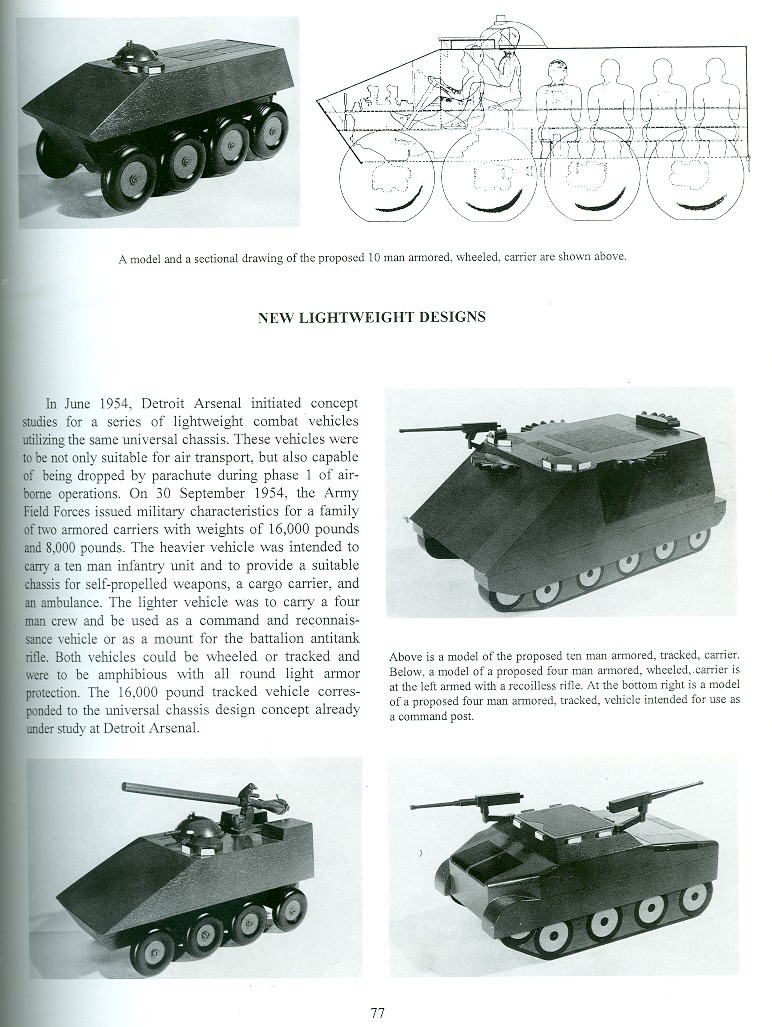
Several Stryker trucks wiped out in stupid presence patrol surging: 7 killed when one Stryker was blown up by landmine underneath their flat and unreinforced bottom
GDLS "bleeding" America and the Army of money and blood with their wheeled deathtraps....notice the Freudian slip....
www.cnsnews.com/ViewNation.asp?Page=/Nation/archive/200706/NAT20070618b.html
Army, Manufacturer Face Criticism over Combat VehicleBy Matt Purple and Fred Lucas
CNSNews.com Correspondent June 18, 2007(CNSNews.com) - An Army vehicle controversial since it was conceived in the late 1990s is facing mounting scrutiny from military experts and a leading government watchdog amid a recent spike of American casualties in Iraq.
The Stryker Light Armored Vehicle, manufactured by General Dynamics, was designed as a fast, medium-weight combat vehicle that can [allegedly] be airlifted into combat zones. It was originally intended as a key component to a more nimble and mobile Army.
But since March, when Stryker brigades were deployed in Iraq's violent Diyala province, casualties associated with the vehicles have been rising steadily. They have been found to be particularly vulnerable to automatic weapons fire and improvised explosive devices (IEDs). One infantry company stationed in Diyala lost five Strykers in less than a week, the Associated Press reported last month.
Still, about 700 Soldiers and nearly 100 Stryker vehicles have been deployed to Diyala this year as part of the "surge" of 30,000 additional U.S. troops.
"The whole basis for the Stryker was the fundamentally false assumption that you did not need heavy armor and you did not need direct, organic firepower," retired Col. Douglas MacGregor, a military writer and analyst, told Cybercast News Service. "The idea was that you would know where the enemy was and the enemy would not know where you were. This is hardly the case in Iraq."
Others have defended the vehicle as an important staple in the Army's overall force.
"We have to be careful of two things," Dan Goure, a vice president at the Lexington Institute, told Cybercast News Service. "First, not to think that all vehicles in urban settings or insurgency settings must be 40-ton or 50-ton armored behemoths. And second, that the only kind of conflicts that we're going to be fighting are Iraq-like. Neither is true."
A General Accounting Office report issued after a federal investigation of the Stryker and its closest competitor, the United Defense M113 [Gavin], praised the Stryker for being comparatively quiet and heavily armored. The report also noted that the Stryker could achieve a maximum speed of 60 mph which is 15 mph faster than the M113. [Editor: not on band tracks]
The Stryker's speed can be very extremely beneficial in urban warfare, said Kendall Pease, vice president of communications at General Dynamics. [Editor: dumbass wants troops to drive into land mines fast]
"This is a transport vehicle. It's not intended for heavy urban combat, though it has proven its mettle in transporting troops stealthily and quickly into battle." Pease told Cybercast News Service. "It's not a tank you can hear coming from eight blocks away."
Conflict of interest alleged
On November 19, 1999, six weeks before Lt. Gen. David K. Heebner was scheduled to retire from his post as the Army's assistant vice chief of staff, General Dynamics announced that he was taking up a "newly created position" of the company's vice president of strategic planning.
Heebner got 4,000 shares of stock in March 2000. The following November, the Pentagon awarded General Dynamics with a $4 billion contract to build the Strykers. According to the Project on Government Oversight, a government watchdog group, by 2005 Heebner's stock had grown to 28,859 shares, valued at $3.4 million.
This sparked suspicion among some Stryker critics that Heebner may have violated conflict of interest rules that prohibit government officials from being directly involved in a matter that could affect their personal financial interests.
But an internal Pentagon review into the matter concluded, "Given the lack of evidence for a conflict of interest violation, any further investigative work would take on the character of a 'fishing expedition.'"
The review, by the Department of Defense Inspector General (IG) office, also stated that in July of 1999 Heebner issued a memo to his staff and supervisors informing them, "I have a financial interest in the following organizations because I intend to seek and possible [sic] negotiate employment with them." In the memo he listed 12 companies, including General Dynamics. The report also found that he held no General Dynamics stock while employed by the Army and that he had not dealt with procurement matters during his last six years of active duty.
Nonetheless Stryker critics want more answers.
"There definitely should have been an investigation," said Nick Schwellenbach, defense investigator with the Project on Government Oversight, which obtained the IG report dated Feb. 2, 2004. "Just look at the timeline. It raises eyebrows."
"You can officially recuse yourself, but was he truly out of the process?" Schwellenbach asked. "This is not a tiny contract. Billions of dollars are at stake and lives are at stake. This is a war."
Bruce Shrader, a former employee of United Defense -- which lost a contract bid awarded to General Dynamics to build the Stryker -- has been independently investigating the Stryker vehicle and what led to the awarding of the contract.
"Are we supposed to believe that he bought all [the stock shares] on his Army salary?" he asked.
In 2003 Rep. Todd Platts (R-Pa.) -- an advocate of the United Defense vehicles built in his congressional district -- asked the Pentagon's IG office to investigate Heebner's relationship with General Dynamics.
In a Feb. 11, 2004 letter to Platts, the IG office said there was no conflict. On Oct. 13, 2006, the U.S. Department of Justice sent a letter to Platts declining to pursue a criminal probe into the Heebner matter.
Platts declined to comment for this story.
Heebner, promoted in 2005 to head the land systems division of the company, would not be available for comment on this story, said Pease, the General Dynamics spokesman.
Heebner's acquisition of stock came in the form of standard company compensation packages, Pease said, noting that General Dynamics' stock options had been rising rapidly at the time of Heebner's hiring.
Pease called allegations of wrongdoing "baloney" and added the "IG report showed there was nothing to it -- no evidence of anything."
Army on wheels
Promoted heavily by former Army Joint Chief General Eric Shinseki, the Stryker was initially devised in 1999 as a key component in an entirely transformed Army, one that could airlift, deploy, and assault enemies with speed and alacrity. Shinseki commanded the NATO Stabilization Force during the Bosnia intervention and many analysts believe this experience profoundly shaped his military philosophy.
Shinseki's plan for transformation also called for wheeled combat vehicles rather than the tracks typically seen on an Army tank. "[Shinseki] wanted to shake up the status quo," according to a 2002 West Point report titled "US Army Stryker Interim Armored Vehicle: Issues and Questions."
"He had been heavily influenced by peacekeeping in the Balkans where wheels proved ideal against no opposition and where most military traffic was road bound," the report said.
The Stryker vehicle' 19 ton weight is distributed over eight wheels. Critics charge that the unarmored wheels are vulnerable to automatic weapons fire and do not provide the maneuverability afforded by tracks.
"A track is 28 percent more efficient in terms of space [than wheels]," MacGregor said. "It has much lower ground pressure. It is a stable platform that allows you to mount an automatic cannon and drive and shoot simultaneously because the tracks provide a stable platform. And finally, the track chassis distributes the weight more effectively, providing for greater survivability."
Supporters assert that the Stryker is just one part of the Army as a whole and that the speed provides by its design has proven valuable in certain situations.
"We [at General Dynamics] bleed military," Pease said. "We're not going to give our Soldiers a vehicle we don't believe in."
An Army spokesperson did not respond to repeated inquiries on the matter. The vehicle has support of key military commanders in the field, such as Col. Robert B. Brown, commander of the 1st Brigade, 25th Infantry Division, Stryker Brigade Combat team. In press reports, Brown said the Stryker saved the lives of at least 100 Soldiers.
MacGregor dismissed such praise.
"Unfortunately, there are too many light infantrymen with little experience in armored vehicles who think that the Stryker is the answer for them," he said. "They just don't have the background and the experience to know that there are better alternatives out there."
www.truthout.org/cgi-bin/artman/exec/view.cgi/64/22289#
The 10 Most Brazen War Profiteers by Charlie Cray, AlterNet
Tuesday 05 September 2006
#6 in the Corporate Greed-O-Meter: General Dynamics
EXCERPT:
No. 6: General DynamicsMost of the big defense contractors have done well as a result of the war on terror. The five-year chart for Lockheed Martin, for instance, reveals that the company's stock has doubled in value since 2001.
Yet The Washington Post reported in July that industry analysts agree that of the large defense contractors, the one that has received the most direct benefit from the war in Iraq is General Dynamics. Much of that has to do with the fact that the company has focused its large combat systems business on supplying the Army with everything from bullets to tank shells to Stryker vehicles, which made their debut during the 2003 invasion.
In July, the Post reported that the company's profits have tripled since 9/11. That should make some people happy, including David K Heebner, a former top aide to Army Chief of Staff Eric Shinseki, who was hired by General Dynamics in 1999, a year before the Stryker contract was sealed. According to Defense watchdogs at the Project on Government Oversight (POGO), General Dynamics formally announced it was hiring Heebner on November 20, 1999, just one month after Shinseki announced a new "vision" to transform the Army by moving away from tracked armored vehicles toward wheeled light-armored vehicles, and more than a month prior to Heebner's official retirement date of Dec. 31, 1999.
Less than a year and a half later, Heebner was present for the rollout of the first Stryker in Alabama, where he was recognized by Shinseki for his work in the Army on the Stryker project.
Although the Pentagon's inspector general concluded from a preliminary investigation that Heebner had properly recused himself from any involvement in projects involving his prospective employer once he had been offered the job, critics say the current ethics rules are too weak.
"It's clear that the Army was leaning toward handing a multibillion-dollar contract to General Dynamics at the very time Heebner may have been in negotiations with the company for a high-paying executive position," says Jeffrey St. Clair, author of Grand Theft Pentagon, a sweeping review of war-profiteering during the "war on terror."
Heebner's case is similar to Boeing's infamous courtship of Darlene Druyan, the Air Force acquisition officer who was eventually sentenced to nine months in prison and seven months in a halfway house for arranging a $250,000 a year job for herself on the other side of the revolving door while negotiating contracts for the Air Force that were favorable to Boeing.
This March, Heebner reported owning 33,500 shares in the company, worth over $ 4 million, along with 21,050 options.
Not everyone has been happy with the outcome of the Stryker contract. Tom Christie, the Pentagon's director of operational testing and evaluation, sent a classified letter to Donald Rumsfeld before it was deployed in Iraq, warning that the $3 million vehicle was not ready for heavy fire. Meanwhile, the GAO warned of serious deficiencies in vehicle training provided, a concern that turned serious when soldiers accidentally drove the Stryker into the Tigris rivers. Despite public praise from top Army officials, an internal Army report leaked to the Post in March 2005 revealed that the vehicles deployed in Iraq have been plagued with inoperable gear and maintenance problems that are "getting worse not better."
Perhaps as insurance against any flap, General Dynamics has added former Attorney General John Ashcroft to its stable of high-powered lobbyists. Working the account are Juleanna Glover Weiss, Vice President Dick Cheney's former press secretary, Lori Day Sharp, Ashcroft's former assistant, and Willie Gaynor, a former Commerce Department official who also worked for the 2004 Bush-Cheney reelection campaign.
May 13, 4:39 PM EDT
Stryker Losses in Iraq Raise Questions
By ROBERT H. REID and ANNE FLAHERTY
Associated Press WritersSunday , May 13, 2007 from foxnews.com BAGHDAD -
A string of heavy losses from powerful roadside bombs has raised new questions about the vulnerability of the Stryker, the Army's troop-carrying vehicle hailed by supporters as the key to a "leaner, more mobile" force.
Since the Strykers went into action in violent Diyala province north of Baghdad two months ago, losses of the vehicles have been rising steadily, U.S. officials said.
A single infantry company in Diyala lost five Strykers this month in less than a week, according to Soldiers familiar with the losses, who spoke on condition of anonymity because they are not authorized to release the information. The overall number of Strykers lost recently is classified.
In one of the biggest hits, six American Soldiers and a journalist were killed when a huge bomb exploded beneath their Stryker on May 6. It was the biggest one-day loss for the battalion in more than two years.
"We went for several months with no losses and were very proud of that," a senior Army official said in Washington, speaking on condition of anonymity because he is not authorized to comment publicly. "Since then, there have been quite a few Stryker losses."
"They are learning how to defeat them," the Army official said of Iraqi insurgents.
The Army introduced the $11 billion, eight-wheeled Stryker in 1999 as the cornerstone of a ground force of the future - hoping to create "faster, more agile" armored units than tank-equipped units, but with more firepower and protection than light-infantry units.
But the Army and the marines are already looking for something different that can survive big roadside bombs - the main threat to Soldiers in Iraq - meaning the Stryker's high-profile status as the Army's "next generation" vehicle may be short-lived.
"It is indeed an open question if the Stryker is right for this type of warfare," said Michael O'Hanlon, a senior analyst with the Brookings Institution. "I am inclined to think that the concept works better for peacekeeping. But based on data the Army has made available to date, it's hard to be sure."
Supporters of the Strykers, which have been used in Iraq since late 2003, say the vehicles that carry two crew members and 11 infantrymen offer mobility, firepower and comfort.
Lighter and "faster" than tracked vehicles like tanks, each Stryker can rush Soldiers quickly to a fight, enabling commanders to maintain security over a wide area with relatively fewer troops. Humvees can carry only four Soldiers - and are more vulnerable to bombs even when their armor is upgraded.
"I love Strykers," said Spc. Christopher Hagen, based in Baqouba. "With Strykers, you're mobile, you're fast. You can get anywhere anytime. They bring a lot of troops to the fight."
But some analysts have long questioned the wisdom of moving away from more heavily armored tracked vehicles like tanks and Bradley fighting vehicles to wheeled transports, like the Stryker.
They say that is especially true in Iraq, where powerful bombs - not rocket-propelled grenades or small arms fire - are the main threat.
"The Stryker vehicle was conceived at a time when the Army was more concerned about mobility and agility than it was about protection," said Loren Thompson, a military analyst from the Lexington Institute. "Stryker was the answer to that need."
The Stryker's vulnerabilities have become increasingly apparent since a battalion of about 700 soldiers and nearly 100 Stryker vehicles from the Army's 2nd Infantry Division was sent to Diyala province in March to bolster an infantry brigade struggling to restore order there.
Trouble started as soon as the Strykers arrived in Baqouba, the provincial capital of Diyala.
U.S. commanders ordered the vehicles into Baqouba's streets at dawn the day after they arrived. The hope was that the large, menacing vehicles - armed with a heavy machine gun and a 105mm cannon - would intimidate insurgents and reassure local residents.
Instead, insurgents hammered the Strykers with automatic weapons fire, rocket-propelled grenades and a network of roadside bombs. By the end of that first day, one American Soldier was dead, 12 were wounded and two Strykers were destroyed.
Losses have since mounted. The May 6 attack that killed six Soldiers and a Russian journalist was followed a few days later by another blast. Soldiers scrambled out of the Stryker and took cover in a house while they watched the vehicle burn. Several of them were injured but none seriously.
Lt. Col. Bruce Antonio, who commands a Stryker battalion in Diyala, said he and Soldiers "still have confidence" in the Strykers and noted they had survived many bombs, which the military calls improvised explosive device or IEDs. But Antonio said some insurgents had found "the right mix of explosives and IED positioning to inflict severe damage on the vehicle." He also noted that tanks had also proved vulnerable too.
The insurgents also apparently are becoming better at hiding the devices - the IED that killed the six Soldiers and the journalist was believed hidden in a sewer line. To add potency, insurgents surrounded the device with cement to channel the blast force up into the tank, according to Soldiers familiar with the investigation.
Supporters of the Strykers say all that proves that it's the lethality of bombs in Iraq - not the Strykers themselves - that are the problem: The bombs are now so powerful that even Abrams main battle tanks are vulnerable to some of them.
"I'm not sure if it's any reflection on the (Stryker) but rather on how things are getting worse" in Iraq, according to a senior Democratic congressional staffer who tracks Army programs, who spoke on condition of anonymity because he wasn't authorized to speak publicly.
Stryker Soldiers said that when they were based in Mosul in the north, roadside bombs weren't so big - often, little more than pipe bombs. In Baqouba, the bombs are bigger and buried deeper, making them difficult to detect.
"With what we got hit with the other day, it wouldn't have mattered what we were in," said Spc. John Pearce, speaking of the May 6 bomb. "We were going to take casualties, regardless."
Either way, the Army and marine corps already are pushing for new Mine Resistant Ambush Protected vehicles, or MRAPS, whose V-shaped hulls are designed to deflect bomb blasts outward, rather than through the vehicle.
The Pentagon has requested nearly 7,800 of the new vehicles at a cost of $8.4 billion and is considering ordering thousands more to give Soldiers better protection.
Such moves, however, serve only to reinforce the views of critics, who believe the Army opted for a vehicle that was useful in Balkan peacekeeping or other "low threat" missions but is inadequate in so-called "asymmetric warfare," where a weaker opponent devises simple tools to exploit a strong opponent's weak points.
"As long as the Stryker-equipped light infantry was used ... against lightly armed insurgents, there was no problem," said retired Col. Douglas Macgregor, who writes on defense issues.
"Now, they are being tossed into the urban battle where only tracked armor can survive."
--
Reid reported from Baghdad and Flaherty from Washington. Associated Press reporters Todd Pitman in Diyala in Iraq and Pauline Jelinek in Washington also contributed to this report.
AP Wire - Washington | kgw.com | News for Oregon and SW Washington
Two more Fort Lewis Soldiers killed in Iraq
05/12/2007 Associated PressSoldiers from Mississippi and Idaho are the latest Fort Lewis service members to die in Iraq, the Department of Defense said Friday.
The department also identified a second Idaho Soldier killed in an attack earlier this week.
Army Sgt. Jason W. Vaughn, 29, of Iuka, Miss., died Thursday in Baqouba when an explosive detonated near his [EDITOR: Strykerrrr truck deathtrap] vehicle. He was assigned to the 5th Battalion, 20th Infantry Regiment, 3rd Brigade, 2nd Infantry Division at Fort Lewis, the department said Friday in a news release.
Sgt. Maj. Bradly D. Conner, 41, of Coeur d'Alene, Idaho, died Wednesday near Al-Hillah, about 60 miles south of Baghdad. He was killed when a homemade bomb detonated near his vehicle.
Conner was assigned to the 2nd Battalion, 1st Special Forces Group at Fort Lewis.
A Fort Lewis spokeswoman on Friday directed inquiries on Conner to U.S. Army Special Operations Command at Fort Bragg, N.C. Public affairs officials there did not immediately return a message by The Associated Press.
On Sunday, six members of the 3rd Brigade, 2nd Infantry Division were killed along with a Russian freelance photojournalist when a bomb exploded beneath their Stryker vehicle in Baqubah, northwest of Baghdad.
Sgt. Blake C. Stephens, 25, of Pocatello, Idaho, was also identified by the Defense Department on Friday as one of two Soldiers who died Tuesday in Salman Pak, about 18 miles south of Baghdad, when a roadside bomb exploded near their vehicle.
Stephens and Spc. Kyle A. Little, 20, of West Boylston, Mass., were assigned to Headquarters and Headquarters Company, 3rd Brigade Combat Team, 3rd Infantry Division at Fort Benning, Ga.
Conner and Stephens are the 26th and 27th Idaho Soldiers killed in Iraq since the war began in March 2003.
LAV-3/Strykerrrrs fail in Afghanistan and the Canadians ditch their own wheeled trucks they make for more mobile and better armored tracks!
Enter the Leopards and M113 MTVL Gavins!
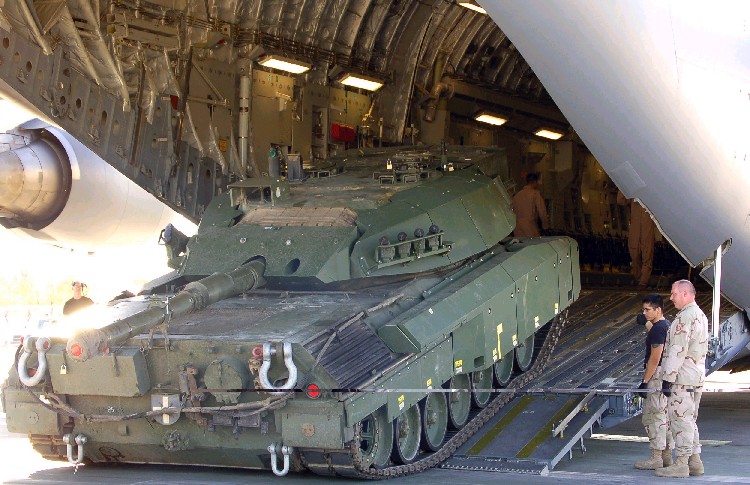
www.youtube.com/watch?v=GrATZkFUhaI
The Dutch are using M113 Gavin tracks, too and are being VERY successful in counter-insurgency operations!
www.youtube.com/watch?v=ZKa3tK3zi4c
What caused the turn-around?
COMBAT.
REALITY.
AFGHANISTAN.
A DESIRE TO WIN, NOT CONTINUE TO LOSE IN WHEELED TRUCKS...
EXPERIENCE ONE FAILURE DAY IN THE LIFE OF A FUBAR LAV-III/Strykerrr UNIT....
Strykers fail: VIDEO of Canadian LAV-IIIs hopelessly stuck in mud, breaks main bearing, mission aborted
American Stryker versions of the LAV-III are even more bloated and weighted down with bird cage and electronics inside....why are we wasting $4M on each of these flat-bottom, road-bound trucks?
From the recent PBS documentary, "Afghanistan: the Other War"
Go to 2:58 and see why the Canadians have gone to tracks in Afghanistan like other smart armies, Brits, Dutch etc.
Canadian LAV-IIIs hopelessly stuck in mud, breaks main bearing, mission aborted
We need to stop wasting billions on fatally flawed break-down-prone wheeled Stryker trucks that fail to get the job done and put our men into constant road/trail ambushes and put our money into M113 Gavin light for cross-country mobility but medium-weight in armor protection tracks that don't get stuck and break down in a mere light rain and minor mud.
STILL PHOTOS OF THE LAV-III DEBACLE IN AFGHANISTAN (AMERICANS EXPERIENCE THIS DAILY, TOO)
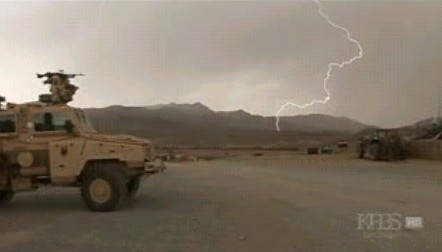
2: "We are going to make contact with a new village and reach out to them and win over their hearts and minds in our low-maintenance, all-terrain, high-speed SASO wheeled vehicles. Our LAV-IIIs are used by the Americans who call them 'Strykers'".
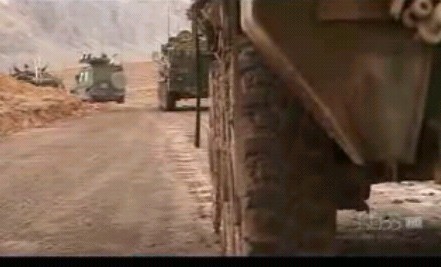
3: "WAHOO! Look at Me! I'm going 60 miles per hour on the road!!" (Not for long!)
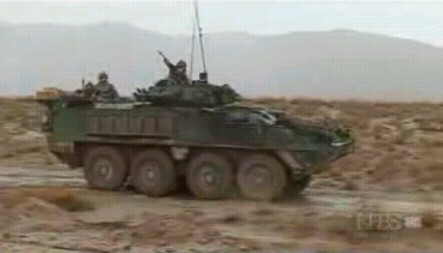
LAV-III stuck a 1st time; Road Speed: 0 MPH
4: "Ohhh....sh$%^&! I drove into a rut....."
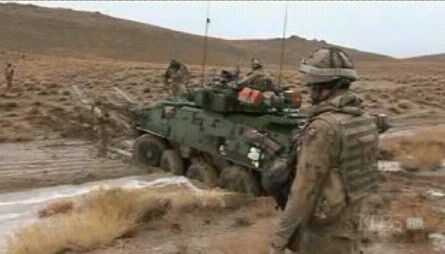
5: "Can we get it out?"
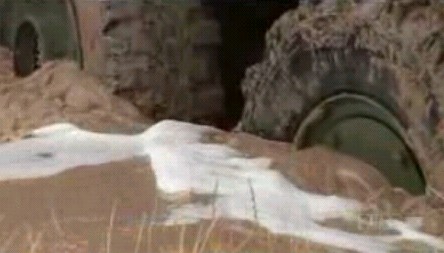
6: "We had technical difficulties and had to cancel the mission to the village"
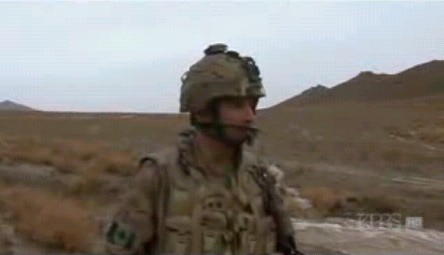
7: "What's that dangling underneath the LAV-III?"
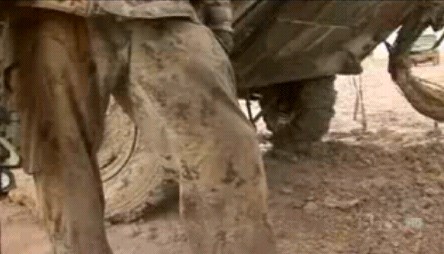
8: "Oh No. Its the main bearing. Its broke, man. This thing won't run its trashed."
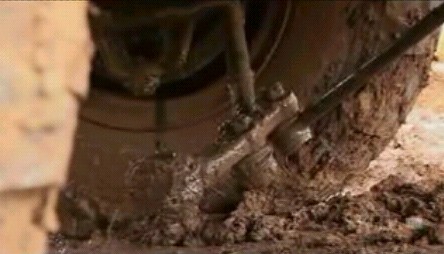
9: "What a Piece-of-Shit (POS)."
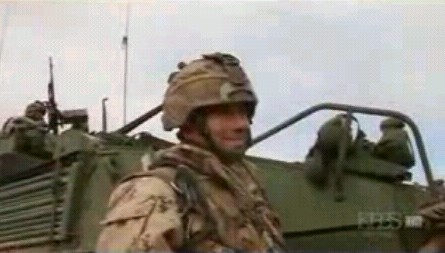
10: "Careful! Don't get the 'recovery' LAV-III stuck, too!"
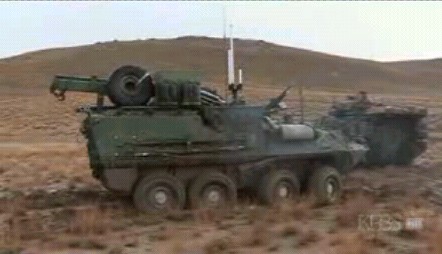
11: "Oh Boy. The 'recovery' LAV-III is spinning in the mud, too."
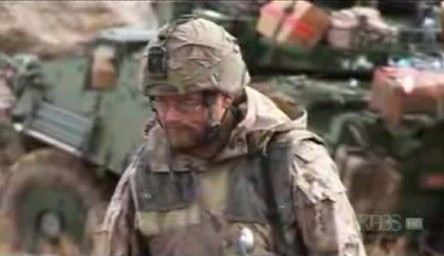
12: "Please...please grip...grip....we don't want to be stuck here outside the wire when the sun goes down..."
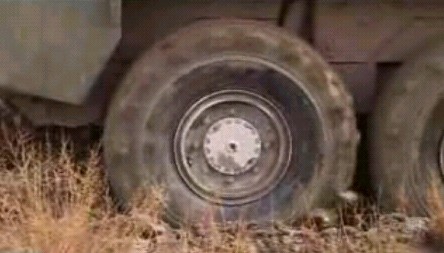
LAV-III stuck a 2d time
13: "Gun it!!! Get through the dip!"
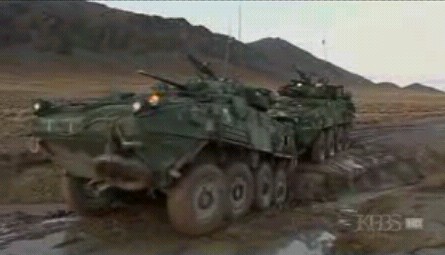
14: "Damn! We are Stuck Again! Dude! It's Getting Dark!"
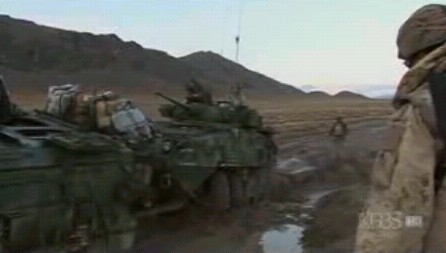
15: "We Got to get Back to the FOB before the Taliban come out!"
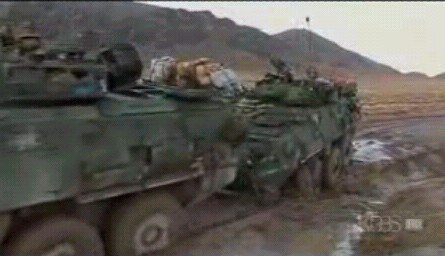
16: "Go Easy! Easy! Let the Wheels Catch!"
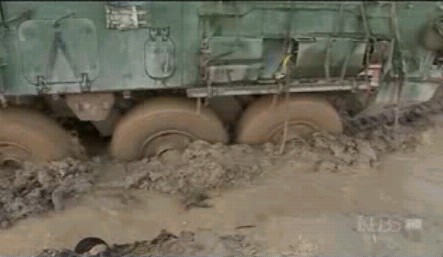
17: "Damn. Forget it. Cut the Engine!"
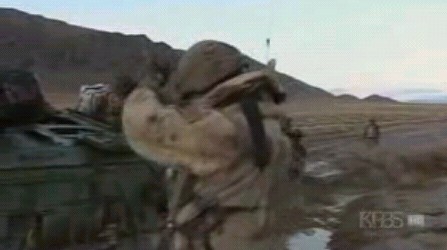
18: "Mission Aborted! Maybe an officer will figure this out."
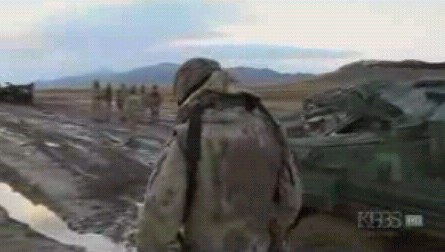
"We REALLY showed our Afghan allies today why they should trust their very lives to us.
Yeah, Right. We need to turn these pieces-of-shit in and get tracks so we can win"
American LAV-III "Strykerrrrrsssss" Stuck in Iraq: Same POS, different Place, Dishonest Spin Artists
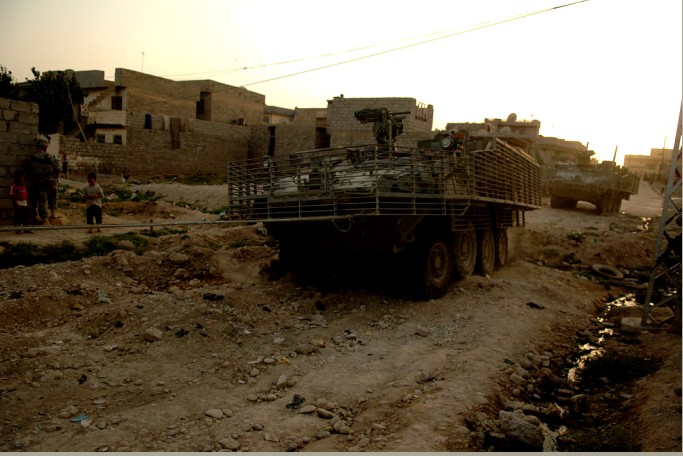
The pic DoD doesn't want you to see lest it spoil their wheeled truck racket
In contrast to the Canadians that at least internally can accept realities that wheels are fatally flawed and then actually do something about it by using more tracks, Americans think that by taking down proof that their "Strykerrrr" wheeled trucks are crap that they will somehow NOT be crap? Since when does shooting the MESSENGER change the MESSAGE when its about REALITY? Covering up the REALITY of Strykerrrr trucks constantly being struck and blown up doesn't change the REALITY that these thin metal boxes on air-filled rubber tires are getting mired into the sand, mud and ground when not being exploded open and set on fire with men inside.
****CENSORED****
Stryker stuck in mud
http://www.dodmedia.osd.mil/JCCC/2006/Air_Force/060630-F-1644L-051.JPEG
****CENSORED****
PIC CENSORED BY CORRUPT RACKETEERS
Paul Hornback's Wheels vs. Tracks Article in the March-April 1998 issue of U.S. Army Armor magazine (before it became politicized) Warned Us Against the Wheeled SASO "Nation-Building" Racket EuroFad
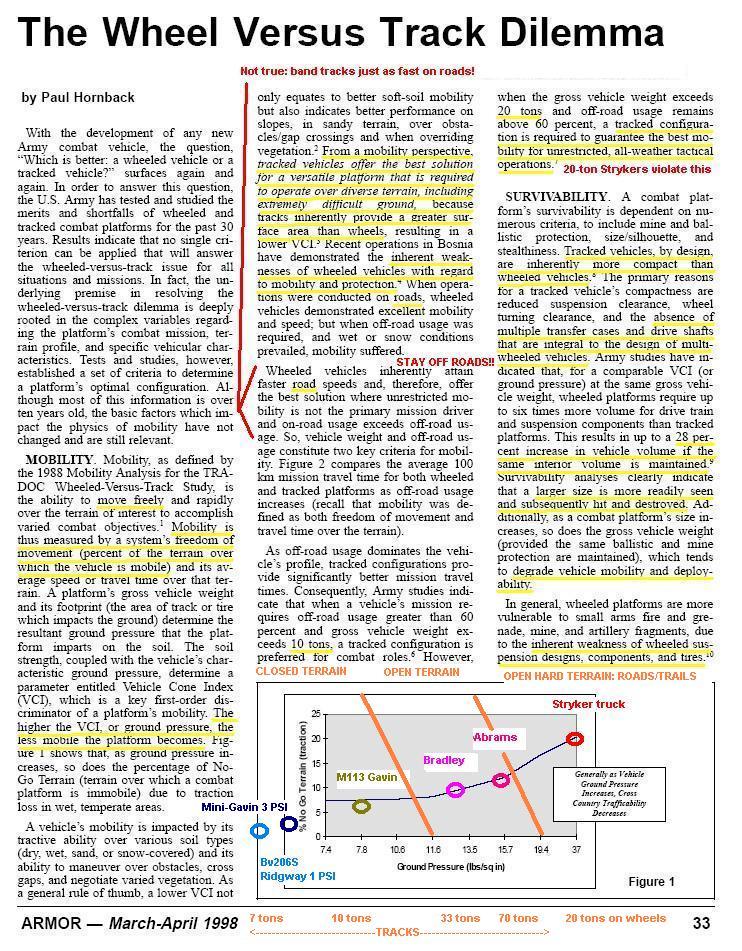
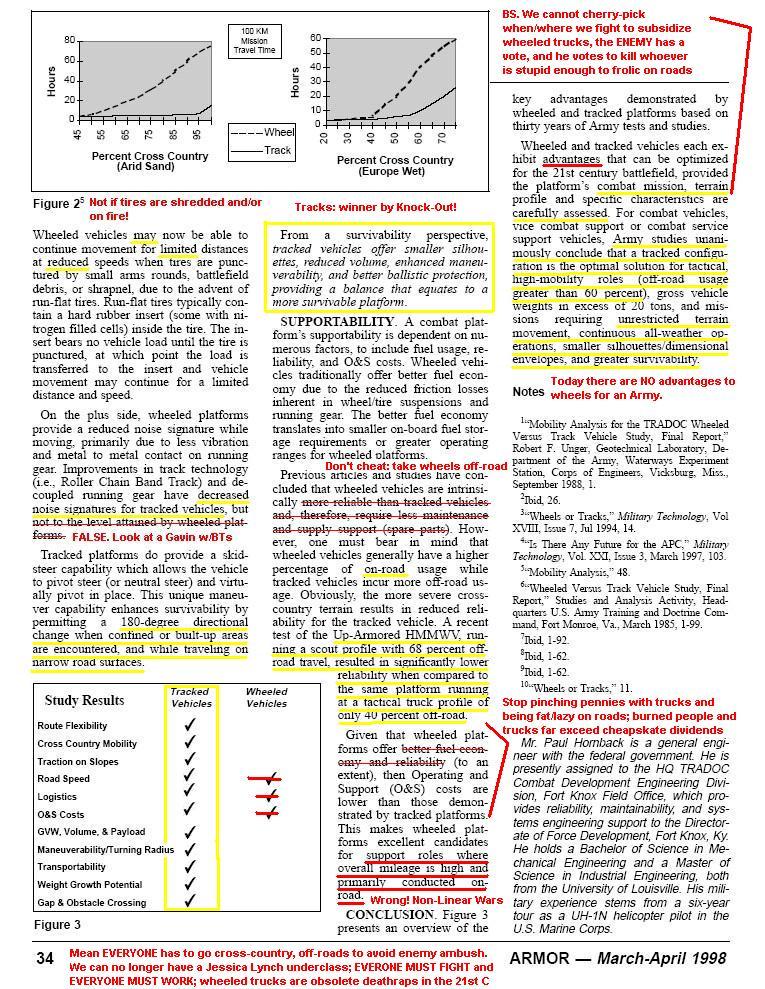
1st TSG (A) EXCLUSIVE: U.S. Army Corps of Engineers Wheels/Tracks NRMM Study

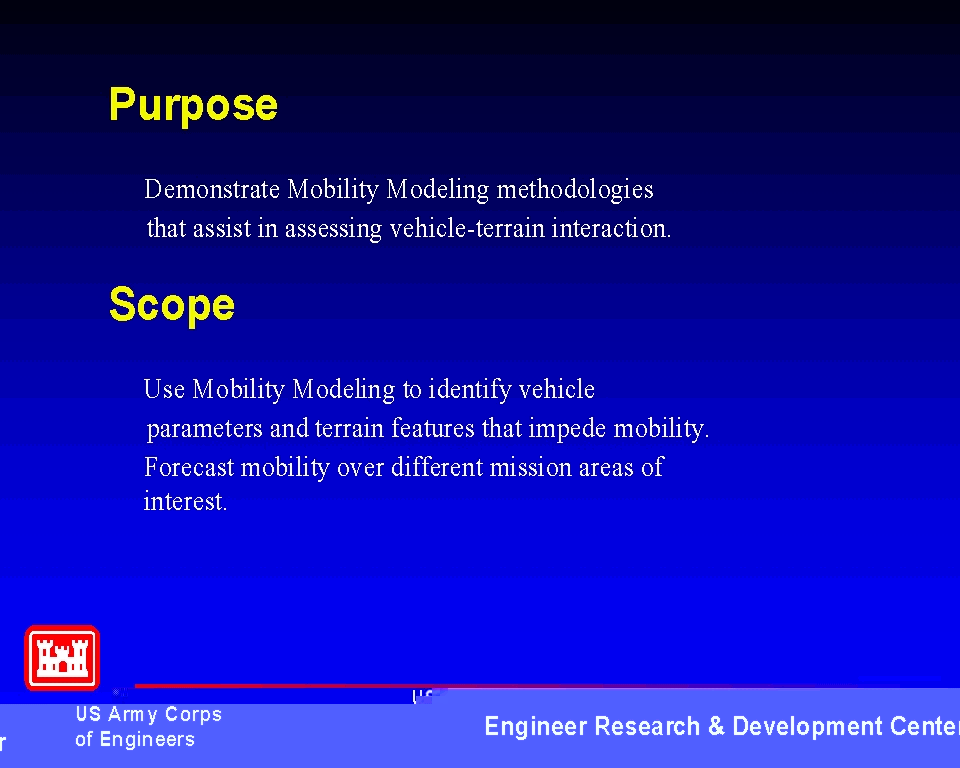
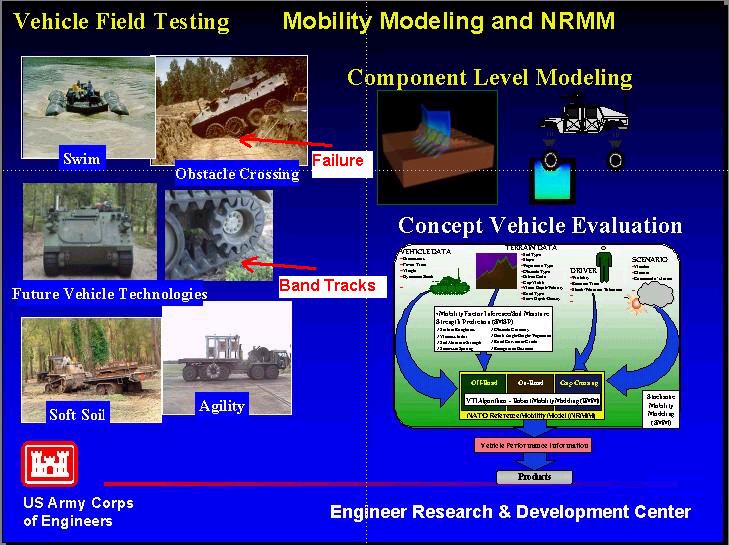
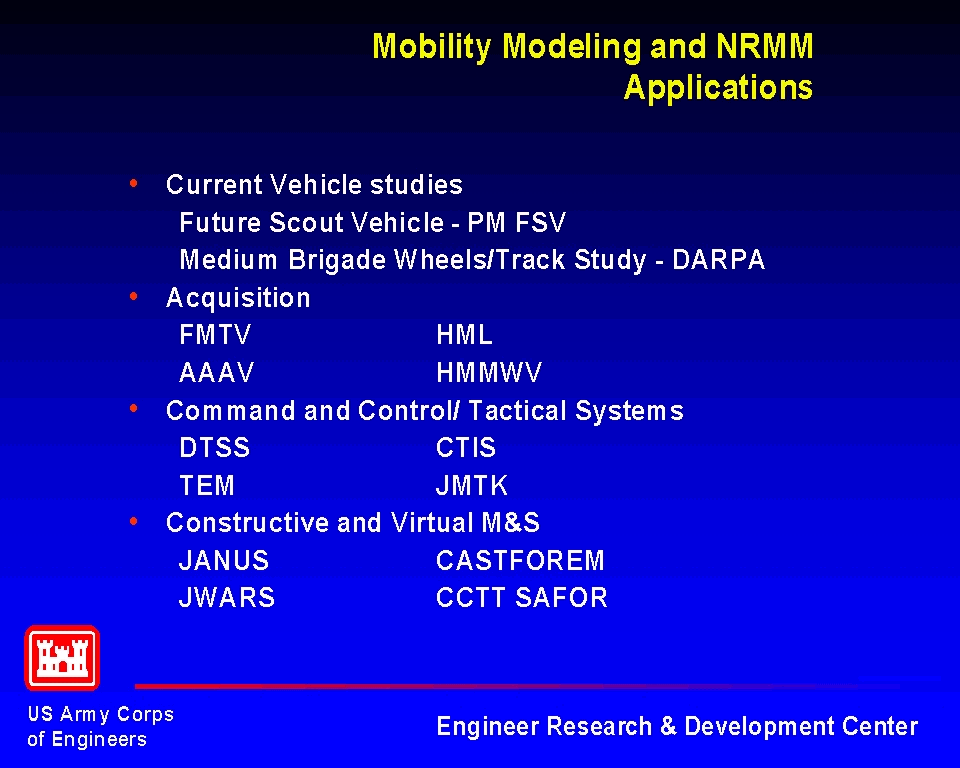
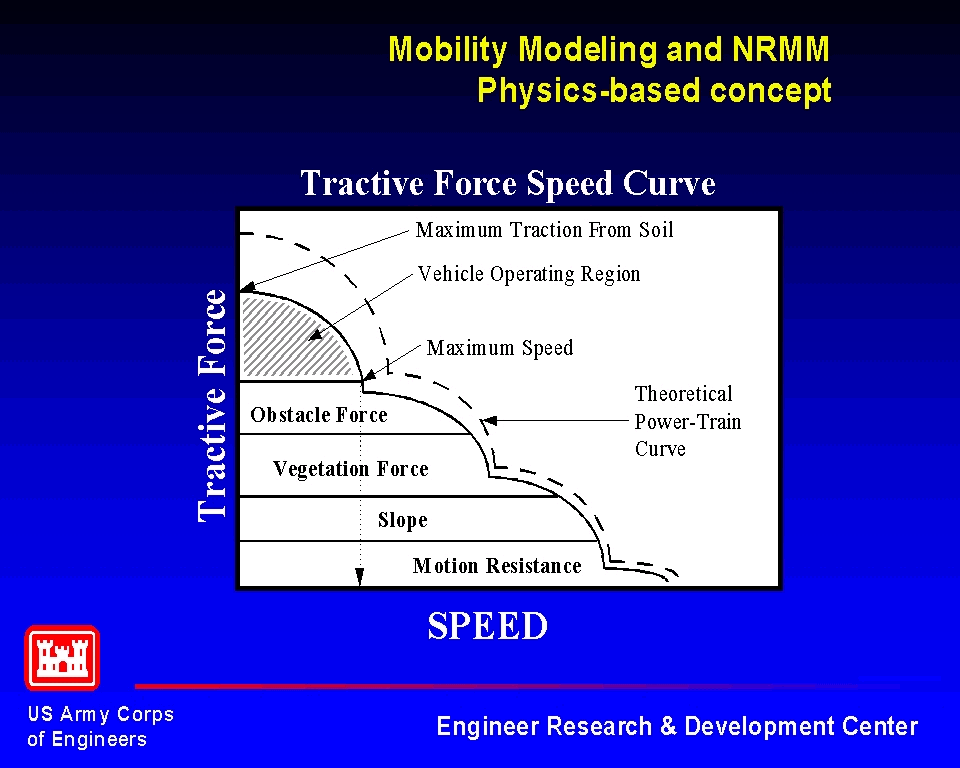
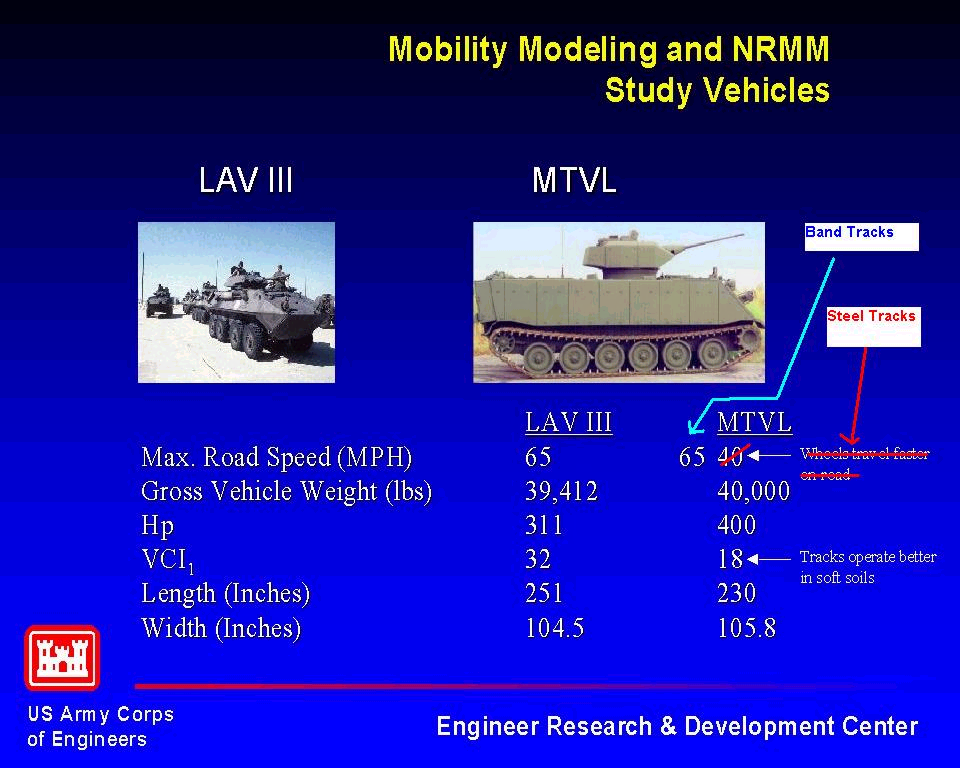

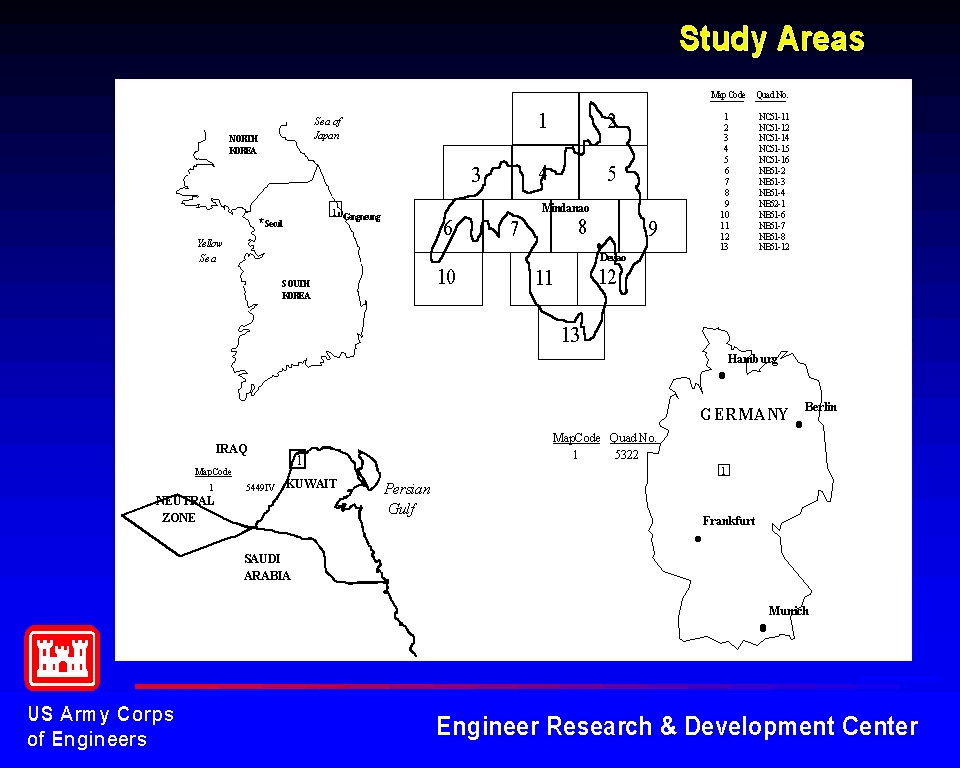

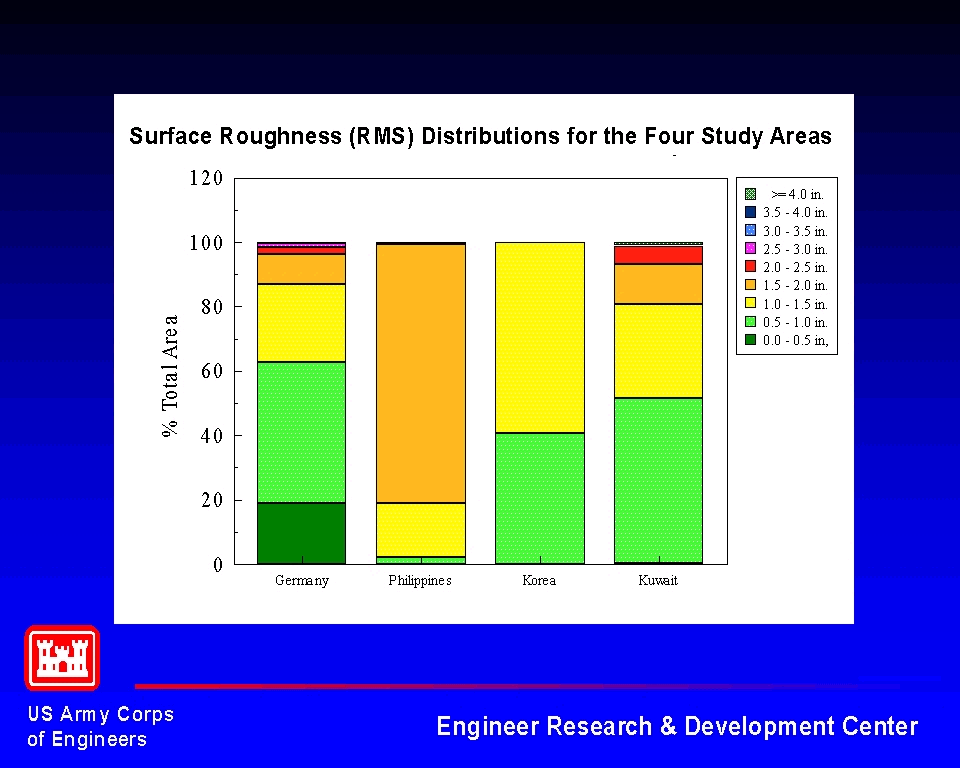

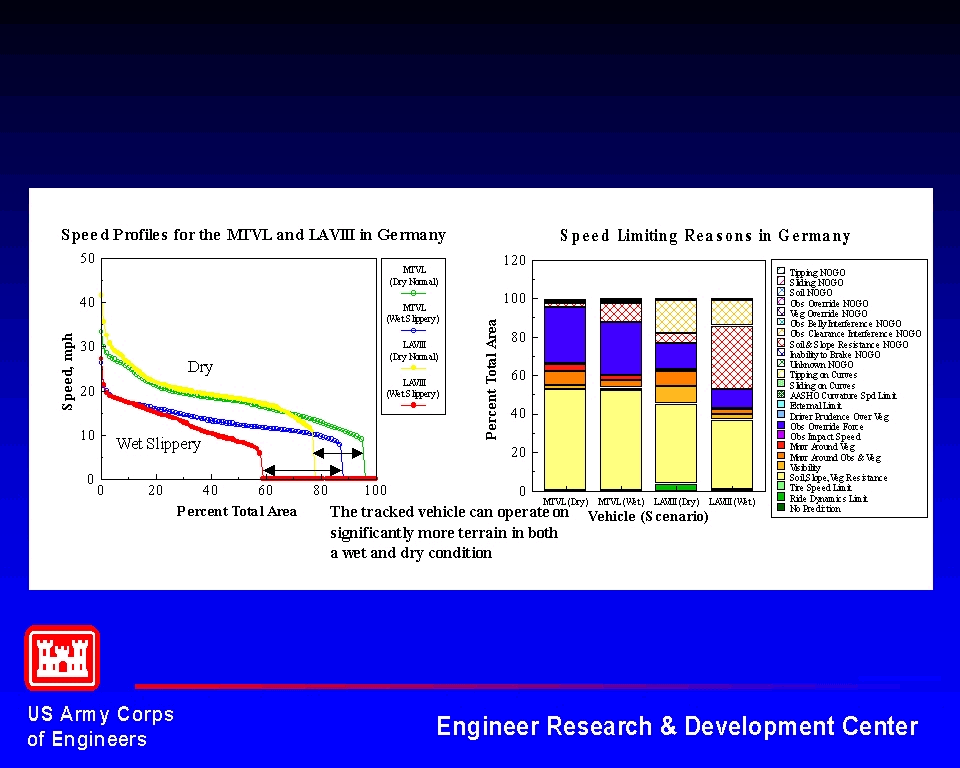
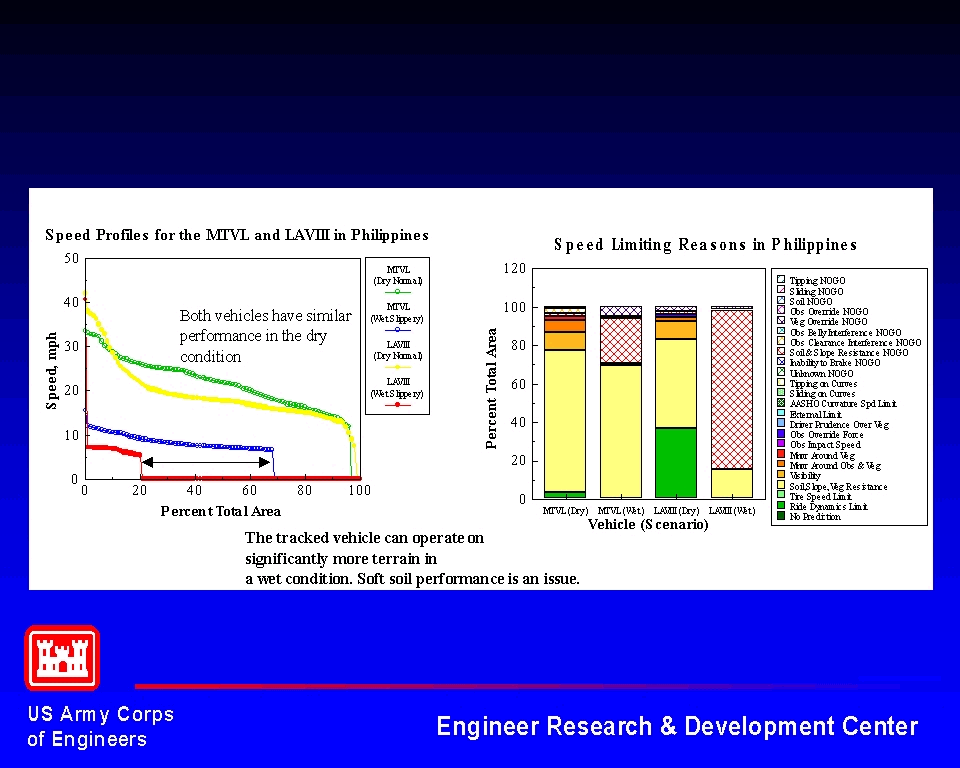
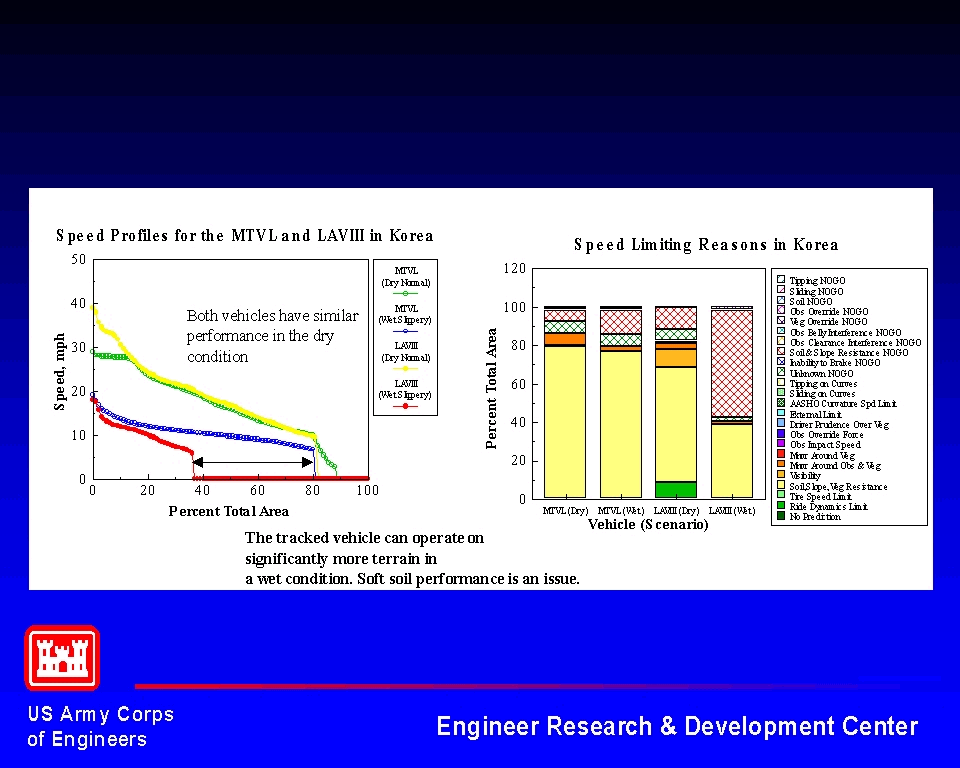
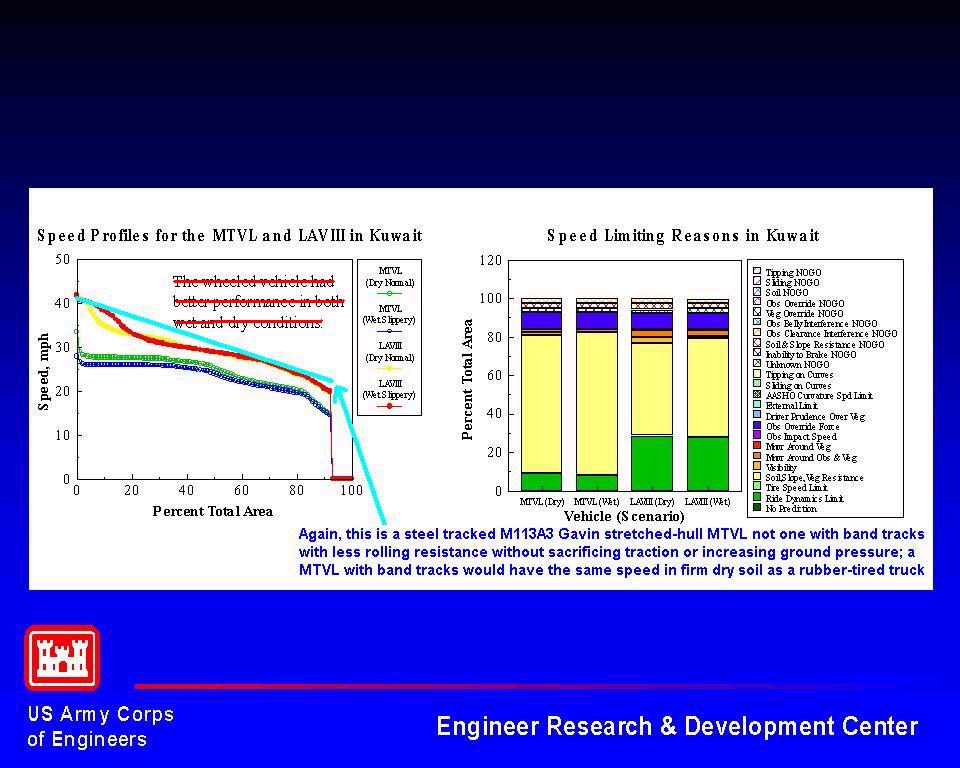
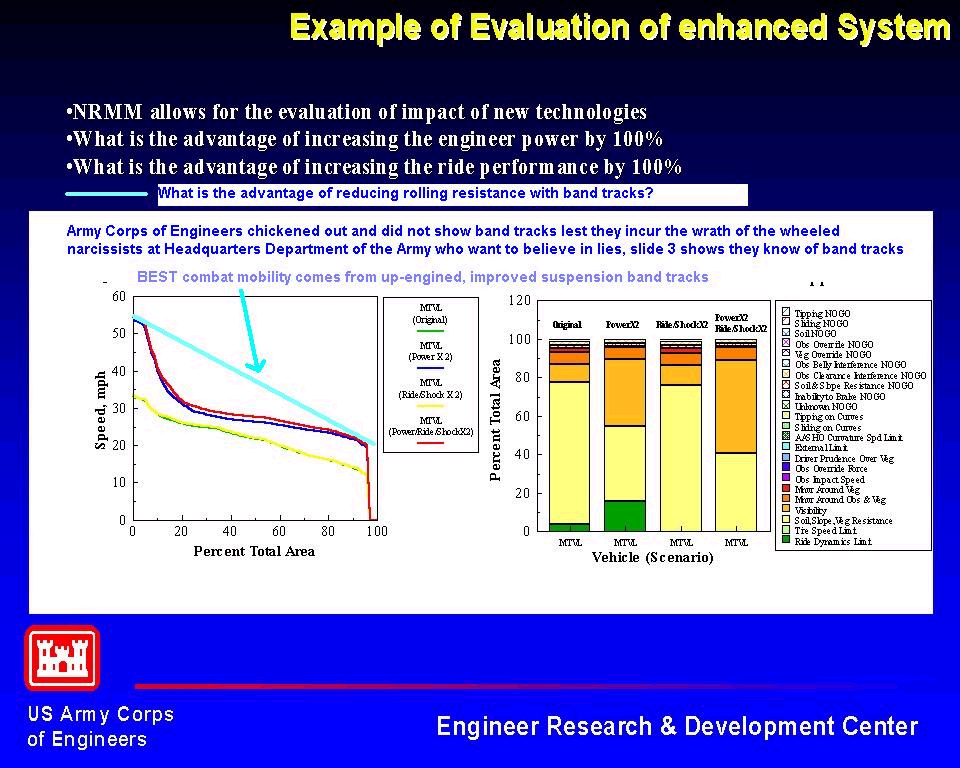
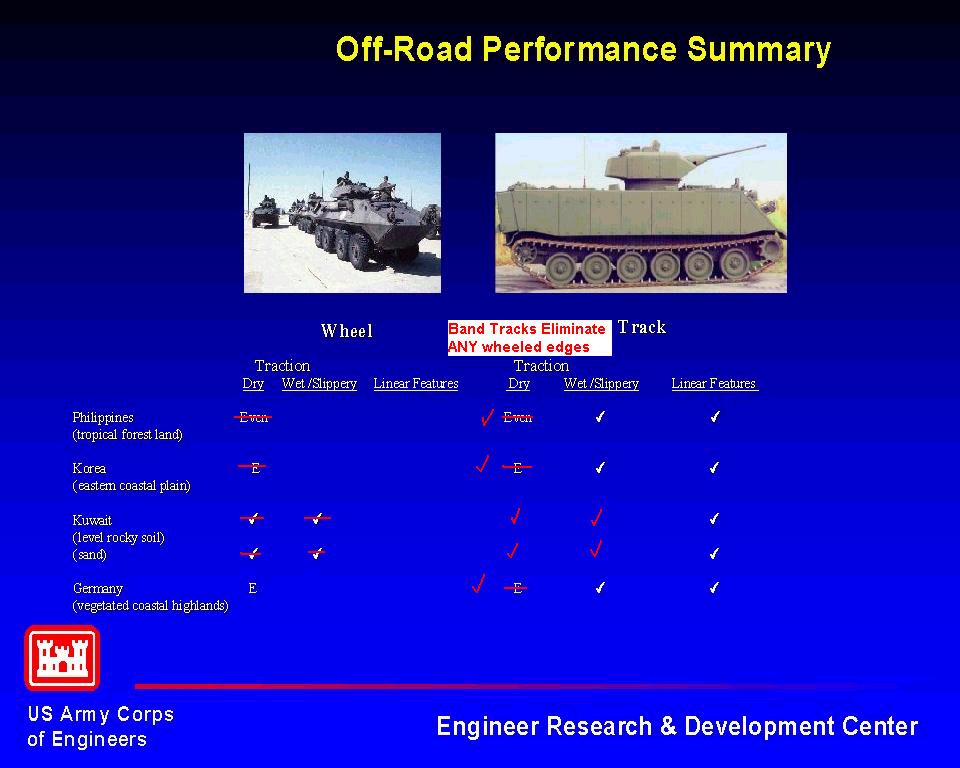
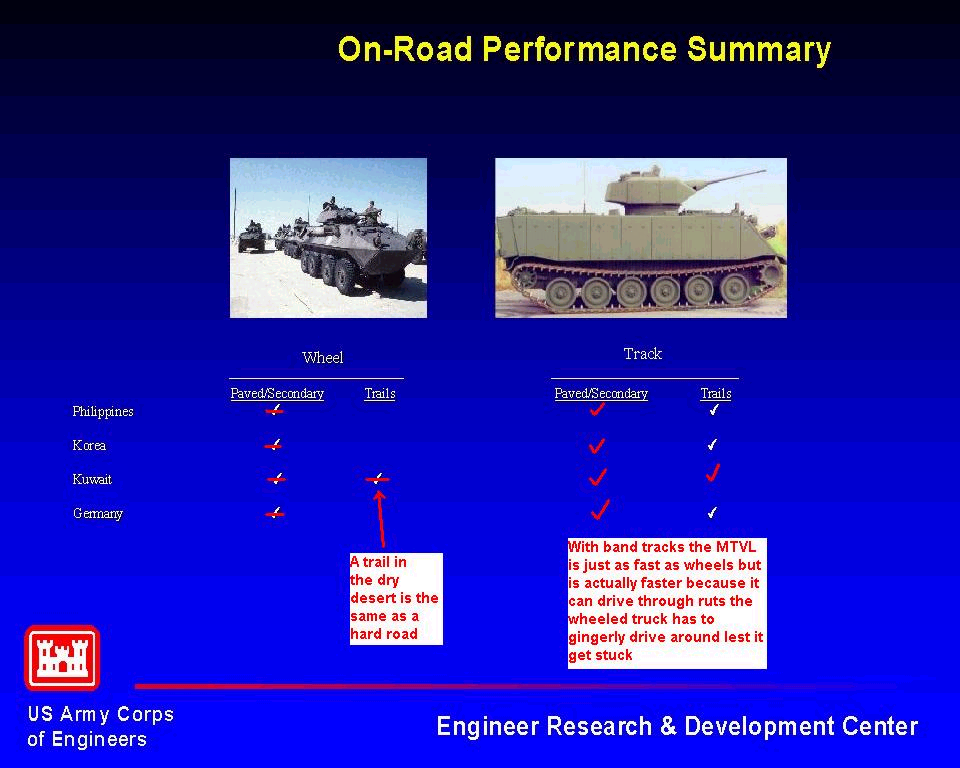
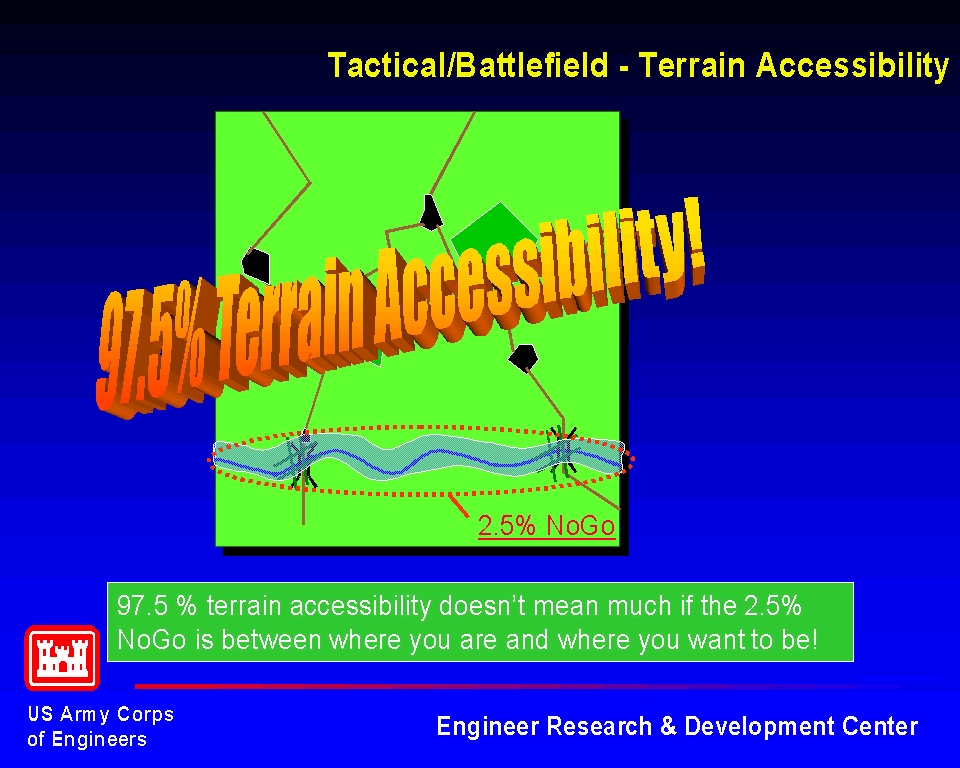
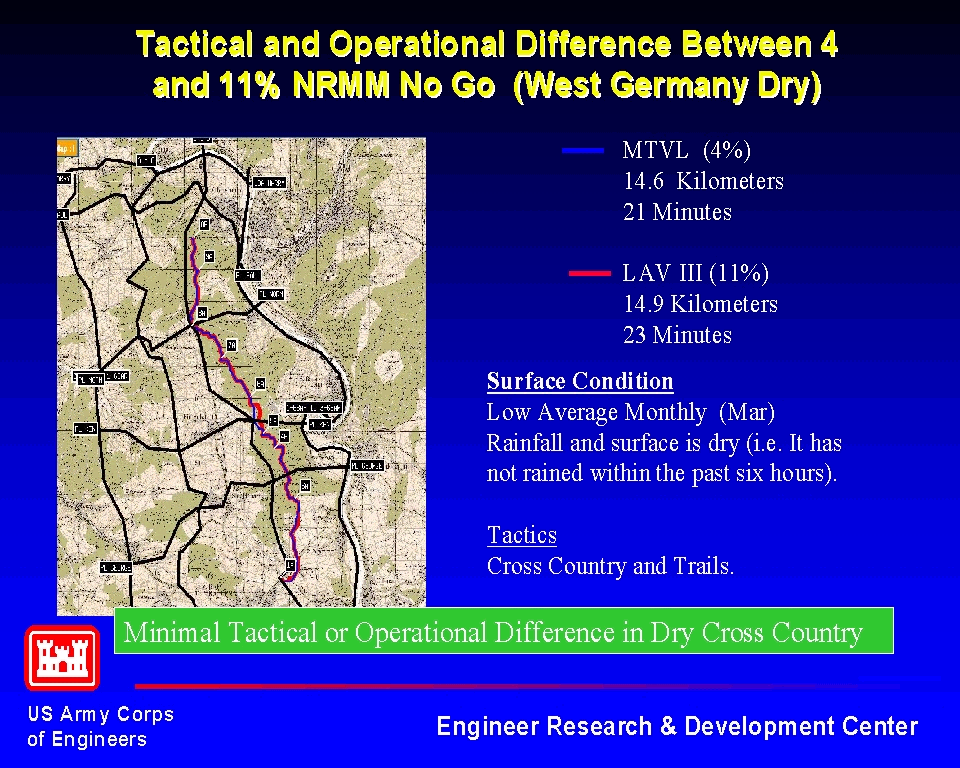
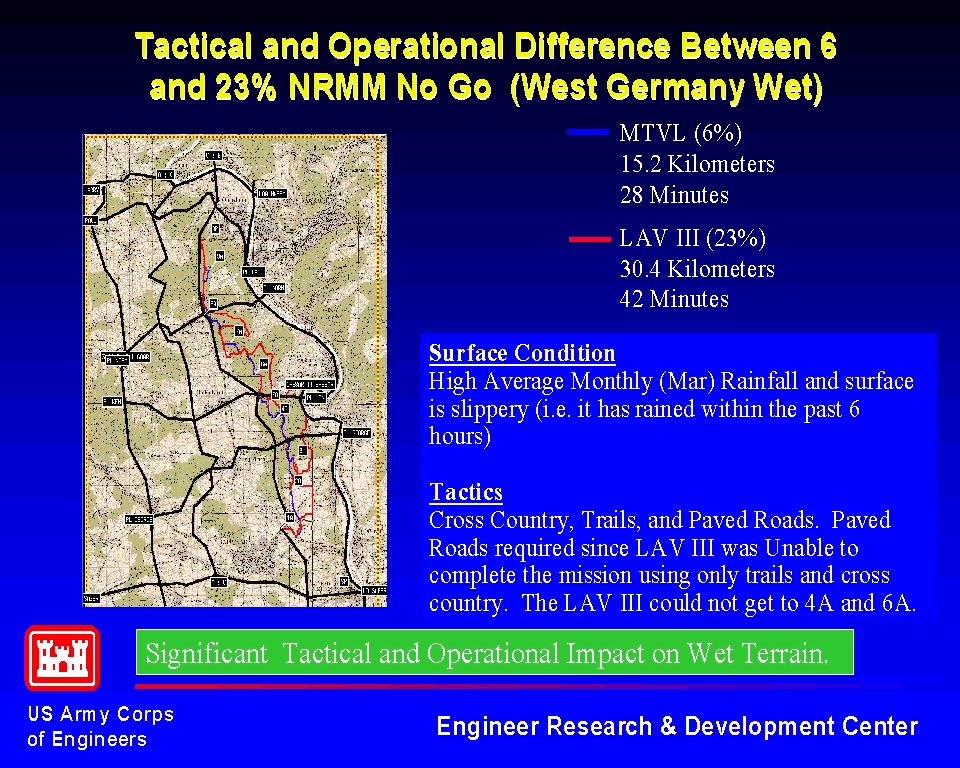
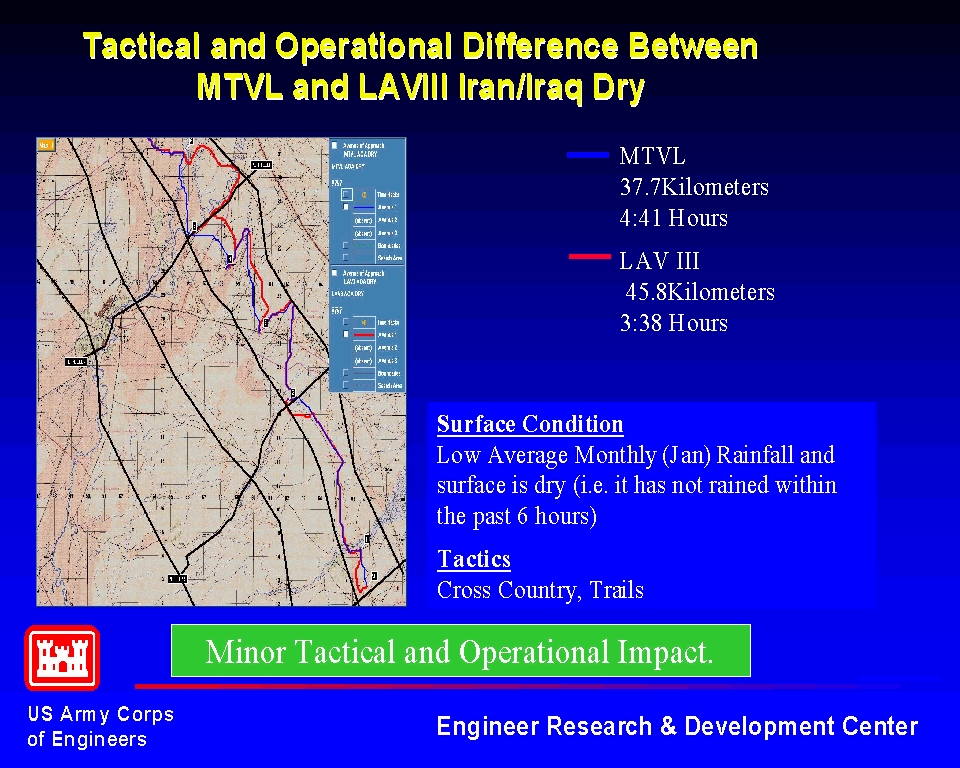
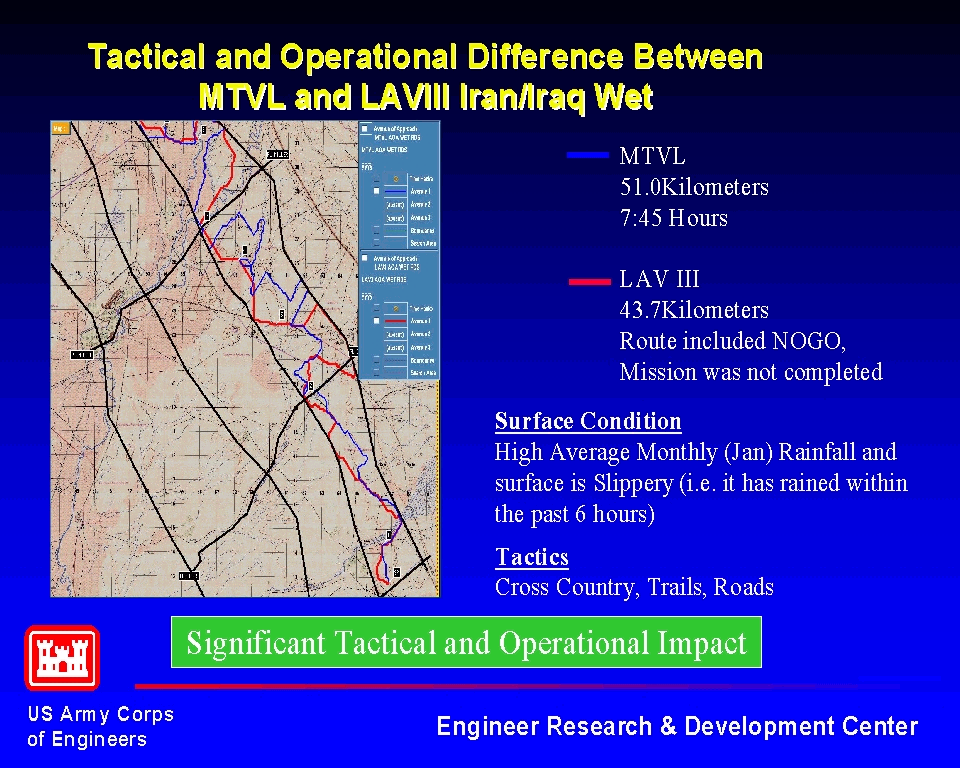
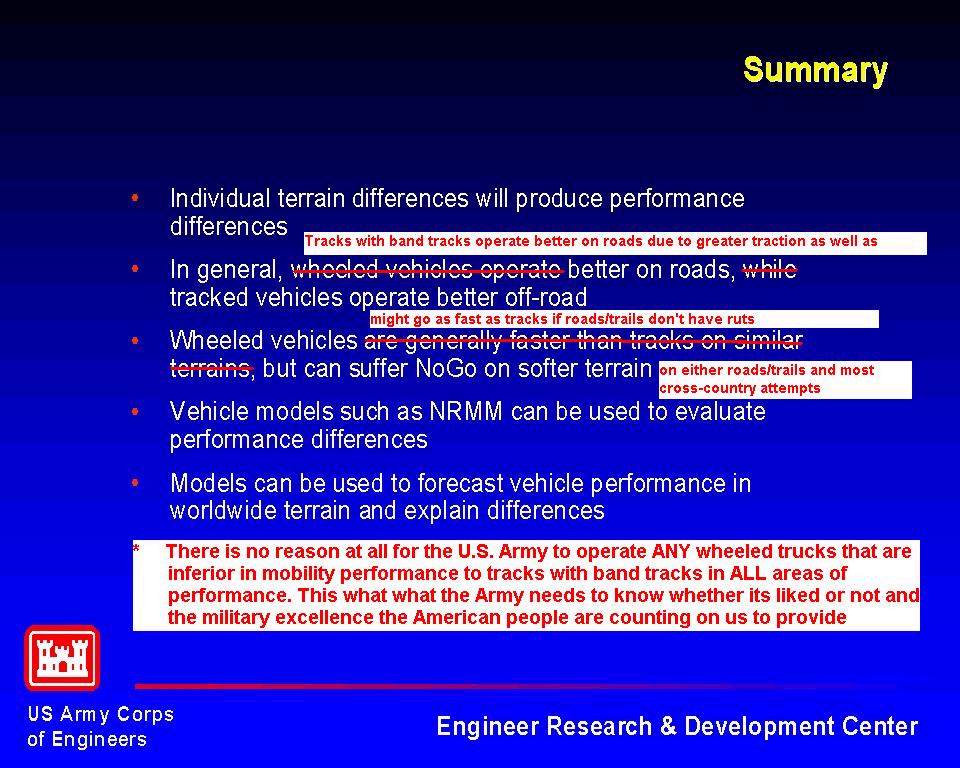
Steel Tracked M113 Gavin went 75+ mph in 1979! There's NO justification for wheeled trucks on the non-linear battlefield!
According to Hunnicutt Bradley: A History of American Fighting and Support Vehicles on page 109, the "Hot Rod" averaged 75.76 mph over a 500 foot gravel test track at Fort Knox in 1979. Power was 2 x 440 cubic inch Chrysler gas engines driving two modified 727 transmissions.
Imagine what M113 Gavins would do today on band tracks with hybrid-electric drive!
www.combatreform.org/bandtracks.htm
www.combatreform.org/hybridelectricdrive.htm
...thanks be to retired LTC Dave Tooker for finding these pictures!!
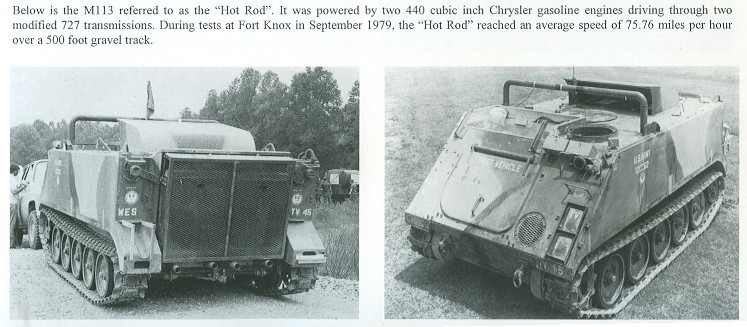
We are the Champions: New Strykerrrr video!
www.combatreform.org/whatsitreallyliketobeinastryker.wmv
|
Billy
Don't Ride in a STRYKER |
||
|
The marchin' band
came down along Main Street
"Billy, don't be a rambo, don't drive a Stryker to the fight
The Stryker tires were deflated on a roadside
She said
"Billy, don't be a rambo, don't drive a Stryker to the fight
|
||
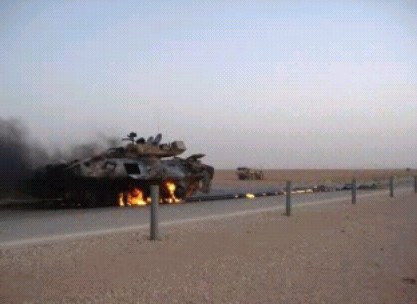
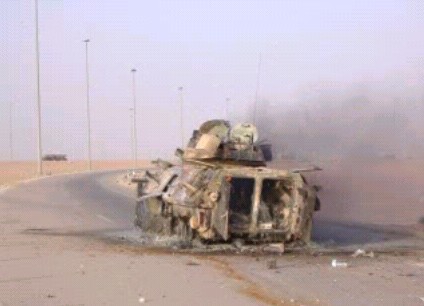

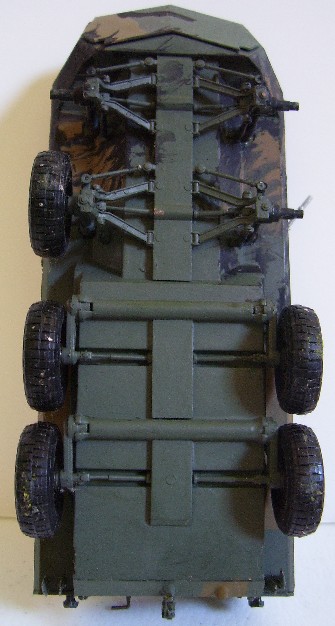
The common lie is that LAVs can somehow afford to lose some of its 4 front air-filled rubber tires and rims which are used for steering and keep rolling; as the attached photo of a LAV-25 1:35 scale model shows, the fragile steering and suspension linkages will be mangled and the LAV1, 2, 3/Stryker will be rolling nowhere "fast" at 0 mph--look what just a little mud did to the Canadian LAV3/Bison/Stryker/POS from the PBS video above.
The LAV's vulnerable suspension and drive train do not run into the hull as torsion bars on tracks do which isolates some land mine shock wave but it makes the entire hull box 28% larger and thus a bigger target with less weight for armor proterction, firepower and supplies than a tracked AFV.
The answer is obviously, to v-hull the tracked AFV and use DTI external road arm suspension and ditch torsion bars. If land mine is powerful enough to destroy a spot of the track, short-track and keep going.
Pampered and shielded from heavy combat by Corrupt Generals who want to foist the motorized infantry lie and post-retirement employment from GDLS, Strykerrrr truck narcissists get asses kicked in Diyala, Iraq long to die on foot to preserve ego/make excuses
What about that "never losing a battle" American triumphalist crap the generals and their PAOs are always pontificating about?
The Stryker truck is flat-bottomed and restricted to roads/trails where land mines await them. Explosively Formed Projectiles (EFPs) are nothing more than super large shaped-charges to create molten copper to burn through anyone stupid enough to drive in their path.
The answer as we have been saying all along is to use M113 Gavin TRACKED armored fighting vehicles that can go cross-country to AVOID being in the kill zone of a landmine in the first place. The latest fad to buy sexy V-Hull trucks will not provide cross-country mobility to avoid landmines nor will they defeat shaped charge land mines (molten metal jet set off from a distance doesn't care what its burning through). There are ways to v-shape Gavins to deflect blast shrapnel/concussion and provide them anti-shaped charge landmine protection, too but monies are being wasted on yet more rubber-tired wheeled trucks to prop up light infantry vanity. The Army and marine foot infantry narcissists running the show in Iraq do not get it: IRAQ IS A COMBAT ENGINEERING WAR against CAR BOMBS and LAND MINES, not a gunslinger shoot-out to go kill/capture and barge into people's houses which makes them into more rebels. We need to build a SEPARATION WALL bewteen Sunni/Shia areas and screen all cars/persons for weapons/explosives and build a SECURITY FENCE on the border to keep the Iranians and Islamic fanatics out. A troop REDUCTION would free the funds for a separation wall and border fence. As the man who created the tank said---Winston Churchill; "Americans always do the right thing. After they have exhausted all other possibilities".
Let's hope we don't lose yet another 3, 300+ dead and 24, 000 wounded before we start doing the right things.
The tracked armored fighting vehicle (tank) that can go cross-country is actually a COMBAT ENGINEERING vehicle. After WW1, Detroit and coporate greed took over tank design resulting in a systemic lack of understanding of high explosive attacks (why our vehicles are flat-bottomed) and a MOTORIZED Army that makes people rich from flimsy truck sales but kills our Soldiers when they should be MECHANIZED in at the very least light tracked tanks (Gavins).
www.iht.com/articles/ap/2007/03/15/africa/ME-GEN-Iraq-Under-Fire.php
Strykers face barrage of enemy fire, lose 2 vehicles on first day in Diyala The Associated PressPublished: March 15, 2007BAQOUBA, Iraq: Dozens of U.S. Stryker combat vehicles roared into Baqouba at sunrise. The enemy was ready. As the dawn call-to-prayer fell silent, the streets blazed with insurgent fire.
Within minutes of the start of their first mission in volatile Diyala province Wednesday a voice crackled across the radio: "Catastrophic kill, with casualties."
Inside the rear of one Stryker, Soldiers shushed one another and leaned closer to the radio. They all knew what it meant. A U.S. vehicle had been lost to enemy fire.
Nearly 100 Strykers were called north from Baghdad into the province and its capital to try - yet again - to rout Sunni insurgents, many who recently fled the month-old Baghdad security operation.
The fighters have renewed their campaign of bombings and killings just 60 kilometers (35 miles) northeast of the capital as the war enters its fifth year. Diyala province is quickly becoming as dangerous as Anbar province, the Sunni insurgent bastion west of Baghdad.
Rocket-propelled grenades pounded buildings Wednesday where U.S. Soldiers sought cover. Mortars soared overhead and crashed to earth spewing clouds of deadly shrapnel. Gunfire rattled ceaselessly - the hollow pop of insurgent AK-47s and whoosh of grenade launchers nearly drowned out by shuddering blasts from U.S. 50-caliber machine guns.
Soldiers screamed into their radios for backup. Apache attack helicopters swooped in, firing Hellfire missiles.
By day's end, one Soldier was dead, 12 wounded and two Strykers destroyed. The Americans said dozens of insurgents were killed but gave no specific number.
It was a brutal, bloody first-day for the 2nd Infantry Division's 5th Battalion, 20th Infantry Regiment - the "crack" Stryker battalion dispatched from Baghdad's northern suburbs.
"They threw everything at us - RPGs, mortars - and a guy even tossed a grenade just in front of my vehicle," said Capt. Huber Parsons, the 28-year-old commander of the 5-20's Attack company. "But the most devastating was the 'IEDs'," the Coral Gables, Florida, native said. He was talking about improvised explosive devices - roadside bombs.
One Stryker was lost in a particularly sophisticated ambush.
Struck head-on by an IED, the rubber-tired armored vehicle was swallowed up in the bomb crater. Insurgents emerged from hiding, firing RPGs in unison.
The Stryker crew was trapped. One U.S. Soldier was killed. All nine other crew members were wounded, though six later returned to duty.
The other Stryker was destroyed when a roadside bomb exploded as the armored fighting vehicle drove over it. The nine-man squad got out alive, three with injuries.
"It was quite an introduction to Diyala," said Sgt. William Rose of the 5-20's 3rd platoon, Alpha company.
"That was the most contact we've had in weeks, maybe months," said Rose, a 26-year-old Arlington, Massachusetts, native.
"They always say the next place we're going is the worst - the most violent - and it never turns out to be the case," Rose said. "They really meant it this time."
Violence has risen dramatically in Diyala since the launch of the Baghdad security operation on Feb. 14. Insurgents have slowly been taking control for months, however. Attacks on American forces in the province have shot up 70 percent since last July, according to military figures.
The Stryker group sent to fight the insurgents was hand-picked by Gen. Ray Odierno, the second in command of all U.S. forces in Iraq. It marked the opening of a new front in the Baghdad security operation, a broadening of the operation for which U.S. President George W. Bush has promised more than 20,000 additional Soldiers.
The Stryker group arrived in Baqouba on Tuesday full of optimism about pacifying Diyala, as they had done earlier in parts of Baghdad and the northern city of Mosul.
Confidence faded Wednesday in the hail of insurgent fire and news of casualties among comrades.
"Our first day and we lost one already," said 22-year-old Spc. Jose Charriez of Hermiston, Oregon. "You realize how quickly your life can go."
He and his comrades went through names - Jones, Rubenstein, could it be them? - trying to figure out who had been killed. A young private bowed his head in prayer.
"One killed in action and nine casualties. That's basically all of us right here," said Spc. Anthony Bradshaw, a 21-year-old from San Antonio, pointing to the nine men around him.
Hunkered down in their vehicles, the 3rd platoon were itching to get out and into the fight. They are infantrymen trained for foot patrols, not to ride in armored vehicles, they said. And the news of the two lost vehicles fueled their determination.
Then the order came: dismount, clear houses to the north.
At the back of the Stryker, the hatch dropped open, and nine Soldiers piled out. They took cover on the front porch of an abandoned house and plotted their path. Explosions rang out to the east, source unknown.
They crouched behind a crumbling cement wall separating overgrown lawns where rusted garbage trucks lay.
With large red wire cutters, Spc. Jeremiah Westerfeld, 22, ripped through concertina wire to allow Soldiers to scramble over the wall.
The Batesville, Indiana, native bent over and offered a visiting reporter his shoulder as a step to break her fall.
They dropped down into a scruffy yard, thick with foliage and muddy ruts. A dog barked wildly. Smoke grenades were thrown for cover.
Someone shot the dog.
Doors were kicked in, residents questioned. One vacant house was booby-trapped with a trip wire connected to a homemade bomb made from a propane tank.
Throughout the day, Soldiers took aim but seldom got a clear shot on the elusive enemy that hid behind rooftop water tanks and vanished in lush palm groves. Gunfire seemed to come from nowhere and from everywhere.
Insurgent fire kicked up pebbles at the Americans' feet as they ran between buildings. Enemy bullets were getting more accurate.
In Baghdad, the 5-20 had found little resistance as the unit scoured suspected insurgent dens in neighborhoods around Sadr City. They often drank tea with locals.
Things were different in Diyala, which could prove far more difficult to tame than Baghdad.
"I think the chai (tea) days - the quiet days - are over," said 24-year-old Pfc. Allen Groth of Winona, Minnesota.
GDLS cheats and has metal bracket to keep Stryker-MGS from tipping over; claims side stability problem "solved"
PROBLEM: Strykerrrr-MGS doesn't work despite millions of tax $ dollars...could threaten corporate profits...Congress could stop their gravy train...
The picture below GDLS sends out claiming it proves Strykerrrr-MGS can fire 105mm gun to side and not tip-over:
(Click on picture for full-size version)
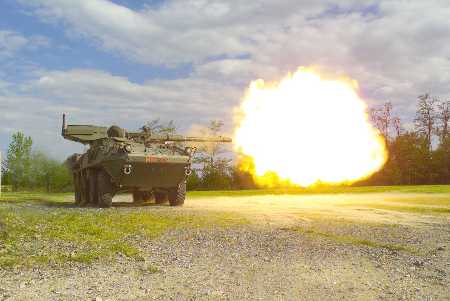
SOLUTION TO FOIST A LIE: Now look more closely at the cropped and captioned version of GDLS picture which shows a METAL TEST STAND/BRACKET COMING OUT OF THE GROUND TO PREVENT IT FROM TIPPING OVER.
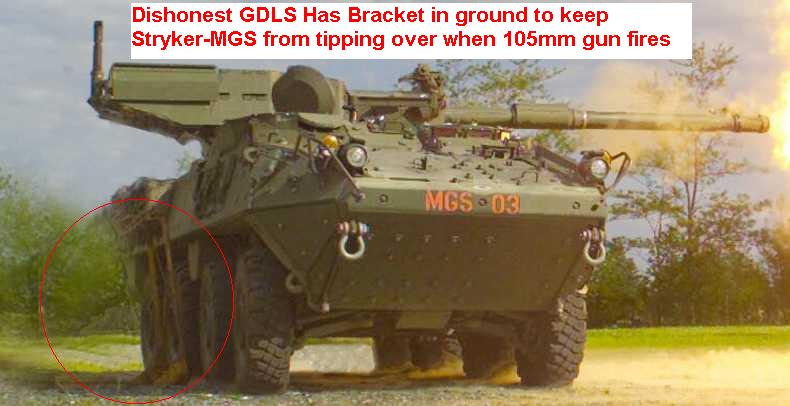
Too bad we can't in combat dig a hole and place a huge metal bracket in to lean the Strykerrrr-MGS up against it so it will not tip over whenever we need to fire the 105mm gun? (that is when it fires and doesn't jam).
PLAN B: So now GDLS is pushing to provide M1 HEAVY tanks to Stryker truck brigades and to emasculate our heavy brigades with yet more wheeled deathtraps (more corporate $$$ profits for them).
Have you noticed every Vice Chief of Staff of the Army in the past several years has retired and gone to work for GDLS? I guess they didn't learn how to spell the words "conflict", "of" and "interest" in high school?
Absurd.
That completely destroys the original intent of the Strykerrrr truck units as briefed to the Hill. Anything but admit the Strykerrrr is a huge failure and to do the RIGHT THING and supply our LIGHT troops with LIGHT M113 Gavin and M8 Buford/Thunderbolt TRACKS that can actually fly by C-130 aircraft for 3D maneuvers, go cross-country at will, fire large 105-120mm guns and fully protect our men in non-linear combats.
Someone needs to step in and put an end to this before the Army wastes all of its remaining cash on a bad solution.
REVELATION: Canadian Army Officer warns that Canadian-made Stryker-type trucks are dismal failures and M113 Gavin tracks are getting the job done, but corrupt politics prevent their troops from discarding their cash cows
ORIGINAL MESSAGE TO THE CANADIAN ARMY OFFICER
Sent: Saturday, 3, September, 2005 11:52 AM
To: xxxxxxxxx@forces.gc.ca
Subject: Stryker-MGS failings
Sir,
GDLS is a corrupt company that is not going to reveal its failings. What we hear is that when the Strykerrrr-MGS 105mm gun is fired forward in alignment with its wheel base, it sheared off the axles - when turned 90 degrees and fired, the vehicle turned over.
If I were you, I'd put a 105mm gun on M113 Gavin or M8 Buford tracks and stop sacrificing 28% of your armor protection possibilities and limiting yourselves to roads/trails where you are easily ambushed by trying to make wheeled trucks into combat vehicles when they are clearly obsolete on the non-linear battlefield (NLB) where the enemy can attack in any direction at any time.
The days of a "Jessica Lynch" underclass driving around in rubber-tired trucks is over. Everyone has to fight and everyone has to work to prevail on the NLB.
Airborne!
Mike Sparks
*****************************************
THE CANADIAN OFFICER REPLIES:
"Hi Mike,
Thanks for your opinions, I thought I'd reply from my home e-mail as opposed to my Army address. Most in the Canadian army share the basic view that the Stryker family is not the ideal platform for anything (let alone a 105mm gun). We are an all weather army and a good portion of our training is in severe snow conditions and the wheeled vehicles in our regiment (LAV 25's and LAV3's) simply get stuck where our venerable Leopards just plough right through, we had 2 LAV3 rollovers during a winter combat team ex last year. We have recently received our upgraded M113s and are very impressed with the performance (see link). They are very fast, roomy and the mobility is far superior to anything wheeled. Canada is a country that requires almost 100% Canadian content in procurement, often at the sacrifice of mission requrements and soldier safety. Therefore we are using the LAV3 chassis for nearly all new platforms. At the junior officer and Company Commander level in an armoured regiment the consenus is to stay with M113A3-A4 and replace our Leopards with something like the M8 AGS, a reasonable balance of weight, mobility and firepower and most importantly crew safety.
As we get rid of our tanks and await the MGS the Canadian army is developing a new 'Direct Fire Doctrine' where the MGS, Tow Under Armour and ADATS work together to provide long range direct fire support. A cumbersome and costly nightmare, operationally and logistically. This will all be based on the LAV3 platform and two of these vehicles will have little or no defensive capability. As a tanker we are used to using terrain to find the best firing positions from a hull down position, after laying on to a target with our sights we only expose ourselves enough for the gun to clear, we then fire and haul ass in reverse, jockey and take up another postion. The MGS with it's gun mounted so far back, with very little depression on the hull will require total exposure of the hull to fire. So here we are, crested in a thin skinned vehicle, a sitting duck. One of the things that our politically appointed Defence Minister stated with purchasing the MGS is that 'Hey, it's deployable in a Herc where our tanks are not' well that's B.S. as you know and with that mentality a Ford Escort is deployable but I wouldn't want to be caught dead in such a piece of crap. Situational awareness on the move is also a serious issue. As a crew commander do you expect me to poke my head way up over that monstrous gun-thing to check what is on the flanks?
I can rant for hours but you can be assured that Soldiers in the Canadian Forces agree with you. It saddens me because in our Liberalized, Velvet Totalitarian country we do not have citizens that even think about defence matters let alone fight for the good of the troops like your organization does. I salute you for your efforts.
Feel free to use my commentary but not my name,
Thanks,
xxxxxxx"
NEW CONSERVATIVE GOVERNMENT IN CANADA CANCELS THEIR OWN CANADIAN BUT DEFECTIVE PRODUCT LAV-III MOBILE GUN SYSTEM: FAILURES IN AFGHANISTAN WAKE THEM UP
(Americans lack such integrity, BS themselves that they are "Stryker-MGSes" perverting the name of two actual American Soldier Heroes)
VIDEO PROOF:
www.combatreform.org/lav25getstuckinthemudandtiresspinandcantmove.mpeg
Here's a video of a LAV-1 with a small 25mm turret getting stuck; imagine a bloated LAV-III with a heavy 105mm external gun on top, how immobile it is!
"As soon you get off the highway and into the wadis (dry river beds) -- it's the suspension, the tires, the heat, the strain of driving up and down the hills all day at slow speeds and high idle. It just seems to murder the vehicles."
11 x LAV-IIIs knocked out by the EARTH...1/5 of the Canadian force. The Taliban/al Queda types must be laughing their heads off.
2 x LAV-IIIs blown up because they were too heavy to tow back, MOTHER EARTH again KOs the stupid arrogant "Modern", "Futuristic" humans.
Ladies and gentlemen, we have a winner!
By a knock-out, MOTHER EARTH!
www.canada.com/edmontonjournal/news/story.html?id=d2ace8bb-b41f-4b8c-afce-f6dbfef1d7e5&k=60414
John Cotter, Canadian Press
Published: Friday, July 07, 2006
KANDAHAR, Afghanistan -- A Canadian convoy screeches to a halt in a remote mountain valley as a Bison armoured personnel carrier overheats, bleeding its vital engine coolant onto the hot, dusty road.
As nervous Soldiers dismount to form a protective cordon around the vulnerable vehicles, weapons facing out toward the unknown, a team of mechanics jumps on the Bison, fix the problem and get the convoy moving again.
Afghanistan's horrible climate and brutal landscape are giving Canada's military mechanics major headaches as they struggle to keep equipment working in the war against the Taliban.
"There probably isn't a more difficult or harsh environment than Afghanistan," said Capt. Chris Wood of the Edmonton-based 1 Service Battalion, the unit tasked with fixing most of the wear and tear.
"Afghanistan is the measure. The extreme test of our equipment."
Blistering 60-degree temperatures cause engines to boil like tea kettles and suck the cold from air-conditioning systems needed to keep Soldiers and delicate electronic equipment in fighting trim.
Jagged terrain shreds heavy tires and mashes shock absorbers into twisted coils of useless metal.
Thick clouds of fine, powdery dust (the troops call it "moon dust") clog weapons and force vehicle crews to stop every 50 to 100 kilometres to clean their air filters.
Since military operations began in February, battle and environmental damage have knocked at least 11 LAV III armoured vehicles out of commission -- about one-fifth of Canada's force in Afghanistan, military sources say.
Some of the remaining LAVs and other vehicles are so worn down they must be rotated back to Canada for major refits before they can be used again. They'll be replaced by "new" vehicles.
The heavy LAVs are so difficult to recover in the field that two had to be written off and destroyed.
In the meantime, the mobile repair crews that go on patrol with the Canadian battle group rely on sweat and ingenuity to keep the motors and systems running.
"For the most part it is putting stuff back together again with bubble-gum and tape, whatever you can think of at the time," said Cpl. Kirk Lewis of Salisbury, N.B.
"As soon you get off the highway and into the wadis (dry river beds) -- it's the suspension, the tires, the heat, the strain of driving up and down the hills all day at slow speeds and high idle. It just seems to murder the vehicles."
Repeated requests were made to the Department of Defence in Ottawa for information on how much has been budgeted for equipment wear and tear in Afghanistan. The information was not provided.
The U.S. military expects the cost of replacing, maintaining and upgrading army equipment in Afghanistan and Iraq to more than triple next year, according to documents obtained by the Associated Press.
The documents say the budget for repairs alone will be about $6.5 billion -- three times higher than the amount to replace battle losses.
Canadian vehicles and equipment that can't be fixed in the field are brought to the coalition base in Kandahar.
The maintenance centre looks like a giant metallic dinosaur boneyard. Damaged armoured vehicles sit in the dust as mechanics crawl over the carcasses, making repairs.
Some gear is dragged into a warren of dark tents that are lit up by the sparks and arcs of welding torches.
"When vehicles get blown up we can reuse the parts that aren't blown up," said Master Cpl. Bill Coles of Newfoundland. "We cannibalize a little."
The mechanics, who sometimes have to work through the night on priority jobs, use humour and camaraderie to make it through their shifts.
One repair bay has been decorated to look like a gas station garage you would find in any small community in Canada.
Girlie pictures and motorcycle posters cover a white refrigerator next to a grimy coffee pot as the mechanics hum along to a CD player garbling Top 40 songs.
The atmosphere is almost like home until a sunburned corporal rolls up to the bay in his battered 20-tonne LAV, one of its eight wheels mangled and in need of service.
The weary corporal pulls himself out of the turret, jumps to the ground and makes a query familiar to any mechanic who has every held a wrench.
"Hey, do you know how long it will take to get my vehicle ready?"
www.canada.com/ottawacitizen/news/story.html?id=95b4c9e5-de13-4425-bc87-218c10
31583c&k=94676&p=1
The return of the Leopard
Three years ago, Canada announced the demise of its fleet of tanks, saying
that "lighter, faster and more manoeuverable" Stryker mobile gun systems were
required if we were to be a viable, battlefield-ready force. But now, our
experiences in Afghanistan suggest otherwise, and the army is asking the
government to reconsider.
David Pugliese, The Ottawa Citizen
Saturday, July 08, 2006
On Oct. 29, 2003, Liberal Defence Minister John McCallum and Lt.-Gen. Rick
Hillier assembled the Ottawa news media to announce the demise of the
country's tank force. Canada was taking its fleet of Leopard tanks out of service and was going "high-tech".
Mr. McCallum said the army had requested the government purchase the U.S.
"Stryker" Mobile Gun System, better known as the MGS. That wheeled vehicle, also being bought by the American army, had less armour than a tank but could move "faster" and was "more manoeuverable" on the battlefield.
According to Lt.-Gen. Hillier, the army's Leopards had served their purpose
and, despite recently undergoing a $145-million upgrade, were now of limited use. The vehicle of the "future" was instead the MGS, which the general, an armoured officer, dubbed state-of-the art and a "war-winner."
"A mobile gun system is the right vehicle for Canada's army and will provide
an excellent capability on Canadian Forces operations," Lt.-Gen. Hillier
said. "We are losing a millstone that has hamstrung our thinking for years," he added, referring to the Leopard.
The general dismissed concerns from some opposition politicians who warned
the decision would put the lives of Canadian military personnel at risk and
placed the country on par with Luxembourg and Iceland, two nations which also
saw no need for heavier armoured vehicles.
The army's plan would instead see the MGS working in conjunction with another "high-tech" weapon, the Multi-Mission Effects Vehicle or MMEV. Based on the army's existing air defence missile system called ADATS, the MMEV would be designed and built by the Quebec-based aerospace firm Oerlikon and be capable of shooting down aircraft or destroying ground targets.
But less than three years later, and in a major reversal of its plans, the
army is now asking the Conservative government to cancel both the MGS and MMEV
programs. The MGS is no longer the right vehicle for the army and the Leopard is no longer seen as a millstone. A study is under way to determine how to keep the tank in service until at least 2015.
Army officials refuse to say why they want to cut the two programs which
just a few years ago were heralded as evidence that Canada would be fielding a
high-tech military.
The decision to buy the MGS and MMEV was at the heart of the army's decision
to "transform" itself into a force that could be quickly sent overseas and,
once there, rapidly move around the battlefield. Tanks took too long to get to
a war zone, Canada's military leadership maintained, and the tracked
behemoths were difficult to manoeuvre, particularly in places like Kabul. In fact, Canada wasn't sending its Leopards overseas all that much; the last time they had been used on an international mission was in Kosovo in 1999.
The army's plan, instead, called for using the MGS, the MMEV and another
anti-tank missile system to form a "direct fire system" that would replace the
Leopard. The MMEV, according to the Canadian Forces, would be capable of shooting down aircraft as well as drones, knocking out armoured vehicles and destroying enemy forces hidden in hills and buildings.
Unlike the Leopard, the MGS would "quickly drive" into battle. Any needed
additional firepower would come from other sources. "We now have a very different kind of battle space," Lt.-Col. Paul Fleury, then director of land strategic planning, told the Canadian Forces newspaper the Maple Leaf in 2004. "And in any major conflict now we'll have contact with aircraft up to and including B-52s that can drop ordnance wherever we need it." [EDITOR: typical RMA bombard & occupy BS from wheeled narcissists]
But the ongoing wars in Iraq and Afghanistan have led to new questions about
how future conflicts will be fought. Insurgents armed with rocket-propelled
grenades and using roadside bombs have proven to be a formidable enemy,
knocking out lightly armoured vehicles and even tanks. Fielding vehicles with
better protection, argue some commanders, is now the way of the future.
At the same time, other equipment is more urgently needed by the Canadian
army for its future operations, particularly those in Afghanistan. The $3
billion to be spent on the MGS and MMEV, a price tag which included long-term
maintenance contracts for the vehicles, could be put to better use elsewhere.
The MGS, in particular, has faced widespread criticism, particularly from
Soldiers in the U.S. Some American officers have argued that the move towards
such lighter forces is dangerous. Wheeled vehicles, such as the Stryker, while
good on roadways, lack the mobility for cross-country warfare, they maintain.
The other main argument against the MGS centres on the vehicle's light
armour and its vulnerability to rocket-propelled grenades. "The Stryker was not ordered with the RPG in mind," noted a report written by U.S.-based analyst Victor O'Reilly, who described the vehicle as suited for light peacekeeping duties, but not combat. Other critics in the U.S. pointed to tests by the U.S. military which revealed a series of problems with the main armament on the MGS. The blast from the gun was so powerful it damaged parts on the armoured vehicle. In addition, there have been problems with the weapon's loading system, and Soldiers who tested the vehicle complained it was too cramped. Others noted that the MGS had just 18 rounds of ammunition compared to the 50 or 55 usually carried in many tanks.
Officials with General Dynamics, the U.S. defence firm building the Stryker
family of vehicles, countered that such criticisms were no longer valid since
improvements had taken care of any problems. The vehicle, they noted, was
more than capable of surviving on the battlefield. [EDITOR: LYING MOTHERFUCKERS. Can LAV-III-MGS carry more than 18 ready rounds? NO. Can it go cross-country without getting stuck? NO. Can it fire the 105mm gun without tipping over? NO. There should be a law for lying about defense products in public and the liars at GDLS should be thrown in prison, starting the the lying retired Army generals getting fat off the deaths/maimings of our Soldiers in Iraq/Afghanistan].
A similar but more limited debate in Canada's military took place largely
behind closed doors. [EDITOR: no such integrity in U.S. Army/marines, they believe the BS they feed to the public and Congress]. Those in the armoured corps were not happy with the MGS purchase, but they stayed loyal to the service [EDITOR: is "loyalty" going along with institutional suicide? We think not. We know not. Loyalty would blow-the-whistle on the BS in any way it takes to get it stopped.] and said nothing publicly. Studies done by the Canadian Forces in the late 1990s had already called into question replacing the Leopard tank with a lighter armoured vehicle, similar to the MGS. The outcome of one of those war game simulations warned that using such a vehicle would not only cost Canadian lives but would be "morally and ethically wrong."
Despite such concerns, there was a widespread acknowledgement in the Canadian army that the MGS purchase was a done deal. A few officers, however, stepped forward to question the purchases in internal memos and professional publications. [EDITOR: these are the ones who were being "loyal" to Canada and her Soldiers] On Sept. 15, 2003, Major T.W. Melnyk wrote a report noting that while the MGS and MMEV improved the army's capability, that didn't mean they were needed for the future transformation of the force. "Given the public commitment to MGS by senior leadership, any difference of opinion at the staff level is largely academic," the major wrote. "While the MGS is not considered to be required for transformation, the project must also be taken as a given."
The MMEV was another matter, though. "It is not clear that providing a
wheeled 8 kilometre direct-fire capability to the Army will contribute in a major way to transformation," his report pointed out. "The logic and value of
spending $300-$400 million on an orphan fleet of 34 vehicles for which there is a minimal industrial support base must also be questioned."
That purchase should be re-evaluated, the report concluded. Maj. Melnyk
added that the army disagreed with his assessment of the MGS and MMEV.
The report was controversial enough that the Defence department's Access to
Information branch withheld its release to the Citizen for 16 months. When it
was made public last year, the Defence department dismissed the document as
an informal analysis by a "planning officer" [EDITOR always defecate on the messenger] that did not reflect the military's official view.
In late 2003, an even more pointed criticism of the MGS purchase emerged in
the army's professional journal. In an article in The Army Doctrine and
Training Bulletin, Lt.-Col. J.A. Summerfield warned that the MGS purchase wouldn't provide the Canadian Forces with any new capabilities, and instead could saddle it with a soon-to-be outdated vehicle.
He noted that the Stryker represented only a stop-gap measure for the U.S.
before it started fielding a more futuristic family of armoured vehicles
around 2015. Once that happened, the American military, with its large budget,
could either continue using the Strykers in other roles or simply get rid of
them.
But the budget-conscious Canadian Forces wouldn't have that option,
according to Lt.-Col. Summerfield. It would have to operate the Strykers for more than 20 years and, after spending hundreds of millions of dollars to buy the vehicles, it would not likely have the funds to then purchase the futuristic system the Americans planned to field, he warned.
"This is especially disturbing when the (mobile gun) system in question does
not provide a marked improvement over existing systems, including the
Leopard tank," the lieutenant colonel wrote. But the army countered that the MGS did represent an "improvement in technology". It intended to install "more modern equipment" on board the MGS, improving its ability to "transmit and receive information" well beyond what was capable with the Leopards. [EDITOR: put the BS "information" mental gadgets into the Leopard then. Don't confuse mental "icing" with physical "cake".]
In addition, the low-profile turret of the MGS allowed the vehicle's crew to
position themselves "more safely inside" the main body of the chassis. [EDITOR: ABSOLUTE FUCKING LIE: placing crew behind a mere 1/2 inch of steel in the hull is no improvement over the crew in a turret that is several inches thick. A dishonest statement to deceive.] "That is new technology and it's a significant improvement in the protection of the crew," Col. Mike Kampman, the army's director of strategic planning, said in an interview at the time. [EDITOR: he's full of shit. The high silhouette LAV-III/MGS will not be able to duck under any earth cover any better than a Leopard tank with a more compact tracked hull with a turret can.]
But it was a comment by a retired general that set off the most extensive
and dogged defence of the MGS yet offered by the army leadership. Responding to a Canadian Forces report that showed tanks played a key role in the Iraq
war, retired brigadier general Jim Hanson ridiculed the MGS purchase.
He also argued that Canada's Leopards could be upgraded at a lower cost than
the MGS price tag and still provide the army with armour protection and
firepower for years to come. He also questioned Gen. Hillier's claims that the
army can't get its Leopards to war zones, noting that if the military had
really wanted to use tanks on missions, it would not be a problem. The MGS would initially have to be transported to a war zone by ship, the same way that
Leopards would be moved, added Brig.-Gen. Hanson.
Then-army commander Lt.-Gen. Rick Hillier responded with a 1,000-word
rebuttal in the Citizen. He called such comments "a distortion" and characterized critics of the MGS as "armchair strategists" [EDITOR: defecate on messenger when you can't defeat his message] who "preferred it the old way."
Warfare had changed. No longer was the Canadian Forces facing the Russians,
Lt.-Gen. Hillier wrote. Instead, it was up against "snakes," a reference to
terrorists and insurgents.
"Tanks are a perfect example of extremely expensive systems that sit in
Canada because they are inappropriate to the operations we conduct daily around the world," Lt.-Gen. Hillier wrote. "The MGS, in conjunction with other combat systems, will give us a much greater capability on operations such as those being conducted in Kabul, and still give us options for high-intensity
combat."
In addition, MGS armour would be improved to defend against rocket-propelled
grenades. [EDITOR: BS. LAV-III chassis is maxed out and cannot take ANY extra armor.]
Canada's Leopard tanks, noted Lt.-Gen. Hillier, could not be compared to
main battle tanks in other western armies since they lacked the protection and
firepower of those vehicles. [EDITOR: beats the protection of the LAV-III, Hillier you liar]
The general also directly linked the purchase of the MGS to the future
transformation of Canada's army. "This transformational process to counter the
Snakes that are prevalent around the world is unsettling to some," he wrote.
"They would appear to prefer that we stop the process of change irrespective
of the dramatically different threat."
That, argued the general, would be illogical.
It will now be up to Gen. Hillier as the country's top Soldier to recommend
whether Defence Minister Gordon O'Connor accepts the army's wish to shutdown
the MGS and MMEV programs. The decision to cut at least the MGS could be
quickly embraced by Mr. O'Connor, a former armoured corps officer. In the past, the Conservatives have been critical of the MGS purchase, and in June 2004, the party's defence policy called for the purchase of a more survivable main battle tank such as the U.S. M1A2 or the German Leopard 2.
As well, Mr. O'Connor's equipment adviser, retired Colonel Howie Marsh, has
questioned the MGS purchase. Aaron Gairdner, Mr. O'Connor's chief of staff,
is well versed with the ongoing concerns about the MGS and in his previous job
as the Conservatives' defence researcher was instrumental in obtaining much
of the information the party used to criticize the purchase.
Defence analyst David Rudd says he doesn't believe the decision to cancel
the MGS and continue to keep the Leopards in service means Canada will go out
and purchase a fleet of new tanks. "I think the army is looking at keeping a
capability they can experiment with and maintain skills on," said Mr. Rudd,
executive director of the Canadian Institute of Strategic Studies. "It means a
reprieve for the tank, but that is not the same as a new life."
What will happen with the MMEV is another matter. The military's original
plans called for using the weapon system to provide protection at the 2010
Winter Olympics in Vancouver. In that job it would be used in its air defence
role to shoot down any aircraft operated by terrorists.
Cancelling a contract potentially worth $1.5 billion for a Quebec-based firm
might also not sit well with Prime Minister Stephen Harper's Conservative
government, which is hoping to win a substantial number of seats in that
province in the next election.
Army spokesman Maj. Daryl Morrell noted that the existing ADATS system,
which forms the basis of the MMEV, has never been upgraded. "You've got certain
things you have to have," he added. "I would find it unlikely for us to go
without some sort of ground-based air defence."
A decision on the two multibillion dollar programs is expected to be made by
the fall.
Whatever the outcome, at stake could be the lives of Canadian troops on
future battlefields.
A Brief History of the Leopard
The Defence department has blown up or sold off almost half of the army's
fleet of 114 Leopard tanks. But further disposal of the tanks has been put on
hold after the army requested the cancellation of the Mobile Gun System and
the Multi-Mission Effects Vehicle programs.
Army spokesman Maj. Daryl Morrell said the service is keeping 66 of its
Leopards in service. Twenty-one are now being used on military firing ranges as targets and 23 were sold to companies in North America. An American firm
bought some of the stripped-down tanks for use in forest fire-fighting.
Four other Leopards have been given to museums or earmarked for use as
monuments.
CNN VIDEO REPORT EXPOSES STRYKERRRRR TRUCKS AS FAILURES IN COMBAT!

Climate, terrain take toll on military gear
Saturday » July 8 » 2006
MAGAZINE ARTICLE: "Tracks" for Iraq
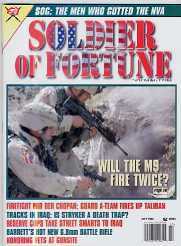
SoldierOfFortuneArticleTRACKSsparksardilloJULY2004.pdf (PDF file)
1st Tactical Studies Group (Airborne) Director Mike Sparks and S2 Intelligence Chief Roy Ardillo take apart the Iraq Humvee/Stryker truck vehicle protection debacle and offer feasible, low-cost M113 Gavin tracked vehicle solutions!
Non-Linear Battlefields Require FULL armor protection: tracks are 28% more capable of armor protection--and can go cross-country to avoid ambushes in the first place!
SO WHY ARE WE TRAVELING IN VULNERABLE TRUCKS DOWN ROADS INTO PREDICTABLE AMBUSHES?
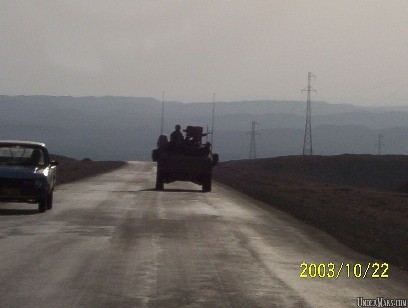
MOBILE: M113 GAVIN TRACKS
Can a Stryker/Humvee wheeled truck go through this kind of mud? Hardly. Only Light tracks with low ground pressures like the M113 Gavin (8.63 PSI) can!
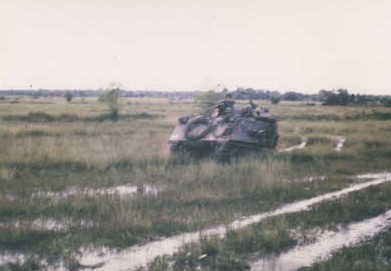
Falklands War decision: what would U.S. light infantry do if in same soft terrain situation?
Brigadier Julian Thompson in his book, "No Picnic" on page 11 writes:
"I was decided at an early stage in planning to take the minimum number of wheeled vehicles. The going anywhere in the Falklands away from the settlements was so bad that even a lightly loaded Landrover would be lucky to cover four miles an hour. Vehicles loaded with ammunition and stores would be lucky to move at all. The Brigade did have seventy-six of its BV202 oversnow vehicles in England, the remainder being stockpiled in Norway. Although designed to operate over snow there was a good chance that these vehicles with a ground pressure of only 1 1/2 lbs per square inch, about that of a man on skis, would be able to motor across the peat bog. Events were to prove they could."
The U.S. Army used M113 Gavin light tracked armor to be mobile in Southeast Asia: don't try this in a Stryker truck!
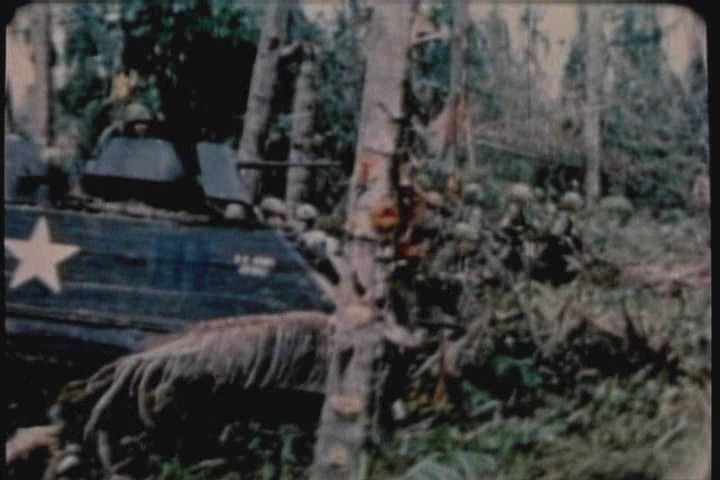
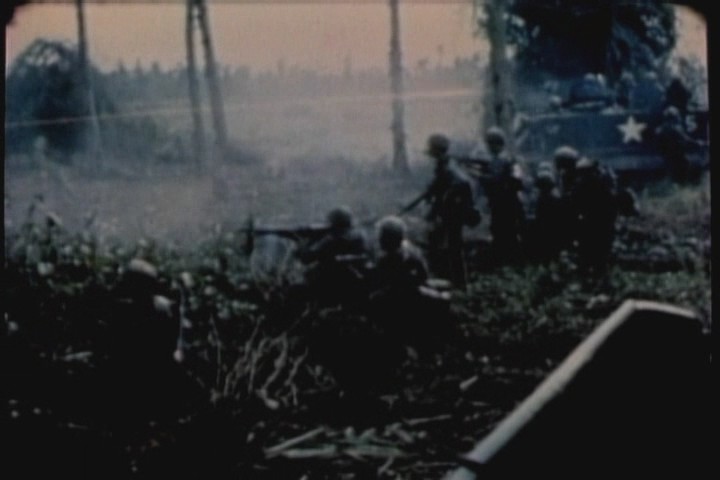
VIDEO: Air/Ground Cavalry M113 Gavins in jungle
The light infantry combat vehicle that can go anywhere a lightfighter can walk--to include breaking brush in closed terrain after 3D aircraft insertions is still the TRACKED M113 Gavin, the "Green Dragon" feared by the VC/NVA and enemies today that can spit out firepower in all directions behind gunshields...you can't do this in a Stryker or any other wheeled truck. We also have the armor to go on the outside of Gavins to make them RPG and landmine resistant as well as stabilized, shoot-on-the-move autocannons to smother all enemies with explosive shell fire. Band tracks and hybrid-electric drive can make extended hull MTVL, regular size or reduced size "Mini-Gavins" that fit into CH-47 Chinook helicopters stealthy and go 60 mph on smooth terrain...
NOT MOBILE: STRYKER TRUCKS
Their 30+ PSI ground pressure is so high, Stryker trucks CANNOT EVEN AVOID GETTING STUCK WHEN OPERATING ON PAVEMENT!!
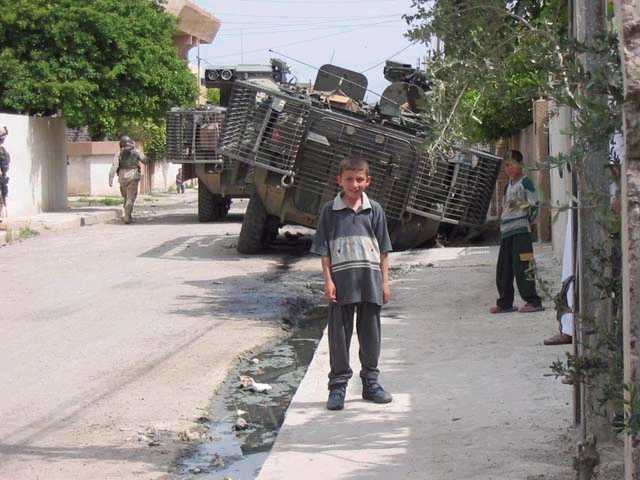
Where did we get this embarrasing stuck-Stryker-truck picture? From the web site of a brain-washed Stryker truck egotist who even has to admit Stryker trucks get stuck often!
www.ronhorton.com/ 7-12-04_ryan_p3.htm
"Stuck Stryker. Happens more often that we'd like to admit. Down in Balad, which is a very rural area, during the winter/rainy season we'd get stuck all the time. Up here in urban Mosul it doesn't happen as much but you always have to look out for the local sewage. Iraqis know nothing about sanitation. Trash goes in any vacant lot nearby and human waste gets dumped in the street and washed downhill. When gravity can do no more a large puddle of undetermined depth is formed and when a 22 ton Stryker drives into that puddle this can happen."
[EDITOR: all it takes to immobilize a Stryker truck is "shit happens"--literally]
Stryker trucks get stuck as soon as they try to LEAVE roads/trails...

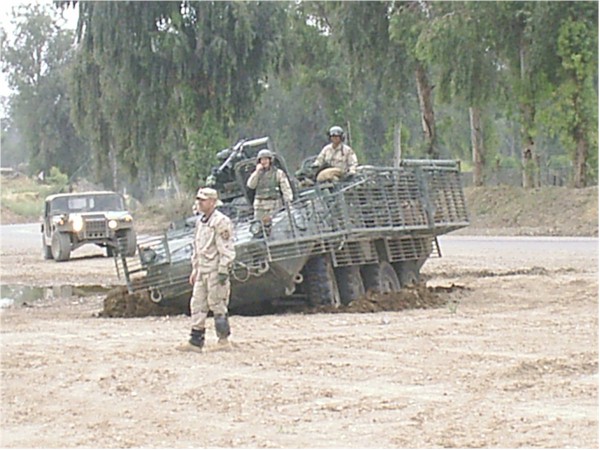
Stryker trucks gets stuck when they try to stay ON the TRAILS...
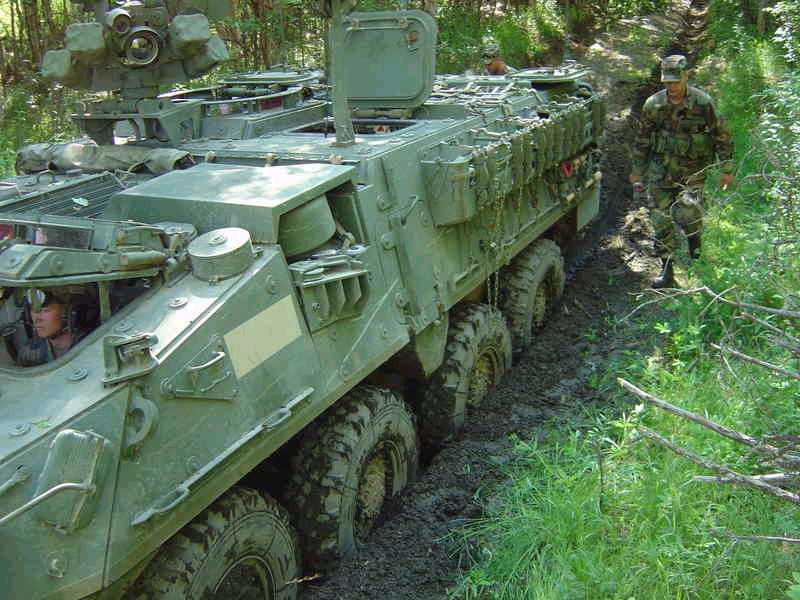
Stryker trucks get stuck when they try to cut across an open field...

Stryker trucks get stuck when they are steered to the supposedly firm, dry desert...
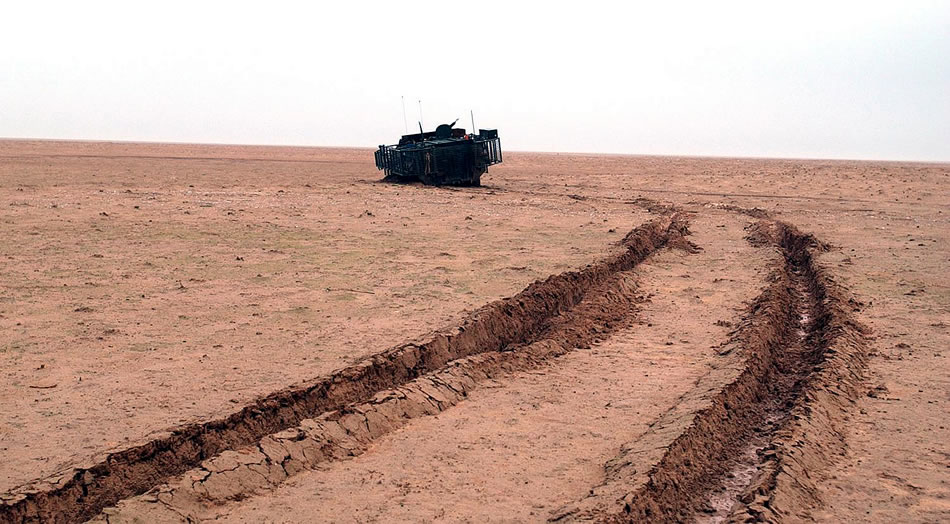
Stryker trucks get stuck as soon as the TURN OFF or VEER OFF the road shoulder...
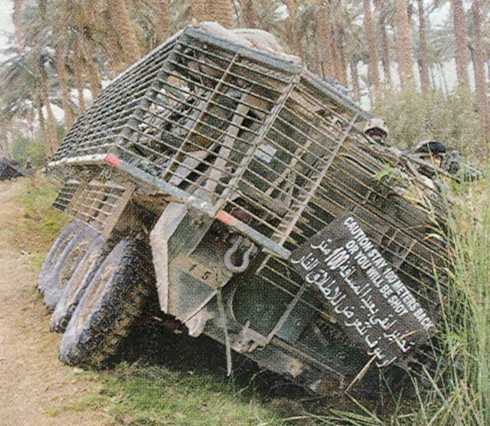
Or worse yet, Stryker trucks TURN-OVER when the ground isn't perfectly flat....killing and injuring all those inside...
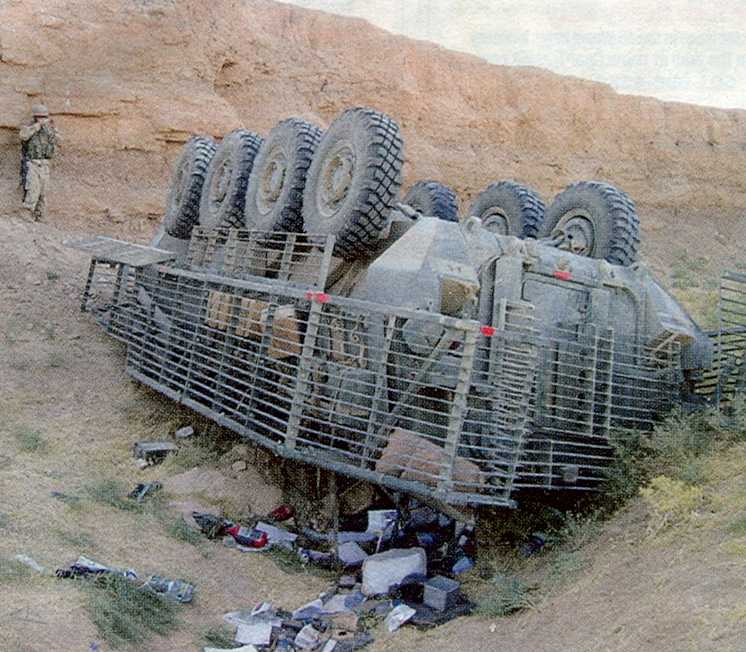
If a Stryker truck gets hit by a landmine, it doesn't "continue on its other good tires" as the liars at General Dynamics and their future employees after-they-retire-from-the-Army say; IT JUST GETS STUCK.
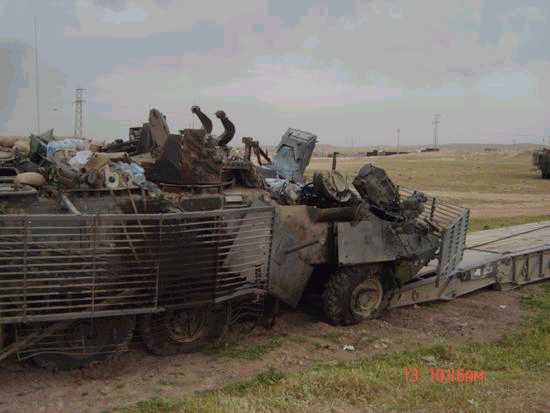
In fact, the air-filled rubber tire situation is so bleak in Iraq, 309 Stryker trucks in just 1 Army Brigade are forcing entire USAF C-130s fly in with 60 of the $1, 000 each tires; of course the Air Force charges $64, 000 and hour for the delivery service on top of this....a constant paying out for $60K of tires by-the-planeload just to keep a road-bound, thin metal box rolling towards enemy landmines....surrounded by fleshy bodies on foot...not very economical....or tactical....makes you wonder who is there for who? The vehicle for the Soldiers or the Soldiers for the vehicle (and post-retirement employment of the brass in cahoots with GDLS)?
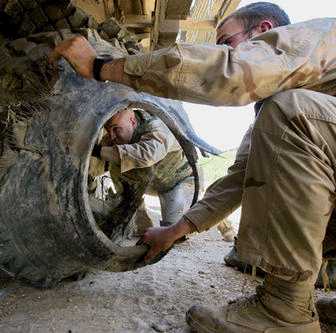
Jock-sniffer and wannabe embed reporter Michael Yon writes:
www.michaelyon-online.com/images/angelsamongTH.jpg
Saturday, July 16th, 2005Angels Among Us
Mosul
Sixty Stryker tires were strapped five-high into the belly of a C-130 cargo plane heading for Mosul. After weeks of riding in a Humvee with CSM Mellinger and crew, at times sharing a dusty but air-conditioned tent in Baghdad with bold mice, it was time to go "home."
Each day Stryker tires get blown off, sometimes sailing hundreds of feet before landing smoldering on a rooftop, or a car, or the ground. So the belly of the airplane was filled with replacement tires, and three passengers: an Australian Naval officer, a U.S. Army officer, and me.
While away from Mosul, I had assiduously tracked the news, but the news just doesn't do it, not even over here. Email was little help unless answers like, "When you come back you'll find out" and "You know damn well I can't tell you what's happening unless you are here," count as informative. Even as the airplane lofted into the sky, Deuce Four was conducting a raid, hauling in explosives, mortars and other deadly devices.
The C-130 landed in Mosul and the Stryker tires and stowaways tumbled out onto the blistering runaway, as scorching exhaust blasts from the still-running engines added to the haze. Inside the airfield shack, military phones were not working, so I could not call the 1-24th Infantry for a ride, leaving me stuck at the airfield. But Soldiers are usually quick to give someone a ride, so when I spotted a sergeant who looked like he was going somewhere, I asked for a lift. Strangely, he had never heard of 1-24 Infantry.
"You never heard of Deuce Four?" I said. How could someone in Mosul not know Deuce Four?
"Of course I've heard of Deuce Four," the sergeant replied.
"Well Deuce Four is the 1-24th Infantry Regiment. That's my unit."
"It's sort of my unit."
"I'm not going that way, but hop in and I'll give you a lift."
We rumbled down the dusty road to FOB Marez, and when I jumped off the big truck, Soldiers in the back handed down my gear, waved goodbye and rumbled away. I walked past the guards at Deuce Four and they welcomed me back.
I dropped off the bags in my trailer and headed to the TOC (HQ), and found everyone smiling-they had just hauled in a major weapons cache. When they welcomed me back, too, I thought: it's good to be home, even when home is at war."
Tires, Tires and more Liars....
So No matter what they do or where they go; Stryker-trucks-get-stuck.
STRYKER-TRUCKS-GET-STUCK--and are built to get stuck.
So then, how many tracked armored vehicles do U.S. Army light infantry units have?
ZERO.
Unfortunately, the Army's light units with Delta Anti-Tank (AT) Companies use unarmored, High-Mobility, Multi-purpose Wheeled Vehicles (HMMWV or "Humvees"); mere 4x4 trucks without the cross-country mobility, armor protection or space in the back to carry A, B, C Company infantry Soldiers as required to conduct real world missions such as rapidly fanning out from Drop Zones (DZs) or Landing Zones (LZs) into enemy territory to engage fleeting asymmetrical enemies as depicted in the scenario above. The Humvee, as a wheeled sport utility not combat vehicle or the heavy, bloated Stryker truck, simply cannot go cross-country at will through vegetation, soft soils, or up and down slopes. It is often road or trail bound, and thus easily ambushed and destroyed at Combat Training Centers (CTCs) like the Joint Readiness Training Center (JRTC) and sadly in combat in Afghanistan and Iraq. Wheeled vehicle are 28% less capable of armor protection than more weight/space efficient tracks. When you slap all kinds of armor on it, Humvee mobility degrades further and mechanically it starts breaking down. This is vividly described by Brigadier General Dan Bolger in The Battle for Hunger Hill and more ominously by real casualty reports in recent combat actions in Iraq, not to mention the 1993 Somalia raid described in the book and film; "Blackhawk Down!" The HMMWV and Stryker are trucks, and not a combat vehicle, with air-filled rubber tires easily punctured and set on fire in a firefight resulting in a mobility kill, and potentially a total kill if the men inside do not get out of the vehicle. Delta Companies, as the main organic anti-tank and mobile security force for foot-mobile light infantry, must not be easily attrited or else the entire main body will be placed in a position of having to fight for its life. The Airborne must land and take the fight aggressively to the enemy without having a "glass jaw;" it must be able to fire and maneuver at will anywhere on the terrain and shrug off enemy fires encountered to attain important objectives - not be damaged and immobilized.
The Army wheeled narcissist lie exposed: Video Proof that steel tracks can go 60+ mph on paved roads
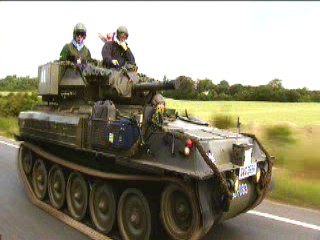
...but when wheeled trucks get STUCK their speed is 0 MPH
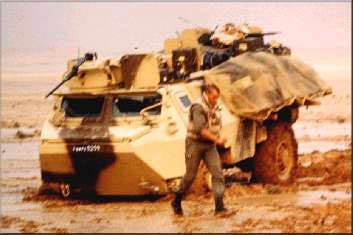
This should end the "Stryker and Humvee 60 mph on roads" non-sense forever. Take the governors off our tracks and they can go as fast as you want them. There is NO reason to have or use rubber-tired trucks on the non-linear battlefields of today...they need to go the way of the horse cavalry.
Edited Clip
www.combatreform.org/steeltrackscango60mphonpavedroads.wmv
Full Clip with an excellent short History of Tanks
www.pioneertv.com/video/tanks900.wmv
Recent Productions
http://72.14.207.104/search?q=cache:FFlc_wMMrHAJ:www.pioneertv.com/recent.asp+tycoon+toys+national+geographic&hl=en&ie=UTF-8
Tycoon Toys
(2 x 60' for National Geographic Channel/Freemantle International Distribution) are what the super-rich choose to spend their hard-won zillions on. We meet the few individuals who have a particular penchant for owning, driving and firing huge pieces of ex-military hardware, from field guns to tanks to fighter jets. Tycoon Toys goes on a journey to watch them at play. 2004 - Distributed by: Freemantle International Distribution
NOT HONEST: ARMY MISLABELS LAV-III TRUCK AFTER A HERO IN A M113 GAVIN UNIT
If Specialist Stryker had been in a M113 Gavin he'd be alive (not a typo)
Here's a picture of the deceased U.S. Army Soldier, Specialist Robert F. Stryker who the LAV-III truck was mislabelled after.
www.virtualwall.org/ds/StrykerRF01c.jpg

Notice the distinctive sharp sloped front on the tracked armored vehicle... he's standing in front of a M113 Gavin!!
1. We know his unit the 1st Infantry Division, had M113 Gavins in Vietnam, but according to his Medal of Honor account, he was ON FOOT when he threw himself on a directional Claymore landmine:
The President of the United States in the name of the Congress of the United States takes pride in presenting the MEDAL OF HONOR posthumously to ROBERT FRANCIS STRYKER, Specialist Four, Army of the United States for service as set forth in the following
CITATION:
For conspicuous gallantry and intrepidity at the risk of his life above and beyond the call of duty. SP4 Stryker, U.S. Army, distinguished himself while serving with Company C. SP4 Stryker was serving as a grenadier in a multicompany reconnaissance in force near Loc Ninh. As his unit moved through the dense underbrush, it was suddenly met with a hail of rocket, automatic weapons and small arms fire from enemy forces concealed in fortified bunkers and in the surrounding trees. Reacting quickly, SP4 Stryker fired into the enemy positions with his grenade launcher. During the devastating exchange of fire, SP4 Stryker detected enemy elements attempting to encircle his company and isolate it from the main body of the friendly force. Undaunted by the enemy machinegun and small-arms fire, SP4 Stryker repeatedly fired grenades into the trees, killing enemy snipers and enabling his comrades to sever the attempted encirclement. As the battle continued, SP4 Stryker observed several wounded members of his squad in the killing zone of an enemy claymore mine. With complete disregard for his safety, he threw himself upon the mine as it was detonated. He was mortally wounded as his body absorbed the blast and shielded his comrades from the explosion. His unselfish actions were responsible for saving the lives of at least 6 of his fellow Soldiers. SP4 Stryker's great personal bravery was in keeping with the highest traditions of the military service and reflects great credit upon himself, his unit, and the U.S. Army.
We also know had Stryker and his buddies been INSIDE a M113 Gavin with 1.5 inch thick armored hull full of gear strapped outside and inside, a Claymore mine's 700 metal balls wouldn't have done much damage; its why we refer to it as an ANTI-PERSONNEL mine not an anti-tank mine.
2. We also know, the LAV-III is a very overloaded thin box rolling on 8 air-filled tires that gets constantly stuck in desert and river marshy Iraq and could not even go anywhere near where SPC Stryker's infantry unit went in M113 Gavin tracks in the rice paddies and jungles of Southeast Asia Vietnam. SPC Stryker died because he was not in an armored track, yet we "kill him" again by naming him after an inferior wheeled vehicle that can't even stay close to the walking infantry that has doomed a generation of young Soldiers to death/maiming. This is no honor, its an outrage.
3. So what does the Army do about it? Lie about it of course!
Take a look at the Stryker banner on the Army web site where they conveniently white-out the M113 Gavin behind Specialist Robert Stryker...compare to the original picture of Robert above...(scroll up)
www.army.mil/features/stryker/default.htm
THE COVER-UP:

WHAT'S MISSING: (THE TRUTH)

www-cgi.cnn.com/TRANSCRIPTS/0503/29/wbr.01.html
The Stryker is a new armored to vehicle which is getting a trial by fire in Iraq. Soldiers who depend on it say it's a success. I heard that and saw it in action when I was in Mosul last week, but critics also call it a costly failure. CNN has obtained an internal Army report which lists a number of Stryker shortcomings.
Our senior Pentagon correspondent, Jamie McIntyre, has the story.
(BEGIN VIDEOTAPE)
UNIDENTIFIED MALE: Move it. Hurry.
JAMIE MCINTYRE, CNN SR. MILITARY AFFAIRS CORRESPONDENT (voice- over): The Army's newest armored personnel carrier, the Stryker, is under fire, not just from the insurgents in Iraq, but also from the critics at home, who argue the 19-ton wheeled fighting vehicle is too heavy to be flown anywhere quickly, too vulnerable to heavy attack, and, at almost $2 million a copy, too expensive compared to alternatives like the old M-113 Gavin track vehicle.
RET. COL. DOUGLAS MACGREGOR, PRESIDENT, GLENSIDE ANALYSIS: It's enormous in side, which is unavoidable with wheeled chassis, and it doesn't bring significant power, armored protection or mobility to the fight.
MCINTYRE: But the Stryker remains the linchpin of U.S. Army plans to convert to a lighter, more agile force, and the Soldiers who serve in them swear by them.
STAFF SGT. BENJAMIN HANNER, U.S. ARMY: Well, after spending 12 months in Iraq, there's no other vehicle in the inventory I'd rather go to Iraq in. Well, I was actually wounded in Mosul from an IED incident while in a Stryker. And I walked away from the incident with routine injuries.
MCINTYRE: For Iraq, the Strykers had to be outfitted with a birdcage of slat armor, designed to cause rocket-propelled grenades to detonate prematurely. An internal report from the Center for Army Lessons Learned obtained by CNN concludes that, while Soldiers were told the "slat armor would protect them against eight out of 11 strikes," in fact, Soldiers say it's only "effective against half of the RPG attacks."
Meanwhile, the extra armor adds three feet in width and three tons of weight to the Stryker, which critics argue makes it anything but nimble.
MACGREGOR: Initially, people billed the Stryker as this wonder weapon of the 21st century that would allow you to drive up and down the roads at 60 miles per hour. If you do that, you risk turning over and killing risking everybody in it.
MCINTYRE: The Lessons Learned report also details dozens of needed modifications, everything from reengineering the tire inflation system to handle the extra weight to adding air conditioning for the high-tech electronics. The commander of one Stryker battalion insists the changes will simply make a great vehicle better.
LT. COL. KARL REED, U.S. ARMY: I'm confident that these are not flaws. In fact, they're improvements.
MCINTYRE (on camera): The Stryker may not be the death trap its critics claim, but it's not a magic bullet either. Iraq has many in the Army rethinking the idea that lighter armor is better suited to urban combat. In fact, the commander of the 1st Cavalry Division, which lost 28 main battle tanks in Iraq, says the lesson he learned is, the heavier the armor, the better.
Jamie McIntyre, CNN, the Pentagon.
(END VIDEOTAPE)
EXCLUSIVE! CNN BLOWS WHISTLE ON ARMY'S STRYKER TRUCK "SPIN" CAMPAIGN
CNN Stryker video clip:
www.combatreform.org/CNNexposesarmystrykerpropagandascam.wmv
Notice that at least 15 dead Stryker Soldiers does not wash with boasts of narcissists like Kurilla--as men are dying in Stryker trucks all around him. Also notice the other silly Army LTC can only complain that M113 Gavin light tracks are "20 year old technology" proving what we have been saying all along---that the weak "mother may I?" Soldiers in our Army do not look at the FUNCTIONAL VALIDITY OF A WEAPON--they look at everything like spoiled children who only want "new" store-bought ie; they look at everything thru the glasses of a "newness" timeline.
Planet earth doesn't care about when humans decided to do something, the laws of physics apply to only what WORKS or doesn't work. The silly LTC also does not know that the M113 Gavin was built in the '60s and the Stryker the '70s, no difference.
That's the platform "cake".
The "icings" he obviously has got confused, the sexy "new", "2005" computer mental gadgets have been applied to tracked M113 Gavins in the 3rd and 4th IDs. So why not put your icing on better tracked "cake" that can go cross-country at will, be better armor protected, amphibious, C-130 air-transportable and cost less?
http://transcripts.cnn.com/TRANSCRIPTS/0504/29/ldt.01.html
Lou Dobbs -- CNN transcript:
The Army has deployed hundreds of new Stryker armored vehicles to Iraq, but critics say the Stryker does not have sufficient armor to protect our troops from insurgent attacks. The Pentagon has become so concerned about that criticism, it's launched a campaign to defend the Stryker here at home.
Senior Pentagon correspondent Jamie McIntyre has the story.
(BEGIN VIDEOTAPE)
[www.combatreform.org/CNNexposesarmystrykerpropagandascam.wmv]
UNIDENTIFIED MALE: The system protects the soldiers.
JAMIE MCINTYRE, CNN SR. PENTAGON CORRESPONDENT (voice-over): This video is part of the Army's latest defensive, a P.R. blitz aimed at countering critics of its new Stryker armored vehicle.
UNIDENTIFIED MALE: The Stryker is an excellent vehicle. I can't imagine being out here with anything less. UNIDENTIFIED MALE: The Stryker saves lives. For everybody out there who says it's -- that it doesn't have survivability, they don't know what the hell they're talking about it.
UNIDENTIFIED MALE: I tell you, the weapons systems on that vehicle, holy (EXPLETIVE DELETED). Those things are incredible.
MCINTYRE: Criticism of the Stryker was fueled by an internal Army lessons learned review first reported by CNN last month which detailed dozens of deficiencies with the fighting vehicle, everything from the vulnerability of add-on armor, to lack of air conditioning for high-tech electronics. Critics dismissed the video testimonials as propaganda and a waste of tax dollars.
UNIDENTIFIED FEMALE: Well, of course when the Army puts a camera in front of a serviceman and says, "Say how great the Stryker is," what do you think the guy is going to say? If there are problems and there is money to mount a campaign, why don't we spend the money, rather than mounting the campaign and fixing the problems?
MCINTYRE: The Army insists problems with the Stryker were all minor and being fixed. And it argues the Stryker is at the heart of its plan to convert to a lighter, more nimble force.
But the critics, including some retired Army officers, argue that experience in Iraq has shown that more heavily armored tracked vehicles, like the old M113 Gavin, are better and in ready supply in storage. At least one soldier who served in both says, while the M113 might be better than a lightly armored Humvee, it still doesn't compare to a Stryker.
LT. COL. KARL REED, U.S. ARMY: It's absolutely no way a better option, the Stryker. That's 20-years-ago technology.
(END VIDEOTAPE)
MCINTYRE: Now, the project on government oversight has set up a blog site. And they're soliciting e-mails from soldiers who have served in the Stryker to see if they sing the praises of the vehicle as loudly in private when they have confidentiality as they do in the Army's public relation's video -- Lou.
DOBBS: And to whom is that Army public relation's video directed? And who is presenting it?
MCINTYRE: Well, one copy of it was hand delivered to the watch dog group that was one of the critics. The Army's quite defensive about this. They feel they are getting a bad wrap on the Stryker.
They say that these statements from the soldiers who served in them are genuine and reflect the fact that the vehicle is doing a good job. But some of the critics aren't convinced.
And as I said, they're hoping to get some candid responses from some soldiers to see if they really believe what they're saying on those videotapes. DOBBS: You know, Jamie, as we often end up here when we look at these issues, it just -- it's utterly remarkable that the United States, Department of Defense, cannot put forward clear, critical, empirical assessment, quantitatively, making a judgment as to whether or not a piece of equipment, a weapons system, and in this case the Stryker, is effective or not.
Why is that the case?
MCINTYRE: Well, I have to say that in this Army lessons learned report, which we obtained a copy of earlier and reported on earlier, it did give the Stryker an overall good performance. It had a list of things that needed to be improved. And you could either look at that as refinements, that we're making a good weapon better, or you can look at it as deefficiencies.
And I think the ultimate test has to really come from the people who use them in combat. The one thing we can say, for instance, that 15 soldiers have died in attacks on Strykers. But it's hard to draw a conclusion from that, because some of them were simply accidents where the Stryker rolled over when a bridge collapsed. Others, and other soldiers have died even in very heavily armed -- armored M1A1 tanks.
So without examining each incident, it's hard to tell if the Stryker was at fault there or there were other circumstances.
DOBBS: Perhaps Secretary Donald Rumsfeld would open up the issue to CNN, and specifically to our senior Pentagon correspondent to make that assessment. We should -- maybe if you don't mind, we'll right now extend that request for an invitation to do so.
MCINTYRE: I'll certainly pass that along.
DOBBS: Jamie, thank you very much. As always, Jamie McIntyre, our senior Pentagon correspondent.
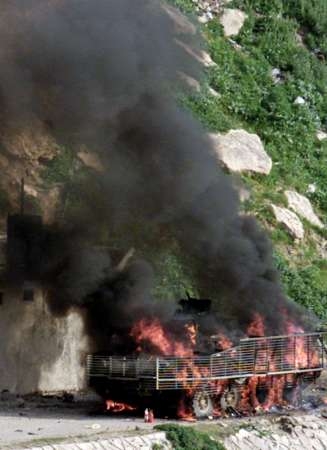
www.washingtonpost.com/wp-dyn/articles/A14284-2005Mar30.html
Study Faults Army Vehicle
Use of Transport in Iraq Puts Troops at Risk, Internal Report Says
By R. Jeffrey Smith
Washington Post Staff Writer
Thursday, March 31, 2005; Page A01
The Army has deployed a new troop transport vehicle in Iraq with many defects, putting troops there at unexpected risk from rocket-propelled grenades and raising questions about the vehicle's development and $11 billion cost, according to a detailed critique in a classified Army study obtained by The Washington Post.
The vehicle is known as the Stryker, and 311 of the lightly armored, wheeled vehicles have been ferrying U.S. Soldiers around northern Iraq since October 2003. The Army has been ebullient about the vehicle's success there, with Gen. Peter J. Schoomaker, the Army chief of staff, telling the House Armed Services Committee last month that "we're absolutely enthusiastic about what the Stryker has done."
But the Army's Dec. 21 report, drawn from confidential interviews with operators of the vehicle in Iraq in the last quarter of 2004, lists a catalogue of complaints about the vehicle, including design flaws, inoperable gear and maintenance problems that are "getting worse not better." Although many soldiers in the field say they like the vehicle, the Army document, titled "Initial Impressions Report -- Operations in Mosul, Iraq," makes clear that the vehicle's military performance has fallen short.
The internal criticism of the vehicle appears likely to fuel new controversy over the Pentagon's decision in 2003 to deploy the Stryker brigade in Iraq just a few months after the end of major combat operations, before the vehicle had been rigorously tested for use across a full spectrum of combat. The report states, for example, that an armoring shield installed on Stryker vehicles to protect against unanticipated attacks by Iraqi insurgents using low-tech weapons works against half the grenades used to assault it. The shield, installed at a base in Kuwait, is so heavy that tire pressure must be checked three times daily. Nine tires a day are changed after failing, the report says; the Army told The Post the current figure is "11 tire and wheel assemblies daily."
"The additional weight significantly impacts the handling and performance during the rainy season," says the report, which was prepared for the Center for Army Lessons Learned in Fort Leavenworth, Kan. "Mud appeared to cause strain on the engine, the drive shaft and the differentials," none of which was designed to carry the added armor.
Commanders' displays aboard the vehicles are poorly designed and do not work; none of the 100 display units in Iraq are being used because of "design and functionality shortfalls," the report states. The vehicle's computers are too slow and overheat in desert temperatures or freeze up at critical moments, such as "when large units are moving at high speeds simultaneously" and overwhelm its sensors.
The main weapon system, a $157,000 grenade launcher, fails to hit targets when the vehicle is moving, contrary to its design, the report states. Its laser designator, zoom, sensors, stabilizer and rotating speed all need redesign; it does not work at night; and its console display is in black and white although "a typical warning is to watch for a certain color automobile," the report says. Some crews removed part of the launchers because they can swivel dangerously toward the squad leader's position.
The vehicle's seat belts cannot be readily latched when troops are in their armored gear, a circumstance that contributed to the deaths of three soldiers in rollover accidents, according to the report. On the vehicle's outside, some crews have put sand-filled tin cans around a gunner's hatch that the report says is ill-protected.
Eric Miller, senior defense investigator at the independent Project on Government Oversight, which obtained a copy of the internal Army report several weeks ago, said the critique shows that "the Pentagon hasn't yet learned that using the battlefield as a testing ground costs lives, not just spiraling dollars."
Asked about the report, Army officials who direct the Stryker program said they are working to fix some flaws; they also said they were unaware of some of the defects identified in the critique. "We're very proud of the Stryker team," said Lt. Col. Frederick J. Gellert, chief of the Army's Stryker Brigade Combat Team Integration Branch in Washington, but "it hasn't been something that's problem-divorced."
According to the latest Army figures, 17 Soldiers in the Stryker combat brigade have died in Iraq in 157 bomb explosions, but no delineation is made for those who perished inside the vehicle and those who were standing outside it; an additional five soldiers have died in two rollovers. No current figure was provided for those who perished in grenade attacks, although one officer said he thought it was fewer than a handful.
Neither the lessons-learned report nor more recent Army data state how many Soldiers have been wounded while inside the vehicle. The report states that in one case, a Soldier was struck by shrapnel that penetrated both the vehicle's armor and his own body armor; in another case, an entire crew escaped with minor injuries after a vehicle sustained nine grenade hits.
The criticisms of the Stryker's first performance in combat seem likely to give new arguments to critics of the Army's decision in 1999 to move away from more heavily armored vehicles that move on metal tracks and embrace a generation of lighter, more comfortable vehicles operated at higher speed on rubber tires.
Senior Army officers in Iraq, like those at the Pentagon, have been surprised by the intensity of hostilities there since mid-2003, and lately some officers have said they depend on heavy armor to protect their Soldiers in urban warfare, even though tanks in Iraq have also suffered unexpected damage. But Maj. Gen. Stephen M. Speakes, the Army's director of force development, said that when he rode in the Stryker for the first time, he "marveled at how much nicer it was" than riding in a Bradley vehicle or an older troop transport, the M113 [Gavin], which he likened to being inside an aluminum trash can being beaten by a hammer. He said the Stryker was "amazingly smooth" and quiet by comparison.
In a report completed at the time of deployment, the Pentagon's operational test and evaluation office rated the Stryker vehicles sent to Iraq "effective and survivable only with limitations for use in small-scale contingencies." Congressional auditors at the General Accounting Office in December 2003 said the first brigade "did not consistently demonstrate its capabilities, indicating both strengths and weaknesses."
Independent groups and a loose-knit group of retired Army officers who dislike the Stryker vehicle have alleged that the Stryker's 2003 deployment was motivated partly by the desire of the Army and the manufacturer, General Dynamics, to build congressional support for buying additional brigades. But Speakes said that was nonsense and that the brigade was deployed in Iraq simply because the Army needed it.
Researchers Bob Lyford and Madonna Lebling contributed to this report.
www.detnews.com/2005/autosinsider/0504/01/D01-136048.htm
Report rips Army vehicle
Critics contend Michigan-made Stryker fails to protect Soldiers from blasts.
By Lisa Zagaroli / Detroit News Washington Bureau
WASHINGTON -- The Army's most modern troop carrier, the Stryker, has failed to adequately protect soldiers from certain explosive devices and has demonstrated problems ranging from seat belts that don't fit around armored Soldiers to tires that have to be replaced frequently, an internal Army report indicates.
The light armored vehicle, engineered in Sterling Heights by General Dynamics Land Systems and touted as the future of Army transportation, made its debut in Iraq over objections by some officials that it wasn't ready to be fielded.
Everything from the vehicle's communications technology overheating to the accuracy of its weapon systems were called into question in the report, published by the Center for Army Lessons Learned and made public Thursday by the Project on Government Oversight, a nonprofit watchdog group.
"It has several flaws and some challenges," said Eric Miller, defense investigator at the oversight group. "We were concerned that it wasn't tested well enough, it was kind of rushed through. When you send something like an armored vehicle into combat and it's not really tested, you kind of give Soldiers a false sense of security."
The Army report was based on interviews this fall in Mosul, Iraq, with the 3rd Brigade, 2nd Infantry Division, Stryker Brigade Combat Team.
A Pentagon spokesman defended the Stryker and said the report showed that the Army was willing to go in and retool after the development phase to make sure the vehicle works well in real-life situations.
"The reports we get from the field overwhelmingly is that the vehicle is performing in an outstanding manner," Lt. Col. Kevin Curry said.
"Soldiers say they appreciate the vehicle, they want to stay in that unit, they want to go back, and if they go back they want to go in that vehicle. You couldn't get a better stamp of approval or show of confidence."
Some of the issues in the Army report mirrored problems outlined by The Detroit News last July in a series of stories about military vehicle safety, which focused on inadequate safety features and poor driver training in the Army fleet.
The Stryker, previously known as the interim armored vehicle, is lighter than other troop carriers and reflects an Army shift toward a more mobile fleet. General Dynamics has delivered at least 1,000 Strykers to the Army, and more than 300 of them are now in Iraq.
During the vehicle's development stage, the armor on the Stryker was determined to be inadequate, so the Army had to develop a "bird cage" type assembly of armor slats that adds 3 feet to the vehicle's width, according to Globalsecurity.org, a nonprofit group that analyzes defense policy.
Soldiers had been assured that the slat armor would protect them from eight out of 11 rocket-propelled grenade attacks, but the actual experience in Iraq was that soldiers were harmed in half of such attacks because the shrapnel was able to penetrate the slats. The armor also deflected only half of attacks by high-explosive anti-tank rockets, the report said.
Curry said he didn't have official statistics, but that the actual success rate of the armor was much higher.
He said only one rocket-propelled grenade had penetrated enough to make the vehicle inoperable, and that attack came from above the vehicle.
Aside from not providing the protection it was designed for, the added armor cage also makes the vehicle more difficult to operate in rainy conditions, to transport by plane, and to tow away when it gets stuck or breaks down, according to the report.
"Slat armor significantly increases the circumference and weight of the Stryker, changing its performance," the report said. "Drivers did not receive any training on driving with slat armor until it was installed in theater."
The Stryker initially was touted as easy to maintain in part because it had tires that could be inflated and deflated with a control inside the vehicle, but having the extra armor cage forces the soldiers to do it manually because extra pressure is needed in them.
Crews have to check the tire pressure at least three times a day to maintain the proper pressure levels.
The single-ply sidewall tires were designed primarily for off-road use, but the Strykers are primarily being driven on hard pavement, leading to the brigade replacing about nine tires a day.
At least 24 crashes involving Strykers have been documented by the Army Safety Center.
In two rollovers, three unbelted Soldiers died. Their deaths didn't prompt more seat belt use because the troops couldn't latch them when they were wearing their body armor and other gear, the internal Army report concluded.
In a separate report by the Army Safety Center, accident investigator Sgt. 1st Class John Temple said he was investigating a Stryker rollover that killed two unbelted Soldiers and the brigade's soldiers told him he didn't have to wear his seat belt on the way to the accident site.
"I couldn't believe what I was hearing," he wrote in March for the Army's monthly safety magazine, Countermeasure. "There we were, driving to the site where two Soldiers died because they weren't wearing their seat belts, and someone told me I didn't need mine."
Other findings of the Center for Army Lessons Learned report include:
• A driver vision enhancement tool is too small and obscured by the steering wheel.
• New Soldiers are being assigned to drive the Stryker in the theater with all training occurring during on-the-job missions.
• Weapons can't shoot accurately when the vehicle is moving, and training doesn't include shooting while on the move.
• In one model, known as the Stryker Reconnaissance Vehicle, the vehicle commander doesn't have a weapon station and must stand on a step that is so high it leaves him vulnerable to attack.
Even the Stryker's horn has proven inadequate in traffic situations. The Army report suggested soldiers in Iraq replace it with a louder one purchased locally, and to help clear traffic, it recommended "throwing rocks at cars that don't get out of the way and use of local hand signals to show `slow down.'"
Curry said the comments show that these kinds of internal Army reports are "not sanitized."
"It pretty much captures anything and everything you can think about," he said.
"I can assure you everything is being addressed and has been addressed."
You can reach Lisa Zagaroli at (202) 906-8206 or lzagaroli@detnews.com.
EVEN PRO-STATUS QUO FOX NEWS BLASTS STRYKER TRUCKS:
VIDEO REPORT:
www.foxnews.com/video2/player.html?033105/usworld_striker_033105&FNL&Design%20Flaws&acc&U.S.%20%26%20World&-1&ram-300
www.combatreform.org/stryker.rm
www.foxnews.com/story/0,2933,152103,00.html
Army Reports Flaws in Stryker Troop Transport
Thursday, March 31, 2005
WASHINGTON - The Army says it has uncovered many problems with its newest troop transport, a combat vehicle first put into use in Iraq.
A study of the Stryker's performance in Iraq found numerous design flaws and other problems. For example, the 19-ton, eight-wheeled vehicle bogs down in mud and the engine strains when 5,000-pound armor is added to protect troops from insurgents' explosives.
The armor's extra weight also is causing problems with the Stryker's automatic tire pressure system, requiring crews to check tire pressure three times a day, according to a report from the Center for Army Lessons Learned.rom December that was made public Thursday by the private Project on Government Oversight.
"The Army should not put inadequately tested equipment in the field, as it creates a false impression that the troops are properly equipped to fight in combat," said Eric Miller, who investigates defense issues for the oversight group.
Maj. Gen. Stephen Speakes, director of Army force development, said the Stryker has been "extremely reliable" since it went into action in October 2003.
He said the effort to review performance and get suggestions from troops using the Strykers is "exactly what we in the Army expect" when deploying a new system.
"When we field a system it's never perfect," Speakes told Pentagon reporters Thursday after the report became public. Some of the problems will be fixed by the summer of 2006, he said.
There are 311 Strykers in Iraq. The $7 billion Stryker program is intended as a stepping stone to the ultimate goal: a high-tech family of fighting systems known as the Future Combat System, which is expected to include unmanned ground and aerial vehicles.
Stryker: Bad Icing (mental gadgets) on Bad Cake (physical truck)
www.fcw.com/article88445-03-31-05-Web_
"Army transformation changes direction" [FCW.com, Oct. 13, 2004]
BY Frank Tiboni
Published on Mar. 31, 2005
The Army should provide more training for Soldiers using digital technology in the Stryker infantry carrier, and improve speed and interoperability for certain systems, analysts say in a new report.
"Most S6 personnel received no specific training on the digital systems used by the brigade, yet the officers and Soldiers performed admirably despite this deficiency," said analysts at the Center for Army Lessons Learned (CALL) in a recently released 102-page report about Stryker Brigade Combat Team of 3rd Brigade, 2nd Infantry. Two of the six chapters in the CALL report focus on the performance of Stryker's command and control and digital systems. Soldiers from the 3rd Brigade of the 2nd Infantry Division, the Army's first Stryker Brigade Combat Team located at Fort Lewis, Wash., deployed to Iraq in late 2003. The 20-ton, eight-wheel vehicle; the computer systems in it; and the Soldiers operating them represent the Army's first attempt at transforming to a knowledge-based, rapid-deployable force -- a 10-year, $30 billion effort.
Analysts recommended that Army officials increase the speed and performance of Force XXI Battle Command Brigade and Below (FBCB2) system, which includes computer terminals that Soldiers can use in vehicles to access warfighting information and communicate with instant messaging. "The computer processor speed in FBCB2 is too slow, especially when large units are moving at high speeds simultaneously, which causes the FBCB2 to often lock up," analysts wrote.
The report's authors also found that the Army Battle Command System (ABCS) -- a network of 11 applications that provides warfighting data including intelligence, weather and artillery stocks -- could not talk to the Maneuver Control System (MCS), which is supposed to integrate ABCS with an overall system that gives commanders a common operational picture of the battlefield.
"ABCS components were not interoperable with MCS because of software shortfalls, mission environment and communications links," the report states.
CALL analysts also learned that the digital systems in Stryker often overheated in the desert. "Air conditioners should be added to the Stryker vehicles to prevent electronic overheating problems," they wrote.
Service officials plan to implement Version 6.4 of ABCS soon to serve as the new software baseline for the Stryker brigades, the 4th Infantry Division and all service units in upcoming years, an Army spokesman said. The new upgrade, scheduled for operational testing next month at Fort Hood, Texas, addresses the interoperability issues mentioned in the CALL report by changing software and architecture and using an automated information server, said Tim Rider, public affairs officer at Communications-Electronics Life Cycle Management Command, which oversees development, integration and maintenance of the Army's warfighting information technology.
A Stryker critic said the report justifies his years of skepticism on the vehicle and digital systems.
"Why are we spending billions on 'Mother, may I?' electronics to allegedly avoid the enemy that only overheat in overweight, wheeled Stryker trucks that cannot leave roads to stop being so easily blown up by the enemy?" asked Mike Sparks, a former Marine Corps officer and now a reservist who oversees Web logs and discussion groups on Stryker.
CALL analysts reported that the slat armor added to the vehicle to protect it against rocket-propelled grenades increased the Stryker's circumference and weight, changing its performance. They said the armor protected against some but not all rocket grenades.
[Editor: Keating is a consumate liar]
Pete Keating, spokesman for General Dynamics Land Systems business unit, which manufactures the Stryker vehicles, said they can travel off-road and not get blown up by the enemy. He said hundreds of Soldiers served safely in the vehicle and testified on Capitol Hill to Stryker's performance.
**********************************
www.fcw.com/article88456-04-01-05-Web)
BY Bob Brewin (mailto:bbrewin@101com.com)
Published on Apr. 1, 2005
More Related Links_ www.fcw.com/article88456-04-01-05-Web#related
A satellite communications system, which Army officials cobbled together from commercial components before the Army's Stryker Brigade Combat Team departed for Iraq last fall, emerged as the brigade's most valuable broadband tactical Internet asset, according to an Army study.
After an exercise last summer at Fort Irwin, Calif., Stryker leaders identified what the report from the Center for Army Lessons Learned (CALL) described as a data gap between the power of the brigade's automated systems and the limited digital transmission systems fielded to battalions within the brigade.
The low data rate of the brigade's Near Term Digital Radio technology caused this bottleneck, according to the report, because it "was incapable of transmitting the volume of digital traffic at an acceptable speed and with reliability to the battalions." Members of the Stryker Brigade Combat Team, 3rd Brigade, 2nd Infantry Division worked last summer with officials at the Army Battle Command Lab in Fort Gordon, Ga., and the Program Executive Office for Command, Control and Communications Tactical to develop a satellite-based, high-speed network system for the brigade, the CALL study stated.
Within 90 days, the three organizations developed and fielded a broadband communications system, the Initial Ku Satellite System (IKSS) which has an aggregate throughput of 7 megabits/sec, according to the CALL report.
IKSS hardware, integrated by Data Path, consists of 11 satellite terminals with 1.5-meter dishes operating via a commercial satellite link and two master reference terminals equipped with 2.4-meter dishes that control the satellite terminals.
Each of the satellite terminals has a Cisco Systems Model 3725 router, Cisco Model 1760 router to provide virtual private network communications and a KG-175 TACLANE bulk encryption device from General Dynamics to support Internet-based data communications. Users could set up the gear in roughly 45 minutes, the CALL study stated.
Besides providing broadband data from brigade to battalions, the IKSS also supported voice-over-IP traffic, with each of the satellite terminals supporting four voice-over-IP phones. Despite a rapid procurement and deployment, that commercially based package "significantly improved the speed and reliability" of communications for the Stryker team, CALL analysts found.
Though IKSS is not a standard Army system, the CALL report concluded that it "has been the biggest [command and control] force multiplier [for the brigade] and has demonstrated a capability that must be included for all follow-on [Stryker brigades] as signal transformation infrastructures."
****************************************
www.fcw.com/article88462-04-01-05-Web)
Stryker drivers yearn for color
BY Bob Brewin (mailto:bbrewin@101com.com)
Published on Apr. 1, 2005
There's probably not a soldier in the Army today who grew up watching a black-and-white TV set, but crews of the Stryker armored vehicle have to rely on black-and-white displays connected to their remote weapons stations, according to an internal Army study.
In a recent report by the Center for Army Lessons Learned (CALL) on the Iraqi operations of Stryker Brigade Combat Team, 3rd Brigade, 2nd Infantry, analysts found that crew members of the Stryker vehicles built by General Dynamics were frustrated by the black-and- white remote weapons station screens.
"It is difficult in urban environments to communicate colors of vehicles without color" screens, the report states. Other display systems in the Stryker suffer from poor design, the CALL report states. The sensor for the Stryker's Driver Vision Enhancer (DVE) is mounted in the center of the vehicle, even though the driver sits on the left. This requires a period of time for drivers to adjust to the centered view presented and makes it more difficult to drive the wheeled combat vehicle, CALL analysts concluded.
Also, the driver's DVE screen is too small and poorly located behind the steering wheel, making sharp turns difficult, and the wheel sometimes obscures parts of the screen, the CALL report states. A heads-up display provided to the vehicle commander also suffered from design problems, the report states. Break-away pressure for the helmet-mounted display was too high "and could cause neck injury if it gets caught on something and does not pull off," according to the CALL report. It also states that the display was not useful in an urban environment because it caused a blind spot to the vehicle commander's vision.
www.fcw.com/article88462-04-01-05-Web
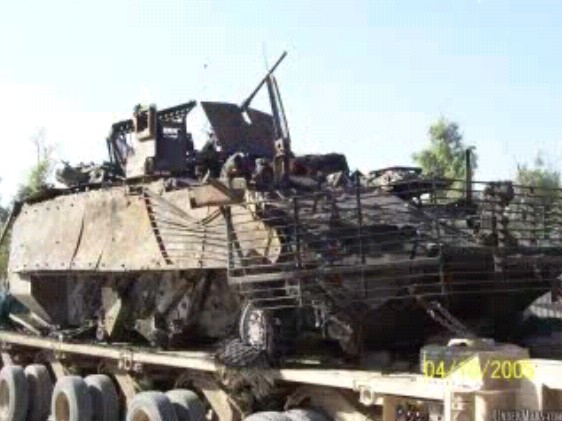
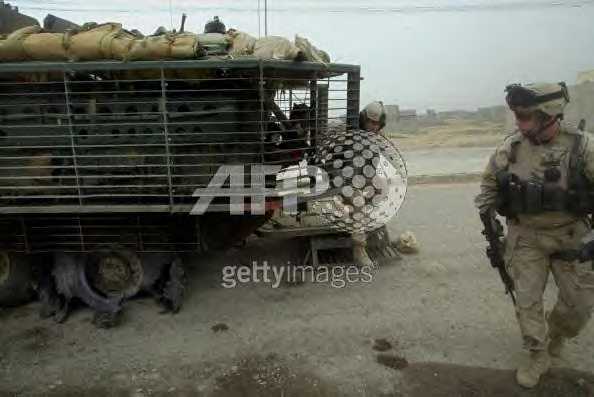
EXCLUSIVE VIDEOS!
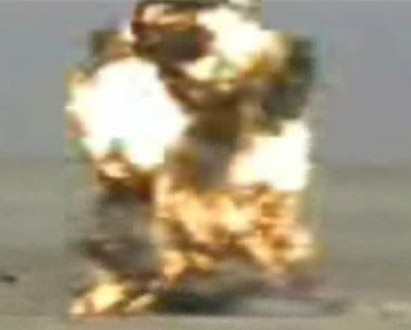
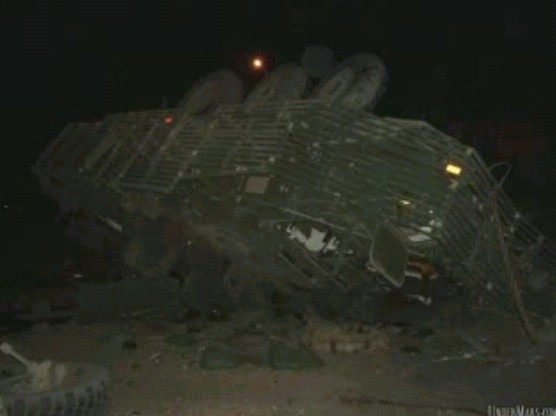
No-Go Terrain For Stryker: Video Clip of Real, Urbanized World We live in, not Fantasy one of Army mouse-clickers
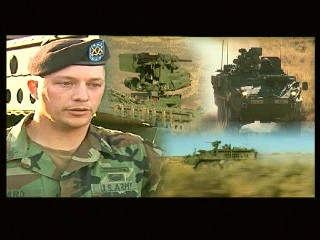
Stryker Propaganda Video Backfires: Shows the truck's many failures! www.combatreform.org/strykerpropagandacorrected.wmv
P.S.: Why are U.S. Army Soldiers on camera endorsing a company's product? Isn't this ILLEGAL?
Corporate Greed: GDLS makes $BILLIONS while troops die in their Stryker junk; former Army VCSAs General Heebner becomes President of Land Systems; other retired Generals Keane, Abrams and Colonels like Keating line their pockets while our men lose limbs
FORMULA:
GDLS $ + GENERALS DECIDE TO BUY STRYKER TRUCKS =
DEAD AND MAIMED SOLDIERS AND RICH GENERALS
BRASS CASHING IN WITH STRYKER:
David Heebner just got promoted to president of GD Land Systems. His waiting out the revolving door law must be up. Bet it was the plan all along.
General Dynamics Corporation (ticker: GD, exchange: NYSE)
General Dynamics Appoints Charles M. Hall as Group Executive of Combat
Systems; David K. Heebner Named President of General Dynamics Land
Systems; Phebe N. Novakovic Promoted to Senior Vice President - Planning
and Development
FALLS CHURCH, Va. - General Dynamics (NYSE: GD) today announced that
Charles M. Hall, president of General Dynamics Land Systems, will
succeed Arthur J. Veitch as executive vice president and group executive
of the corporation's Combat Systems group when Veitch retires in June.
In addition, David K. Heebner, senior vice president - planning and
development, will succeed Hall as president of General Dynamics Land
Systems. Phebe N. Novakovic, vice president of strategic planning, will
replace Heebner as senior vice president - planning and development.
The appointments are effective July 1.
Nicholas D. Chabraja, General Dynamics chairman and chief executive
officer, said, "Art Veitch has been a loyal and trusted contributor to
General Dynamics for nearly 40 years. His professionalism and
dedication to General Dynamics will be missed. We wish him well in his
retirement."
"At the same time, we are pleased to welcome Charlie Hall, David Heebner
and Phebe Novakovic to their new leadership positions," Chabraja
continued. "Charlie, like Art, has expertise in the intricacies,
challenges and opportunities facing the Combat Systems group, and his
understanding of the complexities of defense manufacturing will benefit
the entire corporation. David, who had a distinguished career with the
U.S. Army and has demonstrated great insight into the trends that are
transforming the defense industry, and Phebe, who has ably established
her leadership capabilities and grasp of the strategic challenges facing
our industry, will continue to help set the path forward for General
Dynamics."
Hall, 54, has been president of General Dynamics Land Systems since
Sept. 1999. He previously was vice president - production and delivery
at the Land Systems unit, where he was responsible for the performance
of all of the company's production facilities. Hall joined General
Dynamics in 1973 and served in a variety of increasingly responsible
production- and manufacturing-management positions before becoming a
vice president.
Heebner, 60, became senior vice president - planning and development in
March 2002. He had been vice president of strategic planning for
General Dynamics since January 2000. Prior to joining General Dynamics,
Heebner served 33 years in the U.S. Army, retiring at the rank of
lieutenant general.
Novakovic, 47, was elected a vice president of the corporation in Oct.
2002. She joined General Dynamics in May 2001 as director of strategic
planning and development and was named staff vice president - strategic
planning in May 2002. Previously Novakovic was special assistant to the
Secretary and Deputy Secretary of Defense, and had been a deputy
associate director of the Office of Management and Budget. No successor
has been named for Novakovic.
The General Dynamics Combat Systems group comprises General Dynamics
Armament and Technical Products, Charlotte, N.C.; General Dynamics
European Land Combat Systems, Vienna, Austria; General Dynamics Land
Systems, Sterling Heights, Mich.; and General Dynamics Ordnance and
Tactical Systems, St. Petersburg, Fla. The group is a leading supplier
of tracked and wheeled armored combat vehicles, armament systems and
munitions to customers in North America, Europe, the Middle East and the
South Pacific. These units employ approximately 15,400, and generated
net revenue of $4.4 billion in 2004.
General Dynamics Land Systems, headquartered in Sterling Heights, Mich.,
designs, builds and supports a full-spectrum of land and amphibious
combat systems, subsystems and components for U.S. and international
customers. The business has approximately 6,900 employees worldwide and
is the defense industry's largest supplier of armored military
vehicles.
General Dynamics, headquartered in Falls Church, Virginia, employs
approximately 70,100 people worldwide and had 2004 revenue of $19.2
billion. The company is a market leader in mission-critical information
systems and technologies; land and expeditionary combat systems,
armaments and munitions; shipbuilding and marine systems; and business
aviation.
# # #
Any "forward-looking statements" contained in this press release are
made pursuant to the safe harbor provisions of the Private Securities
Litigation Reform Act of 1995. For more information, see
GDLS MAKING $$$$ BILLIONS IN PROFITS
www.nytimes.com/2005/05/12/business/12cash.html?
May 12, 2005
Arms Makers Find Being Cash-Heavy Is Mixed Blessing
The nation's military contractors are awash in cash, which is making their shareholders happy and pushing their stocks to new highs. Less happy, however, is the Pentagon, which is the source of much of that cash and may now want something in return.
At the moment, about $25 billion to $30 billion is sitting in the coffers of the top military contractors, a result of record Pentagon budgets and robust government spending on homeland security.
"This is a politically sensitive issue," said Byron Callan, an industry analyst at Merrill Lynch. "The companies have got to keep shareholders happy. But there is a political reality. If companies take this cash and give shareholders a big dividend, the Pentagon might say, 'Help us with that new fighter program.' "
Of course, companies in many other industries are also enjoying a cash surplus. But what sets military companies apart is that they are either partly, or nearly fully, indebted to the government for their revenues.
The large cash reserves, first reported in the industry publication, Aviation Week and Space Technology, pits two powerful interests against each other: Wall Street, which sees the money as a just reward for shareholder support and corporate risk-taking, and the Pentagon, whose spending has fueled the cash boom.
Shareholders in military companies, quite naturally, would like to see the money spent on bigger dividends and stock repurchases, which would make them richer and help push the stocks even higher. The Pentagon would rather see the companies spend more on basic military research and further acquisitions that would streamline the industry even more.
"Returns to shareholders seem to be a red flag," said Richard Aboulafia, a military analyst with the Teal Group, an aerospace consulting firm in Fairfax, Va. "Acquisitions are more acceptable to the Pentagon as is spending the money on new product development. A lot will depend on the political winds."
Also contributing to this cash buildup is the fact that at the urging of the Pentagon, the military industry underwent a wave of mergers over the last decade that reduced industry capacity and left the survivors more efficient. With fewer companies to share the growing Pentagon spending, each company has ended up with more.
"Everyone sees all this cash generation," said Pierre Chao, a military analyst at the Center for Strategic and International Studies, a Washington nonprofit research group that studies military policy. "The political danger is that it attracts a lot of attention. Military contractors are getting to be efficient and this could punish them for being good at something."
At the moment, companies in many other industries are also flush with cash. At the top of the list is Exxon Mobil, which has $25 billion in cash on hand and is facing growing demands to spend some of that money on fatter dividends and more oil exploration.
In high technology, Microsoft has long had the biggest cash pile. Last year, it dipped into a $50 billion-plus cash account to give shareholders a one-time bonus of $3 a share, totaling $32 billion.
But military companies are different. So tight are the ties between military contractors and the Pentagon that it is often difficult to determine where one ends and the other begins. And the cash surpluses come as the Pentagon must repeatedly go to Congress to pay for the war in Iraq as well as finance expensive weapon systems for the future.
Already, some in Washington have taken notice - and responded. Senator John McCain, the Arizona Republican who has long clashed with both the Pentagon and the industry, recently pushed through changes in contracts for two major weapons systems, the $100 billion Future Combat System and the $4 billion C-130J cargo plane, to provide for greater oversight of industry profits.
In addition, the high level of anticipated profit for a $23 billion aerial tanker lease program proposed by Boeing was one reason that deal was scuttled late last year.
Michael W. Wynne, the acquisition chief for the Defense Department, said that while "we do not encourage companies to work for us below cost," he would like the Pentagon to benefit from some of the cash.
"The only concern here, and it is a large one, is that the companies have an apparent negative view that investment within the defense sector for independent research and development on new products is not better than holding cash," Mr. Wynne said.
Michael Goldberg, an industry analyst at Bain & Company, a consulting firm, estimated that the industry had $25 billion to $30 billion in cash reserves. He estimated that European military contractors, many doing business with the Pentagon, have another $15 billion to $20 billion.
In 1998, the Defense Department's procurement budget - the amount it spends on weapons -fell to $48 billion from $82 billion just six years earlier. Over the same period, a merger wave reduced the industry to a handful of big players.
Then, just as the mergers ended, the 9/11 terror attacks occurred, setting off a big rise in government spending for security, both military and civilian. At the same time, many mature weapons systems, like the F-16 fighter jet and C-17 cargo plane, were turning into cash cows. Also, expensive new weapons systems, which require tremendous start-up investments by the companies, were pushed further into the future, freeing up more cash today.
On top of that, billions were spent on homeland security, much of it going to the major military contractors.
The Pentagon procurement budget for the current year is $78 billion. Lockheed Martin, the leading military contractor, whose revenues have risen by $11.5 billion since 2001 to reach $35.5 billion last year, has $2.7 billion in cash on hand. This compares with $455 million in cash at the end of 2000. In the last few years, the company has eliminated all its short-term debt, cut $5 billion from its long-term debt, repurchased its shares and increased its dividends.
Cash is building up so quickly at Lockheed that the company says it plans to return about half of its cash flow to shareholders as dividends or in the form of stock buybacks, which help increase the stock price.
The brokerage firm Jefferies & Company, in a recent report, estimated that without this repurchase plan, Lockheed would have a cash balance of $4.9 billion by the end of 2006.
Despite the swelling accounts, Howard A. Rubel, an analyst at Jefferies, said it would be both unwise and risky for the Pentagon to reach for this cash. He said these companies were subject to the whims of Congress and the Pentagon, either of which could slash a military project as quickly as to finance one.
"If I take the risk I deserve to be compensated for it," Mr. Rubel said. "The government wants to turn on them for doing a good job."
Like Lockheed, Northrop Grumman, with $1.2 billion in cash on hand, has used its money to cut $4 billion from its debt. General Dynamics now has $1.1 billion in cash, up from $270 million in 2000.
Boeing, the No. 2 Pentagon supplier, has about $6.5 billion in cash. While a big share of its business is building commercial airliners, the company recently reported a rise in anticipated revenue from its military division, to $32.5 billion. Profit margins on its military business exceeded 11 percent in the first quarter of 2005.
James F. Albaugh, who leads Boeing's military business, said, "Our machine is running well."
Mr. Albaugh added that, over time, Boeing had been doing what it could to help the Pentagon, its largest customer by far, through cost reductions, especially on mature weapons systems. The current profitable situation, he said, contrasts with years of slim margins. "On every contract that we negotiate, our customer tries to drive costs down," Mr. Albaugh said. "If we perform well, we make good margins. If not, we don't."
TROOPS DIE IN STRYKER TRUCKS
www.strykernews.com/archives/2005/05/10/sfc_michael_bordelon.html
May 10, 2005
SFC Michael Bordelon
Family members have confirmed the death of SFC Michael Bordelon. SFC Bordelon, 37, of Louisiana, died today at Brooke Army Medical Center in San Antonio, Texas. He died of injuries sustained when a vehicle-borne improvised explosive device detonated near his Stryker military vehicle in Mosul, Iraq, on April 23. SFC Bordelon was assigned to the 1st Battalion, 24th Infantry Regiment, 1st Brigade, 25th Infantry Division (Stryker Brigade Combat Team), Ft. Lewis, WA.
Our thoughts and prayers are with his family, friends, and fellow soldiers during this difficult time. We will add any subsequent articles we find to this entry.
www.daily-review.com/index.php?id=1034&tbl=news
Morgan City Daily-Review
First war fatality confirmed
St. Mary Parish's first Iraq war fatality has been reported.
1st Sgt. Michael Bordelon, a 1986 graduate of Patterson High School, died today at 1:25 a.m. at Brook Medical Center in San Antonio, Texas, of injuries sustained in a roadside bomb attack on an Iraqi convoy, according to friends of the family.
Bordelon, 37, originally was flown to Germany for treatment of injuries sustained in the Saturday, April 23, attack.
Media reports stated that a roadside bomb hit an Iraqi army convoy in Mosul, wounding three soldiers. One of them, according to Bruce Bordelon of Bayou Vista, the first sergeant's father, was his son, Mike.
Local sources who followed the Soldier's recovery efforts said Bordelon, who was serving his second tour of duty in Iraq, sustained third-degree burns and internal injuries in the attack.
"He stayed in his (Stryker combat) vehicle until all his men were safe," said one friend, Sal "Sammy" Russo of Morgan City, who employs Bordelon's sister.
Bordelon was serving in the 1st Battalion, 24th Infantry Regiment, Bravo Company, based at Fort Lewis, Wash.
Bordelon also is survived by his wife, Mila, and children, Mike Jr., Jacob and Johanna; his mother, Dolores, of Bayou Vista; a sister, Doreen Scioneaux of Morgan City; and three nieces and nephews.
Sources close to the family said Bordelon's body will be flown from Texas to the Harry P. Williams Memorial Airport in Patterson in preparation of memorial services at Ibert's Mortuary in Patterson.
The date and time of those services have yet to be set.
He will be buried in Arlington National Cemetery in Washington.
Gene Bosworth, a member of the St. Mary Detachment, marine corps league, said this morning that all local veterans organizations were on standby for any escort or other assistance necessary.
He said he was especially interested in initiating some sort of fund to assist Bordelon's widow and children.
While this is the first confirmed death of a St. Mary Parish Soldier in Iraq, the death toll for members of the U.S. military that have died since the beginning of the Iraq war in March 2003 is nearing 1,600, according to The Associated Press.
During his term at PHS, Bordelon was an all-district performer on the Lumberjack football squad.
One of his teachers, Evelyn Estay, said his friends used to call him "Rocky" because his physical features resembled those of Sylvester Stalone's.
"He was a great person," she said. "All of us here are saddened by the news."
Carry on my wayward son
Once I rose above the noise and confusion
Though my eyes could see I still was a blind man
Carry on my wayward son
Masquerading as a man with a reason
On a stormy sea of moving emotion
Carry on my wayward son
No!
Carry on, you will always remember
Stryker: Why I learned to stop worrying and love roadside bombs
www.combatreform.org/strykeriseasytomaintaininacombatenvironment.wmv
The Human Costs of the Stryker: while Army officers lie in public about how such a "success" these wheeled deathtraps are
4 Soldiers killed, 2 seriously wounded as Strykerrrr truck is blown up by rebels in Iraq
www.thenewstribune.com/news/updates/v-lite/story/4827235p-4436988c.html
Stryker Brigade Soldiers killed in Iraq
MICHAEL GILBERT; The News Tribune
Two Fort Lewis Soldiers and two others from Fort Carson, Colo., were killed when their Stryker vehicle was hit by a roadside bomb Thursday in Tal Afar, Iraq, the Defense Department said Monday.
The Soldiers were identified as Lt. William A. Edens, 29, of Columbia, Mo., and Sg. Eric W. Morris, 31, of Sparks, Nev. They were assigned to the 1st Battalion, 5th Infantry Regiment, a part of the 1st Brigade, 25th Infantry Division.
The two Fort Carson Soldiers were identified as Spc. Ricky W. Rockholt Jr., 28, of Winston, Ore., and Pfc. Robert W. Murray Jr., 21, of Westfield, Ind. Both were assigned to the 2nd Squadron, 3rd Armor Cavalry Regiment.
A 1st Brigade spokesman, Capt. Duane Limpert, said the two Fort Carson Soldiers are part of a contingent from the 3rd Armor Cavalry Regiment that's recently arrived to help the brigade's units cover northwestern Iraq. The 1st Brigade's Soldiers have been taking the new arrivals on missions to familiarize them with the area, he said.
Two other Soldiers were wounded in the attack. Limpert said he had no information about their condition; they were evacuated to military hospitals elsewhere, he said.
http://www.timescommunity.com/site/tab5.cfm?newsid=13966101&BRD=2553&PAG=461&dept_id=511692&rfi=6">www.timescommunity.com/site/tab5.cfm?newsid=13966101&BRD=2553&PAG=461&dept_id=511692&rfi=6
Sky weeps for a son of Great Falls
Under the gray monotony of a weeping sky, Army Sgt. Stephen Sherman was buried in a silver casket at Arlington National Cemetery on Monday. It was Valentine's Day.
Sherman was killed in action in Mosul, Iraq, on Feb. 3, when an improvised explosive device (IED) exploded under his Army Stryker vehicle.
Just before his funeral began at 1 p.m., another sergeant from "1-5 Bobcat, Charlie Company, Headquarters Platoon," Sherman's Army Stryker unit, presented his mother, Bernadette Sherman, with the dog tags Sherman was wearing when he died.
Sgt. Michael Buyas had lost both legs on Dec. 23, "Christmas Eve eve," also when an IED exploded beneath his Stryker vehicle. "I was blown up from the bottom of the Stryker, as far as I can surmise," Buyas said.
He was ejected from the vehicle and lost both legs-one above the knee. But "I remember nothing" before waking up at Walter Reed Hospital on New Year's Eve, where he is now in rehabilitation, Buyas said.
The IEDs that struck both Strykers were probably mixed from plastic explosives and rocket fuel, a concoction that made his job in Iraq much more difficult, Buyas said.
At first, he said, "I felt invincible" in his Army Stryker.
"My whole time in Iraq was a bunch of near misses. I was feeling pretty invincible. No one ever hit us." But then the enemy "started loading bigger IEDs."
Sherman was the first fatality in their Stryker unit, Buyas said. "I was with him for a long time before we came to Iraq," said Buyas, now recovering at Walter Reed Hospital.
He described Sherman as "a great guy, very intelligent and very smart. He was a good Soldier, too. He got his E5 very, very fast, 19 months. Less than two years. We couldn't think of one person that didn't like Steve Sherman," Buyas said.
"I wish he could have made it. He could have come and saw us, and we could have helped him heal up.
"He definitely did not deserve to die, that's for sure. He was a good Soldier, a good buddy, a good friend."
Buyas watched from a wheelchair pushed by his wife, Carrie, as six Soldiers in dress uniforms removed Sherman's casket from the hearse and the Army band played the "Going Home" theme from Dvorak's "New World" symphony.
About 150 mourners walked silently, some carrying umbrellas, others allowing cold raindrops to fall on their faces. Later, as a 21-gun salute sounded and Sgt. 1st Class Christian Hinkle of Mt. Airy, N.C., played "Taps" on his bugle, raindrops mixed with tears.
Father Brian T. Butch, parish priest from Holy Innocents Catholic Church in Neptune, N.J., and a graduate of George Mason University, conducted the service.
Deacon Lee Trammell of St. Michael's in West End, N.J., offered a prayer for the hungry and impoverished people in the world, "especially the Iraqi children who Stephen loved so dearly."
In his eulogy, Dick Sherman of Great Falls recalled his son's self-effacing manner and love for popular culture icons such as Will Ferrell of "Saturday Night Live." The younger Sherman loved music, played guitar and made CDs to help his father appreciate contemporary music.
But, if his son could speak, he would say, "Don't make such a fuss over me," Dick Sherman said.
His mother, Bernadette Sherman, received the folded American flag from her son's casket that had been protected from the rain with clear plastic until it was placed under cover at graveside.
Then, Sgt. John Nash, of Florida, touched Sherman's coffin with one corner of a second flag that was folded into a triangle; it was presented to the Soldier's father.
Posthumous Bronze Stars and Purple Hearts were presented to Sherman's parents, and an Army general expressed condolences.
In keeping with tradition, an unidentified "Arlington lady," the wife or widow of a military person who represents the chief of staff "and the Army family," spoke to each of the parents before she was escorted away by a uniformed officer.
The lengthy funeral procession had crept along Bradley Drive to York Drive where a newly opened section of graves has marble markers with the inscription, "Operation Iraqi Freedom."
One grave was also adorned with a small white ceramic tile with a child's handprint in pink: "A person's spirit lives as long as someone is alive that remembers him. I love you, Daddy," read the inscription by Mallory Hugger. Her father, 26-year-old Staff Sgt. Jamie L. Hugger, died on Oct. 26, 2003.
After the mourners left, one tall slender figure in a navy overcoat with brass buttons moved slowly from one marker to the next, reading each name.
Lt. Matthew Bovia, a Navy helicopter pilot from Manasquan, N.J., is stationed in Norfolk but drove to Arlington Cemetery on Monday to attend Sherman's funeral. His hometown is near Sherman's home in Neptune, and he came after his mother e-mailed him the news that a man from their area had died in Iraq.
"It is my way of saying 'thank you' and paying my respects," said Bovia, who just returned from his first tours of duty in the Persian Gulf and is "up for the second."
He observed that the dates engraved on the grave markers are "so recent, especially their birth dates," Bovia said. But visiting the graves, he said, gives him "a distinct sense of pride and thankfulness for what they've done."
Lt. Col. Kenneth L. Kerr, Arlington's senior Army chaplain, said a military burial with honors in Arlington National Cemetery has honored the nation's fallen patriots for 150 years. "It is because of their sacrifice that we are, and remain, free," he said.
As Sherman was laid to rest, two other funerals were under way nearby. Army drummers marched to one of the graves; a caisson pulled by white horses led mourners to the other.
But both those funerals marked the endings of long lives, fully lived, Kerr said. "When someone is 25 years old, they are part of that defense of freedom, but it is just so tragic, every time," he said.
www.thenewstribune.com/news/military/stryker/story/4611643p-4284950c.html)
Stryker Soldier dies in bombing
MICHAEL GILBERT; The News Tribune
Last updated: February 19th, 2005 02:35 AM
Sgt. Frank B. Hernandez, 21, a Stryker brigade Soldier from Phoenix, died Thursday afternoon after a roadside bomb blew up near his vehicle in Tal Afar, Iraq, the military said Friday.
Hernandez was with the 2nd Squadron, 14th Cavalry Regiment, which is part of the 1st Brigade, 25th Infantry Division.
He was serving his second tour in Iraq since joining the Army in January 2002, a spokesman at Fort Lewis said.
He's the second 1st Brigade Soldier to die in as many days as insurgent violence has flared once again in northern Iraq.
Sgt. Adam Plumondore, 22, of Gresham, Ore., was killed Wednesday when a car bomb blew up near his Stryker in Mosul.
Another U.S. Soldier, Sgt. Christopher Pusateri, 21, of Corning, N.Y., was also killed Thursday in Mosul. He was with the 82nd Airborne Division from Fort Bragg, N.C.
Task Force Freedom, the headquarters for U.S. troops in northern Iraq, released little information about Thursday's events.
The Tal Afar attack that killed Hernandez occurred about 2 p.m. Iraq time, or 3 a.m. PST, the task force said in a news release. One other Soldier was wounded and taken to the military hospital in Mosul.
As for the other attack, the task force said only that it occurred in Mosul about 5 p.m. Iraq time, or 6 a.m. PST, and that the Soldier was killed by small-arms fire.
Neither news release indicated whether U.S. forces were able to shoot back at their attackers.Hernandez arrived at Fort Lewis last July from Fort Stewart, where he was assigned to the 1st Battalion, 64th Armor Regiment.
The tank battalion led the famed "thunder run" raids into Baghdad in April 2003.
Hernandez is the 19th serviceman from the 1st Brigade to die since the brigade went to Iraq in October, and the 46th from Fort Lewis to die in Iraq.
www.pogo.org/p/defense/do-041101-stryker.html
Despite a critical need to get more armored vehicles to Soldiers engaged in the toughest guerrilla clashes in Iraq, the U.S. Army last year chose instead to deploy its first Stryker armored vehicle brigade to one of the country's more relatively calm, remote regions.
Why? Retired Army Col. Douglas Macgregor thinks he knows the answer. He believes the deployment plan is by design because the Pentagon knows the Stryker is a flawed weapon.
"The Army's senior leadership wisely decided to keep the Stryker brigade remote from the scene of the action in central Iraq, where the lethal quality of close combat might inflict serious casualties on it," he told a congressional subcommittee in July.
Macgregor, an independent defense consultant and former director of the Supreme Headquarters Allied Powers Europe's Joint Operations Center for two years until December 1999, is so convinced that the Stryker is a bad choice for the street fighting in Iraq that he recommended the Army not be permitted to buy the last two of the six planned Stryker brigades. Instead, the Pentagon should spend procurement dollars on more promising technologies, he said.
Macgregor told the House Armed Services Committee on July 15 that Stryker lacks not only the joint command, control, communications, computers, intelligence, surveillance and reconnaissance connectivity it needs to operate independently, but also the "firepower, protection, mobility and organic logistical support to be a full-dimensional war-fighting organization, and its operational utility will continue to be limited to peace support or paramilitary police operations."
Macgregor has not been alone in his criticism of the Stryker, an eight-wheeled, 19-ton armored vehicle touted as the first high-tech installment in the Army's fighting force of the future. The Government Accountability Office (GAO) said in a recent report that it barely fits in a C-130 cargo aircraft, can't always defend against a rocket-propelled grenade or a roadside explosive device, and takes too long to get to the battlefield - if it even makes it to the battlefield.
In a high-altitude country like Afghanistan, a C-130 transport may not even be able to take off with a Stryker in its belly, the GAO said.
So why are the Army and Congress in a rush to fund, build and deploy the last two Stryker brigades?
Although it has yet to see extensive battle action, five Soldiers have been killed in Stryker rollovers, another by an exploding grenade, and in mid-October a Soldier was killed when an improvised explosive device exploded near the vehicle. A few Strykers have been gutted by fires resulting from roadside bombs or rocket propelled grenade hits.
At $4 million a copy and rising, according to a GAO report, the Stryker has become a new poster child for bad weapon development. Like an increasing number of military weapon systems, the Stryker was deployed before first being thoroughly tested in near-realistic battle conditions.
Late last year, over the objections of the Pentagon's top independent tester, the first Stryker brigade was deployed to Mosul, Iraq. Nearly a year later, there is little public discussion or objective evidence as to whether the Stryker is performing up to its expectations.
The Stryker is one in a string of new weapons - the C-130J and an Alaskan national missile defense system are others - that represent a new Pentagon "capabilities-based" or "spiral" development philosophy that basically comes down to this: Aim high, spend a lot of money, but take whatever the defense contractor gives you and rush it to the battlefront.
The taxpayers and our fighting men and women are the losers in this perilous new way of doing business.
Thomas Christie, the Pentagon's director of operational test and evaluation, said as much in his most recent annual report, dated February. First, he warned his boss, the secretary of defense, that the Stryker was not ready for prime time, because he could not guarantee that Soldiers inside Strykers would survive rocket-propelled grenade hits. He also singled out the Stryker as an example of a trend in which the military services are committing fewer and fewer resources to test and evaluate their weapons.
In December 2000, a special committee of the Pentagon's Defense Science Board emphasized the need to adequately test a weapon system before it goes into combat.
"The committee believes that the Department of Defense has no greater duty than to ensure that the weapons systems that it puts in the hands of our Soldiers, sailors, airmen and marines will operate as intended in combat situations," said a December 2000 report from that committee. "Adequate testing of weapons systems is not an abstract concept: Lives depend upon it."
Lives are at stake, yet program managers increasingly complain that they spend too much time and money testing new weapons. Indeed, Christie also said in his annual report that the Stryker's operational evaluation - a test of how a weapon works in simulated battle conditions - was conducted jointly with training exercises. That meant "test objectives often compete with training objectives," he wrote.
The bottom line, Christie said, is that American and allied fighting men and women may be going to war with weapons without knowing their capabilities and limitations.
Nonetheless, the U.S. Army has been speaking glowingly of the Stryker's performance in Iraq, but providing little proof.
In e-mails from troops stationed in Iraq, the criticisms are numerous: The Stryker has too many blind spots looking out from the inside, the 5,000-pound "bird cage" armor makes it top heavy and prone to rollovers, it breaks down too often and chews up tires at an uncommon rate, and doesn't yet come mounted with a much-touted big mobile gun system.
Cost is a factor, too. Only a few months ago, the Army was saying that the $7.8 billion will buy 2,100 Strykers, but the latest count has declined to just over 1,800. Yet the 2005 Defense Appropriations bill authorizes more Stryker purchases.
Isn't this a little like a parent signing their child's report card before the grades are filled in by the teacher?
Eric Miller is a senior defense investigator with the Project On Government Oversight, a nonprofit, nonpartisan, Washington-based watchdog group.
Stryker Dead
Notice that more Soldiers have died in 300 Strykers with all kinds of armor slapped onto them at the cost of millions of dollars than have died in 1,700 "vanilla" applique' armor-neglected M113 Gavins in Iraq. Stryker trucks constitute less than 2% of all the vehicles in Iraq yet they have so far suffered over 4% of the dead. Is this a "success" story? For the enemy, maybe not for America. Pointing out that these Strykerrrr deathtraps should be withdrawn from service is not being Patriotically Incorrect, its NECESSARY to save the lives of our men who deserve to be in better protected tracked AFVs.
American Iraq War Casualties Report v1.0 (to December 31, 2004)
www.geocities.com/militaryincompetence/americaniraqwarcasualties.htm
EXCERPT:
There are over 130,000 troops in Iraq, while most drive in 12,000 Humvee trucks, the lucky ones move in about 500 M1 Abrams 70-ton heavy, M2 Bradley 33-ton medium and 1, 700 M113 Gavin 11-ton light tracked armored fighting vehicles. DoD/Army refuses to properly up-armor the tracked AFVs lest they be too successful. There are about 300 x 19-ton Strykerrrr (LAV-3) and 100 x 14-ton LAV-1 (USMC) rubber-tired armored trucks in Iraq at any given time. Don't let the weights of these thinly skinned trucks fool you--its composed primarily of drivetrains, suspensions and oversized box that has to fit on top of this conglomeration of fragile moving parts and 8 wheels with 8 air-filled rubber tires--NOT armor protective thickness. Out of 15,000 ground vehicles, LAVs constitute less than 2% of all the ground vehicles in Iraq, yet they contributed to 4% of all Soldiers/marine deaths indicated by the * in the death narratives, almost twice the death rate ratio for their low numbers.
USMC LAV-1 dead 22
Despite slapping $ Billions of dollars of mental computer aids to try to skirt around enemy contacts and extra armor, Humvee and LAV trucks continue to roll-over and be ambushed due to their road bound nature, killing their Soldiers/marines. Weighed down by these extra desperate pounds focused on narrow tires and fragile suspension, drivetrains and steering mechanisms, the Humvees and LAVs are constantly breaking down requiring millions of dollars of on-scene civilian contractors to keep the battered trucks running. Armored cars/trucks are so costly even within their own units their support personnel ride in unarmored trucks, creating an unbalanced and vulnerable overall force structure. The idea of buying new thinly armored trucks as a means to "transform" the force--be it Army or marine---is simply tactically unsound and economically not feasible.
Army Strykerrrrr destroyed:
Strykers Destroyed
What Army admits to: Strykers destroyed as of January 4, 2005
08 December, 2003, Duluiyah, 2X Strykers roll into canal, non-mission capable (NMC)
____________________________________________________________________
At least 11 x Strykers destroyed, 5 x Strykers severely damaged
April 2005 UPDATE
The current Stryker narcissists in their attempts to spread lying BS, the truth comes out:
EXCERPT from Stryker excuse-monger and hack, Mike Gilbert's article
[www.thenewstribune.com/news/military/stryker/story/4740198p-
4371493c.html]:
"Brown said 28 vehicles have been damaged severely enough that they
had to be sent to depots in Balad or back to the United States for
repairs. Three or four have been total losses, he said, but most
have been repaired and returned to service."
That's 1 out of every 10 Stryker trucks destroyed!
This is FAR in excess to the losses the 1, 775 M113 Gavins and 500 or so M2 medium Bradleys, M1 heavy Abrams tanks have suffered...even though they try to have Stryker trucks avoid combat
Israeli Defense Force rejects Stryker deathtrap in favor of heavy Merkava and light Gavin tracked APCs with extra armor layers
www.strategypage.com
Israelis cancel Stryker wheeled APC in favor of Merkava HAPC
January 11, 2005: Israel has decided not to buy American Stryker wheeled armored vehicles for two of its infantry brigades. Instead, it has designed a new armored personnel carrier based on the chassis of older Merkava I and II series tanks. These tanks are being retired, and one such Merkava I is being turned into a prototype of the new "Nemerah" ("Tigress") vehicle. This vehicle would have the thick armor of the Merkava, but the turret would be removed and a remotely controlled (from inside the vehicle) heavy machine-gun would be added.
The Merkava lends itself to this kind of modification, because the
engine is mounted in the front and there is already a door in the back
of the vehicle. The Israelis liked the speed of the Stryker, but they
apparently feel they will still be fighting in urban areas, against
Palestinian terrorists, in the next ten years. There, the Nemerah has
an edge, because of its thicker armor. Out in the open, the Stryker has
the edge. If the Israelis cannot afford to build the Nenerah, they will
add armor to their existing supply of M-113 APCs.
Stryker debacle in the formerly quiet Northern Iraq, our stoic Soldiers ill-equipped, hiding the wheeled deathtraps vetoed by vote of the enemy
The Situation
a. U.S. Forces in Iraq are hunkering down in their base camps to reduce casualties.
b. The Stryker base camp leaders obviously are not doing a very good job of patrolling the 5 km area around their camp to deter indirect fire weapons like medium mortars and gets a "fire for effect" barrage of mortars to make them come out and play.
c. The Stryker CO obliges and takes all his vulnerable, wheeled vehicles parked in the motor pool into the street to give the enemy something to ambush with direct-fire weapons.
The vehicle: Stryker has fatal shortcomings
1. Vehicle has serious blind spots, the lack of 360 security quickly becomes evident.
2. Gunner/TC cannot engage targets while moving with unstabilized and slow-turning "Remote Weapon System" (RWS).
3. Gunner blind when in the hull, can easily traverse remote weapons system .50 cal and have it fire into/over anyone standing through top "air guard" hatches. No wonder why we have seen photos of a lot of Strykers have gear strapped on top of these hatches to prevent them from being opened.
4. Only has 200 rounds of ammo and must expose himself outside of vehicle to reload
5. No shields on top to protect men who have to button up to survive; enemy escapes and is free to shoot. Our SOF magazine article warned them about this, they didn't even stack sand bags so now they have folks with head and face injuries. Now they want to sandbag since this isn't built-in weight to an already overweight Stryker truck--5, 000 pound bird cage soon to be replaced with 9, 500 pound reactive armor tiles!!!
6. Rubber tires easily attacked to immobilize vehicles
7. Thin armor, easily overcome by RPGs--5.7 mpg fuel economy hasn't happened so to get 300 mile range 4 x 5 gallon plastic or thin metal fuel cans have to be strapped to outside rear offering an easy target for the enemy to hit and ignite the entire rear of the vehicle--once the 8 rubber tires start to burn, forget it, a $4 million dollar loss.
8. All of this leads to frantic, wild firing in all directions by desperate, scared men trying to save their lives, killing and destroying innocent people and surroundings
REFERENCES: the former Army Blogger's Site
www.cbftw.blogspot.com/
THE ARMY CENSORED WEB PAGE:
Men In Black
This is what CNN wrote on their website about what happened yesterday here in Mosul:
Mosul clashes leave 12 dead
Clashes between police and insurgents in the northern city of Mosul left 12 Iraqis dead and 26 wounded, hospital and police sources said Wednesday.
Rifle and rocket-propelled grenade fire as well as explosions were heard in the streets of the city.
The provincial governor imposed a curfew that began at 3 p.m. local time (7 a.m. EDT), and two hours later, provincial forces, police and Iraqi National Guard took control, according to Hazem Gelawi, head of the governor's press office in the Nineveh province.
Gelawi said the city is stable and expects the curfew to be lifted Thursday.
Now here's what really happened:
I was in my room reading a book (Thin Red Line) when the mortars started coming down. Usually when we get mortared it'll only one, maybe two mortars. But this mortar attack went on for almost 20 minutes. Each one impacting the FOB every couple minutes. Something was up. My roommate ripped open the door and yelled "Get your guys, Go to the motor pool! The whole BATTALION is rolling out!" Holy shit, the whole Battalion? This must be big. So I ran over and woke my guys up, yelled, "Get your fuckin shit on and head down to the motor pool! Time: Now!" I grabbed my shit and started running to the motor pool, hearing small arms fire off in the back ground. By now everybody was running to motor pool. Putting their cloths on while they were running. At the motor pool, everybody was strapping on there shit and getting ready. One by one a Stryker was rolling out of the motor pool ready to hunt down whoever was fucking with us. People were hooting and hollering, yelling their war cries and doing the Indian yell thing as they drove off and locked and loaded their weapons. These guys that are attacking us just fucked with the bee's nest, and now they're getting the swarm. As I got the vehicle ready to go I overheard on our radio that shit was hitting the fan all over Mosul, large amounts of people attacking us with small arms, RPG attacks, burned vehicles, and there was a bunch of people in all black armed with AK's over by the bridge in front of the Mosul Hotel. Fuck. I overheard one of our iraqi interpreter say in broken English, "Give me gun, I want to kill these motherfuckers!" As we rolled out the main gate, our FOB was getting attacked, we had Soldiers laying down in the prone up on the outer perimeter of the FOB firing there weapons out. We rolled down the main exit out and drove down a busy two way street. I was the T.C. for our vehicle, my job is to be behind the .50 cal, and operate the system, which allows me to fire it, which down in the hatch, it is this little black and white TV screen with red cross hairs in the middle of the screen. On the right of my seat I have a little joystick type thing, kinda like what fighter pilots have, that has a trigger on it which allows he to fire the 50 when I'm down in the hatch. This was only my second day as a T.C. Sitting right next to me out the hatch was my Plt Sgt.. Shortly as we were driving down the main street leaving our FOB, a man, dressed in all black, jumped out from the side corner of a building, pointed his AK47 right at me. Right at my fucking head and all I saw was the fire from his muzzle flash leaving the end of his barrel as he was shooting at me. I heard and felt the bullets whiz literally inches from my head, hitting all around my hatch and 50 cal mount making a "Ping" "Ping" "Ping" sound. I ducked the fucked down in the hatch. I yelled "We're taking fire! 3 O'clock!!! Turned the gun around towards where the guy was and fired a burst. I fired a burst right over our back air guard hatch where our First Sgt was sticking out of and shooting. He yelled "Tell him to stop fucking shooting over my head!!!" Shit. My bad. I looked over and my PLT Sgt who was sticking out the hatch next to me a couple seconds ago was now dropped down from the hatch and now on his back. He was yelling, "I'm Hit! I'm hit!" I looked at his helmet and a bullet went right through his helmet and exited through the other side. Holy shit! I didn't see any blood on him. He looked completely dazed though. He took his Helmet off and observed the holes in his helmet. No fucking shit, the bullet entered his helmet, and exited through the other side, missing his upper forehead by like 1-100th of an inch. A fuckin miricale. He was standing right next to me, that's how close the bullets were from hitting us. We continued driving. We had to drive to the Mosul Bridge that was right next to the Mosul hotel about a couple miles away. There was reports of a buncha people, wearing all black armed with AK's hanging out there. Our job was to locate and kill them. We were driving there on that main street, when all of the sudden all hell came down all around on us, all these guys wearing all black (Black pants, and a black t-shirts tucked in), a couple dozen on each side of the street, on rooftops, alleys, edge of buildings, out of windows, everywhere just came out of fucking nowhere and started firing RPG's and AK47's at us. I freaked the fuck out and ducked down in the hatch. I yelled "WE GOT FUCKIN HAJI'S ALL OVER THE FUCKIN PLACE!!! THERE ALL OVER GOD DAMNIT!!!" Bullets were pinging off our armor all over our vehicle, and you could hear multiple RPG's being fired and flying through the air and impacting all around us. All sorts of crazy insane Hollywood explosions bullshit going on all around us. I've never felt fear like this. I was like, this is it, I'm going to die. I cannot put into words how scared I was. The vehicle in front of us got hit 3 times by RPG's. I kind of lost it and I was yelling and screaming all sorts of things. (mostly cuss words) I fired the .50 cal over the place, shooting everything. My driver was helping me out and pointing out targets to me over the radio. He helped me a lot that day. They were all over shooting at us. My PLT was stuck right smack dab in the middle of the ambush and we were in the kill zone. We shot our way out of it and drove right through the ambush. The street we were driving down to escape, had 3 to 4 story high buildings all along each side, as we were driving away all you could see were 100's and 100's of bullets impacting all over these buildings. Finally we went over to the bridge that was next to the Mosul hotel. We parked there, and dismounted the guys. The Pepsi bottling building across the street was all up in flames. Then we were told to load up and go back to where we got ambushed. I'm not going to lie, I didn't want to go back. Fuck that shit, I don't want to get killed. That was the last place on earth I wanted to be. I was scared to death. But we had to go back, and we did. On the way back I was up out of the hatch, scanning, I saw people running down steets that we passed with AK47's, I didn't have a shot at them with the 50, cuz we were going way to fast and how the gun was positioned. We past several men with a AK's running down a street, I pulled out my Berretta and fired a mag at them. We rolled back to the area where we all just dodged death, and we were taking fire from all over again. Again, I fired and fired and fired and fired and fired. At everything. We were taking fire from all over. I was just 360ing the 50 cal and shooting at everything. We were taking fire from all over, and every single one of us had our guns blazing. At one time I saw a dog try to run across the street, and somebody shot it. Again, at one time I had the 50 cal traversed and pointing all the way back of the vehicle and I was firing at some guys who were shooting at us up on a rooftop, and I didn't know I was shooting right above the guys heads who were in the back airguard hatchs on our vehicle. My roommate (Sgt from Idaho) tapped my arm, which startled the hell out of me and I quickly jerked back and looked at him and he yelled, "Hey!! Get that gun to the 12!!! Let that one go!! Your doing good!!!" He later told me, when he tapped me on the shoulder, and I jerked back to look at him, I had this crazed look in my eyes that kind of freaked him out. Hovering up above we had Army Kiowa and Apache attack helicopters engaging the enemy on rooftops with Hellfire missiles and rockets. At one time I had to reload the 50 with ammo. The ammo was on the outside of the vehicle on the side. Why they fucking they put it there I don't know. So with my hands I did the sign of the cross thing on my chest, said a prayer (Please god, I don't want to fucking die) and as my Plt Sgt layed down some suppressive fire, I got up out of the hatch, got my whole body completely outside of the vehicle and went over to where the extra ammo was, grabbed a full ammo box, and went back to the hatch, as fast as possible. Scared out of my fuckin mind as I did this. RPG's were still whizzing by and non-stop gun shots were being fired all over. We had our guys in 3rd Sqd dismounted, they had both 240's with them and they were in heavy contact with the enemy, firing AT4's and everything they had at them. Strykers were also launching Tow missiles back at them. I got down in the hatch and started scanning my sector with the 50. Suddenly about 300 meters away I saw 2 guys creeping around this corner, they were hunched down sneaking around hiding behind a stack of truck tires. I could tell by their body language something was up. I placed the cross hairs right on them, but I didn't fire, because I didn't see a weapon on them and I wanted to wait. Next thing you know, I saw another guy come out of that corner with an RPG in his hands. I freaked the fuck out and yelled "RRRPPPPGGGGGGG!!!" My hands was shaking like crazy, my cross hairs were bouncing all over the screen. I gathered my composure as fast as I could, put the cross hairs on them and engaged them with a good 10 round burst of some 50 cal, right at them. Get Some. My Plt Sgt said "good job!". I didn't see anybody move from behind those tires after that. Shortly after that the vehicle parked directly in front of us took an RPG. This gunfight went on for 4 1/2 hours. 23 Victor got fucked up with three RPG's, and their TC (The guy who wrote SOF magazine that letter) took shrapnel to the face, and had to go back for medical attention. So 3nd squad was now going to roll in our vehicle because there vehicle was all fucked up and had go back to the FOB to be repaired. The ING's showed up, and they were clearing the buildings on the street. 3nd squad was helping them, and I was providing over watch for them with the 50. Then all the sudden mortars started impacting around us. These bastards were now firing mortars at us. Time passed and we were extremely low on ammunition and all out of water. My entire DCU uniform was completely wet from sweat and filth. So we all mounted up and drove back to the FOB to get more ammo, water and re-fuel. On the way to the FOB we passed a watermelon stand, all the watermelons had bullet holes in them. In fact, everything on that street had bullet holes in it. The cars, the buildings, everything. There were thousands and thousands of brass shell casings littered all over the streets. Our vehicle was also covered inside and out with brass shell casings and links. Once we got to the FOB, and parked near the motor pool to re-supply, a Sgt ran up to us holding all his gear and his kit and asked, "Hey you guys rolling back out? Do you have room for one more?" This guy who asked us if he could ride with us back out, was in that vehicle that was right in front of us earlier that got RPG'd. They had to drive back to the FOB and the LT was seriously hurt. And now he was now asking us if he could come with, to go give em some more hell. We had no room for him in our vehicle, we were jam packed because we had the guys from third squad with us because there vehicle was out of commission from multiple RPG hits. Since there was no room for him, he gave us all the ammo and his water he had on him, and told us "Go get em." By now it was night, and we were now fully stocked and ready to roll back out. I didn't want to go back out, but you don't have a choice, you have to. Right when we were about to leave the gate, they told us to go back to the motor poll and stand by. So we drove back packed the vehicles, and waited. I was chain smoking right now, one right after another. My nerves were completely shot and I was emotionally drained and physically exhausted. My hands were still kinda shaking. I was sitting up against the tires by myself on the side of the vehicle smoking a cigarette. I've never been through anything like that. I've never felt fear like that. And I've never seen anything like that. Usually these guys do this hit and run bullshit, but these guys today were on the offensive and showed no fear of us. My friend from San Diego, came over and sat next to me. Asked if I was O.K., and I told him "I don't know." We discussed everything that happened today, how it went down, what he did, what I did, what they did. Then the Battalion Commander came by the motor pool and told us all we all did a great job today. Finally they told us to go back to our rooms. I went back to my room, thanked god, and passed out on my bed.
Note: I dont think CNN's report of only 12 dead is accurate.
Quote of the day: "I just want this day to end."
www.cbftw.blogspot.com/
Friday, August 06, 2004
AL QAEDA
Those psychopaths that attacked us the other day wearing all black were all members of Al Qaeda.
Today we had a Company formation and our C.O. came out and talked to us. We told us we all did an incredible job and was proud of all of us. He said we all executed our jobs perfectly. He also informed us that the people that were wearing all black were actually insurgents from Iran, members of Al Qaeda. He said the Army estimated that there were at least 100 of them out there attacking us the other day. The C.O. also compared the ambush to what those Rangers went through in Mogadishu. Our battle lasted 9 hours, there's lasted 18. But it was kinda like the same thing. Definitely not as many attacked us as them (again, they estimated that it was only 100 Al Qaeda attacking us, those rangers had way more than that) but we did have people engaging us with AK fire and multiple RPG fire from all directions from these building that were along the street we were driving down. Kinda like what they went through. Our CO said he stopped counting the number of RPG's fired after the number 12. He also said that if there were ever going to be a movie about the Strykers, the other day would have been the perfect story for it.
We also had the Chaplain walking around yesterday, checking up on us and available for us just in case we wanted somebody to talk to. There was no need for me to talk to him, I did enough talking to god the other day.
Today was spent cleaning out our vehicle inside and out, which was no easy task. No matter how well we try to clean it, we're always finding brass shell casings and links somewhere. We also fixed whatever was broken. I cleaned the .50 Cal inside and out. I discovered the remains of a smashed up impacted 7.62 bullet that had my name on it by my hatch. I put that in my pocket. If I ever have kids, and I get all old and have grand kids, I could show them the bullet that Al Qaeda tried to kill me with. Have them bring that in for show and tell at school.Later on in the day we had an OP (Observation Post). It was weird exiting the FOB , I was super paranoid, I was flinching from the smallest thing, and I was totally looking for anybody dressed in all black. What's up with the all black wardrobe anyway? Are these guys like Goth Terrorists or something? Whatever. Once we got to our OP, I was feeling kinda hungry, so I grabbed an MRE from the top of the vehicle, and there was bullet hole right through it. My Plt Sgt who took that bullet right through his Helmet the other day, is still in the Hospital. He was wearing a CVC helmet, which is made of Kevlar. He got a major concussion from it, and they're keeping their eyes on him at the hospital. The TC for 23Victor, who took some rpg shrapnel to the face, is ok now and should be back to work any time now.
I had a NCO who was with me a majority of the day when they attacked us read my entry that I wrote the other day, I wanted to make sure it was as close to being correct and accurate as possible. And he told me I left out a lot of glory type stuff that everybody was doing that day. I told him it would be impossible, and I didn't have the time to write down everything that happened that day. He did correct me one part of the story I left out, because I didn't not know that it happened till he brought it up, was that when we went to the bridge by the Mosul Hotel, and loaded back up to get back to the fight where we were ambushed, we were the only vehicle from our Plt that went back down there to engage the enemy. There was plent of other guys there from other PLT's already there, but we were the only vehicle from our Plt to go there. It was just my vehicle and the guys from 3rd Squad. (Their vehicle got tore the fuck up from 3 RPG's) So they all loaded into our vehicle and used both 240's and AT4's that we had in the back. Almost used up all the ammo as well. All the other vehicles in my Plt stayed at the bridge. We drove back down to the ambush site with the a couple Strykers from another Plt, and we were the only vehicle that dismounted its troops in that area, which was 400 meters away from the traffic circle. I provided cover fire for them while they moved around, which they complemented me on later. (Had to toot my horn right there, sorry) Another correction, I meant to say ten round burst not ten second burst. My bad. After he read my take on what happened the other day, he said that I was pretty dead on, and he commented me on my writing and said, "Your pretty good with words and writing. You know what, I'm going to have you help me out with writing the awards out, and the paperwork were turning in." Damnit.
"OFFICIAL" VERSION BY ARMY SHILL GILBERT
www.tribnet.com/news/iraq/stryker/story/5408782p-5344534c.html
Stryker brigade slammed by insurgents
MICHAEL GILBERT; The News Tribune
It didn't get much media coverage, but troops from the Fort Lewis-based Stryker brigade say fighting last Wednesday in Mosul was the heaviest and most sustained combat they've seen in their nine months in Iraq. Insurgents with mortars, rocket-propelled grenades, AK-47s and improvised bombs fought a series of coordinated, running attacks against Stryker and Iraqi troops. One estimate put the number of attackers at 30 to 40, another at more than 100.
Either way, U.S. and Iraqi forces killed an undetermined number of them - the official estimate is at least a dozen - while suffering no losses themselves.
About a dozen Stryker troops were wounded; all but two returned to duty, said Lt. Col. Kevin Hyneman, the brigade's deputy commander.
The two more seriously wounded include Lt. Damon Armeni, 25, of Tacoma, a Wilson High School and Pacific Lutheran University graduate, who is reported in critical condition and is awaiting surgery at Walter Reed Army Medical Center for shrapnel wounds, his family said Monday. There was no information available Monday about the other wounded soldier.
A Soldier in Armeni's company - Blackhawk Company of the 1st Battalion, 23rd Infantry Regiment - said the lieutenant was injured by a rocket-propelled grenade blast after maneuvering his Stryker in to protect five infantrymen under fire.
"Needless to say, we are proud of our son's actions but hurt so very much for what he is going through, praying that he'll pull through," said his father, Dan Armeni.
In an interview Monday, Hyneman said the fighting took place on the east and west sides of the Tigris River, which bisects the city, and at a hotel near the northernmost of the city's five major bridges. The insurgents also attacked a hospital and a power plant, and ambushed Stryker convoys as they rolled past multistory buildings on the way to the fight, according to other sources.
Insurgents in Mosul typically attack Iraqi authorities and American troops with car bombs, sporadic mortar fire into U.S. camps and small-scale ambushes with small arms and RPGs.
"Anti-Iraqi forces tried a pretty widespread offensive action, uncharacteristically," Hyneman said. "I think they were surprised by how the Iraqi National Guard and the coalition fought together as a team."
The official version as reported that evening in a news release by Task Force Olympia, the Fort Lewis-based command for northern Iraq, said "multinational forces served in a supporting role, providing additional support where and when the Iraqi leaders involved in the attacks requested it."
Hyneman and the task force spokesman, Lt. Col. Paul Hastings, said the fighting drew in virtually all the troops in the brigade's two infantry battalions in Mosul, as well as elements from other brigade units in the city.
One Soldier described what it was like on his Web log on the Internet. The Soldier, who identifies himself as CBFTW, is attracting readers with his absorbing, personal account of Army life in Mosul.
"We were driving there on that main street, when all of the sudden all hell came down all around on us, all these guys wearing all black ... a couple dozen on each side of the street, on rooftops, alleys, edge of buildings, out of windows, everywhere just came out of ... nowhere and started firing RPGs and AK-47s at us," he wrote.
CBFTW described how a bullet passed in one side of his buddy's helmet and out the other without hitting his buddy - he suffered a concussion, is all.
"Bullets were pinging off our armor all over our vehicle, and you could hear multiple RPGs being fired and flying through the air and impacting all around us. All sorts of crazy insane Hollywood explosions ... going on all around us," he wrote. "I've never felt fear like this. I was like, this is it, I'm going to die. I cannot put into words how scared I was."
"My platoon was stuck right smack dab in the middle of the ambush and we were in the kill zone," CBFTW wrote. "We shot our way out of it and drove right through the ambush."
Hyneman said about a dozen Strykers were damaged, mostly the tires and some sections of slat armor that protects the vehicles from RPGs. All were repaired and returned to service within two days, he said.
Chaplains and mental health counselors were sent around to check with soldiers the next day.
CBFTW said he and his buddies also spent much of the next day cleaning up the brass shell casings out of their vehicle, fixing broken parts and cleaning their weapons.
"I discovered the remains of a smashed up impacted 7.62 (mm) bullet that had my name on it by my hatch. I put that in my pocket," he wrote. "If I ever have kids, and I get all old and have grandkids, I could show them the bullet that al-Qaida tried to kill me with. Have them bring that in for show and tell at school."
Michael Gilbert: 253-597-8921
• To read CBFTW's account of last week's Stryker brigade battle in Mosul, go to cbftw.blogspot.com
The Army is cursed to have such a propagandist as Gilbert who can conjure up silver linings in every cloud. The young lieutenant was wounded so badly he had to be flown all the way from Iraq to Walter Reed in Maryland is nothing to boast about. As the Army wastes $BILLIONS on these Stryker death traps, there is no money left for SHIELDS for the majority of the 130,000 troops in Iraq. When CPT Chris Cash was hit in the head on top of his Bradley tracked AFV he was without a shield and not so lucky, he's now dead. There are no Army shills like Gilbert speaking out for heroes like Chris that they get supplied the shields they need. Improving tracked AFVs is not a part of Schoomaker's wheeled and foot Army agenda.
Stryker RMA hubris: "They have "situational awareness"...."They have computers....they don't need physical protection..."
What are they doing in a TENT in a combat zone?
Strykers cannot secure their own base camp from enemy rockets and mortars?
Why then are they not dug in underground using ISO containers?
AOL News - Attack at Military Base Kills at Least 20 in Iraq
http://aolsvc.news.aol.com/news/article.adp?id=20041221093709990015
Updated: 12:13 PM EST
By MICHAEL McDONOUGH, AP
BAGHDAD, Iraq (Dec. 21) -- Rockets struck a mess tent at a military base in Mosul where hundreds of U.S. Soldiers had just sat down to lunch Tuesday, and military officials said at least 20 people were killed and more than 60 were wounded. A radical Muslim group, the Ansar al-Sunnah Army, claimed responsibility.
Dean Hoffmeyer, Richmond Times Dispatch / AP
Smoke from Tuesday's rocket attack hangs over a dining tent at Forward Operating Base Marez in Mosul, Iraq.
The dead included U.S. military personnel, U.S. contractors, foreign national contractors and Iraqi army, said Brig. Gen. Carter Ham, commander of Task Force Olympia in Mosul.
The attack came the same day that British Prime Minister Tony Blair made a surprise visit to Baghdad and described the ongoing violence in Iraq as a ''battle between democracy and terror.''
Jeremy Redmon, a reporter for the Richmond, Va., Times-Dispatch embedded with the troops in Mosul, reported that 24 were killed in the attack at Forward Operating Base Marez, including two from the Richmond-based 276th Engineer Battalion, which had just sat down to eat. He reported 64 were wounded, and civilians may have been among them, he said.
One Pentagon official put the death toll at 22; another military official said it was around 20.
Officials could not break down the toll of dead or wounded among the groups. Reports also differed as to whether mortars were used in the attack on the camp, which is based outside the predominantly Sunni Muslim city about 220 miles north of Baghdad.
The base, also known as the al-Ghizlani military camp, is used by both U.S. troops and the interim Iraqi government's security forces.
The force of the explosions knocked soldiers off their feet and out of their seats as a fireball enveloped the top of the tent and shrapnel sprayed into the area, Redmon said.
Amid the screaming and thick smoke in the tent, Soldiers turned their tables upside down, placed the wounded on them and gently carried them into the parking lot, Redmon said.
Scores of troops crammed into concrete bomb shelters, while others wandered around in a daze and collapsed, he said.
"I can't hear! I can't hear!" one female Soldier cried as a friend hugged her.
The shelling blew a huge hole in the roof of the tent, and puddles of blood, lunch trays and overturned tables and chairs covered the floor, Redmond reported.
Near the front entrance, troops tended a Soldier with a serious head wound, but within minutes, they zipped him into a black body bag, he said. Three more bodies were in the parking lot.
"It is indeed a very, very sad day," Ham said.
It made no difference whether the casualties were Soldiers or civilians, Americans or Iraqis, Ham said. ''They were all brothers in arms taking care of one another,'' he said.
Redmon and photographer Dean Hoffmeyer are embedded with the 276th Engineer Battalion, a Richmond, Va., unit that can trace its lineage to the First Virginia Regiment of Volunteers formed in 1652. George Washington and Patrick Henry were two of its early commanders. Henry created the unit's motto, ''Liberty or Death.''
The Ansar al-Sunnah Army claimed responsibility for the attack in a statement on the Internet. It said the attack was a ''martyrdom operation'' targeting a mess hall in the al-Ghizlani camp.
Ansar al-Sunna is believed to be a fundamentalist group that wants to turn Iraq into an Islamic state like Afghanistan's former Taliban regime. The Sunni Muslim group claimed responsibility for beheading 12 Nepalese hostages and other recent attacks in Mosul.
Mosul was the scene of the deadliest single incident for U.S. troops in Iraq. On Nov. 15, 2003, two Black Hawk helicopters collided over the city, killing 17 soldiers and injuring five. The crash occurred as the two choppers maneuvered to avoid ground fire from insurgents.
Mosul, Iraq's third-largest city, was relatively peaceful in the immediate aftermath of the fall of Saddam Hussein's regime last year. But insurgent attacks in the largely Sunni Arab area have increased dramatically in the past year and particularly since the U.S.-led military operation in November to retake the restive city of Fallujah from militants.
Earlier in the day, hundreds of students demonstrated in the center of the city, demanding that U.S. troops cease breaking into homes and mosques there.
Also Tuesday, Iraqi security forces repelled another attack by insurgents trying to seize a police station in the center of the city, the U.S. military said.
On Sunday, insurgents detonated two roadside bombs and a car bomb targeting U.S. forces in Mosul in three separate attacks. Other car bombs Sunday killed 67 people in the Shiite holy cites of Najaf and Karbala.
Iraq's interim prime minister, Ayad Allawi, warned Monday that insurgents are trying to foment sectarian civil war as well as derail the Jan. 30 elections.
During his visit, Blair held talks with Allawi and Iraqi election officials, whom he called heroes for carrying out their work despite attacks. Three members of Iraq's election commission were dragged from the car and killed this week in Baghdad.
''I said to them that I thought they were the heroes of the new Iraq that's being created, because here are people who are risking their lives every day to make sure that the people of Iraq get a chance to decide their own destiny,'' Blair said at a joint news conference with Allawi.
Blair, who has paid a political price for going to war in Iraq, defended the role of Britain's 8,000 troops by referring to terrorism.
''If we defeat it here, we deal it a blow worldwide,'' he said. ''If Iraq is a stable and democratic country, that is good for the Middle East, and what is good for the Middle East, is actually good for the world, including Britain.
Blair, whose trip to Iraq hadn't been disclosed for security reasons, urged Iraqis to back next month's elections.
''Whatever people's feelings and beliefs about the removal of Saddam Hussein, and the wisdom of that, there surely is only one side to be on in what is now very clearly a battle between democracy and terror,'' he said.
Allawi said his government was committed to holding the elections as scheduled, despite calls for their postponement owing to the violence.
''We have always expected that the violence would increase as we approach the elections,'' Allawi said. ''We now are on the verge, for the first time in history, of having democracy in action in this country.''
Blair flew into the Iraqi capital about 11 a.m. aboard a British military transport aircraft from Jordan. A Royal Air Force Puma helicopter flew from Baghdad airport to the city center, escorted by U.S. Black Hawk helicopters.
It was Blair's first visit to Baghdad and his third to Iraq since the dictator Saddam Hussein was toppled in April 2003. Blair visited British troops stationed around the southern Iraqi city of Basra in mid-2003 and in January. President Bush had paid a surprise visit to U.S. troops in Baghdad at Thanksgiving in 2003.
Blair flew to Basra later Tuesday.
The British leader was a key supporter of the U.S.-led invasion of Iraq that toppled Saddam. His decision to back the U.S. offensive angered many lawmakers in his governing Labour Party and a large portion of the British public.
In other violence Tuesday, a U.S. jet bombed a suspected insurgent target west of Baghdad. Hamdi Al-Alosi, a doctor in a hospital in the city of Hit, said four people were killed and seven injured in the strike. He said the attack damaged several cars and two buildings. A U.S. military spokesman could not confirm the casualties.
Elsewhere, five American Soldiers and an Iraqi civilian were wounded when the Humvee they were traveling in was hit by a car bomb near Hawija, 150 miles north of Baghdad, the U.S. military said.
In Baqouba, a city 35 miles northeast of Baghdad, unidentified assailants shot and killed an Iraqi nuclear scientist as he was on his way to work, witnesses said. Taleb Ibrahim al-Daher, a professor at Diyala University, was killed as he drove over a bridge on the Khrisan river. His car swerved and plummeted into the water.
In northern Iraq, insurgents set ablaze a major pipeline used to ship oil to the Turkish port of Ceyhan, a principal export route for Iraqi oil, an official with the North Oil CO. said. Firefighters were on the scene, 70 miles southwest of Kirkuk.
Insurgents have often targeted Iraq's oil infrastructure, repeatedly cutting exports and denying the country much-needed reconstruction money.
Where did our Soldiers learn bad Slacker truck Habits?---Fort Lewis, Washington: "From Here to Eternity" Garrison U.S. Army Unready For War: As Seen From Space
James Jones, an Army combat veteran revealed the bankrupt and snobby Army culture as being unready for WW2 in his book; "From Here to Eternity". As Japanese planes are bombing and strafing U.S. Navy ships and Army/marine planes parked in neat rows to ward off "saboteurs" our entire force in the Pacific was nearly wiped out resulting in us almost losing the war on day 1. Despite the obvious need to drop the rank snobbery, work together and stop the non-tactical "parade ground" military, after WW2 we reverted right back to "From Here to Eternity" and suffered grievous losses in Korea, Vietnam, and now in Iraq. We are today, parking both ships, planes and trucks, troops, tanks and buildings in easily targeted rows, both in CONUS and overseas.
On the 21st century, non-linear battlefield dominated by high explosives we simply CANNOT afford to play BS barracks games and keep living in rows of buildings with our air, ground and sea platforms parked in rows, uncamouflaged.
If you have ANY doubt about the dangers we face of reliving "Pearl Harbor" which we compound by base closures compressing even more targets in smaller areas, look at the satellite imagery of U.S. bases using google maps.
1. GO TO
2. Type in
fort lewis wa
you will see a street map
3. Click on "Satellite"
Click on + to zoom all the way in on to see the clusterfucks of Stryker and other wheeled trucks
Move <--- and ---> to shift view from space to keep the wheeled truck narcissist wagons in view etc.
Here's the photo of Fort Lewis, Washington taken from space by a satellite with key features of the U.S. Army "garrison" BS mentality explained:
1. HUGE parade ground for brass to self-worship themselves with troop standing in hot sun for hours at a time. Troops have to waste hours mowing this huge lawn. Parade grounds and useless golf courses should be ripped out of every Army post and the space used for tank cross-country open terrain maneuver training or at the very least a firing range. You will notice there is no maneuver training area on Fort Lewis--they have to drive over 100 miles southeast to Yakima training center--more time and resources wasted, when we do not have the time or the money to waste. Is it a wonder our troops are so road-bound and easily blown up by roadside bombs in Iraq?
2. HUGE motor pools of Stryker, Humvee and FMTV vulnerable wheeled trucks in Fulda Gap Olive Drab Green paint that makes them clearly seen against gray pavement. Troops waste many hours obssessing over these flimsy and tactically unsound trucks under the hot sun to micro-manage and alleviate the anxieties of the brass and their bean counters that they will work. However, the hot sun and temperature elements are degrading the rubber tires, optics, paint constantly.
So as mother earth kills the life of these flimsy vehicles, they make an easy Pearl Harbor-esque target for enemies who could with GPS guidance destroy them en masse with just a few direct hits. ALL vehicles should be painted in universal TAN or BROWN and dispersed and co-located with their units in the field at all times under concealing vegetation and/or nets to keep the sun off, or better yet IN ISO containers. Some "war on terror" we are waging, huh? We didn't declare war on 9/12/01 and we are still not at war.
3. You will see 5 x CH-47D Chinook heavy lift helicopters and a UH-60 Blackhawk helicopter again in absurd "Fulda Gap" green camouflage paint making them easy targets on the ground and in the air. These aircraft should be GRAY for effective camouflage in the air and be covered in camou nets on the ground. The main runway of Gray Army airfield is only 6125 feet x 150 feet and the secondary runway is only 1867 feet by 46 feet. This is good enough to fly-away by USAF C-17s and C-130s, but the Stryker truck is too heavy to fly by C-130 even stripped down anywhere unless you want to go to Spokane, Washington. Only 3 Strykers can fit into a C-17 which we do not have many total, and only a squadron of 12 at nearby McCord AFB. If the Army were wise and transferred Stryker trucks to MP units where their road-bound fatal weaknesses would be offset by a less lethal mission and re-equipped with M113 Gavin and M8 Buford AGS light tanks, they could fly 4-5 at a time in C-17s and 1-at-a-time in C-130s to strategic distances (over 1, 000 miles). Moreover, if the main runway was lengthened to over 8, 000 feet, cargo 747s could fly brigade Gavin/Buford sets and all required personnel rapidly to any place in the world with international airports. This was what an Army that was serious about getting ready to fight anywhere in the world would do.
4. Here you see a feel-good sports field and 400 meter tracks for absurd sports PT in t-shirts, shorts and running shoes which has no combat relevance. Also notice the tennis courts. More evidence that the U.S. military garrison lifestyle is all about narcissism and not combat effectiveness.
5. Here you see the comfortable Rank Hath Its Priveliges (RHIP) officer's housing adjacent to the parade ground for narcissist ceremonies. This is disgusting and not leadership-by-example. These housing units should be torn down on all U.S. military posts/bases and everyone made to live off post in REAL civilian houses to have real civilian cultural lives instead of living in the cloistered artificial lifestyle that leads to snobby and disrespect of people with less money, rank and status--people like our foreign enemies and civil populace that we are trying to win to our side. Amerocentric snobbery does not win hearts & minds.
6. All over the post are multi-story troop barracks and enlisted family housing units where the underclass lives and the under 21 year olds can be frequently visited by their over-bearing "mother may, I?" chain of command to nitpick over the condition of interior paint and the state of the lawns around the buildings. So while America's enemies study how to kill us with the latest technologies, our troops spend their days picking up trash and mowing lawns in the hot sun or freezing cold after starting the day without enough sleep doing absurd sports PT to numb them down to better control them and remind them that they are somehow inferior to the careerist narcissists running the show who want to look good and get themselves promoted. Is it a wonder troops think 5-ton trucks weigh 5 tons? Is it a wonder they do not know what a RPG can or cannot do? Is it a wonder our troops are ignorant of warfare and think they can ride around in wheeled trucks and just shoot the enemy as if it were a TV western gun duel? The sad truth is they enter the combat zone sleep-deprived for months and years at a time and are falling asleep at the wheel and dying. They are getting blown up by a push of a button by roadside bombs before they can even get a chance to shoot their hand weapons. War is not an event to prove manhood and adulthood you should already have, its not a game or a duel. Its about winning or losing, living or dying. And we cannot afford any longer to waste time on 19th century parade ground BULLSHIT on today's lethal, non-linear, 4th generation warfare battlefields dominated by not just bullets but high explosive weaponry.
Let's be brutally honest, shall we?
Where is the constructive effort to be good at warfighting?
U.S. military is not "AMATEUR hour"; amateur implies at least we are TRYING; we
are not trying; U.S. military is PHONY.
Air Force & Navy when they fly aircraft and sail ships are kept somewhat honest and combat capable because if they at any second fail they can be dead falling from the sky or in the water where man really doesn't live. To warfight they need to actively operate air/sea platforms.
In contrast in land combat, man lives on land; he does not need a platform to exist on land that automatically has a war function. He is under no compulsion to be combat ready even by platform default. Man can die on land from EXPOSURE however, and since he lives on land all the time for a peaceful, civilian life his answer to this is FIXED BUILDING SHELTER. Since man has a civilian existence means that has no military platform utility, both the Army and marines have been corrupted by building and lawn care as convenient excuses/time
wasters by people who are phonies who do not want to be combat ready, they want to be phony narcissist snobs and extended adolescents paid middle-class wages.
Actives: wake up each morning sleep-deprived, roll call troop formation, do non-sense sports PT, then breakfast, some more troop formations, "leaders" meetings, paperwork, Mondays wasted in motor pool doing PMCS on tactically unsound Humvee SUV trucks, Tuesday/Wednesdays building and lawn care, Thursday meetings, Friday paperwork. WHERE IS THE TIME TO DO ACTIVE WARFIGHTING EXCELLENCE? The entire daily and weekly routine established by the
narcissist egomaniacs to baby sit the economic weak co-dependants is geared around BULLSHIT (lawn and building care) not active thinking cat vs. mouse warfighting.
www.combatreform.org/sleeplessarmy.htm
Reserves: one weekend a month they arrive and waste Saturday and Sunday with
roll call formation, sports PT then lunch, then yadda yadda meetings, then time to go home for the day. Two weeks in summer is fun time away from wife and kids.
Solutions
1. Get rid of static buildings: force ground troops to every day do combat things by making them live every day in tactically-sound, portable, fortifiable "Battle Boxes" THERE IS NO GARRISON. There is only the FIELD.
www.geocities.com/strategicmaneuver/battleboxconcept.htm
2. Make Reserves go to war for 24 hours each month
www.geocities.com/paratroop2000/realreadyreserve.htm
3. Get rid of phony narcissists and economic bennie boomers and
replace with warfighter enthusiasts
www.geocities.com/paratroop2000/weakcodependantarmy.htm
4. Cat & Mouse Warfighting Experimentation Needed
www.combatreform.org/cluelessarmy.htm
Once we cut out all the BULLSHIT we will face the tools we have in
front of us and start grappling with how we will use them in war and
how to better use them by ACTIVE THOUGHT. Force everyone to FACE THE TOOLS THEY HAVE IN FRONT OF THEM their minds will be forced to THINK about what it is they have. FORCE THEM TO BE IN A WAR SETTING AND THEIR MINDS WILL PONDER hey, what if I left on foot over there to patrol and an enemy sapper team is already there?
The same intellectual development and innovation that I undertake will happen with the troops, what we call FIELD CRAFT. How can you have FIELDcraft when you are NOT IN THE FIELD but in garrison doing LAWN CARE?
A few examples:
Drive vehicles and lay smoke screens with OPFOR to perfect what it takes to evade optical weapons engagement
Off-road, x-country driving of TRACKED armored fighting vehicles to avoid roadside bombs/RPG ambushes
Finding out how to hide vehicles from thermal imagery
Shoot actual soft nose RPGs at vehicles and practice evading them
Actual hardening of combat vehicles and loading arragements perfected
not static BS "this is the SOP we've always used so go back to sleep"
12/21/04 12:10 EST
LATEST NEWS: $3.3 million Strykerrrrr incinerated by $30 of RPGs in Iraq
"Bird cage" didn't work, did it?
STRYKER CONCEPT:
1. Cut costs and roll on rubber tires so you think you have more time for snobby garrison BS
2. Slap in electronics to hopefully evade the enemy with RMA mentalism
3. Dismount early since vehicle cannot fight for you
4. Be road bound but travel at "high speeds" so enemy cannot reach you
5. Cost $3.3 MILLION each so rest of a Stryker Brigade is driving around in completely unarmored HMMWV/FMTV trucks....these monies could and should go to up-armor tracked vehicles that CAN be fully protective to our men but corrupt Army Generals refuse to add the armor to tracks: the 3rd Infantry Division armor rejection I sent you info on.
RECENT STRYKER COSTS:
www.cnn.com/SPECIALS/2003/iraq/forces/casualties/
Staff Sgt. Michael L. Burbank 34 1st Squadron, 14th Cavalry Regiment, 2nd Infantry Division Bremerton, Washington Killed when an improvised explosive device detonated near his Stryker military vehicle in Mosul, Iraq, on October 11, 2004
www.cnn.com/SPECIALS/2003/iraq/forces/casualties/
Sgt. David A. Mitts 24 Company A, 3rd Battalion, 21st Infantry Regiment, 1st Brigade, 25th Infantry Division Hammond, Oregon Killed when his Stryker military vehicle received enemy fire during convoy operations in Mosul, Iraq, on December 4, 2004
Staff Sgt. Salamo J. Tuialuuluu 23 Company A, 3rd Battalion, 21st Infantry Regiment, 1st Brigade, 25th Infantry Division Pago Pago, American Samoa Killed when his Stryker military vehicle received enemy fire during convoy operations in Mosul, Iraq, on December 4, 2004
Maj. Horst G. Moore 38 1st Battalion, 24th Infantry Regiment, 1st Brigade, 25th Infantry Division (Stryker Brigade Combat Team) San Antonio, Texas Killed when enemy mortar rounds exploded within his unit living area in Mosul, Iraq, on November 9, 2004
Spc. Thomas K. Doerflinger 20 1st Battalion, 24th Infantry Regiment, 1st Brigade, 25th Infantry Division (Stryker Brigade Combat Team) Silver Spring, Maryland Killed when his unit received small-arms fire while conducting combat operations in Mosul, Iraq, on November 11, 2004
How about these Soldiers? Do you think if they could speak they'd give the entire ill-conceived Stryker concept a thumbs up?
BREAKING NEWS!!
CNN and General David Grange blow-the-whistle on the HMMWV and Stryker truck fiasco in Iraq that is killing/maiming our troops
www.cnn.com/TRANSCRIPTS/0404/26/ldt.00.html
DOBBS: The U.S. Army is sending hundreds of armored Humvees to Iraq to protect troops from attacks by insurgents. But tonight, there are new fears that the armor on those reinforced Humvees is still inadequate to provide protection
for our Soldiers.
Senior Pentagon correspondent Jamie McIntyre has the report.
(BEGIN VIDEOTAPE)
JAMIE MCINTYRE, CNN MILITARY AFFAIRS CORRESPONDENT (voice-over): With U.S. troops still dying in deadly roadside attacks, the Pentagon is spending $400 million racing to replace the Army's basic thin- skinned Humvees with reinforced up-armored versions. But the better armor is still not providing adequate protection, writes a four-star general in a memo obtained by CNN.
"Commanders in the field are reporting to me that the up-armored Humvee is not providing the solution the Army hoped to achieve," writes General Larry Ellis, commanding general of the U.S. Army Forces Command, in a March 30 memo to the Army chief of staff.
Critics say, even with better armor, the Humvee's shoulder-level doors make it too easy to lob a grenade inside. Its four rubber tires burn too readily. At two tons, it is light enough to be overturned by a mob.
General Ellis wants to shift Army funds to build twice as many of the Army's newest combat vehicle, the Stryker, which has eight wheels, weighs 19 tons and when equipped with a special cage can withstand an RPG attack. "It is imperative that the Army accelerate the production of Stryker vehicles to support current operations," Ellis says.
But critics say the Army is overlooking an even cheaper, faster solution than the $3.3 million Stryker, the thousands of Vietnam-era M-113 Gavin personnel carriers the Army has in storage which can be upgraded with new armor for less than $100,000 apiece. Neither the Stryker nor the Gavin offer 100 percent protection. Some U.S. troops have been killed in the top-of-the-line M1-A1 Abrams tank. But the more armor, the better chance of survival.
(END VIDEOTAPE)
MCINTYRE: In his memo, General Ellis pleads for quick action, lamenting that, while the U.S. is at war, some in the Army seem to be in a peacetime posture. He writes: "If our actions impede the ability to train, equip or organize our Soldiers for combat, then we fail the soldier and the nation" -- Lou.
DOBBS: And General Ellis' remarks and note come a year after that war began in Iraq. What is -- what is taking so long for the command structure of the U.S. Army, the U.S. military, to provide the equipment that our men and women need in Iraq?
MCINTYRE: Well, I think the short answer is that they misestimated the threat that they would be facing at this point. They have been trying to adapt as time went on. They have been rushing the armored Humvees into theater, but now they are realizing they don't provide enough protection either. What General Ellis wants to do is quick action to get the authority to shift some funds around and ramp up production of the Strykers, so you can get more of those into
the combat theater.
But, as I said, some of the critics say they should look to some of the vehicles they already have in storage. They think they can get them there even faster. I think General Ellis is reflecting some of the frustration that the Army feels it can't act fast enough to get enough protection to its troops.
DOBBS: General Ellis, a four-star general. Who put him in charge of looking into this? What is, if you will, his portfolio?
MCINTYRE: Well, he is commanding general of the U.S. Army Forces Command. So his main job is training and equipping. And, of course, he's writing this memo to the Army chief of staff, who is the main person in charge of training and equipping the Army, General Schoomaker. So the right people are focused on the problem. The question is how soon will they have the solution?
DOBBS: Well, for the sake of our men and women in uniform in Iraq, let's hope very quickly.
Jamie, thank you very much -- Jamie McIntyre, our senior Pentagon
correspondent.
The military believes about 2,000 insurgents and foreign fighters are now holed up in Fallujah. The marines are hoping those insurgents will surrender their heavy weapons. But the troops are preparing to assault the city if the insurgents do not disarm.
I'm joined now by our CNN military analyst, General David Grange.
General, good to have you with us.
RETIRED BRIG. GEN. DAVID GRANGE, CNN MILITARY ANALYST: Thank you, Lou.
DOBBS: I have to ask you, first, what is your reaction to Jamie McIntyre's report and the statement by General Ellis that, point blank, our command structure seems in some respects to be in a peacetime posture, while our men and women in uniform are in war in Iraq?
GRANGE: Well, Lou, I know the leadership of the Army and I don't think they are in a peacetime mind-set.
However, I do agree totally that armored vehicles need to be sent to Iraq immediately to solve some of these problems with the Humvees. First of all, the -- any armored vehicle can take a certain kind of hit and be destroyed or incapacitated. However, Humvees are not the answer. It's too light-skinned, even the up-armored, for some of these actions, whether it be resupply or combat missions that the troops have.
The interim solution is to take the inventory that was just shown on the broadcast of the old 113s, armor those, and use those immediately in Iraq to protect the troops.
DOBBS: General Grange, you are talking about what was popularly known as the APC, the armored personnel carrier, thousands of them, Jamie McIntyre reported, in storage and ready to be rearmored if necessary. Under current armor, could the APC still be serviceable, that is protect our troops in Iraq?
GRANGE: There's no 100 percent protection, but it would provide much more protection than a Humvee and they are readily available and can be up-armored quickly. The Stryker is going to take too long to produce that many. So I'd get something out there now during this very intense period in Iraq.
DOBBS: General, the question has to be asked, this is the 21st century. The U.S. military is supposed to be the most advanced and focused and technologically advantaged force in the world. Yet what appears to be at least at first blush when we have men and women without sufficient armored vests, when they don't have armored vehicles, even the old APC, it does raise a question, what in the world has gone on with our command structure? Because we've got men and women dying there.
GRANGE: Well, that's true. And it's -- when you are a commander on the ground, it's very frustrating when you don't get the things that you think, at least you think that you need. We relearn lessons from every war.
(CROSSTALK)
DOBBS: General, excuse me. Let me be clear in my question, if I was not. I'm not worried about the commander at the company level or the battalion level. I'm talking about the command structure of the United States military, the Pentagon.
GRANGE: Yes, the upgraded vehicles need to be sent to Iraq immediately. They should have already been there. The Humvee is not the answer. I think there was the -- the assessment that the transition after the maneuver warfare to the stability and support operations were not be as violent as it's become was off-base a little bit. But it can be fixed now. Let's do something now and at
least provide the needed protection and maneuverability that can be afforded now with the assets that we have. It's still not too late to do something.
DOBBS: Twenty-two -- 2,500 Soldiers, rather, now around Najaf, the U.S. marines surrounding Fallujah. Negotiations continue, which are being honored in the breech here. What is your -- your assessment as to the risk and the necessity of entering in particular Fallujah?
GRANGE: Fallujah, I have a problem with the cease-fire. There are some people that generally want it in Fallujah, some of the civilian leaders. But the hard-core insurgents are going to continue when they want to attack coalition forces, unless they are disarmed.
The city has to be continue to be isolated. You have to separate as many of the civilians from the insurgents as possible. You have to control key terrain and the services provided to the city itself. And you have to take down enemy strongholds as you find them. It's the only way to ensure lasting peace in this particular city. I believe there's a lot of them, insurgents, in there and that's one reason they want to negotiate.
DOBBS: Do you think we should not be negotiating? Mark Kimmitt, General Mark Kimmitt, said capture or kill Muqtada al-Sadr. And the response so far has been, negotiate.
GRANGE: Well, in Fallujah, that out to be taken care of right now. I think there's some time for Sadr. Even though he's maintaining weapons, he's building up his supplies for a fight, I think that that can be worked out, I really do, with some senior Shiite clerics. But, in Fallujah, that's the immediate problem. That has to be taken care of. I think it's OK to have a cease-fire to give it a chance.
The coalition should give it a chance. But I would not test it too much with those marines. In other words, if it looks like it's not working, then be on with it and get on with it and take care of the insurgents in that town once and for all.
DOBBS: General David Grange on point, thank you.
www.reuters.com/newsArticle.jhtml?type=topNews&storyID=4678909
In another attack, insurgents fired two rocket-propelled grenades at a U.S. Stryker military vehicle on patrol in a western district, setting it on fire, witnesses said. More blasts shook the Stryker, as its fuel tanks and ammunition exploded, but a U.S. military spokesman said there were no casualties. Lieutenant-Colonel Joseph Piek of Task Force Olympia said the commander and driver of the vehicle had jumped out. Other Soldiers in the unit were patrolling on foot. http://news.ft.com/servlet/ContentServer?pagename=FT.com/WireFeed/WireFeed&c=WireFeed&cid=1079420081603
Iraqi guerrillas fire at U.S. military vehicle
(Reuters) -
March 28 2004 14:11 MOSUL, Iraq (Reuters) -
Insurgents have fired two rocket-propelled grenades at a U.S. military vehicle in the northern Iraqi city of Mosul, setting it on fire, witnesses have said. More blasts shook the wheeled Stryker armoured vehicle, apparently as its ammunition exploded. There was no immediate word on casualties in the attack in the west of the city.A passer-by, Mahmoud Ibrahim, 40, said he had seen three attackers in a car fire an RPG at the Stryker as it went down a side street in a western district of Mosul on Sunday. Another RPG was fired at the U.S. vehicle moments later."I saw the Stryker burning," he said. "I saw nobody getting out of the vehicle." U.S. troops in other Strykers sealed off the area.
ANALYSIS:
Where was the escort infantry?
Why didn't the infantry squad -- which was "patrolling on foot" --
neutralize the RPG gunners? Didn't the Army tout having the infantry
squad dismounted as the means of preventing the enemy from shooting RPGs
at the Stryker, therefore it didn't really need effective armor to
counter shaped charges?
This was a preplanned choke point ambush. The armor moves ahead of the
infantry who are supposed to provide flank security which of course they
couldn't here. The RPG gunners simply popped up and in a couple of
seconds fired and disappeared. One round would have been sufficient
but they wanted to make sure of a kill.
Where was the Vehicle Commander's (VC) weaponry?
The Stryker's slow-rotating Remote Weapon System (RWS) machine gun mount with narrow field-of-view optics can't react fast enough (especially with multiple targets) to react to threats like the simpler manually rotated M113 Gavin Track Commander's cupola machine gun mount.
I would love to know what the Stryker VC could see. There's virtually no place where you can see in all directions and the RWS probably suffers from many of the same flaws as a Predator drone. It sees what it's looking directly at but has no wide view. I can't imagine how this would work out against the NVA. So far they haven't come up with anything that can match a Soldier's eyes and reaction to fast evolving unknown situations.
No reports about the RWS......was ANYBODY manning it? It certainly
doesn't match a human gunner head-out with a GUNSHIELD with situational
awareness and experience. The RWS is a pile of junk, more appropriate on Playstation 2 than on a personnel carrier.
A Bradley or M113 Gavin could take a RPG hit better, and have human gunners working powerful 25mm and .50 caliber heavy machine guns; not a slow rotating, cheesy robot machine gun with the VC/gunner looking through narrow optics. For all the money squandered on Stryker truck, the army could have had body armor, and GUNSHIELDS and extra RPG shielding on M113 Gavins, M2 Bradleys. And that no doubt is the reason that the Stryker was so easily ambushed and destroyed. Since the driver was focussed on driving the vehicle, only the VC was available to scan for the enemy. One set of eyes can't possibly keep a continuous 360-degree watch, and even if he saw both RPG gunners, one gun can't simultaneously engage multiple targets.
It seems common tactical sense that the situation begs -- no, screams -- for a rebirth of the ACAV. We don't know if it is feasible to install additional MGs on Stryker's thin steel hull. Even if it can be done, the hatch layout isn't nearly as well suited to turning the SUV into an ACAV, as is that of the M113 Gavin.
This Stryker ran by a roadside bomb:
The point of WAR is to get results on the ground, to have your will dominate. When the Iraqi guerrillas can incinerate a $3.3 million Stryker and embarrass us with just $30 of RPGs they are winning. If you don't understand this, you need to research what 4th Generation Warfare is all about.
For $400,000 we could upgrade M113 Gavin light tracks that wouldn't have got trapped into the bad, restrictive terrain in the first place and could have survived RPG hits without any damage. In other words, guerrillas lose, we win because we are not a flaming BBQ on the 6 o'clock news.
Has the Army's Generals been bought off by General Dynamics, importers of the Canadian-made Stryker trucks?
Weekend Edition
Stryking Out:
By JEFFREY ST. CLAIR
On December 10, two Strykers, the Army's newest armored personnel carrier,
were patrolling near Balad, Iraq, when the embankment beneath them collapsed
and the vehicles plunged into a rain-swollen river. Three Soldiers died and
another was severely injured. Three days later, another Stryker rolled over
a roadside bomb south of Baghdad. The explosion left one Soldier injured and
the vehicle in flames.
It was an inglorious combat debut for the Army's first new personnel carrier
in thirty years. But it confirmed the worst fears of some of the Stryker's
critics that the vehicle is unsafe and its crews untrained for using it in
combat conditions. One former Pentagon analyst described the 8-wheeled
vehicle as "riding in dune buggy armored in tinfoil."
The Stryker Interim Armored Vehicle is billed as the Pentagon's latest
weapon in its new high-tech Army, a fast moving carrier designed for the
urban battlefield and unconventional wars. This fall the Army deployed 300
Stryker vehicles and 3,500 Soldiers to Iraq's notorious Sunni Triangle, the
Iowa-sized area in central Iraq where the most intense guerrilla fighting is
taking place.
But new documents reveal that Pentagon weapons testers had expressed serious
reservations about the whether the Strykers were ready for battle. The
Pentagon's chief weapons tester, Tom Christie, warned in a classified letter
to the Secretary of the Defense that the Stryker is especially vulnerable to
rocket-propelled grenades and improvised explosive devices. These are, of
course, precisely the kinds of threats faced by the Stryker brigades now in
Iraq.
Advertised as rapid deployment vehicles, the Stryker brigades could in
theory be rushed anywhere in the world within 96 hours by C-130 transport
planes. But numerous internal studies have questioned whether the Stryker
can be deployed by C-130s at all. Moreover, a newly released Government
Accounting Office report scolded the Pentagon for a host of other problems
with the carrier, which was meant to replace the much-maligned Bradley
Fighting Vehicle. The GAO report points to serious problems with the
Stryker's design and maintenance and discloses deficiencies in training for
its use.
Even Defense Secretary Donald Rumsfeld wanted to delay funding of additional
Stryker brigades until more testing and training could be completed. But
congress, ever an anxious to spread the pork around to as many districts as
possible, didn't heed the warning and approved the additional purchases.
The Stryker is a joint venture of two of the mightiest industrial
corporations in America: General Dynamics and General Motors. These
companies waged a fierce two-year long lobbying battle, stretching from
Capitol Hill to the halls of the Pentagon, to win the $4 billion contract to
build 2,131 Strykers, which was awarded in November 2000.
The first Strykers, which cost $3 million a piece, rolled off the assembly
line in April 2002. Presiding over the ceremony at the Stryker rollout in
Alabama was former Army Chief of Staff Eric Shinseki. The Stryker was a key
component in Shinseki's plan to upgrade the Army, a scheme he outlined in a
1999 paper titled "Army Vision." In that report, Shinseki called for the
development of an interim armored brigade featuring "all-wheel formation".
This was a thinly veiled hint that the contract would be awarded to General
Dynamics. The Stryker is a wheeled carrier, as opposed to the tank-like
vehicles built by United Defense which run on tracks.
During Shinseki's speech in Alabama, he pointedly singled out for special
thanks David K. Heebner. Heebner, a former Army Lt. General, had been one of
Shinseki's top aides, serving as Assistant Vice Chief of Staff for the Army.
As such, he played a key role in pushing for funding for Shinseki's
projects, including the Stryker. In November 1999, General Dynamics issued a
press release announcing that they had hired Heebner as an executive at the
company. The announcement came a full month before Heebner's official
retirement date of December 31, 1999. The timing of the announcement is
curious for several reasons. Most glaringly, it's clear that the Army was
leaning toward handing a multi-billion dollar contract to General Dynamics
at the very time Heebner may have been in negotiations with the company for
a high-paying executive position.
Federal conflict of interest laws prohibit government employees from being
engaged "personally or substantially in a particular matter in which an
organization they are negotiating with, or have an agreement with for future
employment, has a financial interest." It's not clear if Heebner recused
himself from the negotiations with General Dynamics over the Stryker
contract. However, it's very clear that the Stryker deal, despite the
reservations raised by Pentagon weapons testers and the GAO, proved to be
very lucrative for both Heebner and General Dynamics. Off the strength of
the Stryker deal, Heebner quickly rose to the rank of Senior Vice-President
for Planning and Development for General Dynamics, the conduit between the
nation's number two defense contractor and the Pentagon. By the end of last
year, Heebner amassed more than 13,600 shares of General Dynamics stock
valued at more than $1.2 million. "Based on the circumstances surrounding
General Heebner's hiring and compensation, and internal Pentagon warnings
about the Stryker's vulnerability, further investigation of the Stryker
program is required," says Eric Miller, a senior defense investigator at the
Project on Government Oversight.
This is the latest in a string of Pentagon scandals involving former Defense
Department staffers who pushed for high-ticketed weapons programs, then
cashed in by joining the very companies that were awarded with the
contracts. Last year, POGO and CounterPunch exposed a sweetheart deal
between Boeing and the Pentagon involving the leasing of 21 Boeing tankers
to the Air Force. The chief broker of the deal was Darleen Druyun, who
helped craft the scheme while working as deputy assistant secretary for Air
Force acquisition and management , then lobbied congress to approve it as an
executive at Boeing. Facing allegations of fraud and inside dealing, Boeing
fired Druyun in December.
Jeffrey St. Clair is co-editor of CounterPunch
Keystone Stryker Cop Follies: OOPS! "we are stuck": broken axle!
www.latimes.com/news/nationworld/world/la-fg-
mosul13mar13,1,2733323.story?coll=la-headlines-
world&ctrack=1&cset=true)
In Mosul, Insurgents Have Become Road Warriors
U.S. troops find cars are mobile weapons caches as well as the
means for drive-by shootings.
By Monte Morin, Times Staff Writer
MOSUL, Iraq - Army hatch gunner Brandon Jones may have missed the
man who fired potshots at his head Saturday, but the sergeant
managed to destroy a dangerous tool: the insurgent's car.
As U.S. and Iraqi forces have battled guerrillas for control of the
northern city of Mosul in recent weeks, the insurgents have been
putting their wheels to work.
Instead of packing their vehicles with explosives and detonating
them in suicidal attacks, insurgents are more likely to fire on
troops as they speed past their patrols and combat outposts.
Soldiers say the insurgents seem to favor Opels, because they have a
reputation for being fast. Cars are also becoming insurgents'
preferred hiding place for weapons.
"What's happening is, they realize we're finding the weapons they try
to bury and hide in warehouses," said Lt. Col. Michael E. Kurilla,
commander of the 1st Battalion, 24th Infantry Regiment of the 25th
Infantry Division, the Army unit responsible for Mosul's crowded
west side.
"What they're doing now is hiding all of their weapons in cars,"
Kurilla said. "That way they can keep it moving around and out of
sight."
Sometimes U.S. Soldiers pursue the drive-by shooters in 21-ton
Stryker armored vehicles, jumping curbs and barreling down rutted
dirt roads.
Such was the case Saturday, when Jones, 23, of Santa Rosa, and the
rest of Bravo Company, 2nd Platoon, were fired at by suspected
insurgents in at least two vehicles.
The day began quietly enough, with 1st Lt. David Webb, 23, of
Hawaii, leading the men in a short prayer before they climbed into
their armored vehicles.
Among other things, Webb asked for protection during their mission.
"Lord, if we do come into contact, make our weapons systems deadly,"
Webb said in his prayer.
The unit then set out to man a traffic checkpoint in northwest
Mosul, an area of heavy insurgent activity.
After a few minutes of inspecting car trunks and questioning drivers, Webb received word that insurgents were firing rocket-propelled grenades and mortars at a nearby government building. They were escaping in two cars, white and blue, he was told.
Webb and the commander of another Stryker quickly spotted the vehicles speeding through the warren of narrow streets. They gunned their engines and the chase began.
As Webb's Stryker sought to overtake the suspected insurgents, the second Stryker closed in behind and prepared to fire its .50-caliber machine gun. But before that could happen, the second Stryker suddenly ground to a halt with a broken axle.
"We're stuck. We can't move," the commander radioed to Webb.
Meanwhile, Webb's armored vehicle had lost sight of the insurgents.
As they scanned the area, Jones and the lieutenant heard the snapping of bullets nearby.
Suddenly the two insurgent cars came flying down an alley and almost
slammed into the side of Webb's Stryker before screeching to a halt.
"Kill those guys!" Webb yelled from his perch at the front of the
vehicle.
Standing in a rear hatchway, Jones swiveled to see the insurgents
throwing open their doors and running.
For a moment, Jones said he looked into the face of one of the men
and saw eyes wide with fear. Clean-shaven and appearing to be in his
30s, the insurgent clutched an AK-47 assault rifle in his right hand.
Jones pulled the trigger on his rifle, repeatedly.
"I dumped a whole magazine at him before we moved behind a wall and
I couldn't see him anymore," he said.
Webb told the driver to shift into reverse, but by the time Jones had
a clear view of the alley, the man was gone. Hoping the vehicles
might still contain insurgents, Jones fired. One of them burst into
flames.
The flames touched off a chain reaction, detonating rocket-propelled
grenades and hundreds of rounds of ammunition in the trunk.
Soldiers in Jones' squad, who had exited their Stryker to pursue the
suspects on foot, sought cover in a nearby home. A burning car door
was thrown into the air and landed on a nearby roof.
After the turmoil subsided, Soldiers inspected the other car. They
found a sniper rifle, a heavy machine gun, a handful of grenades, a
rocket-propelled grenade launcher, walkie-talkies, batteries and
boxes of bullets. They also recovered several cellphones, one of
which began ringing as Soldiers examined it.
"Don't answer it. We don't want them to know we have it," one
Soldier said.
The incident was the platoon's first close-up experience with
insurgents.
"Usually you get shot at and never see who's doing it," Jones
said. "Either that or we get hit by [homemade bombs] and stuff that
you can't react to. This was different."
Even though they didn't find or kill the insurgents, Jones said he
and his fellow Soldiers had made a point.
"We got a couple of their cars," Jones said. "Maybe that will keep
them off the street for a while."
THE ARMY'S NEW CAR IS A "LEMON" STRYKER PROGRAM - A BOONDOGGLE
SHINSEKI AND HEEBNER CRAWL IN BED WITH GENERAL DYNAMICS
By LONNIE T. SHOULTZ
In their fawning and congratulatory stories written in June 2003 when Army Chief of Staff Eric "Rick" Shinseki retired, most reporters referred to him as the "father of the Army Stryker Brigades." Few of the writers mentioned the
"Black Beret" fiasco that destroyed morale during Shinseki's watch, since the little general preferred to be known for sheep herding the controversial weapons system, instead.
Shinseki needs to be careful of what he wishes. When the final chapter is written about the shady deals, accommodations, strong arming, bribery and other misdeeds that brought the Army "Stryker" armored car program to
life, it will be one of the darkest chapters in the Army's history.
GUNG-HO FOR LIGHT VEHICLES
When the Senate confirmed Eric Shinseki as the first Asian-American chief of Staff of the Army in June 1999, Bill Clinton's "politically-correct" general had four years to leave his mark on the service. In a speech made on October
15 of that year, Shinseki stated. "In order to become more deployable and maintain lethality, the Army must field a prototype brigade-size force. The intent is to establish brigades in the next few months that will use off-the-shelf systems, as resources permit and as quickly as possible, to jumpstart development of concepts and doctrine, organizational design, and training."
It appears that Sinskeki began his task of "lightening" the Army will a willing spirit and a clean heart - then the money got to him.
But instead of buying "off-the-shelf" items for the Army's new Brigade Task Force, as he stated he would, in many speeches to friendly audiences and both Houses of Congress, Shinseki worked with others to design a new, extremely expensive, overweight and less survivable vehicle than the M113A3 tracked armored vehicle of which the Army already owned over 11,000 chassis.
The M113A3's could have been refurbished, had digital communications installed, and been field-tested for less than $400,000 each. The wheeled "Stryker" vehicle that Shinseki ultimately approved for purchase is a knockoff of the Swiss MOWAG design, manufactured mainly in Canada (a clear violation of the Berry Amendment that requires the Department of Defense to "Buy American"), costs the U.S. taxpayers $2.8 million dollars each, and is not as survivable as the tracked M113s already in the U.S. Army inventory. Here's how he went so wrong . . .
SHINSEKI AND HEEBNER - THE TWO CRONIES
In 1996, Shinseki and his fellow member of the Chief of Staff of the U.S. Army's office, Maj. Gen. David K. Heebner, were both assigned to a RAND Corporation study group. More importantly, they were assigned to the RAND Arroyo Center, which is described as the United States Army's only federally-funded research and development center (FFRDC) for studies and analysis.
Some sources from this assignment state that Shinseki and Heebner co-authored a report. Since the center's publications are often classified, that claim cannot be independently verified. What is uncontested however, is that
they had the same boss and place of work - The Army's Chief of Staff's Office - and they were assigned to the RAND Corporation at the same time. Interestingly, the Army's new Chief of Staff, Gen. Peter Schoomaker, was in the same study group, but since he worked at the Special Operations Command, he did not have the proximity that Heebner and Shinseki had in rank and interests.
As soon as the U.S. Senate confirmed Shinseki as the Army Chief of Staff in June 1999, he reunited with his RAND classmate, now-Lt. Gen. David K. Heebner. The only project at that time that drew any attention or publicity from
Shinseki or Secretary of the Army Louis Caldera was the transformation of the Army to a "lighter force." They made countless speeches about the "transition force" that would bridge the gap between the present "heavy" Army and
the future "lighter" Army. In their speeches and testimony to Congress, seeking Congressional approval to proceed with the development of the transition units, Shinseki and Caldera used the same speech on many occasions which centered around three factors that would be a guide to developing a new force.
FAILURE TO MEET SPECIFICATIONS
Those three factors found their way into the Army's solicitations for bids for the "Interim Combat Vehicle" (ICV). The Army solicitation stated: "The ICV shall have the capability of, (1) entering, being transportable in, and exiting a C-130 aircraft under its own power and (2) be capable to immediate combat operations (does not require a full basis load, but is desired). However, there was another ICV performance parameter that reflected an operational impact on C-130 transport, and that was the weight.
"The ICV combat capable deployment weight must not exceed 38,000 pounds gross vehicle weight to allow, requirement (3) C-130 transport of 1,000 nautical miles without requiring a USAF waiver for maximum aircraft weight
on fixed runways. Two other complimentary performance requirements stated for the ICV were: "The combat-loaded ICV shall be capable of carrying an infantry squad (nine soldiers with individual equipment), outfitted for any season
clothing (cold weather)," and "ICV shall provide space for each squad member, two sets of NBC protective clothing and food/water for 72 hours." In addition, the Army's requirement was for the vehicles specified "to arrive with
three days of supply, and (the Brigade) will then get resupply "in theater."
The only occassions on which the Stryker has even been able to get into the air in C-130s, was when the Air Force could send them one of the newest, highest-powered "J" model C-130s. However, the C-130J comprises less than
10% of all 500 Air Force C-130s, and there is no money or plans to upgrade the rest of the transport plane fleet.
So, once again, the Army is trying to come in through the back door because it cannot come in the front.
CHANGING THE REQUIREMENTS IN MID-STREAM
In the months since the Army learned that General Dynamics could not lighten the "Stryker" and make it meet its contracted weight, instead of leaning on the contractor to perform up to standard in the contract, Army liaison
personnel approached all Congressional points of contact and convinced them that they never "really, actually meant" flying the Stryker in Air Force C-130s was required. The Army under Shinseki told lawmakers on Capital Hill
that the Stryker should really be flown into theater on USAF C-17s and then sent to forward air strips on C-130s. Obviously that reasoning falls under the weight of knowledge that if the Air Force could get these overweight cars
off the ground and fly them for the contracted distance of 1,000 nautical miles on its C-130's, there would be no reason to ever load them onto a C-17.
There is a reason that Congress mandated the Strykers use C-130s. If a Stryker brigade is to be deployed anywhere in 96 hours, as promised by Shinseki, the Air force would have to use all of its 500 c-130s to transport the 308
Stryker variants in a brigade. The Air Force only has a little less than 120 C-17s. They cannot allot all of them to the Army's Strykers, so either the Stryker brigades are going to meet the weight requirement in the contract, or General Dynamics is going to have to take its toys and go home broke.
A SHINSEKI "BULLY-BOY" GETS REWARDED
The first solicitation for bids was made public at the National Industrial Defense Association sponsored conference in Ypsilanti, Mich. in December 1999. Several Army officers took personal leave and attended the conference while
others were assigned by their commands to note any information that came from the conference. Two officers used their own money to rent one of the ten tables sold by the conference sponsors to people advocating different types
of vehicles for the ICV.
One of Shinseki's "knuckle draggers," then-Col., now Brig. Gen. Donald F. Schenk, told the officers to "take down" the table they rented. The officers informed the colonel they had rented the table with their own funds and that no government money was involved. To that, Schenk announced that no tracked armor, air mechanized infantry or any other variation of combat vehicle would be allowed to compete for the bid. The "fix" was in, and the Interim Brigade
Vehicle would definitely be a "wheeled vehicle."
Schenk took down the names of the dissident officers at the conference as well as that of their commanders, calling them to claim their subordinates were "disrupting" the conference. Most of the commanders involved must have
already known Schenk was an idiot, because no officer who attended the conference got in trouble, even after their commanders received "intimidation calls" from Schenk.
However, in Shinseki's Army, no bad deed goes unpunished.
The "strong-arm tactics" of then-Col. Schenk at the Michigan conference earned him enough "brownie points" for him to make his first "star" and win him a new job as Program Manager, Future Combat Systems. Since no competing ideas
were allowed at the conference, it appeared that Shinseki had succeeded in ramming wheeled vehicles right through
the bid process.
AND NOW, THE "PAYOFF"
Just one month after Shinseki announced the need for billions of dollars for Light Armored Vehicles (LAVs), General Dynamics secured its role in the LAV "Stryker" program when it made a job offer to Shinseki's Deputy Chief of Staff, Gen. Heebner. General Dynamics announced November 19, 1999, six weeks before he was scheduled to retire, that Heebner would become a new "vice president" with the huge government contractor.
Since Heebner had only been promoted to three-star general in May 1997, retiring in January 2000 wouldn't allow him enough time to complete the required three years in his newest rank to draw a pension as a lieutenant general. By retiring before his higher rank was permanent, Heebner would end up drawing the retirement pay of only a major general. That would cost him tens of thousands of dollars to leave early and take the job at General Dynamics.
Heebner's contract with General Dynamics was obviously negotiated while he was still a general officer on active duty in the U.S, Army. The terms of that sweetheart contract between the general and the contractor are supposed
to be in the public domain. However, all efforts by me to view or learn the terms of that contract have been ignored by both Heebner and General Dynamics.
A BIG PILE OF STOCK SWEETENS THE POT
On December 31, 2000 Heebner finally retired and joined the government contractor. In a little over 30 days, General Dynamics bought out General Motors, its only competitor for the wheeled Interim Brigade Vehicle. And just 60 days after Heebner went to work for General Dynamics - in violation of a law that prohibits him from lobbying his former place of employment for at least a year - General Dynamics made the brass hat a gift of 4,000 shares of its stock.
In the first week of March in each succeeding year, General Dynamics gave former Army Gen. David K. Heebner "gifts" of its company stock. He received the first 4,000 shares on March 1, 2000; another 1,650 shares on March 7, 2001;
1,600 shares on May 1, 2002 and 4,050 shares on March 5, 2003. In Heebner's stock summary on file at the Securities and Exchange Commission (SEC), it shows he now owns 13,643 shares of General Dynamics stock and an
additional 929 shares of stock known as "shares held indirectly." I certainly hope the U.S. Attorneys Office will ask the FBI to check on the ownership of those last 929 shares of stock.
IT'S NOT WHAT YOU KNOW, BUT WHO YOU KNOW
It's very interesting how General Dynamics has no compunction about hiring the friends of its new customer, Gen. Shinseki. In this era of corporate malfeasance, such as Enron and WorldCom, General Dynamics diligently recorded the details of every "bribe" paid to Gen. Heebner on inside trading stock reports at the SEC. Serving military officers are still livid at the disgraceful manner in which Heebner has treated his oath, his uniform and his country.
SHINSEKI "TAKES CARE OF" THE POLITICIANS
Probably the most widely-disliked aspect of the Stryker program among military affairs professionals is how Shinseki parceled out the six brigades of LAVs. The where and why is something of a mystery, but can be deduced. What is
less clear is why the initial decision was made to create six brigades, since the Air Force can only deal with one at a time? After the initial entry by a Stryker Brigade, the follow-on forces and supplies will not necessarily be Stryker Brigades. It seems that the planning staff at the Pentagon could have been better stewards of our tax money by giving more thought to the mix of forces rather than creating six of the same unit, hoping to get one good one.
SEN. INOUYE GETS WHAT HE WANTS
In 1999, there were two American Army infantry brigades at Ft. Lewis, WA with no mission. The 3rg Brigade of the 2nd Infantry Division, and the 1st Brigade of the 25th Infantry Division were identified in November 1999 as the units
to become the first Stryker units. The Brigades stationed at Ft. Lewis had no stated mission other than "theater support for the Pacific Theater." That suited Shinseki and his cronies just fine. They needed a brigade to be a "show
horse" for the Stryker program and one to quickly be a follow-on unit.
Sen. Daniel Inouye of Hawaii recently mentioned the 1st Brigade of the 25th Infantry Division when he promised to try and get them a second Stryker Brigade stationed in the Hawaiian Islands. That effort obviously was tied in with Gen. Shinseki's well-known desire to run for his mentor - Sen. Inouye's - seat from his native Hawaii in the 2004 elections. Having two Stryker Brigades in the Islands would provide great "photo opportunities" for slick Senate candidate Eric
Shinseki.
The mention of Sen. Inouye above is a good point of departure to discuss how Shinseki determined which units would be turned into Stryker units. After he got his authority from Congress to (1) buy "off-the-shelf" vehicles to rapidly
transform the Army into light units; (2) to keep them light enough to fly in Air Force C-130s with their crews, ammunition, fuel and needed consumables for 1,000 nautical miles without refueling and arrive ready to fight, and (3)
the brigades had to be light enough to move the brigade combat teams anywhere in the world within 96 hours after liftoff, a division on the ground in 120 hours, and five divisions within 30 days, Shinseki needed money to even begin
the bidding process.
WHY ALASKA AND PENNSYLVANIA? YOU'LL SEE
After the explanation of the location of the first two Stryker brigades, why would Shinseki place one of the quick reaction forces in the frozen tundra of Alaska where the weather is unpredictable for many months of the year? To
answer that question, you must examine the structure of the U.S. Senate Appropriations Committee, and more importantly, its subcommittee for defense appropriations.
Sen. Daniel Inouye (D-HI) is the ranking member of both of these two powerful Senate committees. And Sen. Ted Stevens (R- AK) is the present chairman of both committees. If you need money in the military, all you need do is
station the product of that money in the states of the appropriators. Inouye got at least one Stryker Brigade for Hawai's 25th Division and is discussing obtaining another one for the islands, while Sen. Stevens got a fast-response
Stryker Brigade promised to the 172nd Infantry Brigade, located in that international hub of transportation - chilly Alaska.
The 172nd calls themselves the "The Snow Hawks" and on their web page, the text reads: "Authorized 3,809 soldiers, this is the largest infantry brigade and the only arctic infantry brigade in the U.S. Army." It is difficult to
understand why Sen. Stevens would even allow Shinseki to discard America's only Artic-trained unit just to have a couple of garages built in his state on military installations.
Shinseki's predecessor, Army Chief of Staff Gen. Dennis J. Reimer, took away all of the 2nd Armored Cavalry Regiment's M1A1 main battle tanks and M2 Bradleys and made them a lighter force by requiring them to take the field
in nothing heavier than the Army's Humvees. That regiment, stationed at Ft. Polk, LA, is paying the price in Iraq today for such a stupid decision. The thin-skinned Humvees are called "RPG magnets" by the soldiers of the 2nd ACR in Iraq. Shinseki selected the 2nd Armored Cavalry Regiment for transitioning to a Stryker brigade when it returns from Iraq to get it out of the same vehicles that led to the bloody debacle for the Rangers in Mogadishu, Somalia. The Humvee is a light truck. Only Gen. Reimer ever saw it as a "battle vehicle."
That accounts for four of the six funded Stryker Brigades. If Sen. Inouye is correct and he is able to get another Stryker Brigade stationed in the Hawaiian Islands as a "prop" for Shinseki's expected run for his long-held Senate seat in 2004, there will be only one more front line, quick deployment Stryker Brigade to be assigned. Where will that
unit go?
On March 21, 2001, Sen. Rick Santorum of Pennsylvania, Chairman of the U.S. Senate Armed Services Committee's Airland Subcomittee, signed a letter with his ranking member, Sen. Joseph Lieberman of Connecticut requiring the
Army to stage a "competition" between the Stryker and its nearest competitor, the United Defense M113A3. Shinseki might not have been sure he could "control" the conduct of that competition, but he could control the interpretation of the results in the U.S. Senate. Shinseki allotted his last planned Stryker Brigade to Santorum's home state's National Guard.
AMERICAN DEFENSE JOBS LOST TO CANADA
The allocation of a fast reaction strike force to a part-time reserve unit has probably become the most discussed Stryker assignment of the six brigades. Even the "money guys" on the Appropriations Committee, Sens. Stevens and
Inouye, could make the argument that the Strykers "had to be based somewhere," so why not their states? Santorum can make no such claim. Shinseki is placing one of his prized quick reaction brigades that must deploy in 96 hours in a National Guard unit that would be fortunate to even finds all of its members in 96 hours! They would never get their Stryker's off the ground in anything close to the required time.
However, Santorum has made no further objection to the Stryker program, although it sucked 1,500 high-paying jobs from the United Defense plant in his home state at York, PA. and allowed the General Dynamics plant up in London,
Ontario, Canada to resume full production. Santorum, in effect and in fact, exchanged 1500 full-time union jobs in York for 3,700 part-time National Guard jobs that probably will have to be shared with several other states.
THE PHONY "WAR GAME" AND GEN. VAN RIPER
The competition mentioned above, as mandated between the Stryker Brigade and an aggressor force of M113s was set for an operation known as Millennium Challenge 2002. It was scheduled to be a three-week long, $235 million
dollar exercise. The Army contracted with a retired marine corps lieutenant general named Paul Van Riper to command the Red "aggressor forces" that opposed the Blue defenders with a U.S. Army Stryker unit. According to an
MSNBC report on the war game written by Brendan I. Koerner, the "game" turned into a fiasco. In the first place, the vaunted Strykers had to stop and change 13 of their big wheels and tires in the first four days of the exercise.
Then, according to Koerner, "controversy erupted when Red forces, commanded by Van Riper, engaged in some clever free play tricks that deviated from what the Blues were expecting. Van Riper used virtual motorcycle messengers to relay orders to his virtual field commanders, thereby negating the Blue Force's ability to eavesdrop. Mere days into the game, a squad of Red digital Soldiers had "sunk" several Blue ships in the "Persian Gulf" by carrying out suicide attacks with explosives-laden speedboats. "That's not in the script," countered the referees, who ordered the Blue fleet to be magically resurrected.
Gen. Van Riper told the Army Times that the sprawling three-week millenium challenge exercises were "almost entirely scripted to ensure a [U.S.] win." He protested by quitting his role as commander of the enemy forces, and warned
that the Pentagon might wrongly conclude that its experimental tactics were working.
"SMOKE AND MIRRORS" AT ANNISTON ARMY DEPOT
Before we leave the subject of Congressional interference in war fighting, the congressman from Alabama's 3rd District that includes Anniston, went to the Army Depot there, where General Dynamics rents some space to do the
final assembly of the Stryker. Rep. Mike Rogers arrived at the Depot full of "fire and fury" and with the press corps in tow. The congressman asked about some rumors he had heard about the Stryker, that only men under five feet five inches tall could get into one. It took me a week of pouring over fact sheets, briefings and other data to even find a reference to the "five feet, five inches" misunderstood quote.
In a Powerpoint presentation prepared by the contractor, General Dynamics, the statement is printed that "due to the amount of electronic gear" the Army wanted stuffed into the operating area of the Stryker, the driver and
vehicle commander would have to be drawn from 1-5% of adult men to fit comfortably in the cab area of the vehicle. I don't know if that is the figure the congressman misinterpreted as only an army of dwarfs being able to ride in the vehicles, but it is the only reference I found to a size limitation for the Stryker. That crew size limitation will also cover the gunners and the main gun operators if that system is ever built by General Dynamics as it contracted to do. Other questions asked by Congressman Rogers were equally as stupid and were asked, of all people, of the contractor's General Dynamic's site manager!
I don't know if Congressman Rogers really expected the employee of the contractor to tell him that the vehicle should never have been built, but that's who he asked! Even if it is in his home district, Rogers should recognize his own limitations of having never served in our nation's military. He wouldn't know a squad from a squadron, but he wants to familiarize himself with the suitability of the Army's radically new and different transformation vehicle. He knows nothing about the old vehicles the Army is switching over form. How could he be competent to know the subtle difference between the two systems? He can't. People like him should be charged with practicing military
affairs without a brain.
If I were reading this material as another, less informed, law-abiding American, I'd ask, "where were the cops when this theft occurred?" Calling for the "cops" is not that simple in military acquisition matters. One route of protest is to Congress. But both houses of Congress depend on the General Accounting Office (GAO) to be their investigators. Shortly after winning bids were announced, one of the losing bidders, United Defense, protested the nutty
methodology used by the Army in determining which vehicle would be the "cheapest" to operate.
WHY THE GAO "ROLLED OVER" FOR SHINSEKI
The army has 40 years of documentation of "costs per hour" to operate the M113 family. The General Dynamics engineers had to guess at the cost per hour to operate the LAV III "Strykers." When the GAO rendered it's ruling, it
determined that guessing was a perfectly acceptable way to fix costs. So the GAO allowed the "guesstimated" cost per hour of the Stryker - at $8.33 versus the documented $10.53 for the M113s - to stand. There were several
other points of confluence that saw protests filed with the GAO and yet the General Accounting Office consistently ruled for whatever Shinseki wanted. Nobody I spoke with in the defense industry had ever seen the GAO "roll over"
like that for one defense system, but they did for Shinski. It was almost as if the general had a spy at the GAO.
WEST POINT CLASSMATE - THE "INSIDE" CONNECTION
Some weeks back, I began an Internet background investigation on all the people I could identify from the documents released by the GAO. The official who signed or approved all GAO rulings in this and other matters is named Anthony H. Gamboa. He identified himself on the GAO rulings as "General Counsel, General Accounting Office." When I ran him on the Internet search engines, I found him listed with the University of Maryland Law Class of 1972 as Anthony Horace Gamboa. That page also listed his bachelor's degree from the United States Military Academy.
West Point classes communicate and stay in touch by classes, - not as the giant alumni association called the U.S. Army. By accessing an online Class of 1965 database at El Paso, TX, I found that Anthony H. Gamboa of the Maryland
Law School "Class of 1972" was a four year classmate of Gen. Eric "Rick" Shinseki in the USMA Class of 1965!
One source I spoke with from a class behind theirs told me that he believed they were two of the four-man West Point Chess team, but I could find no yearbooks online. Simply having his classmate of four years running the legal
affairs of the General Accounting Office allowed Gen. Shinseki to do anything he wanted because his fellow Academy "ring knocker" was in a position to make his desires have the force of law.
You can't help wondering how all of this would have changed if Gamboa had followed the canons of ethics of the legal profession and disclosed his close connection to one of the principles in the Stryker case. We'll never know,
because Anthony Horace Gamboa kept it a secret that he and the most recent Chief of Staff of the U.S. Army spent four years together at the U.S. Military Academy at West Point.
WHAT ABOUT ETHICS? DID SHINSEKI SELL US OUT?
It's nice to have friends, but I don't want mine turning their backs while I fleece the American taxpayers for an overwight, overpriced vehicle and put American workers out of their jobs to keep another flag officer buddy, Gen.
Heebner, a vice president at General Dynamics, fat and happy at the taxpayers' expense.
Heebner doesn't have to collect unemployment checks in York, Pa. like the defense workers victimized by the Stryker. He's a millionaire with all his stocks. And the faulty Stryker vehicle is still off from its targeted weight of 38,000 pounds. The last figure I heard was 40,000 pounds, - if they left a few people at home
All this makes you wonder why the government even signs contracts with its suppliers if they're simply going to hire generals to run the program and violate the contract at will.
********************
www.newsmax.com/archives/articles/2004/3/3/155315.shtml
Stryker: Army's Multimillion-Dollar 'Lemon,' or 'Excellent' Lemonade?
Jon E. Dougherty, NewsMax.com
See previous article, Controversy Surrounds Army's Stryker.
"The Army's new car is a lemon."
That's how former U.S. Treasury fraud investigator and Special Forces trooper Lonnie Shoultz describes the U.S. Army's newest armored vehicle, the Stryker.
Worse, he says, it is becoming an expensive lemon.
Shoultz, a Vietnam combat veteran with the 101st Airborne Division and former Green Beret, as well as an experienced government fraud investigator, has long been vocal in his criticism of the Stryker, as well as the process the Army used to procure it.
He's not alone in his assessment. Other military analysts and experts have also come out against the implementation of the Stryker, though so far their criticism has fallen on deaf ears inside the Department of Defense; the U.S. Army wants more than 2,100 of the vehicles, in varying versions.
"We've had concerns" about the Stryker, Eric Miller, senior defense investigator for the Project on Government Oversight, told NewsMax.
Shoultz, who has a master's degree in history and is working toward his doctorate, believes the Army "defied the Congress of the United States by allowing a congressionally approved contract to go unmet by the contractor and not having the contractor, General Dynamics, stop work until it brought the Stryker into the parameters set out for it by Congress."
Big Dog
One of the most common complaints is the Stryker is too heavy to meet its original requirement of being able to be transported aboard C-130 aircraft ready to fight when it hits the ground. Because the Army has had to increase the amount of armor on the vehicle, to improve its survivability, it has surpassed the original weight limit.
"The entire purpose of these light brigades is to deploy in 96 hours to any trouble spot and follow-on with a brigade in four days," says Shoultz. "The only way to do that ... is to utilize the Air Force's 600 C-130s. If the Strykers will not fly 1,000 miles on a C-130, they are of no use to us."
Also, says Miller, a new "cage" the Army has fashioned to the Strykers, in an effort to better protect them against RPGs (rocket-propelled grenades) and other explosives, may work well but only add to the vehicle's transport weight. Also, he says, the vehicles may be less agile and, ultimately, better targets. "When you add all that weight, for example, a 5,000-pound cage, what does that do to the aerodynamics of it?"
And overall, he said he has some doubts about the vehicle's ability to perform.
"We've got mixed emotions about this vehicle, as I'm sure a lot of people do," Miller said. "I understand the argument that it's better to have a Stryker than a Humvee, but the question we have is, does the Stryker do what it's supposed to?"
'Excellent'
The Army says the vehicle is performing well in Iraq, where they have been for weeks. Maj. Gary Tallman, a Pentagon spokesman, told NewsMax in January the Strykers deployed in the Iraqi theater so far had achieved a 90 percent operational readiness. "Overall performance you can characterize as excellent," Tallman said. Regarding damage, "it has shown its survivability - based on what it's encountered so far - has been high."
Strykers from the 3rd Brigade, Second Infantry Division based in Fort Lewis, Wash., were sent to Iraq in December. The were outfitted with an extra layer of armor and a steel cage intended to offer more protection against insurgents armed with RPGs, which added an additional 5,000 pounds to their overall weight.
But damage and casualties have been light so far, Tallman said. He added at the time he was not aware of any RPG strikes on any Strykers.
The Army also backs its new combat vehicle. The Pentagon says its first new armored vehicle in 20 years is a good replacement for the tracked M-113 armored personnel carrier, which was designed around the time of the Korean War.
In announcing his decision in 1999 to procure the Stryker, then-Army Chief of Staff Gen. Eric Shinseki, who questioned the soldiers who had driven it, repaired it and maneuvered it through miles of pine forest at Fort Polk, in west-central Louisiana, expressed confidence it could survive on the battlefield.
"It's not a question of how much armor you can put on it," Shinseki said, adding Iraqi paramilitaries had destroyed two M1 tanks in the first Gulf War by firing at their more vulnerable rear. "The idea is to avoid taking a hit in the first place," he added, noting the Stryker's increased maneuverability.
But Miller said his organization had been told maintenance had been soaring for the Strykers. "We're being told vehicles are going through a tire per day, for example," he said.
Pork-Barrel Project?
Besides worrying about its added weight, maneuverability and transportability, critics suggest cost is becoming another concern.
A host of factors - inflation, unexpected production costs, and others - often occur with items bought by the government, especially by the Department of Defense. But costs for the Stryker vehicles have risen about 50 percent since the vehicles were first budgeted by the Defense Department.
According to published reports, the Army first budgeted $4 billion to buy 2,131 Strykers, enough to outfit six new brigades. In rough terms, that translates into about $2 million a vehicle. Now, however, the Defense Department's latest figures show Strykers costing more than $3.3 million each.
"The cost is getting way up there," Miller told NewsMax. "The acquisition cost is [getting] really high."
The author is a multiple Purple Heart veteran of an 18-month combat tour in Vietnam as a Paratrooper with the 101st Airborne Division and a Green Beret with the 5th Special Forces Group. When he returned home, he entered police
work and rose thorough the ranks from uniformed patrol officer with the City of Birmingham to finally serve as a Special Agent with the U.S. Treasury Department. He holds a BS in Accounting and Finance, an MA in Military History,
and has completed postgraduate academic work toward his doctorate at the University of Alabama and George Washington University in Washington, DC. He now resides in Foley, Alabama, on the Gulf Coast, and can be reached
at: lshoultz@gulftel.com.
NEW ZEALAND STRYKER CLONES BREAK-DOWN (Don't have lying U.S. Army PAOs to cover things up like when American LAV-IIIs fail)
STORY:
www.nzherald.co.nz/storydisplay.cfm?
storyID=3544740&thesection=news&thesubsection=
PIC:
Mark Burton says the problems are "minor glitches".
Picture / Mark Mitchell
Breakdowns plague Army's new vehicles
21.01.2004
Mechanical faults have struck the first six of the Army's expensive
new armoured vehicles.
The faults include breakdowns in a turbo unit, a heater and an
auxiliary power unit.
One vehicle was out of action from October 24 until mid-December
after breaking an axle.
But Defence Minister Mark Burton yesterday defended the LAV III's
reliability, saying the glitches were minor and to be expected with a
new piece of equipment.
NZ First MP and former Army officer Ron Mark attacked the vehicle's
reliability after Mr Burton revealed the faults in answer to his
parliamentary questions.
The Government is buying 105 LAVs (light armoured vehicles) for $672
million to replace the Army's ageing M113 armoured personnel
carriers.
The first batch arrived in August from the manufacturer, General
Dynamics Land Systems Canada, and 15 were delivered by November,
although only six were in service by mid-December.
The faulty vehicles had travelled between 277km and 2344km.
"I would not accept it on a Toyota Landcruiser," Mr Mark said.
"We should not accept it on an LAV III. Given their much-vaunted
performance in the Canadian theatre, I'm surprised we are having any
of these problems.
"The public were told these vehicles were tried and tested around the
world and we were not buying a prototype."
But Mr Burton accused Mr Mark of a "beat-up", saying the faults
occurred in the pre-acceptance phase for the vehicle and the
manufacturer had accepted liability for all faults except the broken
axle.
He said the LAV III was a "generational" leap for the Army, which was on a steep learning curve.
"The test of the reliability is the thousands of these vehicles that
are in operational use."
Mr Burton said the chief of the Canadian Defence Force had told him
the force was happy with the LAV's serviceability.
Critics of New Zealand's LAV purchase have complained about the cost
and the fact that the vehicle is wheeled, unlike its tracked
predecessor.
Mr Mark said the lack of serviceability showed there was a shortage
of spares, tools, and mechanics.
Spares and tools were to have been delivered with the vehicles as
part of the purchase.
Mr Burton said the shortage of parts and tools was temporary, and the
time out of service did not reflect on the LAV III's reliability.
An American version of the LAV, the Stryker, has been criticised
overseas for its lack of armoured protection but is being widely used
in Iraq.
A Canadian Army project director, Major Jim Atkins, was quoted in a
Canadian newspaper on Monday as saying concerns about the Stryker's
ability to withstand rocket-propelled grenades had been partly
addressed.
But its landmine armour had always been a concern, and new Strykers
would probably need extra armour bolted on.
Many U.S. Soldiers in Iraq seemed to like the vehicles.
ABC news producer Mike Gudgell, who is in Iraq with a Stryker
brigade, said the vehicle gave Soldiers confidence because it could
move quickly.
Shiny, new and out of action
Mechanical faults that have struck the first six LAV IIIs:
* Heater unserviceable.
* Axle assembly damage, broken rear steering damper, coolant leak,
fan damage (out of service Oct 23-Nov 19, Nov 22-Dec 16).
* Auxiliary power unit unserviceable.
* Transfer gear-case unserviceable (out of service from Oct 24).
* Third differential oil leak.
* Turbo unserviceable (out of service Nov 21-Dec 16).
EDITOR:
Typical journalist talking shit when he doesn't know jack!! There are a
handful of the things over there and they've shipped them up to Mosul where they
can't get into trouble!!
"widely used" my ass.
Sent from the Internet (Details)
http://www.tribnet.com/news/iraq/stryker/story/4655668p-4611175c.html
Bomb injures three Fort Lewis troops
MICHAEL GILBERT; The News Tribune MOSUL, Iraq -
Three Stryker brigade Soldiers were injured when insurgents detonated a roadside bomb as their convoy rolled down a highway Wednesday morning. One soldier was hit in the abdomen by shrapnel and was reported in satisfactory condition after surgery at an Army field hospital. His wounds were not considered life-threatening, but he will require further surgery after he's flown home to the United States, brigade officials said.The other two suffered minor injuries and were returned to duty after treatment. The Soldiers are from B Battery of the 1st Battalion, 37th Field Artillery Regiment.
The attack was the first in Mosul to injure Stryker brigade Soldiers since their move north from the Samarra area earlier this month.Another Soldier suffered superficial cuts Friday when his truck was hit by a roadside bomb on the way to Tall Afar, west of Mosul. The officer in the 1st Squadron, 14th Cavalry Regiment was cut on the face by flying gravel but was otherwise unharmed.
Wednesday's attack occurred just after 8 a.m. as a five-vehicle convoy drove along a major east-west thoroughfare on the west side of the Tigris River, officials said.The blast occurred a little more than a half-mile east of the Yarmook traffic circle, a major intersection, on a stretch of highway that runs between two cemeteries.Ordnance experts believe the bomb was fashioned with a pair of 155 mm artillery rounds hidden in an old vegetable container and detonated by remote control, said Maj. Yvette Hopkins, the brigade intelligence officer.The blast could be heard - and felt - three or so miles away at the brigade headquarters at the Mosul presidential palace compound.
Brigade commander Col. Mike Rounds said the explosion blew the rear axle off a Humvee with extra armor protection and damaged another Humvee, a standard gun truck.The vehicles had to be hauled away from the scene, Rounds said. He added he hadn't learned yet whether either could be repaired and returned to service.
Two of the wounded were riding in the vehicle with extra armor.Had it not been for the vehicle's additional armor, the soldiers' injuries might have been far worse, said the brigade surgeon, Maj. John Glorioso.The up-armored Humvees come with bullet-proof glass and additional armor installed at various points around the vehicle.One of the soldiers was hit between his nose and his eye by a large splinter of wood, narrowly missing his eyeball, the surgeon said.The other was hit by shrapnel in the back of his neck and buttocks. The metal in his neck was removed, but as for the other, Glorioso said, "there's not much you can do about that. It's deep muscle tissue. He'll just have to be careful around metal detectors."The injured soldiers were riding with troops from the 101st Airborne Division, who have been showing the Stryker soldiers around as they prepare to take over for the 101st in Mosul and the rest of northern Iraq.The blast occurred about 8:07 a.m. In just over an hour all three wounded had been taken by ground ambulance to a nearby 101st base and then flown by helicopter to the hospital at Mosul Airfield, officials said.Rounds directed his staff to review the incident to consider how the response might have been better or how it might have been avoided in the first place."You don't want these things to happen, but you want to learn from them," the commander said.
Combat engineers in Mosul conduct daily sweeps of areas where roadside bombs are likely to be planted, as they do all over Iraq where U.S. forces are operating.The bombs - "improvised explosive devices," or IEDs - remain one of the most persistent threats to coalition forces.
One other brigade soldier suffered a broken foot and ankle in an IED blast that set fire to a Stryker in Samarra on Dec. 13. The fire destroyed the vehicle. Another Stryker was hit by an IED a week later, also in Samarra, but was returned to service after repairs to the left front wheel. No soldiers were injured.
The 5,000-strong brigade from Fort Lewis is best known for taking more than 300 of the medium-weight, eight-wheeled Strykers into combat for the first time. But it also has hundreds of other vehicles with less protection and firepower, including Humvees and trucks.Rounds said he is trying to convince higher commanders to give the brigade more of the up-armored Humvees, particularly for the 1st Battalion, 37th Field Artillery Regiment. The battalion will mostly be working like an infantry unit, protecting the brigade's operating bases and convoy routes.Mosul is considered to be much more stable than other parts of Iraq but still sees attacks on coalition forces.On Monday, insurgents fired at least one rocket-propelled grenade at the palace camp. On Tuesday, three mortar rounds landed near the front gate.There were no injuries in either attack, which occurred just before sunrise.News Tribune staff writer Michael Gilbert is embedded with the Stryker brigade in Iraq. Reach him at mjgilbert41@yahoo.com.
For regular reports on the brigade, sign up for an e-mail newsletter at www.tribnet.com/ registration.
(Published 12:01AM, January 22nd, 2004)
Monday, December 15, 2003 - Page updated at 12:00 A.M.
STRYKER EASILY BLOWN UP
Blast destroys Stryker on Iraq road
TACOMA A $2 million Stryker reconnaissance vehicle was destroyed in Iraq on Saturday when it rolled over an explosive device planted in a road, officials of the Fort Lewis-based Stryker brigade said.
The driver suffered a broken right ankle and foot, and was flown to an Army hospital in Balad, a town north of Baghdad, according to The News Tribune of Tacoma, which has a reporter embedded with the recently deployed brigade. Three other crew members escaped unharmed.
The driver said fire engulfed the engine compartment as he crawled from his seat through the narrow passageway known as the "hellhole" and escaped the burning vehicle with the other crew members.
"I saw bright orange and tried to step on the gas," he said, "but then I saw the engine compartment was on fire ... and I got out as quick as possible."
He ran down the rear ramp with the rest of the crew and got into another Stryker. Other vehicles in the patrol fired on unspecified targets to counter the possibility of additional attacks, he said.
The explosion occurred around 1 p.m. Saturday as scouts from the 1st Squadron, 14th Cavalry Regiment were on patrol in a location that brigade officials did not disclose, for reasons of security.
It was the first of the Army's Strykers destroyed by hostile action.
The brigade arrived in Iraq more than a week ago. Last Monday, three Soldiers were killed and a fourth was injured when two Strykers plunged into an irrigation canal. The vehicles were submerged in about 8 feet of water and sustained extensive interior damage.
The Stryker vehicle destroyed in the explosion was recovered and trucked back to the operating base late Saturday.
Capt. Jerry New and Maj. David Athey, the squadron's executive officer, said troopers at the scene found a crater with wires leading away from it.
"We're 90 percent certain it was an IED," New said, referring to what the Army calls improvised explosive devices that have killed and wounded scores of U.S. Soldiers across Iraq. They are usually planted in or along a roadway and detonated by remote control.
A convoy on its way to the Stryker brigade's base camp in northern Iraq was struck by one such bomb Dec. 6. No one was injured, but the explosion peppered the windshield with rocks and debris.
OBSERVATIONS:
How many men are going to die and be maimed between now and 2005?
How many will die and be maimed when we find out these kits still do not protect men driving in trucks when they should be in tracks?
We can up-armor far superior M113 Gavin light tracked AFVs for $78,000 each compared to $250,000 per HMMWV truck 2 years from now. Funny how the Army can "rush" something to the troops when ego is on the line but somehow can't get something when eating crow is involved? When the LAVs failed the Aussies in East Timor they changed their minds and upgraded M113 Gavins instead. Too bad the U.S. Army wasn't as smart or Soldier and Mission-first principled.
Its always easy to blame the dead for their "operator errors". Never mind the 60 mph we'll-dodge-RPGs hubris that goes along with the Stryker mentality.
Army Official: `Operator Error' Caused Stryker Rollover
BY NATHAN HODGE
An Army official has blamed "operator error" for the rollover of two Stryker armored vehicles that claimed the lives of three soldiers Dec. 8. While results of an official investigation are still pending, critics are seizing on the incident as evidence that Stryker has fatal design flaws-in particular, that it is dangerously top-heavy. The Army and the vehicle's manufacturer dismiss those charges, saying that all manner of military vehicles-from tanks to Humvees-have suffered rollovers on Iraq's primitive roads. An Army official told Defense Week Friday that investigators from Fort Rucker, Ala., would probe the cause of the incident. But he said initial reports showed the vehicles rolled when a road embankment gave way. "The rollovers were all attributed to operator error," he said. "There is no center-of-gravity problem with the vehicle."
That explanation infuriates Stryker critics, who say the Army has a vested interest in validating the vehicle's performance. In an e-mail to Defense Week, Chuck Jarnot, a recently retired Army lieutenant colonel and an Afghanistan combat veteran, made an emotional plea for putting the Stryker program on hold. "I know you've heard all of this before, but I am very, very upset over this sad news," he wrote. "It's a death trap that must be cancelled immediately! If a V-22 [Osprey tiltrotor aircraft] killed Soldiers and rolled over like this, they would halt the program. I'm certain the Army will blame everyone and everything except the vehicle design when they investigate."
Details of the incident are still emerging. According to a U.S. Central Command press release, the two vehicles-from the 3rd Brigade, 2nd Infantry Division Stryker Brigade Combat Team-were traveling in a convoy on an unimproved road nine kilometers northeast of Balad when they rolled over into an irrigation canal. Mike Gilbert, an embedded journalist from the Tacoma News Tribune who is traveling with the brigade, reported that "only the wheels of the flipped, 8-foot-tall vehicles could be seen above the waterline of the canal." It might have been much worse. While only three people died, Gilbert reported that a total of 19 soldiers were inside the two vehicles that flipped over. Most of the vehicles' top escape hatches were blocked, and in one case the rear ramp was padlocked-according to the Army official, to "prevent theft" during the convoy's movement. It is not clear how those who escaped were able to do so. Soldiers reportedly worked through the night to recover the vehicles and return them to the brigade's forward base.
Wheels vs. tracks
The Army has touted the eight-wheeled Stryker vehicle-based on the LAV III light armored vehicle made by General Dynamics-as a centerpiece of transition to a digitized, rapidly deployable force. But critics have charged that the new vehicles-which cost roughly $2 million apiece-are a poor improvement on vehicles like the tracked M-113 armored personnel carrier. What's more, they have said the Army's efforts to boost the survivability of the Stryker through the addition of ceramic plates (to protect against machine-gun fire) and slat armor (to detonate rocket-propelled grenades before they penetrate the vehicle's skin) have raised the vehicle's center of gravity. Prior to the deployment of the Stryker brigade, a report prepared by a defense analyst and author for Rep. Jim Saxton (R-N.J.) warned that the Stryker had "stability problems" and was "prone to overturn." According to that report, Strykers rolled over six times in exercises at the National Training Center at Fort Irwin, Calif. "The Stryker is tall and heavy and carrying at least 50 percent more weight than its suspension and transmission were originally designed to bear," the report said. "The result of this is that the vehicle has a tendency to turn over when operating off-road." Victor O'Reilly, the report's author, told Defense Week the incident in Iraq raises questions about the Stryker's design. "I'm only saying when you've got a 12-foot-wide vehicle with a known stability problem, then it is suspicious, and it would worry one, ..." he said. "When a vehicle is modified as drastically as a Stryker has been, it should go back for testing. It's standard procedure." [The Defense Department certified Stryker as operationally effective in September. A General Accounting Office report released Friday concluded that the accelerated fielding of Stryker met congressional oversight requirements, but said the first Stryker brigade showed "insufficient training proficiency." Furthermore, the report said the Army had "deferred some critical issues that have implications for future brigades."] The Army official told Defense Week that, as far as the Stryker's program management office was concerned, "the vehicle does not have a problem with rollovers." In Iraq, he said, "we have unfortunately rolled every class of vehicle due to operator error, from Humvees to tanks."
GD defends Stryker
General Dynamics Vice President Kendell Pease was adamant that Stryker's design was not to blame for the mishap in Iraq. "This has nothing to do with the Stryker," he said. "This is a ... tragic accident that's happened to other vehicles in theater. It's a tragedy, but it certainly has nothing to do with anything operational with the Stryker." The Strykers, said Pease, were "on a road that was between canals; they've had a tank roll on that road, and they've had a number of Humvees roll on that road. And they were warned about taking that on there. It was at night, and the embankment gave way." Jarnot countered that the Army would tout the success of Stryker regardless of its performance. "It's already going to be a success," he said. "The Army's already written the after-action report before they even deployed it there. And that tremendous lack of objectivity is a major issue for me."
Lt. Col. David Tooker, an armor officer in the Army Reserve, agreed. "A lot of very senior people have invested their careers" in the Stryker, he said.
The Defense Department on Dec. 11 identified the three soldiers killed when their Stryker vehicles flipped into a canal. All three Soldiers were assigned to the 1st Battalion, 23rd Infantry Regiment, 3rd Brigade Combat Team, 2nd Infantry Division, Fort Lewis, Wash.
• Spec. Joseph Blickenstaff, 23, of Corvallis, Ore.
Army Rushing Vehicle Armor Kits To Iraq
BY NATHAN HODGE
In an effort to bolster troop protection, the Army is rushing to install armor kits on thousands of Humvees and trucks in Iraq, Defense Week has learned. An Army official said there was no fixed timeline for installing the upgrades, saying only the service wanted to deliver the kits "as soon as we can do it." Four suppliers have been tapped. The dollar value of the initiative is not yet known. Military vehicles and their occupants in Iraq are under daily fire from improvised explosive devices, grenades, mines, small-arms and more. The previously undisclosed program to protect the vehicles is a stopgap measure while the Army waits more than a year for additional copies of more heavily armored Humvees. In recent weeks, the Army has drawn fire over delays in sending up-armored Humvees to Iraq. As the war has morphed into a counter-insurgency campaign, vehicle convoys have come under regular attack; the most vulnerable vehicles are soft-skinned Humvees, trucks and heavy-equipment trailers. The Defense Department has made troop protection a high priority. In passing an emergency spending bill for fiscal 2004, legislators approved $239 million to pay for up-armored Humvees made by O'Gara-Hess & Eisenhardt, a subsidiary of Armor Holdings Inc. That's enough to buy more than 1,000 up-armored Humvees, which offer improved protection from small-arms fire, land mines and shrapnel.
The problem, however, is that all of those vehicles-which are modified at the O'Gara-Hess facility in Fairfield, Ohio-will not reach the field until mid-2005. In recent congressional testimony, Les Brownlee, the acting secretary of the Army, said that, at current rates of production, the service did not expect to receive the full complement of up-armored Humvees until "summer of '05." That did not please legislators. Sen. John Warner (R-Va.), the chairman of the Senate Armed Services Committee, told Army leaders that schedule was not acceptable. As an alternative, then, the service is exploring a number of options for improving the survivability of vehicles in theater while awaiting delivery of the up-armored Humvees. "We are making kits for regular Humvees, the Family of Medium Tactical Vehicles [FMTVs, two-and-a-half-ton and five-ton trucks], and HEMTTS," the official said, using the acronym that refers to Heavy Expanded Mobility Tactical Trucks (pronounced "hem-its"), which are 10-ton vehicles. The official said the Army had tapped several sources to deliver the armor kits. Thus far, there are four suppliers: O'Gara-Hess; Army Materiel Command's Army Research Laboratory in Adelphi, Md.; Simula Inc. of Phoenix, Ariz.; and Armor Works Inc., also of Phoenix. "There are more vendors undergoing bid right now," the official said. "But the other ones have been approved and they're already starting to ship." All told, the Army plans to up-armor an approximate total of 9,000 Humvees, 2,700 FMTVs and 1,100 HEMTTs, the official said.
Kits on order
Among other things, the armor kits include ballistic windshields and armored doors. For instance, O'Gara-Hess makes the HArD-Kit (HMMWV Armored Demountable Kit), which comes in a two- and four-door variant. The kit fully encloses the cab of the Humvee, and provides protection from blast fragments and 7.62mm ball ammunition (the factory-model up-armored Humvee, however, can take hits from armor-piercing rounds). "One of the positive aspects is that there are contracts already," the official said. "It's positive in the sense that we are moving forward tangibly in increasing force protection." To date, the Army has procured 1,500 ballistic windshields and 1,160 armor-plating kits. No figures were immediately available on how much the items cost, or what accounts the Army was funding them from.
OBSERVATIONS:
Chamorro killed in Iraq
Army specialist's vehicle fired upon
By Iraqi forces, Theresa Merto
Pacific Daily News
Brian Forde/Pacific Daily News/bforde@guampdn.com
www.guampdn.com/news/stories/20031212/localnews/17109.html
Christopher Wesley, 25, right, who was killed Dec. 8 in Iraq, is pictured in this family photo with his mother, Rose Marie Wesley, 45, center, and his sister, Vanessa Marie Wesley Salas, 15.
Vanessa Wesley Salas, 15, is comforted by her aunt, Dawn Llamelo, last night after being informed of the death of her brother, Christopher Wesley, in Iraq. Army officials came to Mayor Joseph Wesley's house in Santa Rita and told family members of the casualty. Mayor Joseph Wesley is the uncle of Christopher Wesley.
ROSARY
Rosary for Christopher Jude Rivera Wesley is scheduled to be held at 7 p.m. today at Our Lady of Guadalupe Church in Santa Rita.
TO THE POINT
Army Spc. Christopher Jude Rivera Wesley was killed Monday in Iraq. The 25-year-old Wesley is the first confirmed Chamorro casualty of Operation Iraqi Freedom.
Two candles flickered last night near a framed photo of Army Spc. Christopher Jude Rivera Wesley, who died in Iraq this week, marking the first confirmed Chamorro casualty of Operation Iraqi Freedom.
At 7:05 p.m. yesterday, three representatives from the Army arrived at the doorstep of Christopher Wesley's uncle's Santa Rita home to officially deliver the news.
The 25-year-old Army specialist died Dec. 8 in Iraq after the vehicle he was driving was attacked by Iraqis, said his uncle, Santa Rita Mayor Joseph Wesley, citing Army officials who had spoken to the family. Christopher Wesley is survived by Rose Marie Wesley, 45; his sister, Vanessa Marie Wesley Salas, 15, and his brother, Ricky Wesley Salas, 9.
"He loved the Army," Joseph Wesley said. "He joined to protect his family."
About a dozen family members, including the Soldier's mom, wept last night after they received the tragic news.
"He was fighting to keep America free," Christopher Wesley's mother told the Army officials.
Christopher Wesley was driving an Army Stryker fighting vehicle on Dec. 8 in Iraq with two other Soldiers as his passengers, his uncle said.
"They met up with (enemies) from the other side and all of a sudden they started firing," said Joseph Wesley, who received the information from military officials. "The vehicle he was driving got shot, and it flipped over."
The News Tribune, a Tacoma, Wash., newspaper, reported on Dec. 11 that three Soldiers, from Fort Lewis, Wash., were killed Monday evening when two Stryker vehicles plunged from a collapsed embankment. The article named the 3rd Brigade, but did not name the three victims pending family notification.
A memorial is planned for noon Friday in Iraq for the three Soldiers. The Army is conducting an internal investigation, according to the news report written by an embedded reporter.
The incident occurred as infantrymen were beginning nighttime patrols in an area northeast of the Iraqi town of Duluiyah.
The report also noted that the deaths were the first in the brigade since it left Fort Lewis last month.
Calls were made to the Pentagon last night, but questions were referred to the Army. Attempts to reach Army officials in Washington, D.C., were unsuccessful.
Christopher Wesley was born in San Francisco and was the oldest of three children. After graduating from high school, he joined the Army but got out several years later, his uncle said.
"He wanted to go in first and experience the military then he realized that he wanted to help his grandma," Joseph Wesley said. "He wanted to come back. So he brought his grandma back home."
Christopher Wesley returned to Guam with his grandmother, Dolores Crisostomo Wesley, and lived here for four years in the '90s.
"He came to Guam when he was old enough already," Joseph Wesley said. "He wanted to learn everything about Guam."
While on Guam, Christopher Wesley worked at Inn on the Bay in Agat for several months and, during his free time, he enjoyed farming and fishing. He also loved the local food, especially chicken kelaguen and empanada.
He even learned the language, and understood and spoke a little Chamorro, the mayor said.
"He enjoyed the culture, the fiesta food, and most of it is the respect of the people," Joseph Wesley said. "His mom taught him to be a very respectful individual. He was a model for his brother and sister."
Although he loved Guam, he knew the job market on island was declining and rejoined the Army about two years ago, his uncle said.
Christopher Wesley wanted to be a part of the infantry where he was assigned. He enjoyed working with tanks and heavy equipment.
"He loves a challenge," Joseph Wesley said.
Christopher Wesley was stationed in Fort Lewis when he was activated for deployment to Iraq last month.
"He called his mom in Portland, Ore., that he has been activated by the president of the United States and Fort Lewis has been accounted for," Joseph Wesley said. He spent two weeks in Portland with his mom before he went to Iraq.
That was the last time she saw him alive.
'Serving the country'
Joseph Wesley said the family had first heard the news earlier yesterday from a friend who was house-sitting at Rose Wesley's home in Oregon.
A military official had stopped by the Oregon residence to deliver the news, but Rose Wesley was not home. She is on Guam for the funeral of her mother -- Christopher Wesley's grandmother who had helped raise him.
The friend called the family yesterday morning, but they did not get official word from authorities until last night.
Joseph Wesley said he had to call officials on island to find out if the news of his nephew's death was true.
"It is sad," he said, of the way they received word of the death.
Although Christopher Wesley was unable to return to Guam for his grandmother's funeral, his family said they knew he was there in spirit. Family members spoke with Christopher Wesley after Thanksgiving, when he found out about his grandmother's death.
It was the last time they heard his voice.
"He wanted to come home," Joseph Wesley said. "But again, he said he is serving the country and protecting us."
OBSERVATIONS:
ARMY STRYKERS PADLOCKED SHUT: TOP-HEAVY AND NO WAY TO GET OUT
Friday, December 12, 2003 - Page updated at 12:45 A.M.
Survivor of deadly Stryker plunge 'got air in his lungs, started praying'
By Hal Bernton and Ray Rivera
Army Pvt. Bryan Hall knew one thing: His life was not supposed to end this way.
Not by drowning. Not trapped inside an Army Stryker truck, which had flipped - upside down - into a rain-swollen irrigation ditch in Iraq.
Water began to pour into the vehicle, one of two Strykers that tumbled into the canal Monday night, Hall told his mother in a solemn phone call the next day.
Scared, crawling through the submerged, darkened vehicle, Hall said, he found a small pocket of air. Struggling and gasping, he yanked off his Kevlar helmet so he could cock his head and keep gulping air.
Killed Strykers soldiers identified
Name: Staff Sgt. Steven H. Bridges
Name: Spc. Joseph M. Blickenstaff
Name: Spc. Christopher J. Rivera Wesley
Source: Department of Defense
"He told me that he got air in his lungs and started praying," said Winnie O'Connor. "He said, 'This is not why I was sent here.' "
Two Soldiers in one vehicle and one Soldier in the other Stryker did not make it out alive, according to Master Sgt. Robert Cargie, an Army spokesman in Tikrit. It was not immediately clear how many of the Fort Lewis-based soldiers were in the two overturned Strykers.
The Army's Safety Center at Fort Rucker, Ala., has sent a three-man team to investigate the accident. They will join a similar incident team at the scene. These are the first fatalities involving the Strykers, which the Army contracted for production in 2000.
The names of the dead have not been released by the Army, in what has been a difficult first week in Iraq for the 3rd Brigade 2nd Infantry Division. The unit is built around 300 of the eight-wheeled armored Strykers, the first new Army fighting vehicle in more than 20 years. The brigade's deployment in Iraq is its first foray into combat duty.
The accident occurred north of Baghdad near the town of Ad Duluiyah. As the combat patrol of 12 Strykers drove alongside the canal, its bank collapsed, pitching two of the vehicles into the shallow water, their wheels sticking above the surface, according to Army officials.
The phone call from O'Connor's son came at 5 a.m. Tuesday, waking her up at her home in Vine Grove, Ky. "Just know that I'm OK. I'm alive and OK. We had a terrible accident," his mother recounted him saying.
About the Stryker
Each Stryker vehicle can carry up to 11 Soldiers and is designed to operate at a top speed of more than 60 mph. The Fort Lewis brigade is built around 309 Strykers, which cost about $2 million each and are outfitted with computers to help scout the enemy and communicate among units.
They are intended to offer more protection than Humvees and trucks, yet be quicker - and easier to ship to battle - than tanks. Army officials are planning to spend at least $9 billion to outfit six brigades with Strykers, and see them as a possible steppingstone to the force of the future.
The Fort Lewis 3rd Brigade 2nd Infantry Division is the first Stryker brigade to be certified for combat.
Hall was saved by other Soldiers on the patrol. He could hear them outside the vehicle, trying desperately to use bolt cutters to free a rear hatch door. It was unclear how the door was secured or locked.
The door is one of about a half-dozen ways to exit a Stryker. But most of the hatches are on the top, so they likely were blocked when the vehicle flipped.
The first pair of bolt cutters broke, Hall told his mother, sending rescuers scrambling for a second pair. They then were able to open the rear hatch.
O'Connor said that even after the five-minute phone call, she was unclear about her son's condition. Nor did she know exactly where he called from.
Hall is the youngest of three children, and his family is steeped in the military. His grandfather was a Vietnam veteran, his stepfather, Michael, retired from the Army, and his mother works at the Fort Knox Army base.
Last year, Hall worked for United Parcel Service and was planning to go to college. But instead, in February, weeks before the war started, he enlisted, O'Connor said.
O'Connor said she was surprised to hear that her son was on a combat patrol. Last month, he called from Kuwait to say he had injured himself in a fall off a Stryker and didn't expect to be able to go on any missions for about six months.
But O'Connor said her son, a crack shot, said he was needed for this week's combat patrol. It occurred in the region north of Baghdad that in recent months has been the scene of numerous insurgent attacks.
"He said, 'I'm a sharpshooter ... They had to send me.' "
Hal Bernton: 206-464-2581 or hbernton@seattletimes.com
The Army Times contributed to this story.
OBSERVATIONS:
Wouldn't surprise me at all if the Army is covering up the fact that the Strykers rolled over as a result of trying to escape hostile fire. Maybe the Iraqi resistance figured out that the Strykers can be shot up in the wheel wells killing the driver and one other crew member resulting in a loss of control causing the vehicle to flip over. That would be really embarrasing. If that came out Congress would probably cancel the whole program and hundreds if not thousands of U.S. Soldier's lives would be saved as a result.
The Stryker is ill-conceived as an infantry carrying vehicle for modern combat by a chain-reaction of bad decisions that compound its fatal flaws
The Interim Brigade Combat Team (IBCT) concept
Current Army transformation programs are not informed by the realities of modern combat or rigorous testing and experimentation. While it is gratifying to see interest in the concepts of rotational readiness and unit cohesion, the disastrous decision to keep American Soldiers and units in Iraq for 12 months at a time reinforces my broader reservations about Army transformation. Today, our ground force is apparently exhausted and incapable of securing the stretch of road from downtown Baghdad to Iraq's international airport. Thus, my greatest concern is that the current thrust of Army transformation may actually reduce the Army's fighting power and operational flexibility just as the international environment is placing greater demands on our ground forces.
The Army right now has 4 divisions that are light without any armored vehicles that walks on foot or in rubber-tired trucks and 6 divisions that are heavy that are 50% in light, medium and heavy tracked armored fighting vehicles and the other half rides in the same rubber tired trucks as their light brethren use. The truck is thought to be acceptable because we will deploy to allegedly "safe" rear areas with the enemy to our front and we can shuttle men and supplies to this linear map geocoordinates without the enemy attacking our trucks. The non-linear battlefield of Iraq has smashed these wishful assumptions. However, for many the non-existent linear battlefield is still how they see the world. During 1990's Operation Desert Shield the Army rapidly deployed its light 82nd Airborne Division to stand in the way of a possible Iraqi tank invasion into Saudi Arabia but it only had a battalion of light tanks, with most of its Paratroopers on foot. During the 1999 Kosovo crisis the Army took a long time to deploy its medium and heavy tracks. So in 199, Army Chief Shinseki abruptly without any internal Army debate, analysis, testing and experimentation to decided to create Interim Brigade Combat Teams (IBCTs) based on the RAND Aeromotorization report using armored trucks to carry 9-man infantry squads calling them "Interim Armored Vehicles" (IAVs).
There are 3 main ideas or goals undergirding the chosen wheeled IBCT/IAV concept:
a. The IAV must be able to fly by USAF C-130 aircraft to rapidly deploy anywhere in the world within 96 hours by being under 20 tons, to include flying 4-6 at a time in larger C-17s
b. IAV must drive on the ground at 10 mph faster than tracks with computers with situational awareness to avoid being hit at all by enemy weaponry
c. IAV must save the Army money by being available now without research & development tinkering and not tear up the countryside by rolling gently on air-filled rubber tires
Counter-Points
1. The fact is that the Army already owns 14, 500 M113 Gavin light armored tracks, with thousands in storage that at 10.5 tons are not only C-130 air-transportable they are certified for parachute airdrop. 5 can fly at a time to meet RAND's desired C-17 criteria. Therefore, the Army already owns "IAVs" that are combat-proven and available at zero purchase costs.
2. With a 50 mph top speed, fitted with band tracks, M113 Gavins can attain the exact same 60 mph road speeds as trucks and have plenty of room inside to carry command, control, communications, computers, intelligence surveillance reconnaissance gear (C4ISR).
3. By having far lighter ground pressure by its wide tracks, M113 Gavins even with steel tracks are far more cross country mobile and are gentler on civilian roads than armored trucks with 20-40 PSI ground pressures. Since the Army already owns enough Gavins to fully transform all its light divisions the Army would save billions of dollars by not having to purchase new vehicles, only upgrade vehicles it has in storage. M113 Gavins are proven inexpensive to operate with the exact 3.5 mpg fuel rate of armored trucks but without the break down and repair costs.
Clearly, both the RAND authors and Shinseki lumped M113 Gavin light tracks in with the pitfalls of medium and heavy tracks and the latter miscalculated and misapplied the former's concept.
Motorized Infantry and "Cherry Picking" when/where we fight is unsound and unrealistic
The Army's Stryker doctrinal manuals claim infantry will dismount early when its thought to be safe via computer network information-sharing so the Stryker vehicle will not have to be used by our troops to fight the enemy in close combat. Then later, these same manuals boast of how Strykers will protect their Soldiers somehow with its thin cocoon.
Perfect situational awareness, (SA) the key underlying assumption of the Army's Stryker brigades and future combat system is an illusion, or perhaps a delusion. Situational awareness promises that information about the enemy and his intentions will always be available when it is needed. It also assumes that everyone inside the battlespace will create and exploit information in exactly the same way.
As a result, situational awareness demands a greater level of technological capability than is attainable today or in the decades ahead. Most important, there is no evidence that plentiful networked information can replace killing power and inherent survivability, especially in close combat. Timely and useful information is critical, but it cannot substitute for firepower, mobility and armored protection.
During Operation Iraqi Freedom, despite unparalleled intelligence assets, most of the fighting on the ground was characterized by the participants as resulting from meeting engagements-battles in which American forces unexpectedly bumped into the enemy. The 3rd Infantry Division's After Action Review states:
"No degree of IPB (Intelligence Preparation of the Batlefield) could compensate, alert, or prepare any U.S. force for the massive numbers of RPGs (Rocket Propelled Grenades) stored in houses, shacks, lockers, and cars. The only way to counter RPGs fired from covered and concealed positions was to absorb the hit, identify the source of the fire, and respond with massive overwhelming firepower."
No one should have been surprised. Land warfare is by its very nature chaotic. No technologies or systems exist to prevent such surprises in towns, cities or complex terrain populated by non-combatants and systems on today's drawing boards are unlikely to be effective for many, many years-if ever.
As experience in Iraq demonstrates, another flawed assumption is the belief that strategic speed (deployment) is worth sacrificing protection and firepower. What the Army does after it arrives in a theater of crisis or conflict is much more important than how fast it gets there. Formidable Army ground forces can be organized, equipped, trained, and postured through a joint rotational readiness system to deploy a powerful force in a matter of days and decisively influence events. Getting a light force to the same place a few hours or days sooner does not have the same effect. In fact, it may produce a speedy defeat rather than a decisive victory.
Large quantities of light infantry with nothing more than the weapons they can carry after they dismount to attack from either up-armored HMMWVs or Strykers will sustain heavy losses. Light infantry is not designed to lead penetration attacks into urban areas or against any prepared enemy defense and should never be used in that role. For light Infantry to succeed, it must be integrated with real tracked mobility, devastating firepower, and armored protection so that it does not become a road-bound paramilitary police force subject to blockade and ambush. If we stay on the current intellectual path, we risk fielding Army units that will end up like the tracked vehicle-less 1st Cavalry Division in the Ia Drang valley, calling for air strikes on its own position to avoid annihilation. The 3rd ID AAR comments:
"Tanks and Bradleys repeatedly sustained hits from RPG's and ground directed anti-aircraft fire that dismounted infantrymen, HMMWVs and other light skinned vehicles could not sustain. Bradleys successfully protected the infantrymen inside while at the same time delivering a massive volume of fire against dismounted enemy, trucks, tanks, and armored vehicles. The firepower and shock generated by tanks and Bradleys could never have been matched by dismounted infantry. Without the use of these systems initially, the enemy would have caused many more casualties."
The greatest irony is that our current inventory of tanks and armored fighting vehicles actually arrive as quickly as the so-called light force. In the future, Army forces arriving from the air or the sea must include heavy and/or light, medium weight armor - M1 Abrams, M2 Bradleys, M113 Gavins and platforms similar to the M8 Buford Armored Gun System and Tracer equipped with hybrid-electric engines and band track, respectively. These platforms and systems are capable of augmenting light infantry and punching through enemy forces with devastating effect. Ultimately, airpower, armor, stand-off attack in the form of UCAVS, mortars and artillery, special operations forces, engineers and infantry all must cooperate in contemporary combat. But armored forces are central to dominating the enemy on the non-linear contested ground with impunity.
The current Stryker brigade combat team lacks the joint C4ISR, firepower, protection, mobility and organic logistical support to be a full-dimensional warfighting organization and its operational utility will continue to be limited to peace support or paramilitary police operations. A glance at the Stryker brigade in Northern Iraq provides ample evidence for this statement. The Army's senior leadership wisely decided to keep the Stryker brigade remote from the scene of the action in Central Iraq where the lethal quality of close combat might inflict serious casualties on it. Frankly, in peace support operations, the block III LAV with its stabilized 25mm chain gun with stand-off engagement capability, though lighter and never designed for close combat, is more lethal and less expensive than the Stryker carrier which has just an impotent, must stop-to-shoot, unstabilized .50 caliber machine gun with 200 rounds.
According to its published doctrine, the Stryker brigade is designed to move light infantry quickly on primary or secondary roads to a point where the infantry will dismount and conduct combat operations on foot with unstabilized machine guns and, eventually, 105mm guns on Strykers in support, presuming the mobile gun system can be made to work.
This approach is familiar to anyone who has read tactical manuals for mechanized infantry in the 1960s training in the pinelands of Fort Benning, Georgia. In anything but an environment where the enemy's anti-armor, artillery and mining capabilities are slim to nonexistent, these tactics are a prescription for mass slaughter. The lethality of small arms, RPGs and roadside bombs is simply too great.
Lastly, the claim that this formation can deploy into action anywhere in the world on C-130s in 96 hours is not supported by empirical evidence. Given the size, weight and volume of wheeled armored vehicles, the Stryker brigade is not suitable for strategic air lift and will deploy as a unit via sealift as seen quite recently when the Stryker brigade currently serving in Iraq arrived via ship in Kuwait City harbor.
The unsoundness of the wheeled IAV dubbed "Stryker"
Despite the M113 Gavin based IAV tracks beating the wheeled LAV-III wheeled trucks in both the platform performance demonstration and the later Congressionally-mandated comparison evaluations, the Army chooses to spend billions of dollars and precious time needed to get ready for actual war on handfuls of rubber-tired trucks. 4 years of this tinkering with a handful of brigades with very expensive LAV-III thinly armored trucks called "Strykers" results in the Army right now being unprepared for non-linear combats in Afghanistan/Iraq where the enemy can attack at any time in any direction, blowing our men up in their trucks with roadside bombs, rocket propelled grenades, molotov cocktail (lit bottles of fuel) and massed small arms fire. The 60, 70 and even 80 mph speeding on predictable paved roads in the Army's trucks has not prevented the enemy from command detonating land mines instantly by remote cell phones and garage door openers to inflict the majority of the over 900 dead and 4,000 serious wounds our troops have suffered in Iraq.
The Combat History of Armored cars & Trucks is dismal
The Russians were defeated in Afghanistan due in large part by the lack of mobility of their BTR 8x8 armored trucks very much like the Stryker 8x8 truck. Details:
www.combatreform.org/lavdanger.htm
The French defeat in the first Indo-China war was hastened by their use of wheeled armored cars and trucks that could not deviate from roads flanked with concealing vegetation rife for enemy ambushes.
The 3 Enduring Vehicle Physical Design Factors that Never change
ALL armored vehicles have a pyramid of design attributes they must balance; mobility, protection and firepower. All 3 of these factors interact and effect the other. You add heavy weaponry this costs you in weight and this reduces mobility. Having ammunition stored that can be set off if the enemy hits it adversely effects protection.
/\
Mobility
/ \
/ \
/ \
Protection------------------Firepower
Protection
The desire to fully armor enclose a 9-man infantry squad is NOT new. From the beginning of applying internal combustion engines to armored ground vehicles we have wanted to carry infantry safely inside. However, steel metal is very heavy. To get the needed volume for 9 plus men either your steel is very thin as in WWI tanks or you sacrifice protection with an open top as WWII half-tracks had. The steel we use today has the same limitation as we had back then. To stop a non-armor piercing, .30 caliber (7.62mm diameter) "ball" bullet you need 1/2 inch thick hard steel. To protect against explosions you need softer steel to absorb the blast and larger fragment shrapnel so a compromise is made in the smelter's pot. However, try as we did after WWII, we could not fully enclose a 9-man infantry squad with adequate steel in an armored vehicle under 15 tons, we could do it at greater weight with the resultant poor mobility that the vehicle could not go where the infantry can walk. Infantry was still exposed. This reality for the most part still exists today. A turreted light tank that does not have to carry infantry is far more compact and has always been possible out of steel.
The solution for fully armor protecting a 9-man infantry squad is armored aluminum that is both hard and soft to stop both armor piercing bullets and explosion effects that is 3 times thicker than steel but at much less weight. The M113 Gavin is made out of 1.5 inch thick aluminum alloy armor and the LAV-III/Stryker is made out of thin 1/2 steel. The hull of an armored vehicle has to do two things:
By choosing wheels for propulsion and steel for its hull, the Stryker has made poor design choices that adversely effect its mobility and protection. An armored box that sits ON TOP OF wheeled suspensions and drive trains ends up being 28% more heavy and large than an armored box on more compact tracks. Its counter-intuitive, but the hull weight of the larger armored box weight of a wheeled truck is greater than the lighter weight rubber tires compared to steel tracks/rubber pads around metal road wheels. Thus, the Stryker for roughly the same interior volume to carry a 9 man infantry squad ends up being 17 tons empty compared to the Gavin's 10.5 tons, even though their hulls are .30 caliber bullet protective. While the Gavin is actually more protective to armor piercing bullet level and more roomy than the Stryker, its chief benefit is that its not used up all its engine power to move its hull around, it has extra power to fit multiple armor layers around it. The 1996 RAND report commissioned by Congress concludes the M113 can have 60% area coverage by reactive armor tiles compared to just 35% coverage possible by heavier M2 Bradley medium tracks. By choosing wheels and steel the Army has an overweight truck that cannot be upgraded with adequate armor layers without adverse mobility effects. The armored truck with its high hull sitting on top of its wheels makes for a bigger target that's more easily hit by the enemy since height is the #1 visual give-away on the battlefield. Adding troops, gear and extra armor to these already overloaded trucks not only over-stresses their engines and drive trains causing constant break downs and rising repair costs, it makes these vehicles top heavy and prone to roll-over, killing and wounding our troops.
This entire chain of adverse causes and effects has resulted in the world's most skilled combat Army, the Israeli Defense Force to reject Strykers even if offered for free by the U.S. through foreign military sales. To get to the protection levels against NLB threats the Israelis concluded they have to add too much costly and weighty armor to Strykers that could not handle this anyway.
Bad mobility decisions adversely effect protection. By using rubber tired wheels, the Stryker's hull sits on top of 8 highly flammable chunks of rubber filled with air easily ignited by explosions and enemy firebombs. The gap between the tires and hull is a "dead zone" where shots are trapped not deflected. To try to mitigate against this, a 17 ton truck with 2 tons of C4ISR and troop gear, already maxed out for its engine and drive train has stick on ceramic tiles and a 5,000 pound bird cage to try to pre-detonate RPGs. The ceramic tiles come at a weight cost of 3 pounds per square foot so they must total in at 1,000+ of weight themselves. Because the Stryker's truck wheels must turn to steer, it cannot have side skirts with just the required inches to stand-off pre-detonate RPGs as a tracked AFV like the Gavin can have.
Another reality is that all Army vehicles with solid armored hulls require drivers and "steerers" (commanders) working with heads and torso out to see properly. Vehicles with window glass can have troops operate from inside, but windows are restrictive in peripheral vision, get dirty and are vulnerable spots that cannot stop RPGs and heavy machine gun bullets even if made of "bullet proof" glass. As these Soldiers fight "unbuttoned" they need protection in front of their guns (gunshields) and themselves (shields). The Stryker does not come with shields for its Driver and Squad Leader though I have seen the HMMWV shield attached to the Gunner's remote weapon system. While shields can be applied to Strykers this yet again more weight on the very top of an already top heavy and large target for the enemy. The M113 Gavin already has combat proven moving ACAV steel gunshields for the Track commander and rear compartment troops, the Israeli's Kasman fixed shields have vision ports of ballistic glass and the vehicle's maker offers clear shielding kits. These shields when fitted to the M113 Gavin neither make it top-heavy or weighs them down because extra reserve power to move this added weight exists and the vehicle is very compact with a low center of gravity.
Mobility
Strategic, Operational: Air Transportability
Airland: Strykers cannot fly by C-130s, can fly no faster by C-17 than existing Army Light and Medium Armored Vehicles
The first Army miscalculation was not reading the RAND Aeromotorization report carefully enough; it called for 14 ton LAV-1s like the USMC uses. Instead, the Army Chief chose the much heavier LAV-III which at 17 tons "vanilla" ie: thin steel box on 8 rubber tires and engine is already too heavy for C-130 Hercules airland where there is no fuel facilities. The C-130 needs fuel in its wings not only for structural strength (re the firefighting plane whose wings snapped off) but to fly itself back to where it came from. MTMC's Joe Cassidy wrote an unchallenged report that explains that the C-130's payload limit for airlanding into unimproved runways is 16 tons. The 19-21 ton LAV-III/Stryker is already too heavy before putting C4ISR electronics, remote weapon system and troop gear on. Thus, to simply fit and not be too heavy to take off in a common USAF C-130H, each Stryker 9-man squad has to strip their vehicle of most gear and fly in another C-130, while only a driver and possibly the vehicle commander flies with the truck. Even after all of this, the C-130H can only fly a stripped down Stryker for 200 miles-unless we are fighting the enemy in Topeka, Kansas from Wichita, Kansas C-130s are not going to globally deploy Strykers anywhere. The Stryker with 5,000 pound bird cage will not even fit into a C-130, so it will land unprotected from RPGs. The Army demurs by saying Strykers will not airland into areas threatened by enemies, this excuse has been vetoed constantly by the enemy for over the last year in Iraq. Today's 10 division Army cannot guarantee any of its ground is free of enemy attacks on the non-linear battlefield. This is not WWII where we had 100 divisions to fully clear out large swaths of the earth of all enemy belligerents. That the Stryker cannot fly combat ready, with its own 9-man infantry squad fully armed and ready to fight but has to be pieced together from two C-130s that can only go 200 miles tops disqualifies it as a C-130 air transportable vehicle for an U.S. Army that needs to cross thousand mile plus oceans. Stryker fails the first reason the Army stated it needed IBCTs for which is to rapidly air-deploy.
Another problem is that even the stripped down Stryker by being a space and weight inefficient wheeled truck blocks any safety aisle for the crew and any Army personnel on board from reaching the two side Paratroop doors and rear ramp to escape if the plane crashes and catches fire. The only way to reach the rear exits is by carefully climbing one man at a time over the top of the hight Stryker and squeezing between the remote weapon system. With an aircraft that can burn up and explode in seconds this is not acceptable. Flying the Stryker in a C-130 is unsafe from human escape needs as well as overtaxing 30+ year old airplane's payload capabilities.
In sharp contrast, M113 Gavins by their more compact size and lighter weight can be transported long distances over 1,000 miles by C-130s to global hot spots fully combat loaded with their 9-man infantry squad on board, ready-to-fight. In fact, compact RPG resistant spaced armor can be fitted to the M113 Gavin and a safety aisle can still exist for troop safety. The Gavin is also far lower than the Stryker so troops can also easily climb over the top if wider reactive armor tiles are fitted. The point is the Gavin comes out of the Hercules ready to fight with full protection and it can do this without endangering the aircrew and troops on board the plane.
Because the Stryker is so wide, it cannot be loaded side-by-side even in the very wide C-17 Globemaster III jet. Since it has to be loaded sing file, and it being a very long 253 inch vehicle, only 2-3 Strykers can fit in a C-17; failing the RAND criteria that at least 4-6 vehicles fit for maximum transport efficiency. I say 2-3 because the third Stryker rests half on the aircraft floor and half on the raised ramp, an awkward and fundamentally unsound position in a cargo aircraft, but the C-17 is very robust. If I were a loadmaster, I wouldn't do it, no C-17 has ever crashed since service in 1993 and I wouldn't want to be the first by overtaxing the ramp hinge. With a maximum airland load capacity of 80 tons, the C-17 can airland 2 new M2A3 or 3 M2A0 old Bradley medium infantry fighting vehicles. Since the C-130 can't air-deliver Strykers, why would any combat commander choose a pair of thin-skinned Strykers with an unstabilized mere .50 caliber heavy machine gun that cannot go cross country, cannot shoot on-the-move, easily mobility killed by attacking its rubber tires when he could have the same number of Bradleys? Bradleys can shoot-on-the-move with 25mm, TOW ATGM and 7.62mm medium machine gun weaponry, go off-road, are protected against 30mm autocannon, ATGMs and RPGs while carrying their infantry. Another option would be 5 M113A3 Gavins which not only are more cross-country mobile than Bradleys, are light enough to have Bradley and other type 20-40mm autocannon turrets fitted while still retaining C-130 transportability because we have more vehicle power and payload parameters to work within.
Airdrop: Strykers cannot land by cargo parachutes
Before dismissing the need to airland ready-to-fight as just a "nice-to-have" consider that the Army recently chose to spend $500,000 to try to make the mobile gun system Stryker (Stryker-MGS) parachute airdrop for the 82nd Airborne Division who actually requested M8 Buford Armored Gun System light tanks that are already Army certified for paradrop. The vanilla Stryker-Infantry Carrier Vehicle (ICV) cannot airland from a C-130 with just troops with rifles and machine guns yet the Army is trying to slap a 105mm gun and ammunition on top of the already oversized and overweight Stryker and parachute airdrop it. After a parachute drop, any vehicle must be combat ready not pieced together hours later. MTMC's Joe Cassidy has also written a report on Stryker-MGS parachute airdrop and has concluded that at 22 tons its already disqualified from the 21 ton parachute system the Army uses. The 42,000 pound low velocity airdrop (LVAD) system is the maximum load a C-130 can drop since it doesn't have to airland which has a 16 ton limit. So he then turns to the larger C-17 jet transport; the problem is that a larger LVAD system is needed; the 60,000 pound system is not certified and ready. Even if it were available, there is only 118 inches of rear ramp airdrop clearance on the C-17 and the Stryker-MGS stands at 106 inches high even after they redesigned the hull to lower it. The Stryker-MGS will have to sit on top of a type V airdrop platform on top of honeycomb shock-absorbing cardboard stacks attached to extraction and descent parachutes and clear the C-17's rear ramp safely. If all air is removed from its 8 tires it will belly rest on the stacks and take the entire impact G forces into its hull and sensitive C4ISR electronics. Even if it can fit through the C-17 rear ramp with the uncertified 60K LVAD system, it like all other wheeled trucks needs a Heavy Drop De-rigging System (HDDS) which is nylon straps attached to front tires to pull itself OFF the honey comb stacks on the drop zone. HDDS requires inflated tires to grip and yank the bellied vehicle from the stacks. Whether HDDS can work while Paratroopers somehow generate compressed air under fire on an open danger area drop zone to fill up 8 rubber tires is doubtful and an unwise predicament to put our men in. Particularly since M113 Gavin infantry carriers and M8 Buford light tanks are readily available that can paradrop from existing 42K LVAD systems to include C-130 delivery without any problems.
When questioned by Congresswoman Loretta Sanchez about the viability of "air-mechanized" operations, Army Chief General Peter Schoomaker lied about the recent Airborne operation into Northern Iraq and tried to deceive Congress about the Stryker as being the only way to give light infantry armored mobility. First, he said we flew in "Tanks and Brads" (Bradleys) to reinforce the 173rd Airborne Brigade's Paratroopers who had seized a runway/airfield. This is not true; the majority of the force from the 1st Infantry Division was two infantry companies in M113A3 Gavin light tracked AFVs, Then to further the deception he quipped that "had we had Strykers available we could have given the infantry better mobility". We had M113A3 Gavins giving the 1st ID's infantry armored mobility, these same vehicles could have and should have been supplied rto the 173rd's Paratroopers; they were and still are available. Trying to deceive Congress into thinking only Strykers are C-17 airland capable to render armored mobility for our infantry is not only immoral in light of the way or troops are suffering in combat now on foot and in HMMWV trucks, it's a felony. General Schoomaker should be rebuked and called on the carpet for his lies on this issue, and made to not only apologize but start fully employing available M113 Gavins by our Airborne and Air Assault forces.
Air Asault: Strykers cannot fly by helicopters
At 19-22 tons Stryker trucks are not even sling-load transportable by USMC CH-53E Super Stallion helicopters let alone the Army's 12 ton payload limited CH-47D/F Chinooks. In stark contrast, the 10.5 ton M113A3 Gavin can be air assaulted by Army CH-47D/F helicopters if the Army chose to transform its foot-mobile 101st Airborne (Air Assault Division).
Tactical Ground Mobility
Strykers cannot go cross-country
Planet Earth is essentially unchanged from the time that Winston Churchill led the development of the tracked tank in 1916. Wheeled armored cars and trucks could not then and still cannot today traverse trenches, mud and soft soil conditions due to their high ground pressures of their rubber tires sinking into the ground and then slipping and/or becoming mired. Strykers in Iraq are constantly getting stuck when they try to venture off pavement so any claims by wheeled vehicle manufacturers that some sort of new wheeled technology has made the armored truck cross country mobile are false. Bigger, fatter tires with run flat inserts and central tire inflation systems (CTIS) have failed to make armored trucks cross country mobile. Stryker Soldiers drive in constant fear that if they venture off road they will be stuck; in contrast light tracked AFV crews can boldly venture off road with confidence that they will not be stuck; the latter is functional cross country mobility. If you cannot drive off road with confidence and decide to take paths cross country to perform missions then you are not cross country mobile. 19-22 ton Strykers are not cross country mobile because their weight smothers any possible tire floatation over soft ground. Its wrong to equate 4 wheel civilian truck enthusiasts in unarmored sport utility vehicles weighing less than 3 tons being able to go off road because they float via high engine torque (HMMWV) or fast RPM (Dune Buggies) with a 19-22 ton heavy Stryker truck with much higher ground pressures. Even wheeled SUVs will get stuck when their tires can no longer grip the ground due to mud and/or slope, obstacles that track-laying vehicles can rumble over.
When you poorly design a vehicle like the M114 and Stryker, you negate any positives, in this case having the hull overhang in front of the tracks and wheels causes it to snag on uneven ground ahead.
M114 track stuck in Vietnam
News Release - Wednesday, May 4, 2005
Press Contact: (703) 876-3199
By LESLIE WAYNE
Carry On Wayward Son
by Kansas
There'll be peace when you are done
Lay your weary head to rest
Don't you cry no more
Just to get a glimpse beyond this illusion
I was soaring ever higher
But I flew too high
Though my mind could think I still was a mad man
I hear the voices when I'm dreaming
I can hear them say
There'll be peace when you are done
Lay your weary head to rest
Don't you cry no more
My charade is the event of the season
And if I claim to be a wise man, well
It surely means that I don't know
Tossed about I'm like a ship on the ocean
I set a course for winds of fortune
But I hear the voices say
There'll be peace when you are done
Lay your weary head to rest
Don't you cry no more
Carry on, nothing equals the splendor
Now your life's no longer empty
Surely heaven waits for you
New Stryker-in-inaction-in-Iraq Video!
By Beverly Crawford
02/15/2005
Styker Problems Highlight Testing Shortfalls 11/1/2004 Project On Government Oversight
Army Stryker Dead 30
_______________________________________________________________
52 out of 1, 372 dead = 3.9%

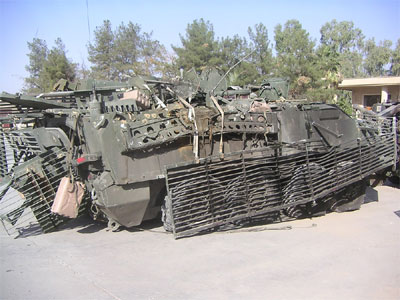
13 December, 2003, Duluiyah, 1X Stryker hit by road bomb, destroyed
16 December, 2003, Duluiyah 1X Stryker rolled into canal, NMC
20 December, 2003, Samarra, 1X Stryker hit by road bomb, damaged
02 February, 2004, Mosul, 1X Stryker hit by RPG, damaged
15 February, 2004, Mosul, 1X Stryker hit by road bomb, damaged
18 February, 2004, Mosul 1X Stryker hit by road bomb, NMC
28 March, 2004, Mosul, 1X Stryker hit by 2 X RPGs, destroyed
10 August, 2004, Mosul, 8 X Strykers hit by small arms and RPGs, 2 X NMC
27 August, 2004, Mosul, 1X Stryker hit by car bomb, damaged
29 August, 2004, Mosul, 1X Stryker hit by road bomb, destroyed
11 October, 2004, Mosul, 1X Stryker hit by truck bomb, destroyed
13 October, 2004, Mosul, 1X Stryker hit by truck bomb, destroyed
4 December, 2004, Mosul, Stryker ambushed by enemy fire, damaged
4 January, 2005, Tal Afar, Stryker ambushed by small arms and RPGs, destroyed
Army Junior Enlisted "Blogger" Exposes Stryker as blind death trap with defective Remote Weapon System: don't try to go to his web site Army made him take it down
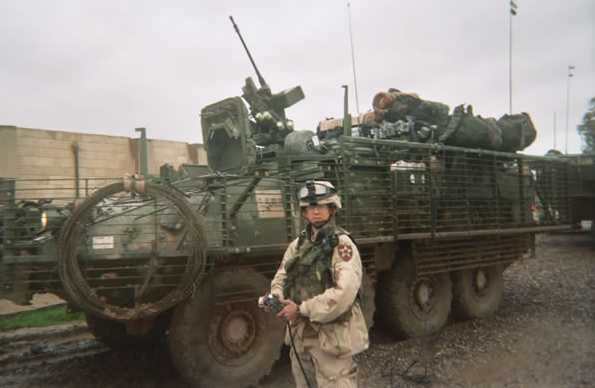

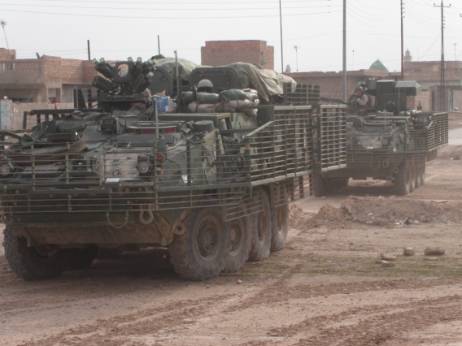
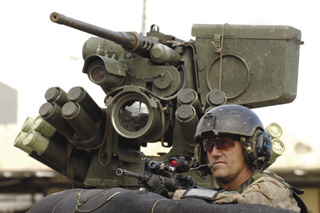
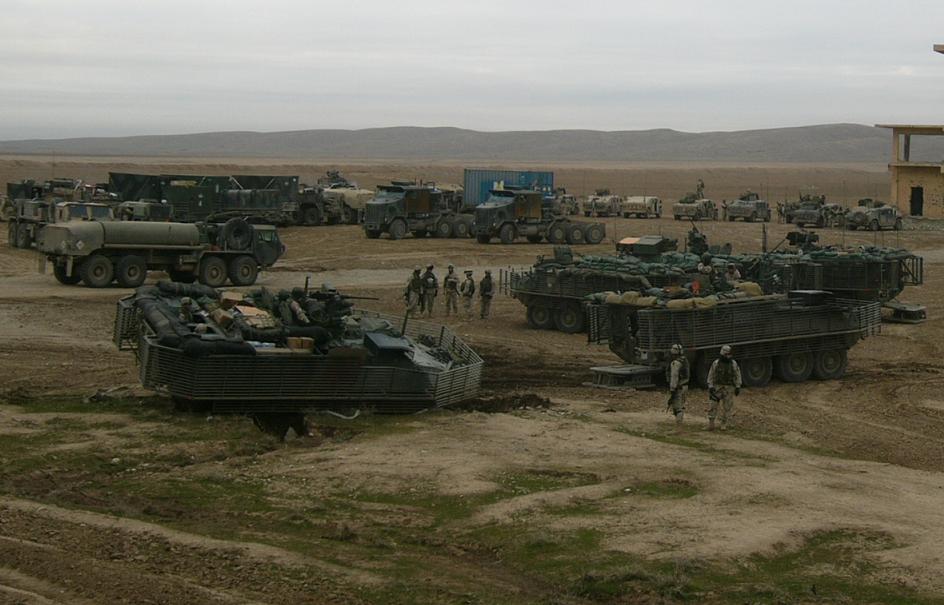
mike.gilbert@mail.tribnet.com
Stryker BCT Hubris kills- Attack at Military Base Kills at Least 20 in Iraq
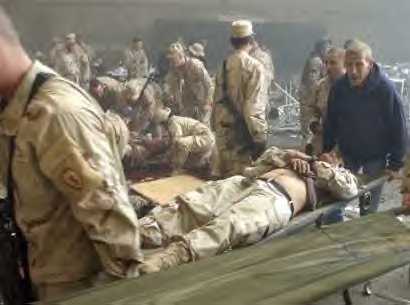
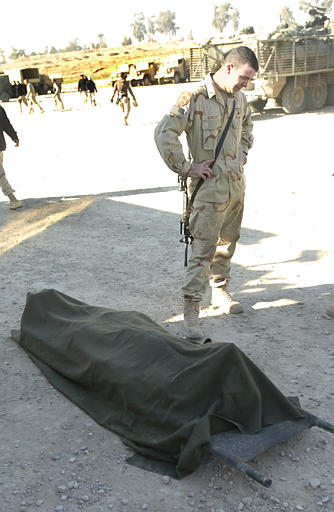
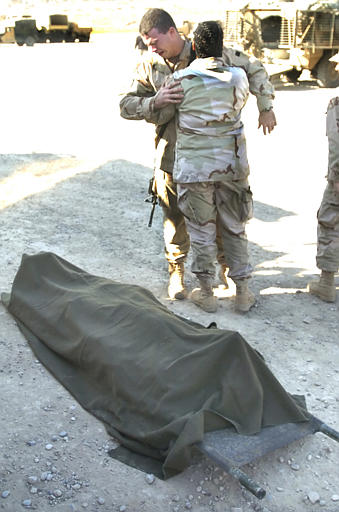
Attack at Military Base Kills at Least 20 in Iraq More Than 60 Wounded at Mosul Facility; Islamic Group Claims Responsibility
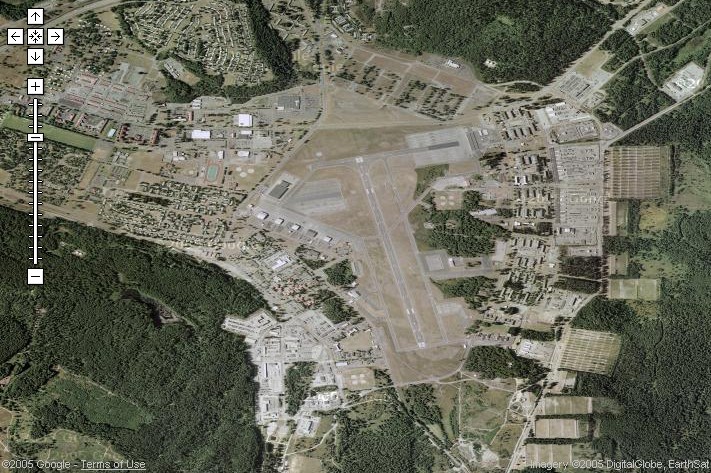
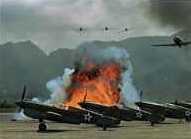
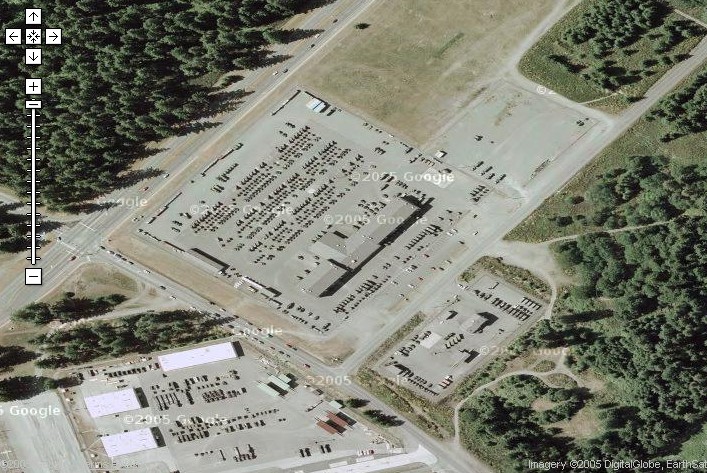
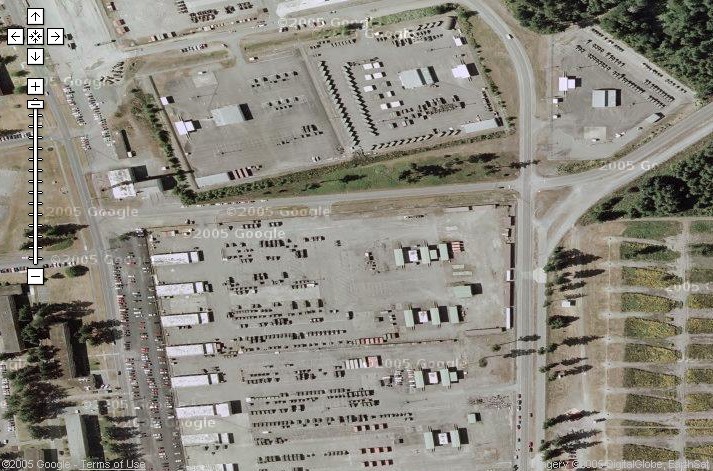
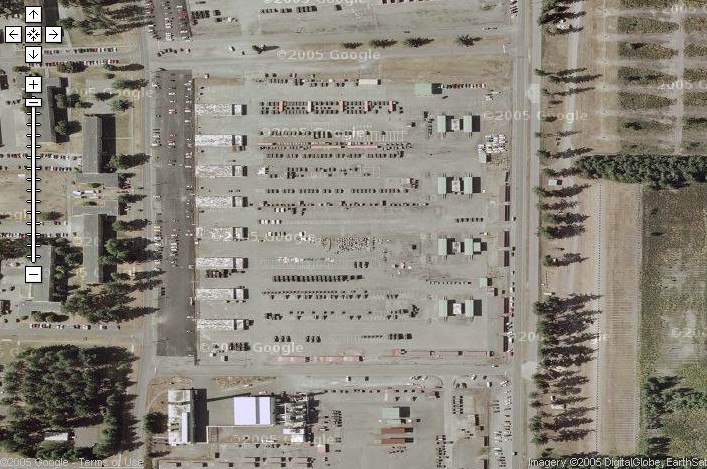
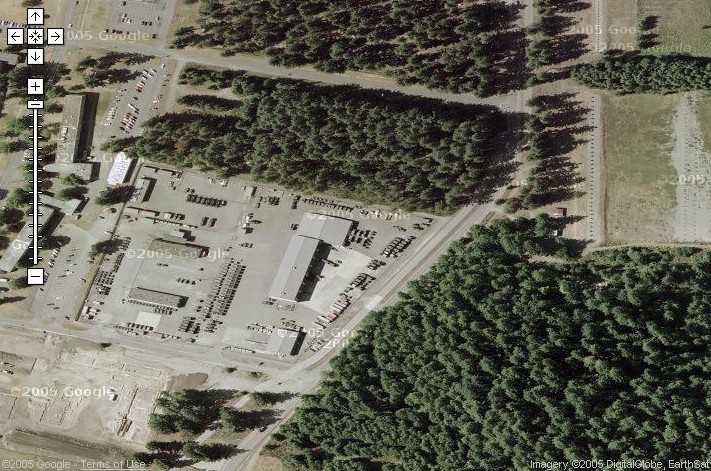
www.geocities.com/strategicmaneuver/battleboxes.htm
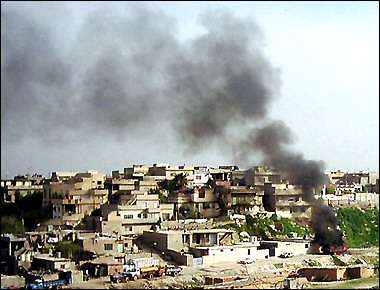
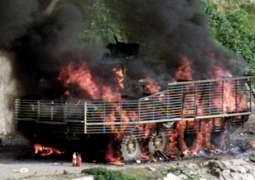
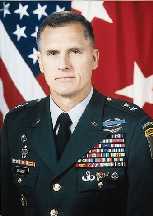
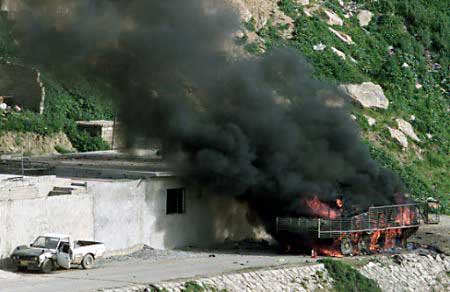
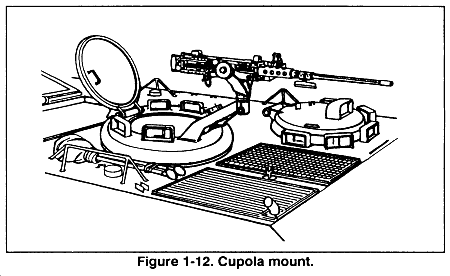
April 24 / 25, 2004
A General, GM and the Army's Latest Tank
MILITARYCORRUPTION.COM
Fighting for the truth . . . exposing the corrupt
Wednesday, March 3, 2004
By KEVIN TAYLOR and SCOTT MacLEOD
By The Associated Press
Defense Week
Monday, December 15, 2003 DW Volume 24, Number 49
* Spec. Christopher Rivera Wesley, 26, of Portland, Ore.
* Staff Sgt. Steven Bridges, 33, of Tracy, Calif.
FORGOTTEN DEAD HISPANIC STRYKER SOLDIER: ARMY SWEEPS UNDER THE RUG
Seattle Times staff reporters
Age: 33
From: Tracy, Calif.
Age: 23
From: Corvallis, Ore.
Age: 26
From: Portland, Ore.
Ray Rivera: 206-423-4700 or rrivera@seattletimes.com
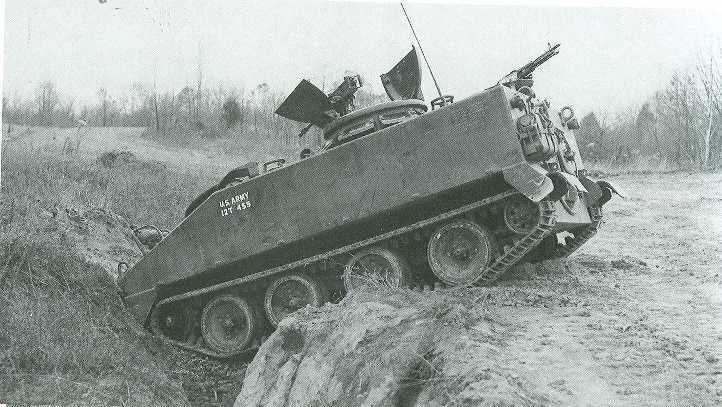
Stryker truck stuck...and struggling to negotiate small ruts
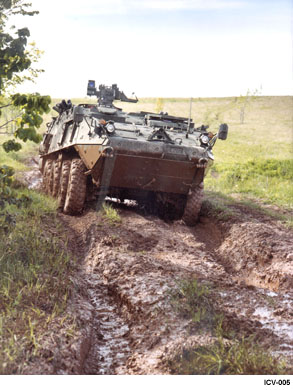
Strykers Cannot Avoid Road ambushes
When you cannot leave the roads it becomes very easy to ambush you, as the debacle in Iraq has proven. Driving 10, 20 or 30 mph does not change the fact that a roadside bomb and ambushers with RPGs, AKMs and firebombs can instantly kill you. Speed is no protection when you are going straight into a kill zone in a multi-vehicle truck convoy.
Strykers Cannot Swim
To get the fuel tank out of the LAV-1/Iis the LAV-III the Army has bought has a left and right rear fuel tank, a good idea taken from the M113A3 Gavin. But to do this, the LAV-III/Stryker lost its props and rudders to propel itself in the water. Strykers can no longer swim and are at the mercy of us having to take bridges and have landing craft for it to cross rivers and lakes. The M113 Gavin swims by its own tracks and can when fitted with waterjets and the Irtalian compasny of ARIS SPA, their "ARIS GATOR" nose piece to swim in oceans from ship-to-shore. Details:
www.geocities.com/armysappersforward/amphigavins.htm
Blind Strykers eaily swarmed by angry mobs
The Stryker is a fatally blind vehicle that simply can't allow potential enemies to even get close: this also means that Soldiers can't let civilians get close to effect liaison safely from within the vehicle as is routinely done from M113s which also have gunshields available. Stryker Soldiers will have to always get out of their vehicle to communicate with civilians, and if they turn into an angry mob will be overwhelmed physically as 4 marines were recently during a foot patrol in Fallujah. If civilian mobs swarm around Strykers, their Soldiers cannot fight out from the top troop hatches to keep grenades and bottles filled with oil and gasoline from being tossed into their bird cages and at their rubber tires, immobilizing the vehicle and setting it on fire. You don't want to be in any vehicle full of ammunition, fuel and high explosives that has caught on fire.
Strykers
The Stryker cannot be assumed capable of driving itself out of trouble, either. To turn a Stryker it must travel forward over its wheels and "Y" turn back and forth if there isn't the required hundred feet or so. In tight urban streets under enemy fire, we cannot afford our Soldiers to be playing "Austin Powers" trying to inch forward and back to get out of the enemy's kill zone. If the enemy has around the corner set up barricaded cars the Strykers cannot drive over them to get out like M113 or any other of the Army's tracked vehicles can. If the Stryker tries to drive over a barricaded car its belly will stick on the car body and its tires will spin futilely in the air, the Stryker will be stuck and a sitting duck target. Its 8 run-flats inside each 8 air-filled rubber tire will increase the flames as the rubber tires burn furiously, sending toxic smoke into the hull and igniting nylon troop gear and ammunition stowed all around and inside the vehicle. The Stryker's HALON fire extinguisher system will fire, killing the engine from operating again until fully cleaned and robbing the troops inside of all of the oxygen they need to breath. Faced with asphyxiating or burning-to-death, the troops will drop the rear ramp and get the heck out of the Stryker. The problem is that an enemy Soldier with an AK-47 assault rifle could be waiting for the ramp to drop open and empty a 30-round magazine of 7.62mm bullets into these American bodies just like how we saw D-Day recreated in the movie "Saving Private Ryan" when landing craft ramps went down in front of enemy machine gun fires.
The Army's "solution" is to not have Soldiers ride in Strykers!!!
How long will be able to define an "edge" of the battlefield when there are no lines of safety/danger is unclear? What is the point of a $3.3 million each truck that is too dangerous to ride in? The troops are having to march almost as far as if they had no vehicles at all.
The physical blindness of the Stryker cannot be excused away by just saying it lacked "testing" when those test results would simply be forged and altered to give the senior Army leaders--some of whom now work for GDLS---the results they wanted to see. What is going to happen unless Congress cancels any further Stryker purchases is the enemy is going to "blind side" a bunch of American young men thinking they are still somehow safe in the Stryker because they haven't reached their distant dismount point yet and are in some kind of fantasy "rear area" marked as such on a computer screen. There are no safe, rear areas on the non-linear battlefield. Enemy attacks can come from any direction at any time
Strykers simply cannot bring their understrength squad of Soldiers to necessary close dismount points out of fear of getting stuck or being ambushed--or worse, both---which forces them to dismount and walk long distances from their objectives negating any rest they received riding in a vehicle touted for its reduced vibration/noise. What's less of a hum-in-your-head if you now have to march 5-10 miles with 100 pounds of gear on your back because your vehicle is too fragile and has to stay out of danger at all costs? What happens if the enemy all around on the non-linear battlefield, refuses to cooperate and attacks your blind and mobility handicapped Stryker without any troops around to protect it like the Stryker that was torched by RPGs shot into its rear fuel tanks in Mosul? Remember they had to dismount and early short of the objective to try to keep the Stryker out of trouble? The Driver and Gunner jumped from the Stryker as it burned up and the Army then brags that the vehicle somehow "protected them" but fails to admit that the Stryker's inability to go where the infantry dismounts go put the isolated crew in the life-or-death predicament in the first place!
Firepower
Firepower is an "icing" that is applied to the vehicle's hull and propulsion "cake". If the vehicle can handle the weight, recoil and size of the weaponry, its firepower can be greater than what a man can generally hand carry. The Stryker uses a slow-turning Remote Weapon System (RWS) that has the gunner down in the hull looking through unstabilized day and night optics. The RWS shoots either a .50 caliber or 40mm heavy machine gun, the former with a box of 200 rounds that can be shot up in less than 1 minute of firing. The entire vehicle has to stop for the gun to shoot accurately, making it an easy target for enemies with vehicles with stabilized weaponry and foot Soldiers with RPGs, hand grenades, satchel charges ala Saving Private Ryan. To reload the Gunner has to open his hatch and expose himself to open up the machine gun, lay down the belt in the can or replace the can entirely, then lay the belt edge down into the open feedtray, close the feed tray, recock the weapon twice and then duck back down into the hull.
The "vanilla" M113 Gavin has the ability to mount .50 caliber and 40mm heavy machine guns behind gunshields fired by the track commander who is not limited by optics. The troops in back can stand and face outward behind gunshields rendering their automatics rifles and light, medium machine gun firepower in all 360 degrees of directions. This is what is needed to protect the vehicle from close-range attacks and prevail on the NLB. We wouldn't have to settle for an impotent RWS with the Gavin since it has extra power and weight capacity; optimally a 1 man power operated, stabilized 20-40mm autocannon turret like used on the USMC AAV-7 would render Bradley level fire-on-the-move firepower while still enabling the troops in back to see out and contribute to the fight.
Situational Awareness
Too many equate "situational awareness" (SA) with a new electronic mental gadget. The first and most direct SA is the physical kind by operating your vehicle with your head out and eyes open behind gunshields.
Stryker is physically blind
Most Soldiers in Strykers ride buttoned up and NOT situationally aware: blind spots everywhere for those with their heads out.
The following explains the internal seating arrangement and functions of the baseline Stryker Infantry Carrier Vehicle (ICV).
The Driver sits at the left front, the diesel engine is to his right. He can raise his seat to drive with his head out from an open hatch but CANNOT SEE TO HIS REAR because the hull behind him blocks his view.
Squad Leader (SL) sits behind the Driver: he CANNOT SEE TO RIGHT OF THE VEHICLE because he is blocked by the Remote Weapon System (RWS)
The Gunner to the right of SL, sits under the RWS: he CANNOT SEE OUTSIDE OF VEHICLE at all, only through his optics.
The Platoon Sergeant or Platoon Leader (PL) sits behind the Gunner looking at the FBCB2 computer screen and CANNOT SEE OUTSIDE OF VEHICLE at all.
The remaining 4 (not 5) Dismount Soldiers cannot stand on seats to reach the two small top troop hatches which are for emergency use only escapes: they CANNOT SEE OUTSIDE OF VEHICLE at all. There are no gunshields to protect them if they could stand up through the two small hatches.
6 out of the actual maximum 8 Soldiers that can ride in a Stryker cannot even see outside their own vehicle! One can only see to his front and left. The Driver cannot see to his rear. The only person in a Stryker who can see somewhat in 3 directions is the DRIVER! The Squad Leader can't see through the remote weapon system on his right, a fatal blind spot for the enemy to attack with RPGs and/or molotov cocktails. He must spend most of his time directing the driver where to go and has no mounted weapon and gunshield to engage enemies even if he can see them. He must duck down into his hatch if the slow-turning remote weapon system machine gun is to fire to its left. The Gunner down in the hull, looks through an unstabilized optic so as the Stryker moves, all he sees is a blur; to fire, the vehicle must stop and be a sitting duck to the enemy. The PL or platoon sergeant (PSG) behind the Gunner can't see what's going on for real outside the vehicle like you can from the top troop hatch of a M113. He is staring at a computer screen and typing email messages, detached from physical reality around him. His real-world situational awareness is nil.
The Stryker is fatally blind and unsafe for combat; it cannot carry a fully-equipped 9-man infantry squad and should be immediately cancelled by Congress for failing to meet stated Army requirements.
The 3rd Infantry Division (Mechanized) and Special Forces Soldiers say M113 Gavins with infantry facing out from top troop hatches behind gun shields are best for non-linear, urban combats. At just 73 inches high, the Gavin can be used to converse with civilians from the vehicle while being safe from most close-in attacks. Details:
www.geocities.com/paratroop2000/armoredhmmwvsstrykersfail.htm
Here is a picture of M113A3 Gavins on patrol in Iraq, demonstrating their excellent situational awareness from the top hatches though they lack the gunshields and extra armor they are supposed to have:
www.combatreform.org/m113a3Gavinsonpatrolinbaghdad.jpg
The 3rd ID lessons learned from the Iraq nation-state conflict, from Chapter 7 at:
www.globalsecurity.org/military/library/report/2004/onpoint
" An Army Special Forces Soldier in Iraq NOW during the sub-national conflict writes:
" Now, take my boys in 91st engineers. We roll around with a gun in the tub, the back top open and guys hanging out with ARs and optics.
Go ahead, step out from behind that building against riflemen who are
excellent snap shooters.....and can engage 360 degrees and up and down almost 180 degrees.....pretty much wherever they can point the rifle.
In a M113, this is almost everywhere.
Just my firsthand experience day after day in Gazalea and Abu Graib.
XXXX"
Stryker
There is no manned observation and attack fixed wing aircraft or enough UAVs flying over Iraq to create a tactical internet for the Stryker's FBCB2 screens to have meaningful information on the enemy. The entire digital battlefield where enemy targets are turned into computer icons could only possibly exist in all out nation-state war against inept opponents operating in the open without masking terrain (Desert Storm). Without someone "cooking" a tactical internet "lunch" the Stryker's computer screens are just empty of enemy data.
Safety
Strykers
The 19-21 ton Stryker is already a top-heavy vehicle that is prone to roll-over by its very nature of being a heavy metal box slapped on top of 8 wheels and suspensions. Tracked vehicles are more compact and though its counter-intuitive, are 28% more weight/space efficient than wheeled armored vehicles because their hulls can be smaller to deliver a given volume of space. Though the M113 is smaller externally than a Stryker so its a harder to hit by enemy fires, it can actually easily carry a fully-equipped 9-man infantry squad because its got better available volume. Its compactness results in low center-of-gravity stability so its not top-heavy even when carrying lots of gear. Yet when all of the troop gear goes either inside or strapped to the outside of the Stryker, since its a 1/2 inch thin metal box SITTING HIGH ON TOP OF the 8 wheeled suspension and drive train every item carried is above the centerline of gravity making the vehicle dangerously top-heavy. When it was pointed out by DoD's Testing Director Tom Christie that the thin metal hull and 8 rubber tires will not protect against rocket propelled grenades (RPGs) the Army rushed to have a 5,000 pound "bird cages" bolted to the outside of every Stryker in Iraq to pre-detonate RPGs but at the cost of making the Strykers even more top-heavy and prone to roll-overs. In the first days of operations in Iraq, two Strykers rolled over killing 3 Soldiers. Afterwards in typical Army fashion of denying problems exist and solving them by admitting that the Stryker is a mistake, vehicle speeds were reduced and crews ordered not to leave paved roads.
But don't take my word for it, someone in Congress needs to subpoena or Freedom Of Information Act (FOIA) request from the Army Safety Center at Fort Rucker, Alabama to release all of the actual roll-overs and accidents the Strykers have had from Fort Lewis, to NTC and now Iraq. The Stryker holds the record for the most roll-overs ever by any unit at NTC and we just had another two Soldiers killed in Iraq when it merely swerved to avoid a civilian car. Its too bad Ralph Nader was not a military safety advocate to tackled this unsafe-at-any-speed "Corvair" in Army green.
Reliability & Costs
/\
Mobility
/ \
/ \
/ \
Protection------------------Firepower
_____________________________
Reliability & Costs
The foundation for any vehicle to operate is its reliability against the forces of the earth itself which don't want it to run at all and the human societal costs to keep it running. If your vehicle design pyramid is weak, heavy and inefficient its going to constantly collapse and have to be propped up by maintenance and constant repairs driving up costs. A wheeled armored truck pressing down heavily upon fragile drivetrains, suspension and steering is prone to break-down; a tracked armored vehicle is actually simpler. Details:
www.geocities.com/wheelsvstracks
The Stryker is a constantly collapsing pyramid. Its bad enough that the army had the "sticker price shock" of $3.3 million each it now has spiraling maintenance costs to try to keep unreliable Stryker vehicles operating because they are fundamentally ill conceived by design (mobility, protection, firepower, situational awareness). To purchase Strykers, the Army had to neglect the majority of the rest of its Soldiers/units, to maintain and operate them this neglect robs the rest of the Army of needed armor, vehicle upgrades. The Stryker choice of a new purchase, wheeled armored truck was never feasible as a fix to transform the entire Army. To squander the majority of the Army's funds on a handful of increasingly costly truck brigades when there are over 33 brigades to reform for actual, on-going non-linear combats is fiscally irresponsible and morally bankrupt.
The are just 300 Strykers in quiet northern Iraq. There are over 1,700 M113 Gavins in combat all over Iraq now, and receiving no Army modernization funds. The majority of our 130,000 troops in Iraq have to ride in 12,000 unarmored HMMWV trucks. An official Army internal document reveals that the 300 wheeled Strykers in Iraq are already in need of $111 million in repairs. Each day, 4-5 rubber tires have to be changed at $1,000 each. Other unofficial reports state General Dynamics Land Systems contractor support costs are $750 million a year just to try to keep the Strykers running on paved roads. We do not know the actual TOTAL operations and support costs for Strykers in Army service because the Army hasn't revealed these cost figures because they would show a flawed vehicle that is fragile, break-down prone and would lead to Congress canceling the program. Some enterprising Congressional staffer or news reporter should make TACOM release the true maintenance costs of the Stryker so the American tax payer knows how BILLIONS are going towards handfuls of failed Canadian-made trucks when made-in-America M113s that total 1,300 in Iraq combat now require no such constant repairs/pampering and don't receive a dime from the Army to have the RPG and roadside bomb applique' armor they are supposed to have be fitted. Most don't even have the required ACAV gunshields though they have been available for years. There are enough M113s in storage to get most of the 100,000 troops in Iraq out of vulnerable HMMWV trucks, and if we stopped wasting money on Strykers make them RPG and roadside bomb resistant building upon the greater protected mobility of their firebomb resistant steel tracks and metal roadwheels. What is the real cost of Stryker? If you look in the Jun 28th issue of Defense News, page 3, it states that the Army gave GD an order to complete the 4th brigade (the decision that wrecks
The 2ACR forever) to buy 106 vehicles for $163M. This order is in addition to the March 2004 contract for 212 vehicles at $282M; resulting in a total of 328 vehicles for $445M. Yet, this accounts for less than half of the over $950M appropriated for Stryker Procurement in the 2004 budget. Where does the other $500M go? Also, how much R&D is being spent on Stryker and how much O&M is going into GD's coffers? The Army keeps saying that the Stryker only costs $1.5M per copy; yet the Stryker program is costing them well Over $3M per vehicle; and it could be closer to $5M per vehicle fully loaded. It would be very interesting to demand that the Army disclose what it is actually spending on Stryker -- could be $1.5 to 2B per year."
SUMMARY/CONCLUSION
1. The Stryker is unsound in all categories of analysis and should be cancelled for further purchases by the U.S. Army. Recommend that Congress curtail the acquisition of more Strykers and shift funds into the acquisition of more promising technologies and platforms with close combat capability in urban or complex terrain. Congress should also demand that the Army provide a plan for pooling existing Strykers in support of Army units rotating through peace support missions on the British Army model. A cost-effective alternative to permanently equipping light infantry with Strykers would involve the purchase of a limited number of wheeled armored vehicles for use by Army units rotating through routine peace support missions. The British Army uses this approach in Ulster and Cyprus with considerable success.
2. It is important however, that the Army have 3D maneuver forces that can rapidly air-deploy and then fan out with armored mobility on the ground to block and capture enemies fleeing our heavier 2D maneuver forces coming overland. Had we been properly organized for 3D air-mechanized maneuver in 2001 we might have gotten terrorist leader Osama Bin Laden in Afghanistan before he fled, and Saddam and his subordinates in Iraq before they went into hiding to start the on-going, bloody guerrilla war. The place to create these formations is in the army's Light, Airborne and Air Assault units be transforming them with available light tracked armored fighting vehicles.
Monies that would have been wasted on Strykers should immediately be spent on upgrading thousand of M113 Gavins to MTVL standards to fully transform the Army's Light Divisions beginning with their infantry battalion's Delta Weapons Companies who drive in vulnerable unarmored HMMWV trucks so A, B and C companies can have armored mobility as needed. M8 Buford Armored Gun System and Tracer scout vehicles should also be purchased to Brigade RSTA Cavalry troops to work in conjunction with the infantry battalions. These light tracked AFVs are parachute airdroppable and the Gavins are CH-47D/F air assault mobile.
M113A4 Gavin MTVL
The "MTVL" standard M113 Gavin can far exceed the costly and impotent RWS and C4ISR "icings" applied to the physical unsound Stryker trucks. Most importantly, MTVLs can be created from the Army's 14, 655 M113 Gavins quickly and a very affordable price to actually fix the physical weaknesses of the U.S. Army which has 4 light divisions with no armored vehicles whatsoever and the unlucky half of our heavy divisions that ride around in unarmored trucks.
Protection
Multiple layers of armor protection are possible on up-engined MTVLs up to 7,000 pounds worth depending on what engine powerpack is chosen; 275 hp, 400 hp or 500 hp diesel-electric. Multiple and differing armor layers are required to defeat RPGs by reactive forces and spacing, defeat roadside bombs and land mines by blast absorption and shrapnel defeat, and counter kinetic energy bullets/shells by a hard strike face away from the hull to break up the projectile for the following layers to "catch" the fragments. Wheeled Strykers and so-called "up-armored HMMWVs" are already maxed out by weight and suspension load cannot have adequate armor layers fitted as the world's most combat experienced force, the Israeli Defense Force recently concluded when they rejected purchasing Strykers from the U.S.
The 1996 RAND report commissioned by Congress concludes that a M113 Gavin can receive 60% coverage by reactive armor compared to the just 35% coverage that can be applied to a Bradley with more complex hull and turret shapes.
Mobility
The baseline M113 Gavin has a low 8.63 PSI ground pressure the lowest of any Army vehicle in service except for unarmored M973 over-snow vehicles. All are amphibious in lakes/rivers without preparation. M113 Gavins are currently the only U.S. Army vehicles that can swim. Had the enemy in Iraq wisely blown up bridges over key junction points over marshes and rivers, the advance into Baghdad could have been stopped and even defeated by our Army and marines Mobility to go along an undetected path and route is a PHYSICAL requirement that cannot be attained by wishful cherry picking mentally on a paper or digital map. Its more important to have the PHYSICAL capability to actually take an unexpected route than an expensive computer to realize you need to take that path if the latter results in your being in a wheeled vehicle that can't do it. Firepower
Troops report from Iraq that the M113 is the only mount that enables them to fire and hit elevated urban targets. The open rear troop hatch with gunshields combination is widely used by the Israelis to prevail in urban combat for 360 degree all around firepower.
The Track Commander of "vanilla" M113s has a 360 rotating mount for .50 caliber and 40mm grenade heavy machine guns with his head out behind a gun and side shields that is effective on the move unlike the Stryker though not stabilized. Small stabilized 20mm-40mm autocannon turrets could be purchased for thousands of M113s using monies saved from cancelled Stryker purchases as many NATO nations have done to provide dominant firepower while still retaining the infantry in back's 360 degree vigilance out the top troop hatch. These turrets can also have strap-on anti-tank guided missiles or unguided rockets to destroy enemy armored vehicles and buildings/bunkers if required. These firepower additions applied to the basic 10.5 ton M113 vehicle do not disqualify it for C-130 air transport (17 tons is STOL landing limit) as they would if attempted on the Stryker starting at 17 tons.
Situational Awareness
The basic physical M113 design has EVERYONE; driver, track commander and troops able to see in all direction. This 360 degree coverage helps to keep any enemies from getting into a position to threaten the vehicle. When buttoned up, the only people who are blind are the dismount Soldiers in the back, but this can be compensated like the Israelis are doing using TV cameras at a fraction of the cost of the inward-focused computer network the Stryker has. Gunshields exist for troops in M113 Gavins to fight effectively from their mounts while above shoulder level to avoid grenades and firebombs. However, they are still able to converse with civilians from their vehicles for HUMINT.
Safety
The M113 at 78 inches high and 98 inches wide on wide tracks is not top-heavy and prone to roll over as the Stryker is. It has the safest operation record of any of the Army's armored vehicles and most of the Army's unarmored vehicles. There are multiple exits to escape even if the vehicle turns over: 3 top hatches, a rear ramp and a door in the rear ramp. If the vehicle tumble into the water it floats if its hatches are closed and doesn't sink like the Strykers did when 3 Soldiers drowned in Iraq.
Reliability & Cost
The vanilla M113A3 Gavin has a 3.5 miles per gallon fuel cost and averages to be $1.53 per mile according to UDLP. M113s are known for reliability and low operating costs all around the world, such that with over 23 countries using them, Army forces deployed overseas could tap into host nation logistics to support our vehicles. The M113 was chosen to replace the M551 Sheridan tank as the OPFOR replica vehicle at the national Training Center at Fort Irwin, California due to its decreased operating costs, reliability and reduced environmental foot print. The M113A4 MTVL hybrid-electric variant at 7.0 mpg would most likely be 50% of current costs to even operate.
3. The entire Army must reorganize and requip for non-linear warfare; the minimum transportation standard must be a light tracked AFV not a wheeled truck.
XM1108 Gavin Tracked Support Vehicle
That Army resupply vehicles are road-bound and cannot aggressively move off road has created a debacle in Iraq where Americans are dying each day by roadside bombs. More Americans have been killed and wounded by roadside bombs than any other cause in Iraq. This is largely preventable if we had tracked armored resupply vehicles.
The handicap of only having wheeled vehicles for resupply defeated the Germans in the Russian mud and winter snows in WWII concludes military historian B.H. Liddell-Hart. The inability to be resupplied away from roads led to the French not holding the high ground in the first Indo-China war at Dien Bien Phu.
In the USAF Air Chronicles article, "Stalingrad to Khe Sanh: Factors in the Successful Use of Tactical" Dr. David K. Vaughan, Air Force Institute of Technology Major James H. Donoho of the Air Combat Command write:
www.airpower.maxwell.af.mil/airchronicles/cc/vaughan.html
EXCERPT:
Disregarding warnings that great risks were associated with it, Navarre put his plan into action on 20 November 1953. Operation Castor, as it was called, began with an airborne assault on Dien Bien Phu. The Sixth Parachute Battalion landed 200 meters north of the village, and airborne troops of the Second Battalion, First Regiment, dropped 600 meters to the south. These forces cleared Dien Bien Phu of enemy forces and secured the dirt airstrip. The following day two more parachute battalions were airdropped along with an artillery battalion, command headquarters, and heavy equipment. On 22 November, the sixth parachute battalion landed (Davidson, 1988: 189-96). The French forces occupied a fortified entrenched camp having three sub-sectors, which supported one another with forty-nine strong points (Giap, 1964: 78). Navarre believed that the poor roads in this hilly region would deny the Viet Minh the ability to bring up artillery. He believed that the Dien Bien Phu garrison would enable French forces to bring their superior firepower to successfully bear against the Viet Minh (Gurtov, 1967: 93).
Due to the difficulty involved in reaching the crests, the French installed themselves in the lower, more accessible areas, convenient to re-supply vehicles, and abandoned the heights. They believed that the vast basin would protect them from surprise attack. They appeared not to realize that due to the proximity of the surrounding mountains, a few well-placed Viet Minh guns could severely disrupt airlift operations (Roy, 1965: 36-7). Giap attacked on 13 March 1954.
The good news is that the M113 Gavin family of vehicles can be modified into XM1108 MTVL type armored cargo carrying vehicles for off-road, protected resupply. The XM1108s can pick up and drop off palletized loading system (PLS) flat racks full of supplies without Soldiers even having to leave their armored cabs.
Protection
XM1108s have the baseline 7.62mm AP bullet protection of a M113 Gavin but since there is only a small cab to armor, could be fitted with multiple armor layers to defeat RPGs at lesser weight penalty than a full bodied vehicle so engine power can still be used to deliver supply payloads.
Mobility
With H/E drive and band tracks, supply XM1108s can travel at 60 mph speeds like civilian cars on paved highways yet can operate off roads that automobiles--and gunmen in them with RPGs cannot.
Firepower
Every vehicle must be able to fight back while on the move. To mount a machine gun in a ready-to-fire mode, a hard mounting is required with a gunshield for the gunner. The XM1108 roof is a hard cab that can fit a swiveling machine gun mount and gunshield so a gunner can be vigilant and fire at suspected enemies to spoil and failing that counter enemy ambushers.
Situational Awareness
With a crew of no more than 3 men, one driving, one gunning and the other navigating, the XM1108 would have adequate situational awareness to defend itself from enemy attack since it does not have blind spots like the Stryker has.
Safety
The XM1108 would benefit from the same low CG design of the basic M113.
Reliability & Cost
By using the same reliable and efficient components as the 14, 655 vehicle M113 Gavin family, the XM1108 would be easy to maintain and operate.
Mr. Jose Caldas, a relative of Captain Ernesto Blanco of the 82nd Airborne Division who was killed in Iraq by a roadside bomb while in a HMMWV truck sums it up best:
"Pretty amazing isn't it?
Ernie was killed in a Humvee by an IED.
M113s are available and are being used in Iraq.
They can be upgraded inexpensively.
They can do everything a Humvee or a tactical truck can do, safer.
The Anniston Depot and UDLP (United Defense) have active programs supporting the M113 Congress has funded and is funding M113 related programs.
I am going to pose this questions to my elected representatives, the DOD and Army leadership:
Why hasn't the Army completely replaced Humvees and Tactical Trucks with M113s for use in Iraq?
Civilian leadership runs the U.S. military and America's Army belongs to the American people and its Soldiers not a small clique of general officers who want post-retirement employment with GDLS. Someone should also investigate and "follow the money" trail of GDLS and its subcontractors and see which politicians are getting re-election campaign donations, a linkage should become apparent of who supports the Stryker deathtraps despite all of the facts of its performance failings and fatal vulnerabilities .
REFERENCES
_____________________________________________________________________________
Concept
1. www.house.gov/hasc/openingstatementsandpressreleases/108thcongress/04-07-15Macgregor.pdf
Statement of Colonel Douglas Macgregor, PhD, USA (ret.)
Testifying before the House Armed Services Committee on July 15, 2004 in 2118 of the Rayburn House Office Building.
2. www.jpost.com/servlet/Satellite?pagename=JPost/JPArticle/ShowFull&cid=10902082
51924
Stryker APC deal tabled for two years
By ARIEH O'SULLIVAN
Citing financial pressure, the IDF has decided to put a hold on a decision to procure the controversial 8x8 Stryker light armored vehicle from the United States.
According to military sources the decision was made earlier this month in a review of expected expenditures in the multi-year procurement plan. The decision was to delay the matter for two years, but military sources said that the idea of purchasing the Stryker was effectively "buried for good." The decision is also a blow for the battered image of the Stryker since America was hoping to enhance its status with its inclusion in the IDF arsenal.
The Ground Forces Services had been pushing for a "critical mass" of Strykers to equip at least two brigades. This would involve hundreds of vehicles at a cost of $1.5 million each. But they would have likely undergone reinforcement to make them more protected, boosting their cost by up to $500,000.
OC Ground Forces Services Maj.-Gen. Yiftah Ron-Tal has been a strong proponent of the Stryker to replace the aged M-113 "Gavin" APCs. The Stryker was designed as the vehicle tailor-made for urban conflict, but it has garnered mixed reviews in action with US troops in Iraq.
Some of the criticism has been that the Stryker has many blind spots and was not as maneuverable as tracked armored personnel carriers. The 19-ton vehicles are also said to be top heavy and prone to rollovers. After it was designed the American Army realized it wouldn't withstand RPGs so the US rushed through additional means to pre-detonate the RPGs, which made them even more top heavy.
It also needed to upgrade its protection against roadside bombs with Applique' armor developed by an Israeli-based company.
"It's a piece of junk," said one former senior IDF field commander intimately involved with the Stryker. "I don't know why Ron-tal was pushing so hard for it." There was also criticism that the IDF was never really serious about purchasing the Stryker from the beginning and it was all part of a disinformation campaign, possibly to enhance Israel's indigenous APC production.
The IDF did not even seek out any possibility of upgrading Stryker armor from manufacturers in Israel.
"Nothing. They never even contacted us," said Dr. Michael Cohen, director of Mofet Etzion Ltd. His company, based in Kfar Etzion, has been supplying General Dynamics Land Systems based in Canada with applique armor for its US Army Strykers in Iraq.
Proponents of the 19-ton Stryker say it would have been more mobile and more responsive than heavier tanks and treaded vehicles in the digitalized, urban battlefields of the West Bank and Gaza Strip. The ground forces wanted to use them to replace the Vietnam-era M113 APCs, such as the ones destroyed in the Gaza Strip last May killing 11 Soldiers.
Now that the Stryker is pass , it paves the way for accelerating the alternatives to the American APC.
According to a senior defense official, the state-owned plant which produces the Merkava tank and other upgraded APCs has put together a prototype of a heavy armored vehicle that rivals the Stryker. It is called the "Namer" or Leopard, and is built on the chassis of the Merkava I tank. It
too would cost between $1 million and $2m. each. The drawback was that US military grant money could not be used to pay for these since the bulk of the annual $2.2 billion in grants must be spent in the United States.
3. Wheeled Strykers were beaten by tracked M113A3s at the Fort Lewis Comparison Evaluation (CE) tests, yet Army lied in its report to Congress and continue to buy inferior Strykers when far better tracked vehicles could be upgraded at 1/2 the cost and time
The Soldiers who actually did the CE tests at Fort Lewis if placed under oath would testify that the M113 platoon beat the Stryker platoon in ALL categories of performance. Yet the Army official report called the tests a "draw". Because Strykers are overweight, top-heavy and roll on narrow air-filled rubber tires crews drive them with a constant fear of getting stuck or rolling-over. Since Strykers have to be driven gingerly at all times they cannot maintain proper vehicle battle formations to avoid bunching up and colliding with each other or being caught in the blast of one enemy shell or roadside bomb impact. On the other hand, the tracked M113A3s with a low 8.63 PSI ground pressure and little fear of getting stuck were able to maneuver boldly across all terrain types and get to their mission objectives long before their Stryker counterparts could. When M113s at the earlier platform performance demonstration swam across a lake at Fort Knox, Strykers without the needed props and rudders stood idle unable to propel themselves in the water. This means Soldiers in Strykers must avoid small bodies of water and lakes like a plague because they can't swim. In order to cross, enemy held bridges must be taken which WWII taught us can be a bloody mess. If the enemy blows up the bridges, Strykers are stuck unable to get to Soldiers where they need to go. WWII veterans with non-swimming vehicles learned from their mistakes and made sure when General Gavins drew up the requirements for an Airborne Armored Multi-Purpose Vehicle Family of light tracked armored vehicles that they would be amphibious; resulting in the amazing M113, arguably the greatest armored vehicle of all time, ever. However, having the humility to listen to her Soldiers and doing what's best--even if its less costly---is not an Army bureaucratic virtue.
3. www.strategypage.com/dls/articles/20030912.asp
24 APRIL 2003
SUBJECT: Operation Iraqi Freedom After Action Review Comments
1. The purpose of this document is to provide after action review comments after combat operations conducted by TM C/3-15 Infantry, Task Force 1-64 Armor "Desert Rogues" during "Operation Iraqi Freedom.
2. All comments will be broken down into the following format: issue, discussion, and recommendation.
3. Doctrine/TTP's (Tactics, Techniques and Procedures).
Issue: Current Urban Operations Doctrine does not support operations conducted by this unit.
Discussion: The current doctrinal manuals on Urban Operations do not address how best to utilize armored forces in an urban environment. The enemy faced by this unit hid his tanks and vehicles under camouflaged covers, beneath bridge overpasses, inside of buildings on narrow streets, and under low trees. These enemy systems were not seen until they were only meters away. No degree of IPB (Intelligence Preparation of the Battlefield) could compensate, alert, or prepare any US force for the massive numbers of RPGs (Rocket Propelled Grenades) stored in houses, shacks, lockers, and cars. The only way to counter RPGs fired from covered and concealed positions was to absorb the hit, identify the source of the fire, and respond with massive overwhelming firepower.
Tanks and Bradleys repeatedly sustained hits from RPG's and ground directed anti-aircraft fire that dismounted infantrymen, HMMWVs and other light skinned vehicles could not sustain. Bradleys successfully protected the infantrymen inside while at the same time delivering a massive volume of fire against dismounted enemy, trucks, tanks, and armored vehicles. The firepower and shock generated by tanks and Bradleys could never have been matched by dismounted infantry. Without the use of these systems initially, the enemy would have caused many more casualties.
The current doctrine recommends clearing the built up area with dismounted troops prior to any armored vehicles entering. This Task Force proved that this is not a requirement and is not necessarily the best initial course of action. By moving armored vehicles along a pre determined route and destroying any enemy forces whether dug in, in buildings, or on roof tops with massive overwhelming fires from M1A1 tanks and M2A2 fighting vehicles, an entire line of communication can be opened up allowing access not only into the built up area but through it also. Once the line of communication is open, clearing operations with dismounted forces are much easier. A key to this is the overwhelming psychological effect the firepower of these weapon systems have on the enemy once the initial raid is conducted, almost all remaining enemy forces will withdraw from the initial shock. This initial shock of overwhelming firepower facilitates the attacks of dismounted infantrymen into the built up area.
Recommendation: The BCT submit to the United States Army Infantry School and the United States Armor School an update to the current urban operations doctrine. Additionally, send only vehicles that can sustain RPG hits into urban combat zones.
Issue: Problems arising from the simultaneous conduct of SASO (Stability and Support Operations) and combat operations in Iraq.
Discussion: After less than 48 hours after the first battlefield engagement, members of this company team were tasked to conduct checkpoint operations southwest of An Najaf. With no training, Soldiers were expected to search vehicles, interact with civilians with no CA (Civil Affairs) or PSYOPS (Psychological Warfare) support, detain EPW's (Enemy Prisoners of War), and confiscate weapons. Less than 48 hours after this, the unit was again heavily engaged in combat operations. The radical and swift change from combat operations to SASO and back to combat operations over and over again causes many points of friction for the Soldiers and their leaders.
With the exception of a class given to the platoon leaders, there were not formal classes or training conducted by CA prior to the operation. No training on checkpoint operations or dealing with civilians was received.
Material resources continued to be an issue. The team brought extra CL IV on all vehicles in anticipation of having to conduct blocking operations but the capability to haul the quantities required by SASO was not there. Having emplaced checkpoints on four different occasions, by the time the unit reached Baghdad, there was no remaining CL IV (construction and barrier materials). The unit was in desperate need of materials for force protection. It took weeks for materials to arrive; in the meantime the unit utilized destroyed cars, flower posts, bicycle racks, and whatever else was available for force protection.
Interpreters were not available to the company team at any point during the operation. These interpreters are critical to the team's ability to interact with civilians, discern their problems, and broadcast friendly unit intentions. Often times the unit had crowds and upset civilians to deal with and absolutely no way to verbally communicate with them.
Lack of information from higher headquarters greatly complicated the task of converting from high intensity conflict to SASO. Weeks after occupying Baghdad in force, the unit is still unable to direct the civilian populace to humanitarian agencies other than the Red Crescent. We have no way to direct people to places to receive food and water, to search for loved ones, to located deceased personnel. The unit did not have the ability to answer any questions simply because of the unsynchronized and unplanned operations of the Civil Affairs community and other non-governmental organizations.
The problem with the switching from combat to SASO is the impact on the Soldiers and leaders of the unit. Transitioning from combat to SASO requires a substantial and fundamental shift in attitude. The Soldiers have been asked to go from killing the enemy to protecting and interacting, and back to killing again. The constant shift in mental posture greatly complicates things for the average Soldier. The Soldiers are blurred and confused about the rules of engagement, which continues to raise questions, and issues about force protection while at checkpoints and conducting patrols. How does the Soldier know exactly what the rule of engagement is? Soldiers who have just conducted combat against dark skinned personnel wearing civilian clothes have difficulty trusting dark skinned personnel wearing civilian clothes.
Recommendation:
A. Integrate SASO training into the unit METL (MISSION-ESSENTIAL TASK LIST). This was has provided ample instances where units are conducting both combat and stability operations at the same time. Thus, we should no longer expect to be able to compartmentalize ourselves as either "war fighter: or "peacekeeper". With the ever-present threat of terrorist attack, it is critical that Soldiers know the correct tactics, techniques, and procedures for providing security while also enforcing peace.
B. Heavy duty CL IV materials are required for blocking positions and should be maintained at the task force or BCT level. Lift and freight assets need to be responsive and capable of delivering reinforcing materials in short order.
C. Civil Affairs, pysops, and interpreters must be integrated at the company team level. Every checkpoint must have an interpreter and these interpreters must be with the company team throughout the operation as it is impossible to predict when you may be required to fight or keep the peace.
D. Improved information flow and the quicker establishment of Civil Military Operations Centers. Units occupying positions in built up areas make frequent contact with civilians. Information and a centralized theme must be passed to the company team level as quickly as possible to ensure the proper message is being sent to the populace, and in turn, input from the populace is reaching the highest levels. The company team level is the level where the interaction with the populace occurs.
E. We must train our leaders and Soldiers in the conduct of SASO operations. Leaders must be sensitive to the flux between war fighting and peacekeeping and the demands of each not only on the unit but the individual. We owe it to our Soldiers to train them on the differences. It is the responsibility of leaders to ensure PVT Plunger and PVT Snuffy know what the proper posture or attitude is and to enforce it.
Issue: The employment of Hunter Killer teams.
Discussion: This unit, while conducting combat operations, had great success through the utilization of hunter killer teams. The combination of scouts with LRASS (Long-Range Advanced Scout Surveillance System) and tanks and fighting vehicles proved invaluable at the detection and destruction of enemy vehicles and dismounted infiltration attempts.
By locating a scout section with LRASS, which could observe out to 10,000m, at a location that had maximum observation, the scouts, could provide real time intelligence and 10 digit grid locations to the company team enabling the company team to move to and engage with direct fires and/or utilize mortar fires to destroy enemy forces. This proved to be a great TTP (Tactics, Techniques and Procedures) while at OBJ RAMS, An Najaf, and while blocking on HWY 1.
Recommendation: Doctrine be published based upon the success of the task force operations utilizing hunters and killers, specifically, integrating scouts, infantry, and armor forces into an effective organization which can identify, assess, and destroy the enemy.
4. Training
Issue: Urban Operations Training for armor forces
Discussion: The armor platoon attached to this CO/TM was fortunate enough to receive UO (Urban Operations) training prior to operations in Iraq. They learned valuable lessons such as firing from the GAS sight at extremely close ranges, entering a battle sight range of 300m while in urban environments for the main gun, and decentralizing the location of CL I (food), water, and CL III(P) (fuel) on the tank in order to protect from losing all supplies due to a single hit or building strike. They learned to keep their tanks out of intersections and to scan the upper stories of buildings and rooftops for enemy forces. They practiced transporting infantry and coordinating direct fires with dismounted forces. These and other TTPs gave the platoon the confidence and experience required when attacks to Baghdad and raids south on HWY 8 were conducted.
Recommendation: All armor platoons should be trained and integrated into urban operations training. Although the tactics trained may not have been executed, the lessons learned regarding load plans, fire control system adjustments, fire patterns, and scanning responsibilities were instrumental to the platoon's success. Every effort should be made to teach these lessons prior to combat.
Tank platoons should also train with a dismounted squad under the control of a tank platoon leader. At a battle position in Baghdad, 3/A/1-64 AR was attached a weapons squad from an infantry platoon. These Soldiers were critical to the platoon's defense. They were tied in between two tanks along a dismounted avenue of approach. It was composed of a heavy tree line and thick vegetation that closed to within 50 meters of the platoon's position. The squad repelled an RPG team's attempt to infiltrate the platoon BP and also cleared seven bunkers full of weapons and ammunition. These feats could not have been accomplished without the task organized infantry squad.
Issue: Machine gun engagement training for loaders.
Discussion: Thanks to numerous live fire opportunities, the armor platoon loaders were all experienced in firing the loader's M240 machine gun prior to operations in Iraq. When battle came, these Soldiers comfortably understood the behavior of their weapons system and were able to place effective, deadly fire on the enemy. There was a dramatic improvement in their performance from the first time they fired their machine guns in training to the use of the weapons in combat.
Recommendation: Incorporate a loader's engagement into Tank Table VIII scenarios. This will compel units to train loaders on their weapon system and give loaders invaluable experience and opportunities to refine their techniques. This unit was fortunate enough to have the time and ammunition to learn these skills on their own; others may not have that luxury.
5. Equipment.
Issue: The lack of adequate armor on the flanks of Bradley and Tank turrets and hulls.
Discussion: Enemy fire from recoilless rifles and RPGs was able to penetrate fuel cells, turrets, and ammunition compartments at ranges of less then 200m. Penetrations in tanks occurred in armor behind the number six skirt and in the turret armor at the rear corners of the turret. The Task Force was not issued reactive armor for the Bradley Fighting Vehicle even though it is available in the Army system. This armor would have prevented the 4 direct penetrating hits from RPG rounds received by fighting vehicles in the task force.
As a result of not being issued reactive armor, both Bradley and tank crews had to "create" their own armor through the use of rucksacks, water boxes, MRE's, etc. All of which helped but were still penetrated by the RPG and recoilless rifle rounds.
Recommendation: Issue reactive armor to all available vehicles to prevent penetration by AT systems. Ballistic skirts should be fitted along the entire flank of vehicles going into urban combat. Reactive armor on the turret flanks and the turret top would protect the crew from anti tank weapons fired from rooftops as well as ground level.
The armor packages need to be modular and configured so that the crew or organizational mechanics can apply or remove the armor.
This armor is currently available for the M2A2 but needs to be made available for the M1A1 and the M113 series vehicle for the conduct of combat in urban operations.
Issue: Lack of a Bradley CDR (commander) weapon system.
Discussion: During the conduct of urban operations by this unit, due to limited visibility within the turret and the threat encountered not only from the front but from both flanks of the vehicles, Bradley commanders were required to expose themselves outside of the turret in order to acquire enemy forces, to control movement, and protect their own vehicles. As a result of this, most BC's adapted to this and began to keep M231 port firing weapons and "bags of hand grenades" on top of their turrets in order to defeat enemy forces in close proximity to their vehicle or enemy forces on the side opposite of gun tube orientation.
Recommendation: A M240 machine gun similar to that mounted on the M1A1 tank for loaders, be mounted on the M2 Bradley Commander's Turret. This would enable the BC to defend his vehicle from threats opposite of the gun tube and also in close proximity to the vehicle. BC's would no longer be required to keep their personal weapons or hand grenades on top of the turret in order to repel enemy attacks.
Issue: Effective communication between tanks and dismounted Infantry.
Discussion: On several occasions, infantry squads were attached to the armor platoon in the CO/TM to provide additional security at checkpoints/blocking positions and to defend dismounted avenues of approach at battle positions. The tanks were forced to utilize Motorola "talkabout" radios to communicate with the squad. This was problematic for several reasons: 1. Lack of net security, 2. "Talkabout" radios are not integrated into the tank internal communication system, 3. Lack, or prohibition of "talkabout" radios in theater. This is the same problem encountered by infantry platoons due to the lack of dismountable frequency hop capable radios at the platoon level.
Recommendation: Issue PRC148, frequency hop capable radios, to all infantry squads or give each tank platoon an extra dismountable SINCGARS radio. TA1 phones mounted externally to the tank proved to be inadequate. They were unreliable and lacked the flexibility to successfully move with the infantry as they left their holes and cleared bunkers.
Issue: Loaders exposed to enemy machine gun fire at close range in urban operations combat.
Discussion: Loaders played a critical role in identifying, suppressing, and destroying enemy infantry, vehicles, and RPG teams on the flanks of their vehicles down alleys and behind buildings as we advanced in column along roads. The observation and suppression abilities of loaders are critical to the success of the tank and the unit and compel them to stay outside the loader's hatch. However, the only protection for loaders against enemy small arms fire came from the spall vests and effective suppression of the enemy. Had enemy fire been more accurate or intense, many loaders would have been killed or wounded.
Recommendation: Develop and employ an armor plate that attaches to the loader's M240 machine gun mount and covers the vital areas of the loader's body. It should be easy to add or remove quickly (within seconds) in order to facilitate the expedient closure of the loader's hatch. It must be capable of stopping 7.62mm fire.
Issue: Need for more effective anti personnel capability for the M1A1.
Discussion: The majority of enemy forces faced were dismounted infantrymen. They could be effectively engaged and destroyed by 7.62 and .50 CAL fire. This, however, took time, and forced loaders and tank commanders to repeatedly expose themselves to reload under close combat. These small arms also hindered the fast clearing of fields of fire in thick vegetation.
Recommendation: Develop and field 120mm anti personnel munitions for the M1A1. The additional shock and firepower of anti personnel main gun rounds such as white phosphorous and "beehive" would have facilitated the quicker destruction of the enemy and the collapse of his will to fight. Due to burning or shotgun like effects, these rounds also bring about the quick exposure of camouflaged enemy positions. This, in turn, translates, into safer conditions and fewer US casualties.
Issue: The lack of proper night vision equipment and target acquisition systems.
Discussion: Elements of this unit consistently hesitated to engage and destroy enemy forces due to caution and the inability to clearly identify the enemy in daylight, thermal, and passive night vision sights. The Army's current policy of outfitting light units with the newest night vision technology, specifically passive night vision, is seriously flawed as demonstrated during this conflict. The PVS 7As currently utilized by most members of the company team proved all but worthless. The light units simply followed the heavy units which reinforces the need for the mechanized and heavy units to have the newest in night fighting equipment as heavy units are much more versatile than light units ever dreamed of being. Several vehicles crashed into berms and wadis due to the lack of proper night vision equipment. GPS and TIS sights could not provide positive identification of small arms, RPG's, or mortars beyond 800m, thus making it impossible to determine enemy activity or presence on vehicles without closing range or aid from scout vehicles.
Recommendation: At a minimum, upgrade the thermal sights on the M1A1 tank and M2A2 Bradley. Provide the most up to date passive night vision to heavy units, even if it means taking it from the "premier" light units who in fact followed this unit throughout Iraq. It would be ideal to see 3rd generation FLIR, CITVs, and fourth generation passive night vision.
6. Manning.
Issue: Three 9-man squads vs. two 9-man squads and a 9-man weapons squad.
Discussion: While conducting multiple dismounted operations, the ability to commit two maneuver squads and still retain the flexibility to maintain an adequate suppressive fire platform from the ground was very critical to the success of this unit in combat operations. Having the weapons squad in its entirety, to deploy and maintain an overwhelming amount of firepower, under the control of one competent squad leader, enabled the two maneuver squads to execute their assigned tasks with all nine of their Soldiers. This allowed for the training conducted to be executed in the same manner. Through repetition, the squads were very proficient in the execution of room/building clearing. This allowed the squad leader and the platoon leader to concentrate on the clearing of the building.
Recommendation: The two 9 man rifle squads and one-man weapon squad should replace the current three 9-man squad concept. The current doctrine has one Soldier qualified on three weapon systems, depending on the environment of the operation. This concept does not provide for the loss of one of those personnel. The composition of the weapon squad should be as follows: 1 SSG squad leader, 3 M240B machine gunners, 3 M240B assistant gunners, and 2 Javelin AT gunners.
7. Logistics.
Issue: CL IX (spare parts) parts flow throughout the operation was non-existent.
Discussion: Throughout the conduct of combat operations, the only CL IX parts available were those brought forward by the task force or those, which were cannibalized off of destroyed or damaged vehicles. This made maintenance operations difficult if not impossible for long periods of time.
Recommendation: A CL IX package specific to the unit be loaded onto vehicles which have the capability to move forward with the speed of the combat units and the ability to mount weapon systems in order to expedite the movement of parts forward to the war fighter and the UMCP. Without this capability, the unit loses combat power critical to the conduct of the fight or stability operations.
8. Maneuver.
They learned valuable lessons such as firing from the GAS sight at extremely close ranges, entering a battle sight range of 300m while in urban environments for the main gun, and decentralizing the location of CL I, water, and CL III(P) on the tank in order to protect from losing all supplies due to a single hit or building strike. They learned to keep their tanks out of intersections and to scan the upper stories of buildings and rooftops for enemy forces. They practiced transporting infantry and coordinating direct fires with dismounted forces. These and other TTPs gave the platoon the confidence and experience required when attacks to Baghdad and raids south on HWY 8 were conducted.
Recommendation: All armor platoons should be trained and integrated into urban operations training. Although the tactics trained may not have been executed, the lessons learned regarding load plans, fire control system adjustments, fire patterns, and scanning responsibilities were instrumental to the platoon's success. Every effort should be made to teach these lessons prior to combat.
Tank platoons should also train with a dismounted squad under the control of a tank platoon leader. At a battle position in Baghdad, 3/A/1-64 AR was attached a weapons squad from an infantry platoon. These Soldiers were critical to the platoon's defense. They were tied in between two tanks along a dismounted avenue of approach. It was composed of a heavy tree line and thick vegetation that closed to within 50 meters of the platoon's position. The squad repelled and RPG team's attempt to infiltrate the platoon BP and also cleared seven bunkers full of weapons and ammunition. These feats could not have been accomplished without the task organized infantry squad.
Issue: Machine gun engagement training for loaders.
Discussion: Thanks to numerous live fire opportunities, the armor platoon loaders were all experienced in firing the loader's M240 machine gun prior to operations in Iraq. When battle came, these Soldiers comfortably understood the behavior of their weapons system and were able to place effective, deadly fire on the enemy. There was a dramatic improvement in their performance from the first time they fired their machine guns in training to the use of the weapons in combat.
Recommendation: Incorporate a loader's engagement into Tank Table VIII scenarios. This will compel units to train loaders on their weapon system and give loaders invaluable experience and opportunities to refine their techniques. This unit was fortunate enough to have the time and ammunition to learn these skills on their own; others may not have that luxury.
Issue: Attack aviation support was non-existent from LD throughout the entire combat operation.
Discussion: Throughout "OIF" from the crossing of the line of departure to the cessation of hostilities in Baghdad, the task force did not have any attack aviation support. As the brigade and division main effort, attack aviation should have been available at all times during combat operations or when enemy contact was likely. As it was, the aviators were not willing to fly to support the troops on the ground.
Recommendation: The method in which commander's plan to employ attack aviation as a combat multiplier needs to be reviewed. Currently, commanders and staffs rely too much on attack aviation being a combat multiplier when conduct combat ratios, when as in this fight, it is discovered to be unreliable or non-existent. Commanders and staffs must plan primarily for each fight without the support of "attack" aviation as the aviators are unreliable at best.
Issue: Special operations forces brought absolutely nothing to the fight during the conduct of combat operations but wanted support during SASO operations.
Discussion: Throughout this operation, special operations forces brought no information, which was of any value to the unit. In fact, never at one time did this unit have any special operations forces forward in zone or along an axis of attack providing critical information or intelligence. In fact, the situation was just the opposite. The special operations forces, hid or moved behind the protection of armored forces throughout the operation. This became especially evident during the transition from hostilities to SASO as this unit was tasked at least daily to provide either a QRF or transport to special operations forces into areas of the city to meet contacts or conduct "snatches".
Recommendation: Conventional ground commanders, the backbone of the army, cannot expect to receive any timely information from special operations forces during combat operations such as those experienced by this unit during "OIF". Additionally, the United States Army should review its current doctrine or lack of doctrine reference the integration of SOF and armor and mechanized infantry forces.
Protection
1. The Death Wagons of Iraq
By David H. Hackworth
In Iraq, a Humvee - the modern military's jeep - is involved in an enemy action or a serious fender bender or rollover almost daily. Lt. Gen. Thomas F. Metz's command has experienced 13 Humvee rollovers, resulting in 17 of his Soldiers dying. "Nine of the deaths occurred in the last 90
days," he says.
Gen. Metz says that most rollovers occur when "the driver has lost control of the vehicle." In a letter to his unit, he summed up other causes, such as "aggressive driving, lack of situational awareness, rough terrain, poor/limited visibility, adverse traffic conditions, improvised configurations and failure to wear seat belts."
Amen on the aggressive driving. If bad guys are firing rockets and automatic weapons and blowing off mines left, right and center, no one in his or her right mind would drive on the most dangerous roads in the world the way we oh-so-carefully drive by a parked police car on the
freeway. As longtime guerrilla-war veteran Lt. Col. Ben Willis (retired) puts it, "The MO would be to put the pedal to the metal."
The problem is that the soft-skinned Humvee was conceived as a light utility truck - not a close combat vehicle. "The Humvee is horribly thin-skinned and underpowered," says Army veteran Scott Schreiber, who drove one for six years. "It should be used in roles that don't call for
armor. If the role calls for armor, it's simple: use armor."
At the end of World War II, I was in a recon company in Italy. We started with armored cars - M-8s - but as Terrible Tito's terrorists started using roadside mines and staging ambushes similar to the mean stuff going down in Iraq, our leaders quickly got rid of those thin-skinned suckers and put us in light tanks - M-24s. Within a year, as the guerrilla war with Yugoslavia heated up, we were given Sherman tanks - M-4s - with their even-thicker armor protection. And when a
blown mine or ambush slapped shrapnel or slugs against the sides of our 36-ton tanks, we sat safely inside those steel walls, with our weapons turned full-bore on the enemy. Our armor protection gave us the critical edge our troopers should have today.
But here we are in Iraq after 15 bloody months still welding steel plate onto Humvees. Sure, our Soldiers gain a tad more protection, but it also turns the vehicles into rollover queens because it shifts their center of gravity.
Meanwhile, we have the Pentagon spending billions of dollars on irrelevant gold-plated fighter aircraft and on the lightly armored Stryker - a vehicle that is not battle-tried and that the Army has placed in relatively safe northern Iraq. Not to mention the thousands of
potentially lifesaving armored personnel carriers - M-113s - left over from the Cold War gathering dust in depots.
What's further wrong with this picture is that Iraq has excellent steelworkers and first-class machine shops that could be put to good use upgrading captured Iraqi equipment into armored vehicles capable of protecting our warriors while also securing our long, exposed supply
lines.
Our modern generals might give a lot of lip service to protecting the force, but any way you cut it, what's going on in Iraq is criminal. Clearly there's a disconnect. The brass need to spend less time in their luxurious lakefront palaces and get down on the ground with the troops.
Maybe then they'll develop a greater sense of urgency about what's really needed on those killer roads the same way the 88th Division commanding general, Maj. Gen. Bryant E. Moore, did with us back in Italy and then again in Korea - where he was eventually killed as a corps
commander leading from the front.
And maybe our lawmakers should stop by Walter Reed hospital and get some firsthand skinny from the terribly wounded being treated there about what a death wagon the Humvee has become from the way it's presently being used.
"How many Soldiers and marines need to be maimed or killed by roadside bombs before Congress will get off their tails?" Mary Martino rightfully asks. "My son is serving his country with honor and pride in Iraq ...and has the right to expect that his country will do whatever it takes
to protect him in his duties."
--Eilhys England contributed to this column.
Col. David H. Hackworth (USA Ret.) is SFTT.org co-founder and Senior Military Columnist for DefenseWatch magazine. For information on his many books, go to his home page at Hackworth.com, where you can sign in for his free weekly Defending America. Send mail to P.O. Box 11179, Greenwich, CT 06831. His newest book is "Steel My Soldiers' Hearts." C
2004 David H. Hackworth. Please send Feedback responses to dwfeedback@yahoo.com.
2. SOF magazine, July 2004
TRACKS IN IRAQ
Unclassified After Action Report From
Iraq
September 12, 2003

By Michael L. Sparks and Roy S. Ardillo II
It's a Simple Equation: RPGs+MGs+Mines=Get All the Armor+Firepower You Can
The majority of our 100,000 troops in Iraq now ride in 10,000 vulnerable unarmored and quasi-armored 3-6 ton HMMWV "Humvee" rubber-tired trucks, that fail to protect them from roadside bombs (IEDs), RPGs, or mob violence. This is the same error we made in Somalia, emasculating our forces by putting them into wheeled trucks. The Iraqis have recently discovered they can throw bombs through the shoulder-high doors and windows of HMMWVs, then crowd around to set them on fire with containers of fuel.
There's been a lot of half-informed media criticism of the Army for not supplying enough "up-armored" HMMWVs. That caused the Army to increase production. Department of Army spokesmen insist that these Sport Utility Vehicles are the answer to our troop protection problems. Tragically, many American Soldiers have been killed in so-called "up-armored HMMWV" trucks, only slightly better protected than the gasoline-powered SUVs the four civilian Blackwater Security contractors (former Special Forces and SEALs) were killed in, burned and then dragged through the streets.
This is a sober reminder that being in superb physical condition cannot protect you from RPGs and bombs going off. Tracked armored vehicles that can be more than 28% more armored than wheeled vehicles are needed. CBS anchorman Dan Rather weeks before, showed one of the so-called "armored HMMWVs" with its windshield blown out by a roadside bomb that killed another two Soldiers.
The tragedy is that army leaders now admit privately that up-armoring HMMWVs is a mistake; General Larry R. Ellis, FORSCOM CG has distributed a memo recognizing the mistake, but calls for more wheeled trucks, this time Strykers, made in slow handfuls in Canada at $3.3 million each. Our troops need better protected M113 Gavin tracks, available now to be shipped/flown into Iraq to reverse the crumbling situation there.
Tracks: Ready to Go
Another Soldier died in an armored HMMWV after a bomb was easily thrown through one of its four windows. Waiting for inadequate armored HMMWV SUVs to be built is not the answer, and only serves to give the enemy easy propaganda footage of burning trucks. The Army plan to eventually supply our troops heavier HMMWV trucks ignores the fact that thousands of thicker armored, M113 Gavin light tracked vehicles--without windows/doors and rubber tires that burn--are sitting in depots around the country, ready to replace the thousands of vulnerable HMMWVs in use in Iraq.
Civilian contractors are on their own to supply themselves armored vehicles.
Researching this issue since 1994, we've discovered that 50% of an Army heavy division already moves by 10.5 ton M113 Gavin light tracks and in fact, 1,300 are in Iraq now, though the Army has not supplied the extra armor they should have fitted to their undersides, belly and gunshields on top. Yet the Army now wants the majority of its troops in Iraq to ride in vulnerable HMMWV wheeled trucks when they all should be riding in adequately protected M113 Gavin tracks, except for heavy cargo-carrying trucks. This bad decision in favor of HMMWV trucks is killing our men.
The many, de-centralized Iraqi opposition groups increasingly sense that Americans cannot defend themselves, much less keep order. The relatively few tracked armored fighting vehicles we have now in Iraq are not sufficient to be everywhere they're needed, especially if there is a general uprising, or "intifada." Most troops will have to fight from HMMWV trucks until they are overwhelmed, and then try to move on foot, through the crowds that overwhelmed the vehicle.
Every Iraqi household is allowed an AK-47-type automatic weapon (AKM). Stripped of vehicular mobility, our troops on foot could be easily pinned down by automatic rifle fire from many directions. Their only defense would be to return fire---and there is a finite limit to how much ammo you can carry on your body. If the Iraqis sense they have the Americans pinned down, they can "pile on" with women and children shooting AKMs in the general direction of huddled American troops, as happened in Somalia.
To save our troops, maintain control in Iraq and win future non-linear battles against terrorists, as well as enemy nation-state armies, we must emphasize ground maneuver, using go-anywhere, adequately protected tracked armored vehicles, not wheeled trucks. Whether American forces can survive an imminent offensive throughout Iraq hinges on our troops being properly equipped with M113 Gavin light tracked AFVs, currently sitting back here in the U.S. Our troops cannot wait two years for an inadequate HMMWV armor cover-up; they need light tracks now to meet an imminent Iraqi meltdown.
Iraq may well collapse into civil war in June, when we turn over control to the new, but very likely impotent, Iraqi government. A general uprising could send thousands of angry unarmed Iraqi mobs swarming around our HMMWV trucks, forcing American troops to either fire on civilians, including women and children--a propaganda disaster in the Arab world--or flee their flimsy mounts lest they be incinerated in them when the mobs toss fire bombs inside and/or turn them over.
American troops could be forced to flee for their lives, back to their barricaded city areas, and a dozen fortified camps, then surrounded and trapped. How long will their ammunition, food and water last? They wouldn't be able to move in their wheeled trucks for resupply?
Peel 'n' Stick
Extra peel 'n' stick armor that the troops themselves can apply, made by Armor Systems International of Vancouver, WA called Aztik, proven by Army Aberdeen Proving Ground tests to stop .50 caliber, half-inch projectiles moving at 3,000 feet per second, needs to be supplied to all Gavins. Gunshields for the track commander and troops on guard at the top troop hatch must be provided as soon as possible.
If Iraq falls apart in the coming months, we need an everyone-in-a-light-track AFV capability to rapidly put down the uprising and secure key governmental and religious centers, roads, power plants, shops and stores. We need to destroy all Iraqi arsenals and weapons installations where 155mm artillery shells, RPG rounds and explosives are stored.
We propose force structures formed with M113 Gavin light tracked AFVs sent to cover the border and cut off supplies and al-Queda terrorists coming from the outside. Surplus M113 Gavins should be supplied at no charge to civilian contractors, as well as the opportunity to buy extra armor and gunshields.
All of our troops need clear ballistic riot control face shields fitted to their helmets, riot control pepper spray hand grenades, and paintball guns, to withstand rock attacks and disburse angry mobs without killing people, which would start a cycle of revenge violence.
The non-linear battlefield requires that every ounce of vehicular protection be provided to our troops; we jeopardize our success by using wheeled trucks with windows, doors, windshields or $3 million Strykers which are 28% less space/weight efficient than tracks, all of which run on easily destroyed, air-filled rubber tires. Recently, in Mosul, a $3.3 million dollar Stryker armored truck was incinerated by thirty dollars worth of RPGs. At this exchange rate the terrorists will win by bankrupting us.
On the non-linear battlefield, the enemy can attack at any time in any direction. American Soldiers must have the ability to shrug off such attacks by being in a light tracked AFV with applique' armor and gunshields that resist RPGs, roadside bombs, mobs, barricades and firebombs. The minimum non-linear battlefield transportation standard for the U.S. Army must be an upgraded to M113 Gavin light tracked AFV, not flimsy armored HMMWVs or Stryker trucks.
Unsafe Step Backwards
The design of the M113 represents the wisdom of years of combat experience. Troops can fight from the top, with situational awareness, behind gunshields, yet can still talk to people outside from within the vehicle. They can dismount through the rear ramp, through the troop door inside the ramp, or jump out from on top. We lose all of this going to "armored" HMMWVs. This is an unsafe step backwards to what is essentially a civilian car with four doors, four windows, a windshield and air-filled rubber tires that offer little protection from grenades or Molotov cocktails.
Troops sitting in HMMWV bucket seats, if they are protected, have their doors and windows closed, and are not situationally aware, or able to fire back. Remove the doors and they are exposed to instant death if a bomb goes off. This is a lose-lose situation.
It takes two HMMWVs to move a nine-man rifle squad at five miles per gallon, and four men are taken out of the fight because they have to stay with their vehicles. The M113 Gavin with a 3.5 mpg fuel rate is easy to supply, maintain, operate and can go cross-country at will, to include swimming across lakes, rivers and even oceans (with waterjet kits), is gentle on pavement, and takes only a driver and Track Commander/Gunner away from the other seven dismounts, but can provide stubborn suppressive fires behind gunshields.
Furthermore, for just $400,000 per, the M113 Gavin would provide each squad increased capabilities, such as hybrid-electric drive, stealth band tracks, and 30mm 1-man AV30 autocannon turrets, shooting the same lethal ammo as the AH-64 Apaches. A C4ISR package (C4ISR package = Command, Control, Communications, Computers Intelligence, Surveillance, Reconnaissance suite; i.e.; a computer with display screen connected by radio to a tactical internet in a vehicle with image intensifier and infrared thermal observation devices to look out and spot the enemy) would give "FCS-like" (FCS-like = The Future Combat System's C4ISR features) capabilities right now for the war on terror, not ten years from now, at an unaffordable $10 million per vehicle.
SIDEBAR 1:
There are peel 'n stick armor panels, called Aztik, army approved by Aberdeen Proving Grounds to stop .50 caliber (half inch) bullets traveling at 3,000 feet per second. For $40,000 per M113 Gavin these can be fitted by the troops themselves instead of waiting for the Army bureaucracy to supply them and have depots change the vehicles. Since there are 1,300 x M113 Gavins in Iraq without any extra armor, we need to get them Aztik peel 'n' stick ASAP. Weight is only 800 pounds.
Armor Systems International
110 Columbia Street
Vancouver, WA 98660
phone: (360) 993-5181
toll free: (866) 993-5181
fax: (360) 737-0743
info@armorsystemsint.com
www.armorsystemsint.com
STEP A: 1300 sets of peel n' stick Aztik armor for M113 Gavins in Iraq now. Troop welders should add racks on the sides to hold the Aztik panels against the M113 hull, and add troop stow gear to pre-detonate any RPGs.
Start building 1300 ACAV gunshield sets.
STEP B: Ship ALL the M113 Gavin tracks the troops in Iraq left behind to get as many of them out of HMMWV SUV trucks as possible. We need peel 'n' stick for as many as are shipped. Troop welders should add racks on the sides to hold the Aztik panels against the M113 hull, and add troop stow gear to pre-detonate any RPGs. Build same number of ACAV gunshield sets.
STEP C: Upgrade 800 M113A2s into M113A4 Gavin hybrid-electric drives with C4ISR, peel 'n stick armor, gunshields, RPG applique' armor etc. and buy 400 M973A2 Ridgways for the 101st Air Assault Division with armor modifications to combat-ready the entire U.S. Army's light infantry divisions, which are now without any armored vehicles.
United Defense Limited Products, makers of the M113 Gavin, M2 Bradley, AAV-7s, M109 Paladins, reports that M113s have provisions to fit underbelly armor which extends back the first 1/3 of the vehicle.
SIDEBAR 2: LIGHT TRACKED VEHICLES ARE SUITABLE FOR NON-LINEAR COMBAT AREAS; WHEELED TRUCKS ARE NOT
Slapping two tons of armor onto what was originally a three-ton wheeled vehicle loads too much pressure onto too narrow wheels, suspensions and drive trains. In civilian life, an armored car has to be rebuilt several times because their armored boxes over-tax their drivetrains. The commanding general of Army Materiel Command, General Paul Kern has said the service takes an estimated eight hours to reset a HMMWV; some experts say that figure can skyrocket to 62 hours when the engine is pulled, whereas swapping the engine on an M1A1 Abrams tank requires only about 30 minutes.
When even thin armor is added to HMMWVs for minimal protection against roadside bombs, the weight places an additional strain on engines. During the 2004 Winter Symposium sponsored by the Association of the U.S. Army, Kern said. "I've got 800 of them right now, sitting around...trying to get back to the United States with a retrograde problem...the challenge I see is making decisions quickly enough and getting on with a new development, because the vehicles are wearing out pretty fast."
Army spokesmen told us that the M113 Gavin's light ground pressure tracks are somehow "too hard" on pavement and cannot go the daily distances required, when more than 1,300 M113s have been driving all over Iraqi roads and countryside for over a year without ill effects. Why not expand on this success and have all our troops ride in better-protected M113 Gavins? The M113 is seven times lighter than a 70-ton M1 Abrams heavy tank, three times lighter than a M2 Bradley fighting vehicle, and half the weight of a 22-ton Stryker armored car, while being better protected than the latter. The M113 weighs the same as an Army 5-ton cargo capacity truck but spreads its weight over long and wide tracks instead of narrow tires. The answer is to stop throwing armor on expensive, fragile HMMWV trucks and solve the troop protection problem by immediately shipping to Iraq some of the thousands of better protected, thick-skinned 11-ton M113 Gavin light tracked armored fighting vehicles the Army has ready today in storage, and the 235+ Gavins the National Guard's 30th and 81st Brigades left behind when they went to Iraq.
As General Kern alludes, tracked AFVs are mechanically simpler than wheeled trucks, spreading their weight over a larger area, to go easier on their running gear; a single light tracked AFV like the M113A3 Gavin with 275 hp engine can carry an entire 9-man
rifle squad with underbelly armor, gunshields, extra RPG-resistant armor at a 3.5 mpg fuel cost with far better armor protection than vulnerable HMMWVs with two windshields, eight windows, eight doors rolling on eight air-filled rubber tires that easily burn.
The M113 Gavins roll on metal roadwheels with steel tracks with rubber pads or band tracks--so they are easy on Iraqi pavement--you can have 50+ mph road speeds and vibrationless stealth for raids. The latest T150 track lasts for 10,000 miles--a lot longer than rubber tires that bust daily. M113 Gavins are the most successful vehicles in Iraq, for those units lucky enough to have them. It's time every Army unit uses them, as the U.N. does when they go to a dangerous area.
The Israelis use up-armored M113s to convoy their troops from bases to foot-patrol areas and back--they don't lose a man a day in combat as we do in Iraq. While their troops talk to locals on foot, other Soldiers in M113s follow in the background ready to help or talk to locals from behind gunshields.
About the authors
Michael L. Sparks leads a non-profit think-tank, the 1st Tactical Studies Group (Airborne), originally based at Fort Bragg NC. A 23-year veteran, prior service marine NCO and officer, he is co-author of the book "Air-Mech-Strike: Asymmetric Maneuver Warfare for the 21st Century"
Roy S. Ardillo II has a Bachelor of Science degree in accounting and a Master of Business Administration from Southeastern Louisiana University, and is a Health Care Services Division analyst. In the United States Army, he was a military intelligence analyst from 1971 to 1981, including combat service in Vietnam.
Mobility
1. Defense Today
June 28, 2004
Pg. 1
Stryker Gun May Be Too Bulky For Airdrop: Report
By Nathan Hodge
An internal Army report casts doubt on whether the Stryker Mobile Gun System
(MGS) can be air-dropped from Air Force cargo planes, possibly an important requirement.
According to a draft report prepared by the Army's Transportation Engineering Agency of Newport News, Va., the MGS is too tall to be airdropped from a C-130 Hercules, a four-engined turboprop plane. What's more, the report said the gun system may be too heavy to be dropped from a larger, more powerful airlifter, the C-17 Globemaster III.
"The C-17 low-velocity airdrop weight limits are the same as for the C-130
and are based upon the current 42,000-pound airdrop system" that enables
heavy equipment to roll off the ramp of an airlifter and sail to the ground
by parachute, the report says. "The maximum gross rigged weight of an item
to be airdropped is 42,000 pounds. The maximum item weight, which depends on the rigging requirements, is about 36,000 pounds."
In other words, the 44,000-pound gun system may be large and too heavy to be used on the existing airdrop system.
If MGS is not certified as air-droppable, it means the gun system might not meet a key requirement for the 82nd Airborne Division, which wants a lightweight armored gun to provide fire support in airfield seizure and
other operations. The Army recently awarded a contract to General Dynamics
Land Systems (GDLS), which makes the MGS, to experiment with the parachute
airdrop of the vehicle, and has tentatively scheduled a static drop test for
the end of this month. Another armored gun already is airdrop certified: the
M8 Armored Gun System made by United Defense, L.P. Four M8s are currently in
storage.
However, the Army report does not rule out airdrop testing of the MGS. The
report notes that prototype 60,000-pound airdrop hardware is available that could handle the heavier load. The Army developed and tested the 60,000-pound airdrop system, which can be dropped from a C-17 or a C-5 Galaxy, but it was never purchased.
"The components that make up the 60,000-pound airdrop hardware may exist
from the original testing, but not as a fielded set," the report says. "If
these components exist, the MGS could possibly be airdrop tested."
No immediate comment on the report was available from the Transportation
Engineering agency; likewise, calls to a representative of the Natick Soldier Center, Natick, Mass., the agency responsible for evaluating the MGS for airdrop procedures, were not returned.
Peter Keating, a GDLS spokesman, said the MGS airdrop was a very ambitious project.
"They have the pallet to do it, but they just never had a vehicle that came in at this weight to need to try it," he said. "I don't know of any issues, but we'll know more after the static drop at the end of the month."
On June 30, the Army is planning to do a static drop at Fort Polk, La., meaning they will rig up an entire MGS, haul it up on a crane and drop it
from several feet up.
In July, Keating said, the Army will airdrop a "surrogate vehicle": a tracked M113 Engineering Squad Vehicle with additional weight added to mimic the MGS.
The MGS, a variant of the Stryker wheeled armored vehicle, carries a 105-mm cannon. It is slated for a production decision later this year.
Firepower
Safety
www.komotv.com/stories/32178.htm
Two Stryker Brigade Soldiers Killed In Iraq
July 14, 2004
By <mailto:WebTeam@komo4news.com>KOMO Staff
MOSUL, IRAQ - Two Stryker Brigade Soldiers were killed and two others were injured when their vehicle rolled over in Iraq Wednesday morning.
The U.S. military says the Soldiers swerved to miss an oncoming civilian truck near Tall Afar around 11 a.m. and their vehicle went off the road and rolled down an embankment.
The injured Soldiers were taken to a military medical facility for treatment. The names of the Soldiers who were killed have not been released.
Situational Awareness
1. 1st Cav M113A3 Gavins on patrol in Iraq good/bad things evident
M113A3 Gavins on patrol in Iraq: infantry facing out but no gunshields/applique
This is further proof that the M113 Gavin is best platform for urban patrolling because infantry can face outward with weapons for 360 degree awareness and instant firepower. However, troops should be stowing gear/sand bags outside to pre-detonate RPGs since Army refuses to supply them extra armor. They should stack sandbags on top since Army won't supply them with gunshields.
Yahoo! News - World Photos - AP
http://story.news.yahoo.com/news?
tmpl=story&u=/040722/481/mac10407220854
PIC:
http://us.news2.yimg.com/us.yimg.com/p/ap/20040722/capt.mac10407220854
.iraq_baghdad_clashes_mac104.jpg
U.S. Army Soldiers patrol near Haifa Street in downtown Baghdad, Iraq (news - web sites), Thursday, July 22, 2004. One Iraqi Police officer and another Iraqi suffered gunshot wounds in an overnight clash in the area, which was also the scene of another gun battle earlier this
month. (AP Photo/Jim MacMillan)
Reliability & Cost
1. National Defense Magazine: August 2004
No Quick Fixes on the Horizon For Army Logistics Operations
by Sandra I. Erwin
The Army intends to field quick-reaction brigades that can respond to contingencies and help facilitate the deployment of a larger force. The goal is to avoid the lengthy buildups that preceded the most recent conflicts in the Persian Gulf.
The plan, however, may be overly ambitious, given the heavy logistics tail that must follow combat units. The Army already has begun to reorganize divisions into smaller but more agile "units of action," but there are no signs that the service will be able to make these units less dependent on massive logistics support.
That reality is not likely to change, said Lt. Gen. Claude V. Christianson, Army deputy chief of staff for logistics.
"Some laws of physics you can't violate," he told reporters. When a brigade shows up with 1,200 pieces of equipment, it still takes a certain amount of effort to unload and prepare for combat, he noted.
But Christianson still believes the Army can take a leading role in "opening the theater" for a follow-on joint force. It would do so by dispatching brigade-size units specially equipped and trained for that job. "They have to be able to run airports and seaports, receive forces off planes and off ships, marry them up with their equipment and deliver them into a tactical assembly area so the commander can get ready to do the operation," he explained.
Both military and industry logistics experts, for years, have tried to fathom ways to reduce the Army's support tail. Under the future combat systems program, for example, efforts have focused on fuel-efficient vehicles, techniques to make drinking water out of exhaust fumes, and other
ambitious technologies. But no silver bullet yet exists to shrink the logistics tail.
"Those technological breakthroughs are not on the horizon for anybody," Christianson said. "We can't just hope we'll get a 50 percent reduction in fuel and ammo requirements, because that's not going to happen in the future."
At best, he added, "you can work on the margins to drop down consumption," but the only way to achieve substantial results is to empower logisticians with better information about the supply and demand on the battlefield. "If you can see what the need is and you have a throughput that is rapid and precise, you don't have to carry as much stuff," said Christianson. "The only way we can gain leverage on logistics is to have absolutely 100 percent real-time visibility requirements everywhere and have a distribution system that is so good, that once you see the requirements, you can deliver precisely."
Even if the Army managed to achieve this ideal distribution system, it would still need to convince the Soldiers that it works as advertised. As a career logistician with 33 years of service, Christianson is aware that most Soldiers have little confidence in the Army's logistics system. "The reason is that they don't know if anyone is coming," he said. "They don't know that
the requisition they sent got there. They have no connectivity. . We've got to have 100 percent connectivity all the way back to the strategic base."
The Army has moved one step in that direction with the deployment of satellite communications terminals throughout the U.S. Central Command area of operations. The service spent millions of dollars on "very small aperture satellite terminals," which are helping ease the stress on Army logisticians in the field by keeping them connected up the chain of command. These expensive systems in the past were considered unaffordable luxuries for support units.
Army planners, meanwhile, remain skeptical about the prospects of lightening the logistics burdens in combat units. A cautionary tale is the deployment of the Army's new Stryker brigade, composed of about 300 eight-wheel light armored vehicles. Although the Stryker is considered a success story from a war-fighting perspective, many observers were surprised by the large logistics footprint that it required to sustain operations in Iraq. The Army put "enormous resources" into the logistics support of Stryker to make sure it was a success, noted a logistician during a private meeting with military and industry officials. The Stryker brigade has a dedicated logistics operations center in Europe and deploys with a large contingent of contractors from General Dynamics Land Systems.
"What happens when these resources go away?" the logistician asked. He appeared skeptical that the Army would be able to afford that kind of support across the service for any extended period.
These issues are fueling debate within the future combat systems program as to whether FCS can conceivably break any new ground in logistics. Of most concern is the inability of the support units to keep up with the speedy pace of combat operations, as was the case in the Iraqi conflict. "The tempo is dramatically different than at any time in history," said an industry expert. The current logistics structure is based on "tactical pauses every day," which may not be realistic.
Even if FCS vehicles are equipped with hybrid-electric engines, that only will reduce fuel consumption by a small amount, he said. The exhaust-to-water technology is too cumbersome and consumes too much fuel. Food packaging is another sticking point. The desire to simplify logistics in some cases runs counter to an Army culture that wants to create, despite the circumstances, a comfortable environment for the Soldier. Even something as mundane as providing hot meals can add tremendous pressure to the logistics operations, the expert noted. "We haven't yet figured out how to deal with that."
2. www.fa-57.army.mil/refs/transf-rpts/16-22Jan04.htm
FT. LEWIS & I CORPS (DAN KEIRSEY 253-966-0295 email:
keirseyd@lewis.army.mil)
SBCT PCC - All preparations are complete for the first ever "Stryker BDE" Pre Command Course which will be conducted at Lewis next week (26-30 Jan). Fifteen attendees who are slated to command current/future SBCT Brigade and Battalions and three future SBCT CSM's will go through the one week course. The schedule is a busy one and includes a live VTC with the 3rd SBCT currently in Iraq.
SBCT #1 - The first Stryker Brigade continues to consolidate their new positions with the 101st ABN DIV vicinity Mosul. The 5000 Soldier Brigade will replace the 25,000 members of the 101st and assume their entire area of operations in the next few weeks. C2 of the Brigade and the AO with other associated elements will be provided by a HQ drawn from the I Corps staff of about 100 which has been named TF Olympia.
In advanced planning for their ultimate return to Lewis, PM BCT has already estimated a 111 million dollar bill for refurbishing the Strykers. And with an expected avalanche of ETS (739 known losses) and PCS moves it is expected that the entire brigade will have to undergo a new NET. For planning purposes Jan-Jun of CY 05 have been designated as the RESET window for SBCT #1.
SBCT #2 - Elements of the Brigade have been training in Leschi Town (new CACTF) and preparing for LANCER SUMMIT, the final collective training event prior to their scheduled JRTC rotation in March. Lancer Summit will be a mix of live collective events and a CPX lasting from 25 Jan to 6 Feb. PEO STRI will support the exercise with lower fixed tactical Internet, TADSS and with camera operators and AAR analysts to cover training in the CACTF. On 17 Feb they begin rail deployment to JRTC for their final training event prior to reaching readiness for immediate deployment.
The schedule for JRTC is: LFX (7-18 Mar); STX (13-16 Mar); Stryker Plt deploys to Korea (16-18 Mar); Maneuver Box (20-28 Mar); Cleanup/Regeneration (30-31 Mar); Redeploy (31 Mar-8 Apr); Stryker Plt deploys from Korea (31 Mar-2 Apr) Note that during the JRTC rotation a platoon will deploy to Korea in conjunction with the yearly RSOI exercise as a demonstration. PEO STRI, JRTC and the Lewis TSC have been proactive in preparing for the JRTC MRE and no problems are anticipated in providing quality support. The Brigade and Corps have been pressing to have the Brigade deployed sooner rather than later. If the Brigade does not deploy by September, PCS losses will force the Brigade into an extensive retraining program which would have to include another CTC like event and massive re-NET of much of the unit.
MILES XXI for Stryker w/Slat armor - It now appears that although Lewis is slated to receive 27 sets of SLAT armor this month for training, only four Strykers will be configured prior to the JRTC
exercise. None of the SLAT has been applied yet. We still have a due out to work locally to see if we can reconfigure the current MILES XXI to mount over the SLAT armor prior to the JRTC and rail loadout for the unit. It appears doable and feasible buy we need an actual vehicle to validate the installation. The Brigade has assured me they will contact me as soon as they have a set installed.
MOUT/CACTF (Leschi Town) - Local units began actively training in a portion of the Leschi Town CACTF this month. Thirteen of the 52 buildings are open for training while construction continues on the remaining portions of the 800 X 300 meter complex. However the first thirteen buildings comprise the urban core of the "town" with numerous multi story buildings (including a five story). PEO STRI instrumentation of Leschi Town will not take place until the complex is complete sometime this summer. In the interim PEO STRI is providing camera operators (comprised of the personnel who willultimately maintain both Leschi town and the AAR facility) and completing the AAR facility instrumentation to insure that SBCT #2 training receives quality support. Additionally, PM DT will provide assistance with video editors.
EST 2000 Convoy Trainer - Training demand continues high for the initial vehicle. We are working some funding issues at Lewis, but the Corps CG has indicated that dollars will be made available for a direct purchase (through PEO STRI) of additional components to bring the trainer to our objective design. The Director of the Corps Warfighting Center is confident that he will have access to the funds soon. PM GCTT is standing by to assist as soon as we at Team Lewis quantify our "shopping list."
3. This press release says that 312 Strykers will have covered 9,000 miles in their first year in country. Thats a whopping 28.85 miles per combat vehicle. That confirms the stories we have that the Strykers are impounded inside of one of Saddam Husseins palace grounds. You don't rack up many miles when you are hidden behind a walled-compound but you don't have combat fatalities either. That would turn off the money spigot for the rest of the program. This is not transparency. We're being shucked and jived.
How much real deterrence from terrorism is provided by 312 Strykers at $3.3 million each hiding behind walls running 28.85 miles each in a year? This is bogus!
Lonnie Shoultz
Aerospace Daily & Defense Report
May 27, 2004
Official: First Stryker Vehicles Exceeding DOD Expectations
Stryker vehicles used by the Army's first Stryker Brigade Combat Team (SBCT) are exceeding Department of Defense expectations, an Army official said May 26.
The first SBCT, the 3rd Brigade, 2nd Infantry Division, was deployed to Iraq in October (DAILY, Oct. 13, 2003).
The Strykers have a 95 percent operational readiness rate and on average, 97 percent of their parts are available when needed, said Lt. Col. Bryan McVeigh (USA), product manager for Interim Armored Vehicle - Combat Support.
96-day turnaround
McVeigh spoke at the Institute for Defense and Government Advancement's Tactical Ground Vehicles conference in Arlington, Va.
There is a 96-day turnaround time for replacement parts and it takes only 16-20 days for parts to be shipped from the United States to the SBCT unit in theater, he said.
The first SBCT is operating within a 56,000 square-kilometer (34,796 square-mile) area and will have covered 9,000 miles by the end of their first year in theater.
The SBCT has been replacing four to five wheels a day on average and has increased battery capacity by using 20 sets of deep-cycle batteries, which cost more, but last three times as long. This allows the vehicles to conduct five-to seven-hour silent watches without starting the engines, he said.
Suvivability
The Stryker's survivability rate has been high, even though the interim slat armor solution was designed for only a 50 percent rocket-propelled grenade (RPG) protection rate, he said. The first SBCT has had no fatalities from RPGs and only one fatality, from a grenade. Two vehicles have been lost, to secondary fires, he said.
With 56 General Dynamics Land Systems contractors and 48 Soldiers working in theater, 24-28 vehicles have had slat armor kits installed per day, or 310 sets installed in 16 days, McVeigh said. "Over 80 Soldiers are alive today because of vehicles with slat armor," he said.
Meanwhile, the Army will make a production decision on add-on reactive armor for the Strykers this October. If the service decides to proceed with reactive armor, the reinforced vehicles will come off the production line by spring, 2005, he said.
The Army also is considering an active protective system for the Strykers that would defeat incoming enemy projectiles, "to see if it can be done, since there are lots of Soldiers outside the vehicle," he said.
The Army plans to field six SBCTs over five years, for a total of 2,100 Strykers. The second SBCT, the 1st Brigade, 25th Infantry Division, is in training at Fort Lewis, Wash., said an Army spokesperson.
--Lisa Troshinsky
4. Army Transcript: Beat-up Strykers will remain in Iraq
www.fa-57.army.mil/refs/transf-rpts/27feb-4mar.htm
FT. LEWIS & I CORPS (DAN KEIRSEY 253-966-0295 email: keirseyd@lewis.army.mil)
GENERAL - Things have definitely slowed down this week as the second SBCT moves out to JRTC. Many of the Corps staff not in Iraq on TF Olympia are putting the final touches on this years COBRA GOLD exercise with the Thai Army in Hawaii.
The 81st eSB is winding up their NTC final train up. They have a final formal farewell at NTC on the 13th of March and then deploy directly to OIF. The 116th Cavalry BDE from Idaho and Oregon is on alert for mobilization and is expected to train at Lewis when mobilized.
SBCT #1 - Continues to operate in the former 101st ABN DIV AO vicinity of Mosul.
SBCT #2 - Lewis has still not seen the official OPORD/DEPORD but the decision has been made that SBCT #2 will replace SBCT #1 in Iraq. The general plan is for SBCT #2 to do a relief in place and fall in on SBCT #1's equipment. This will minimize the movement of equipment but will present some interesting challenges in reconfiguring the digital databases. Much remains to be sorted out in identifying just how this will all fall out before the actual deployment. Due to the anticipated timeline (Oct/Nov) the Brigade faces a major training challenge after they return from JRTC and the summer personnel rotation begins. A number of currently unresourced new NETs and a high volume of initial/collective training on the digital systems is anticipated.
FEEDBACK!
Private Murphy's View
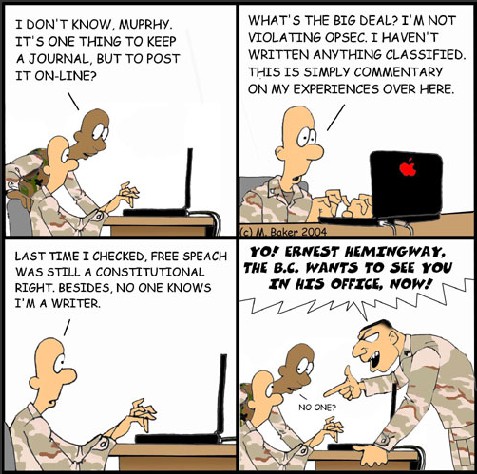
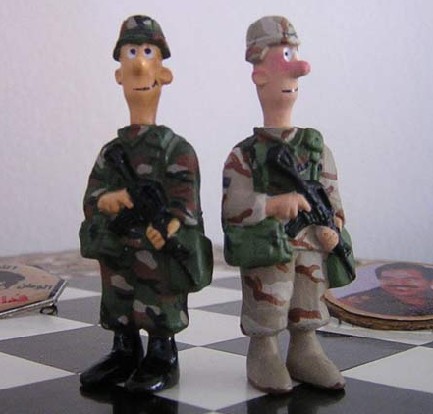 On your desk?
On your desk?
 RETURN TO AES HOME PAGE
RETURN TO AES HOME PAGE
